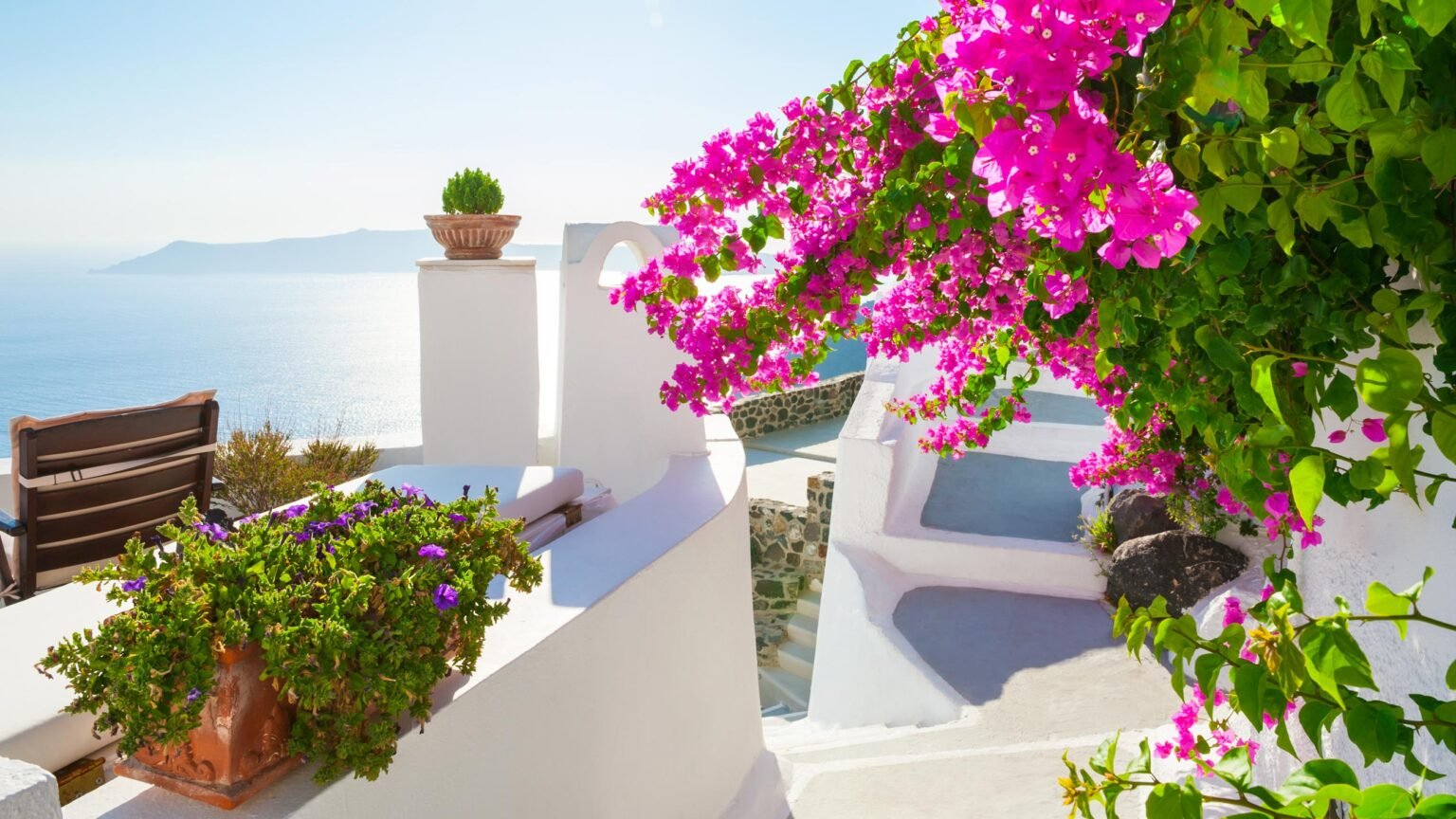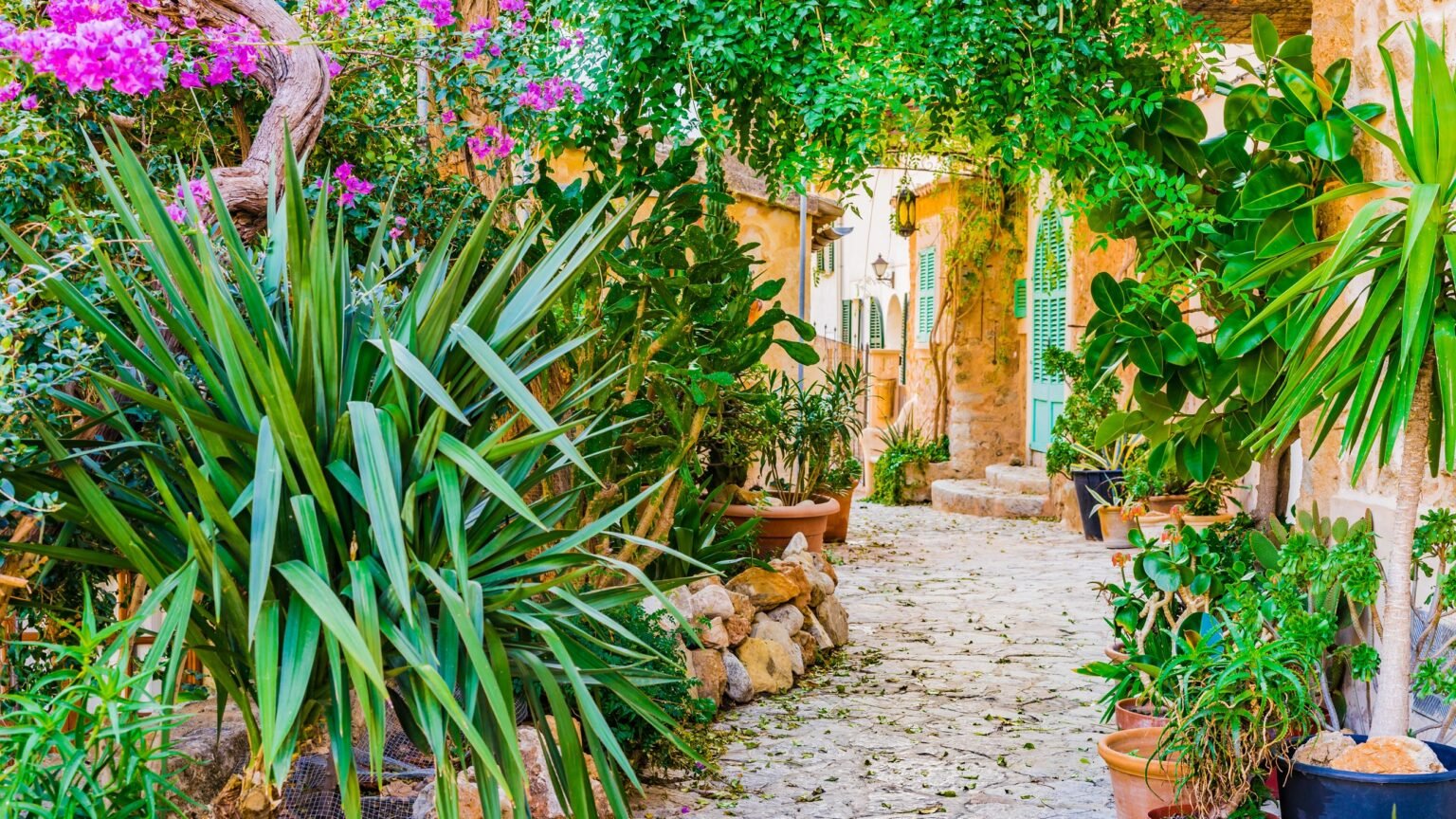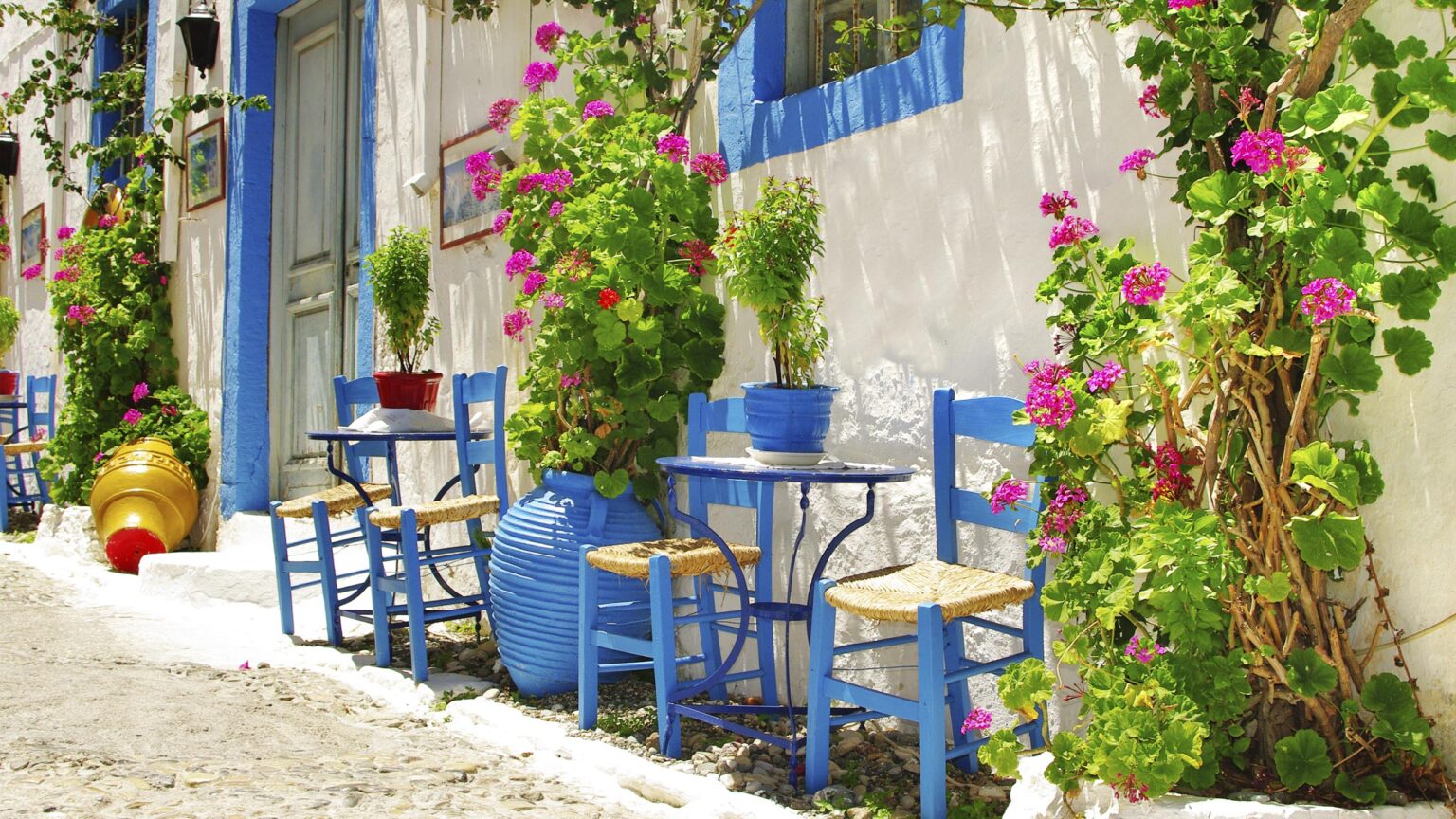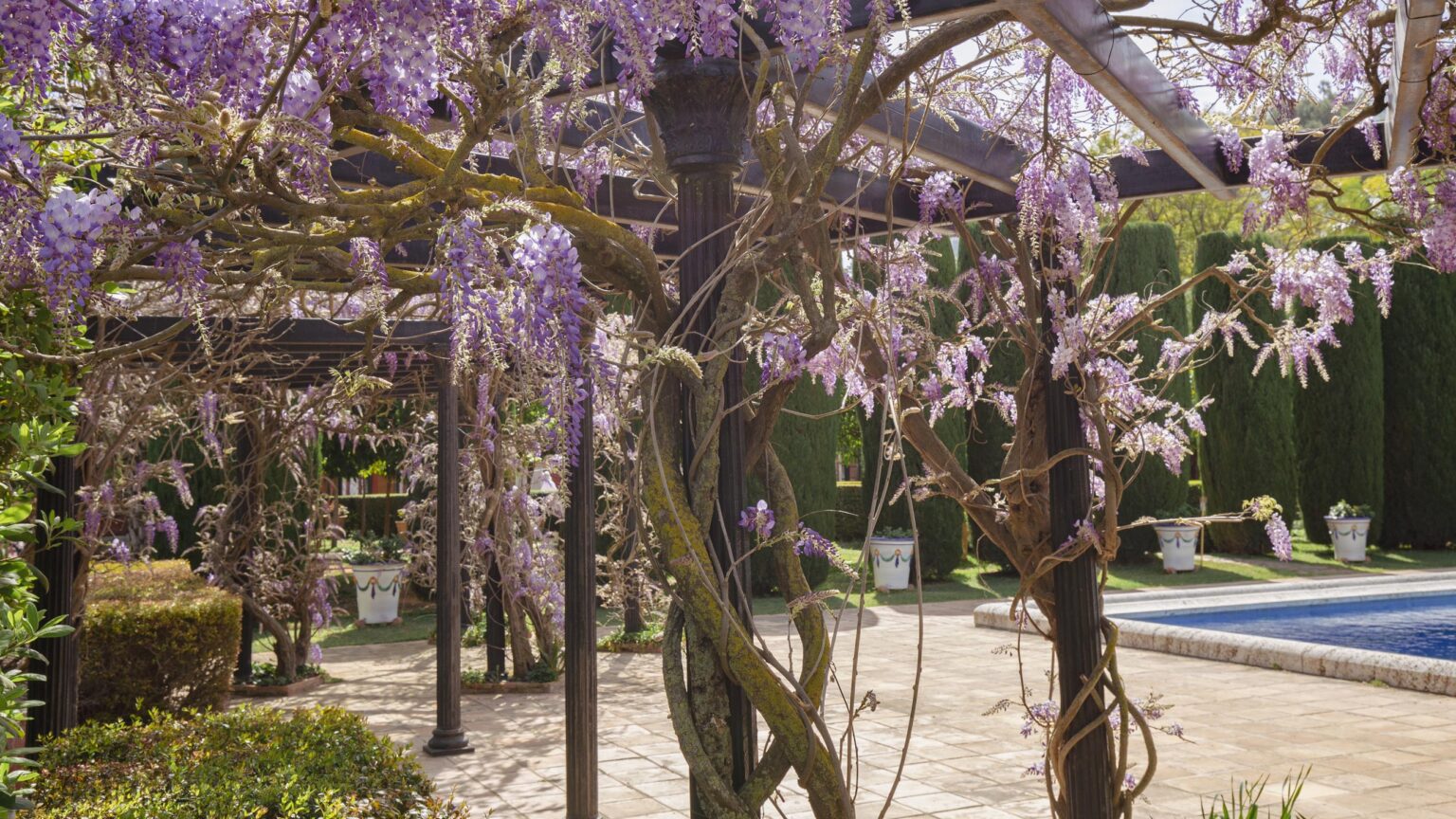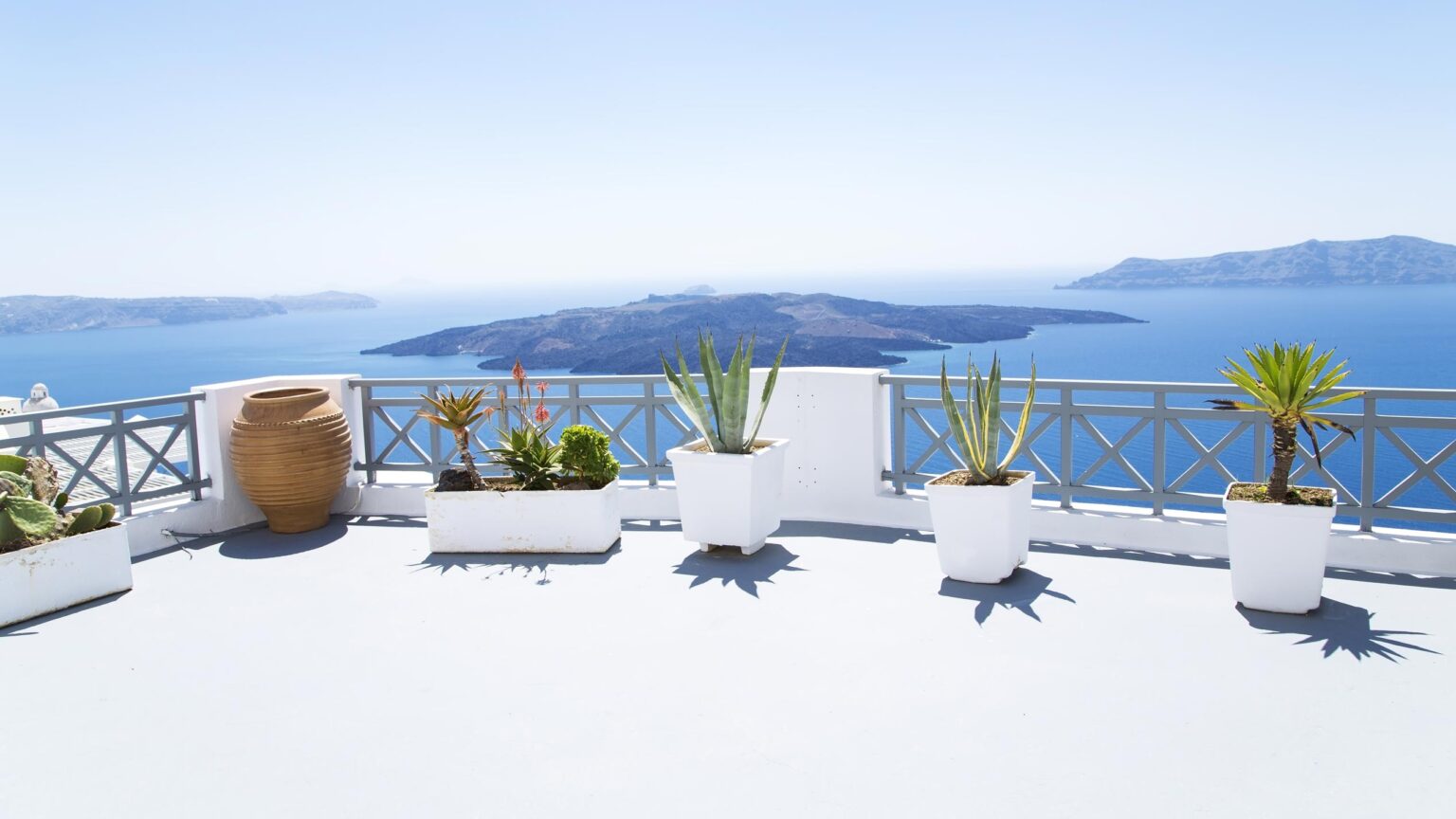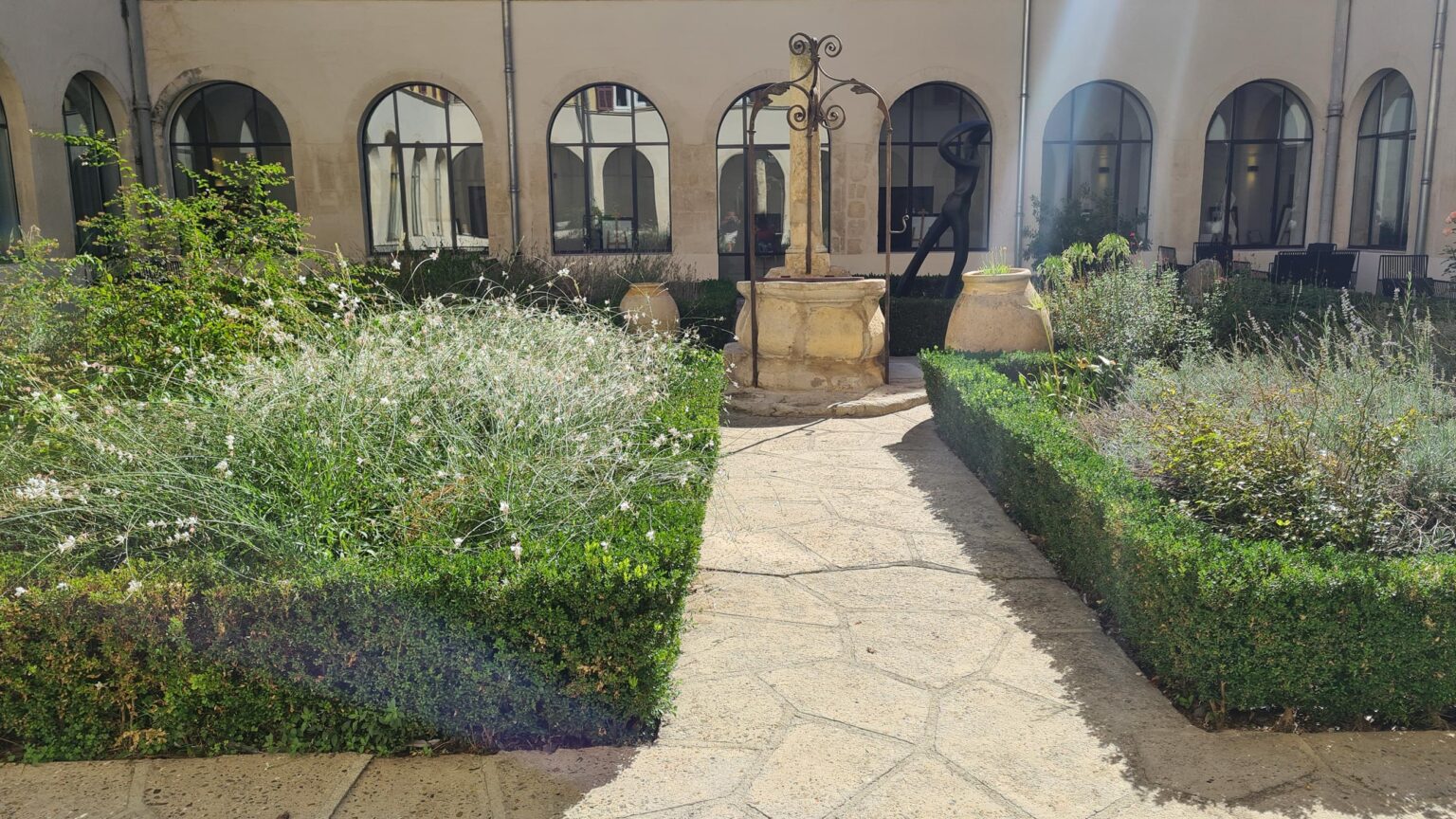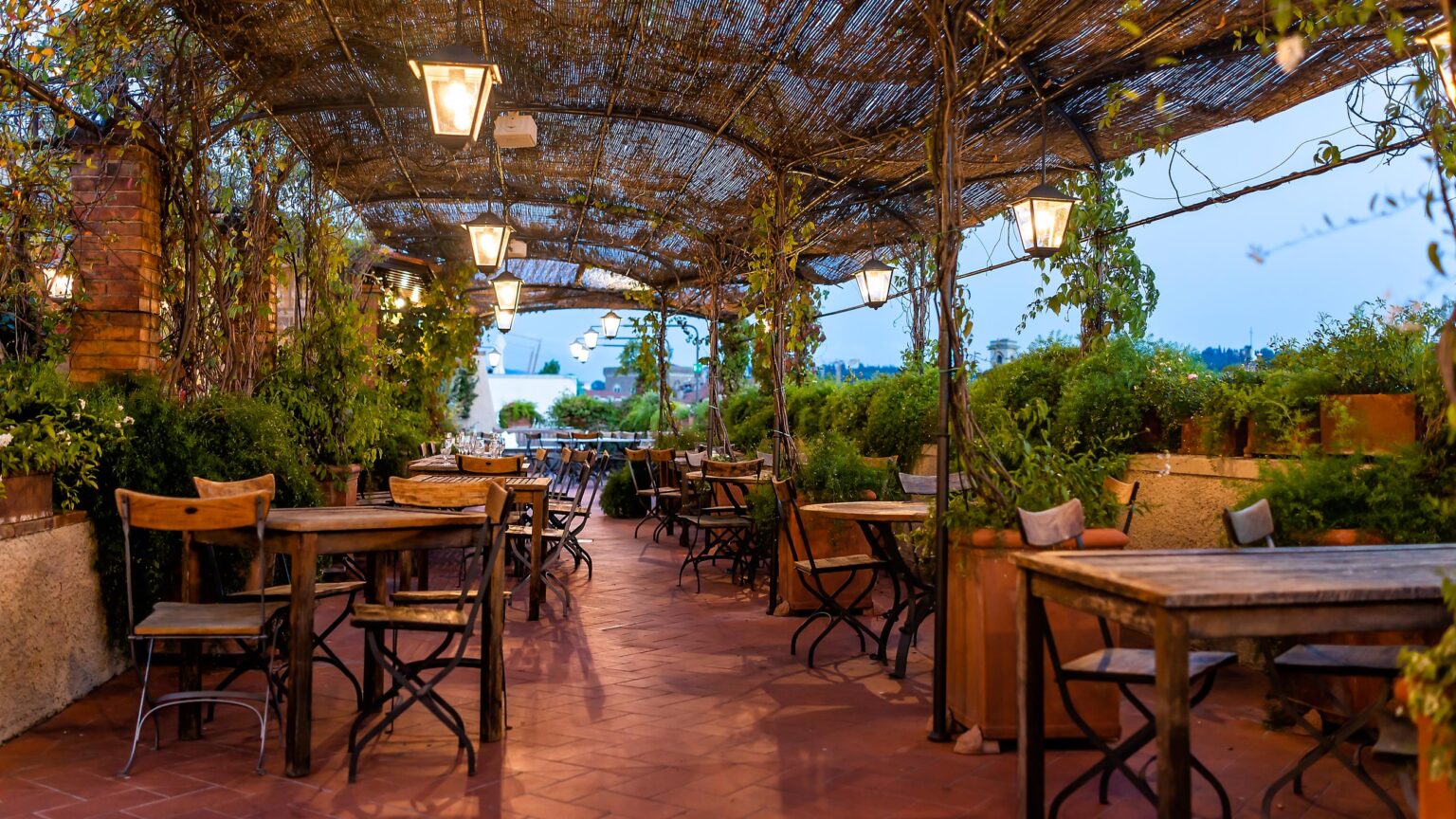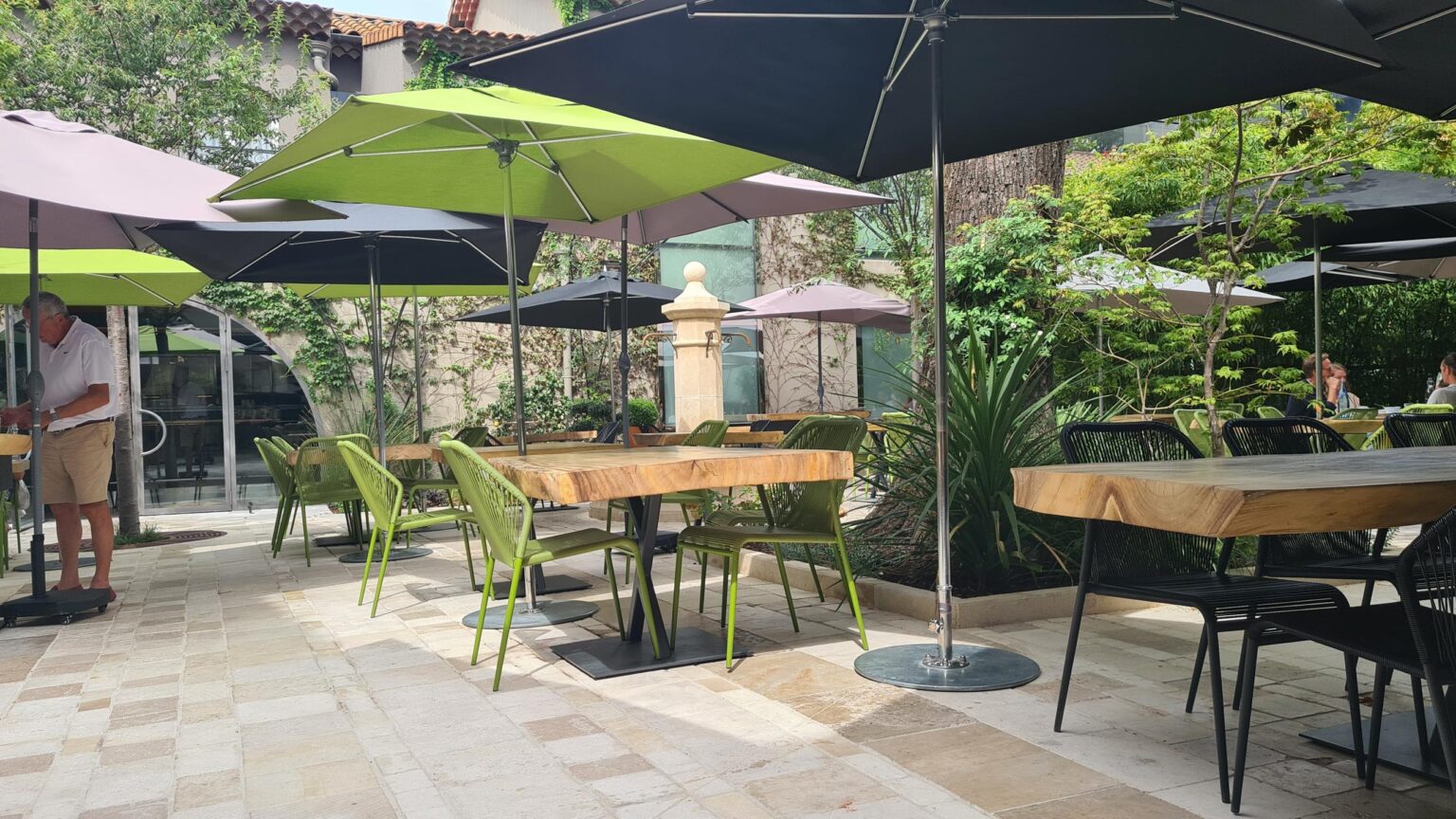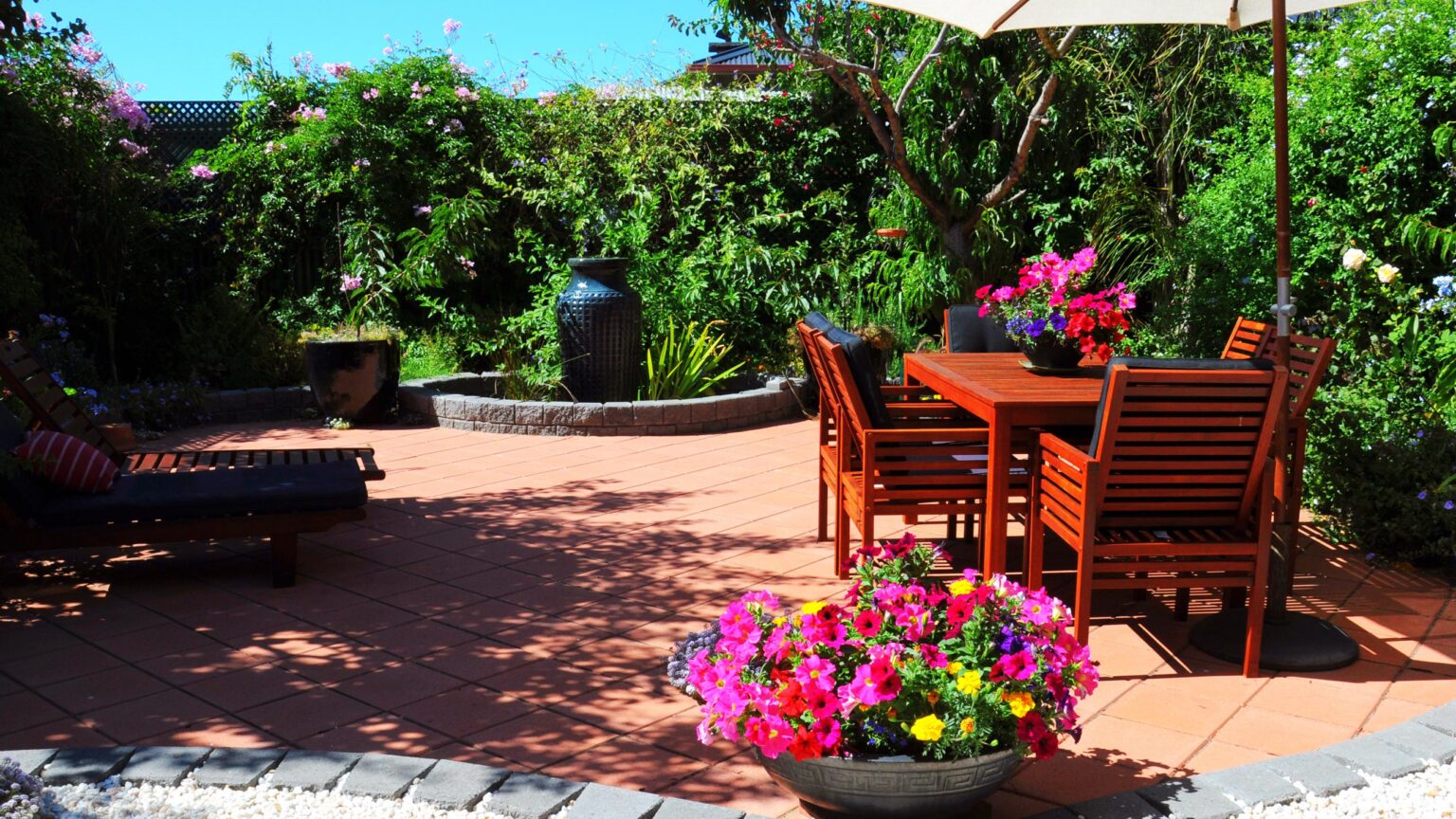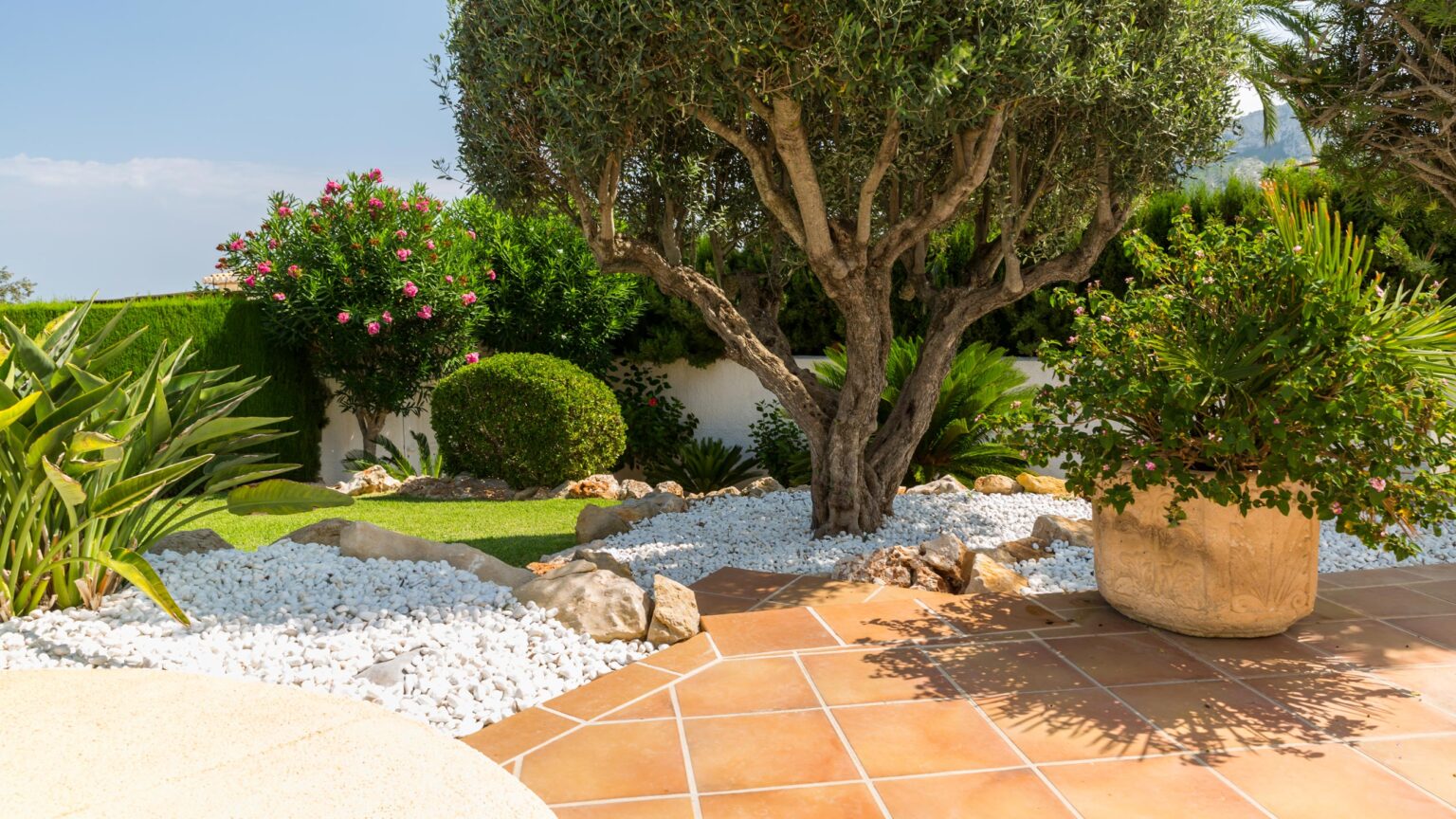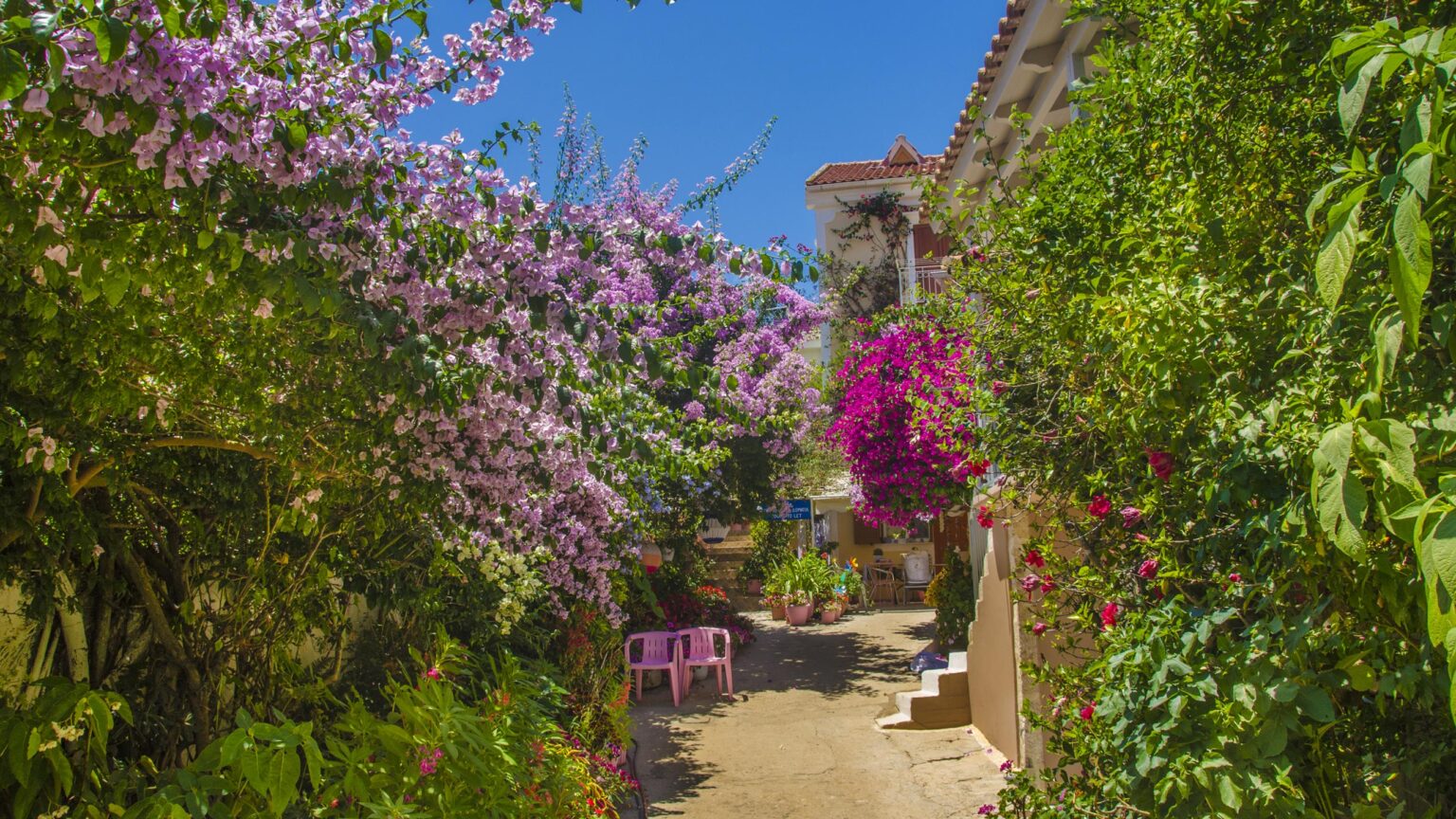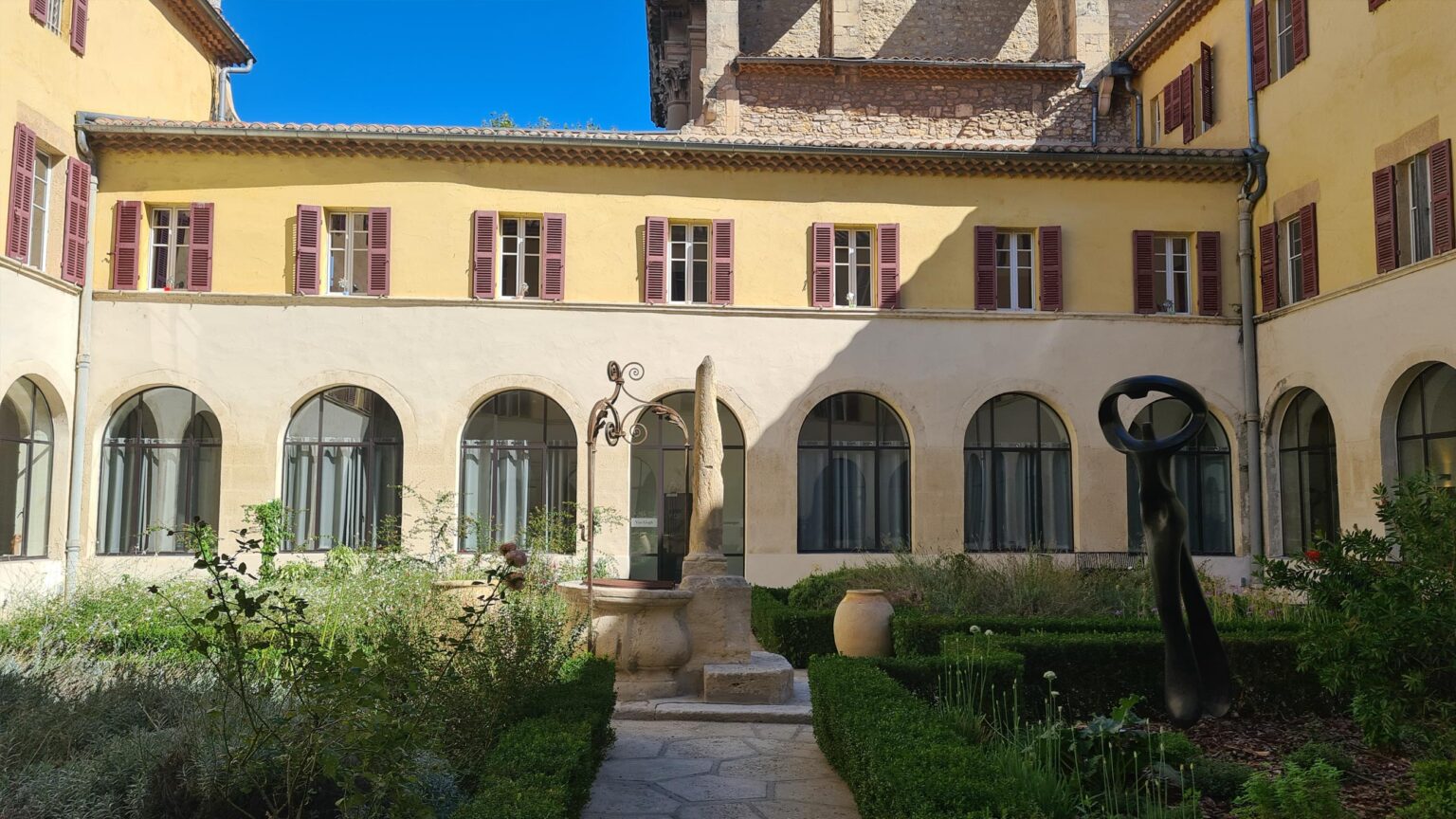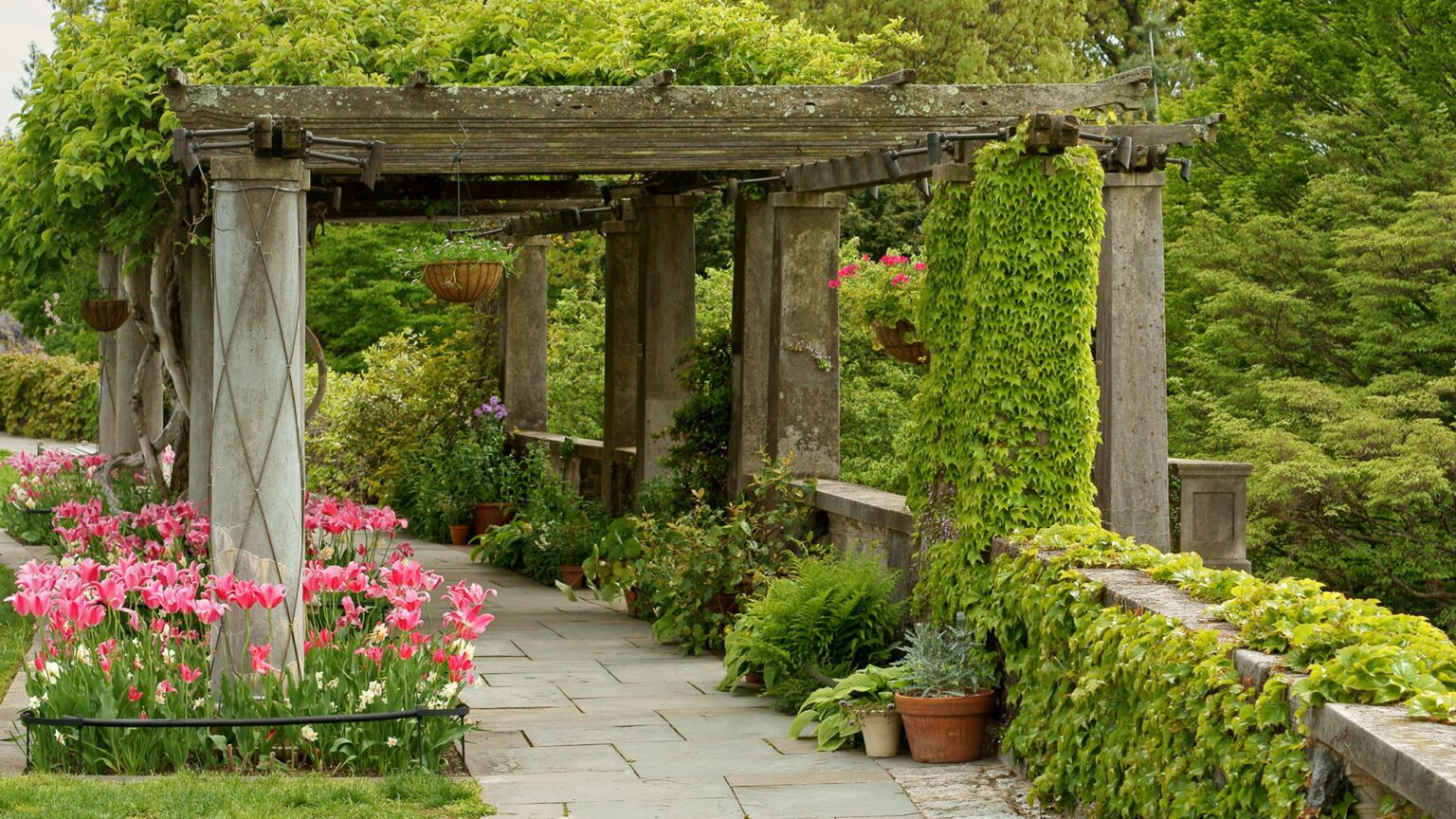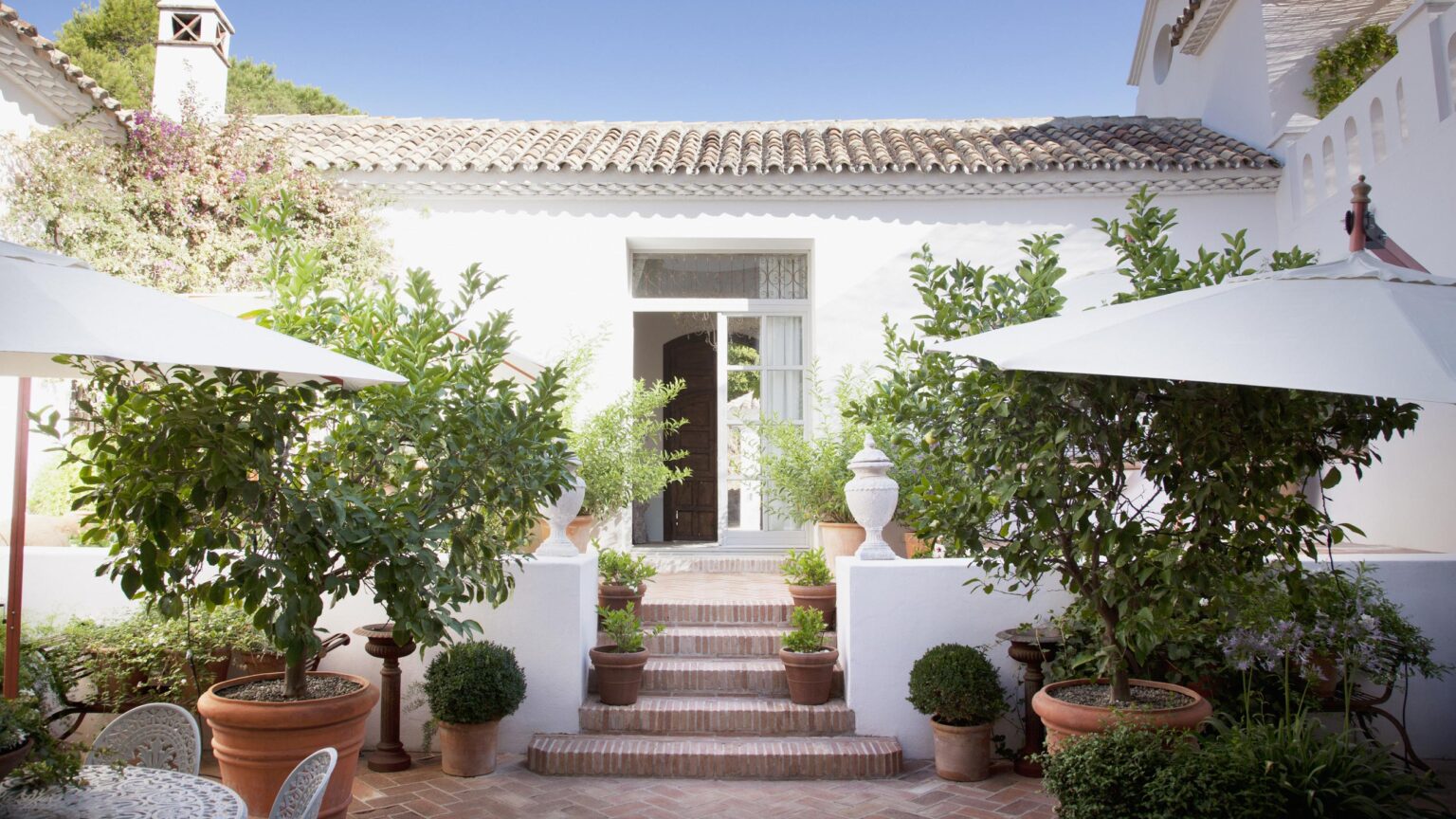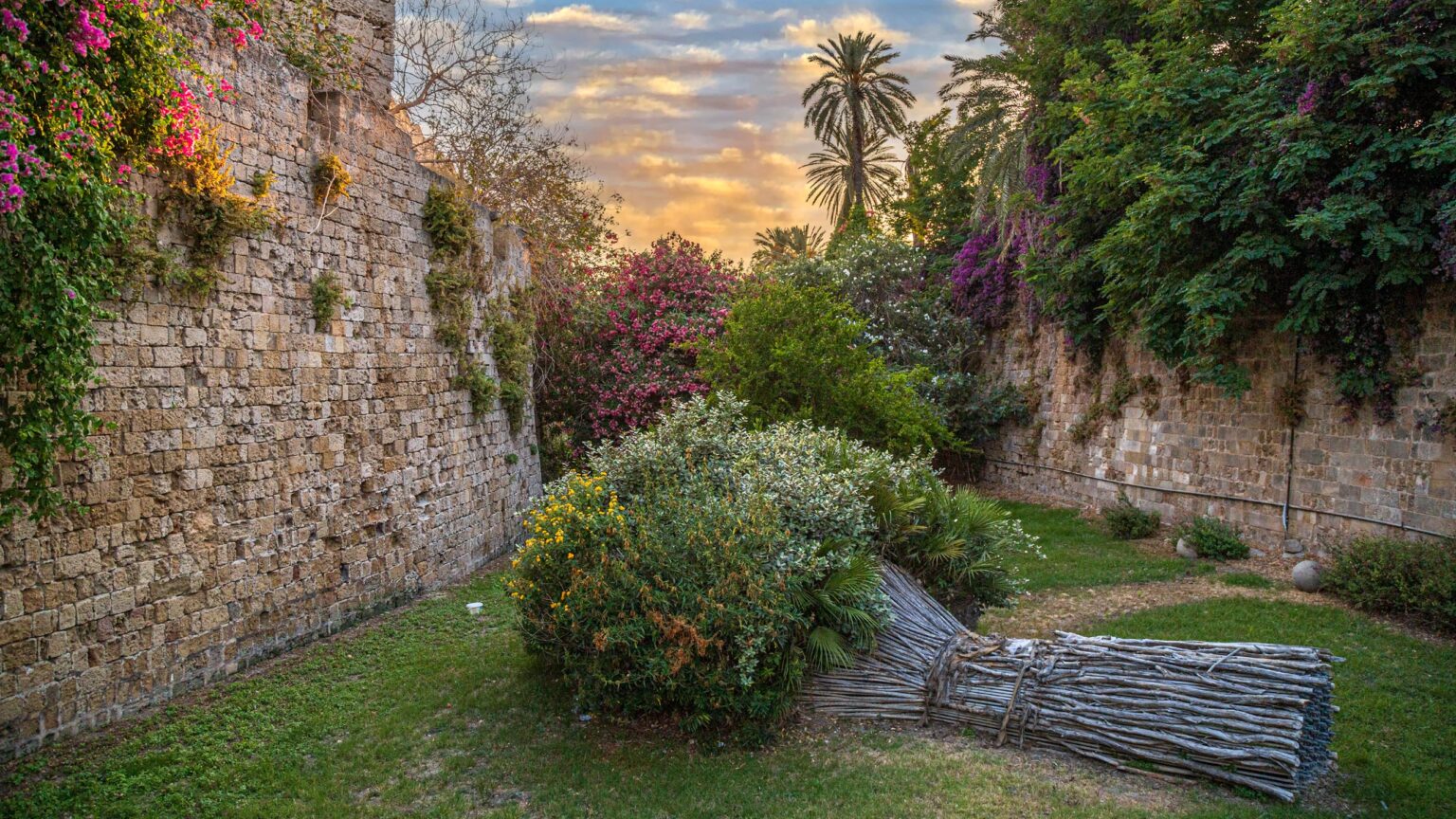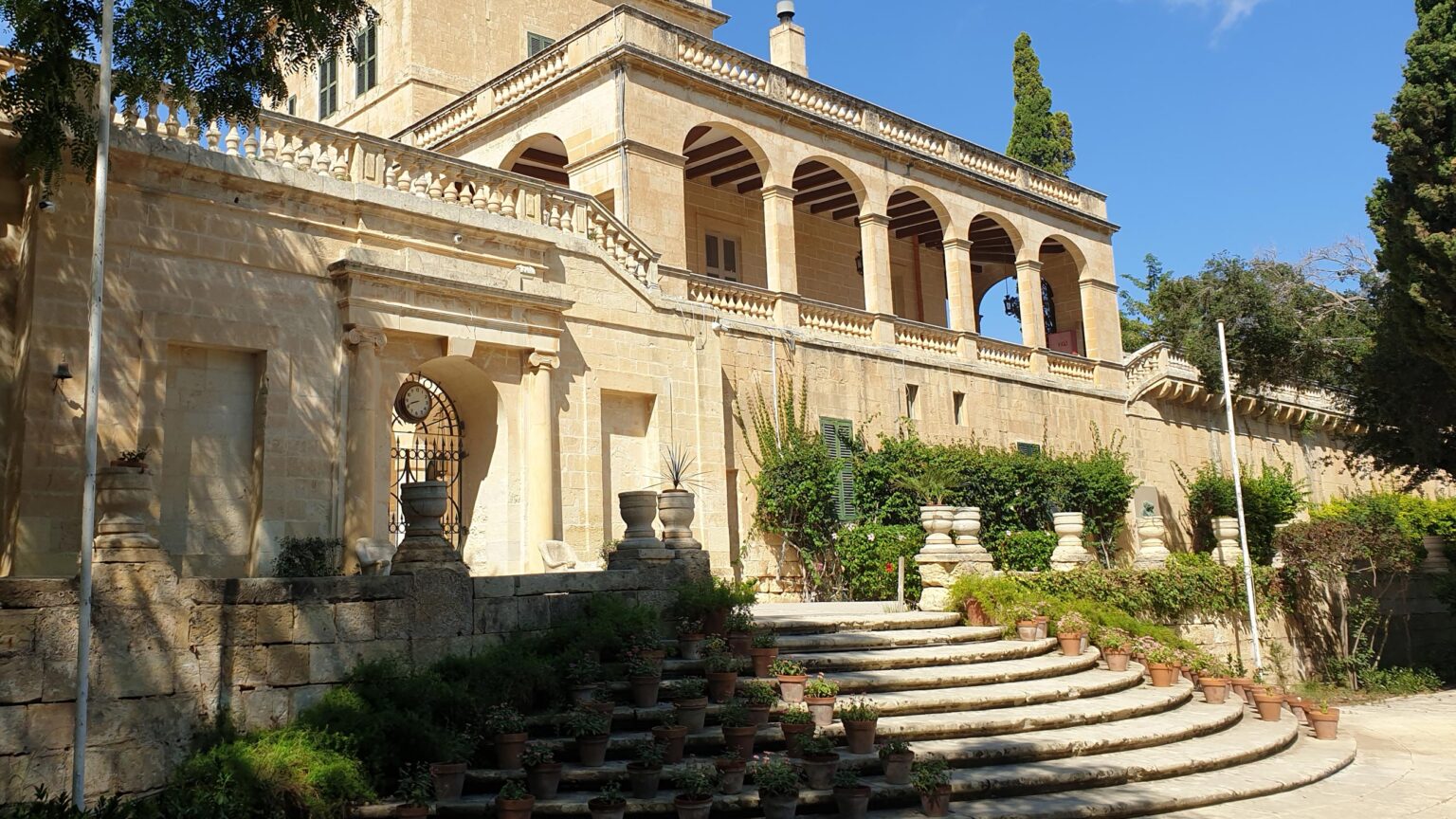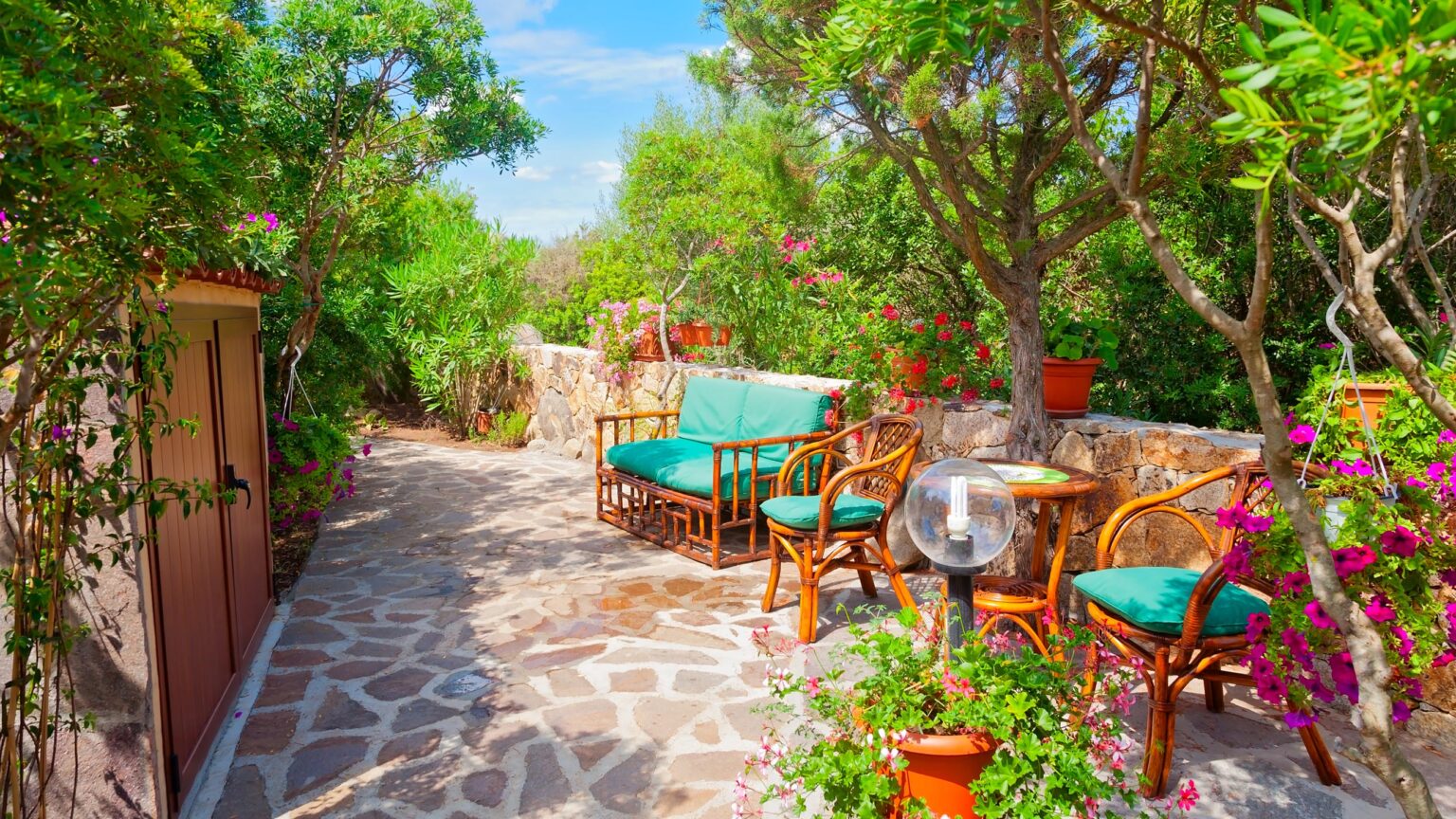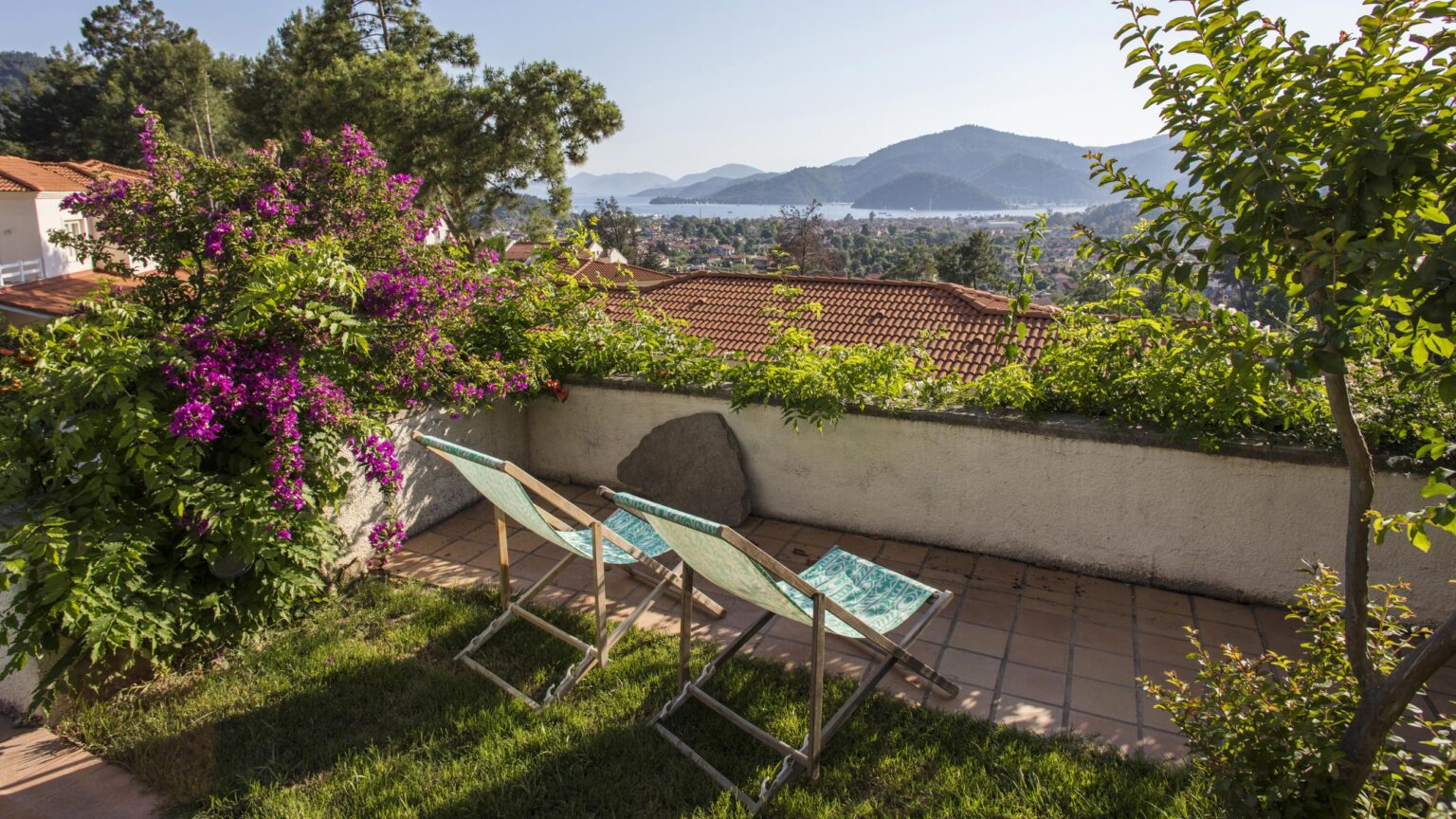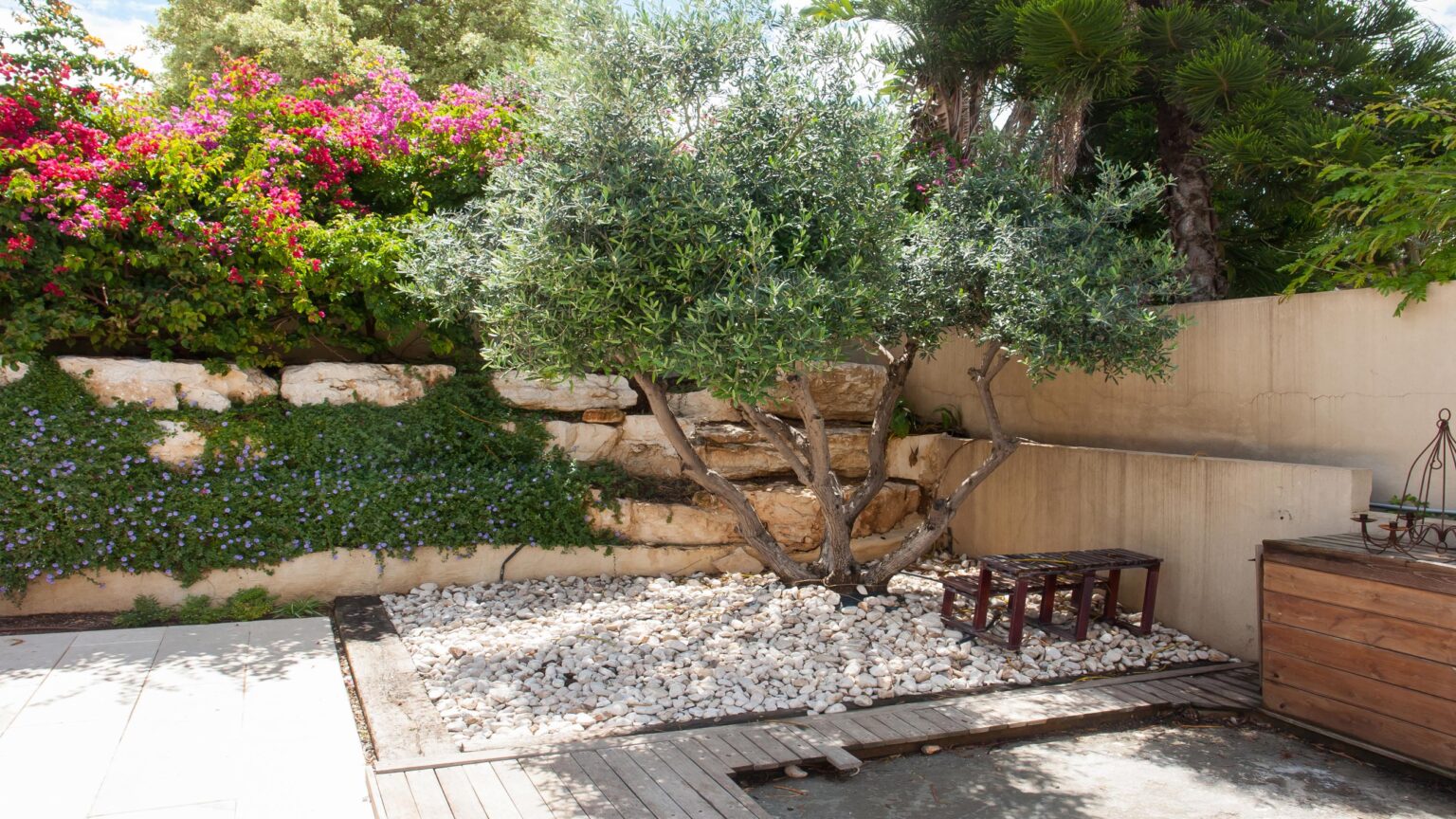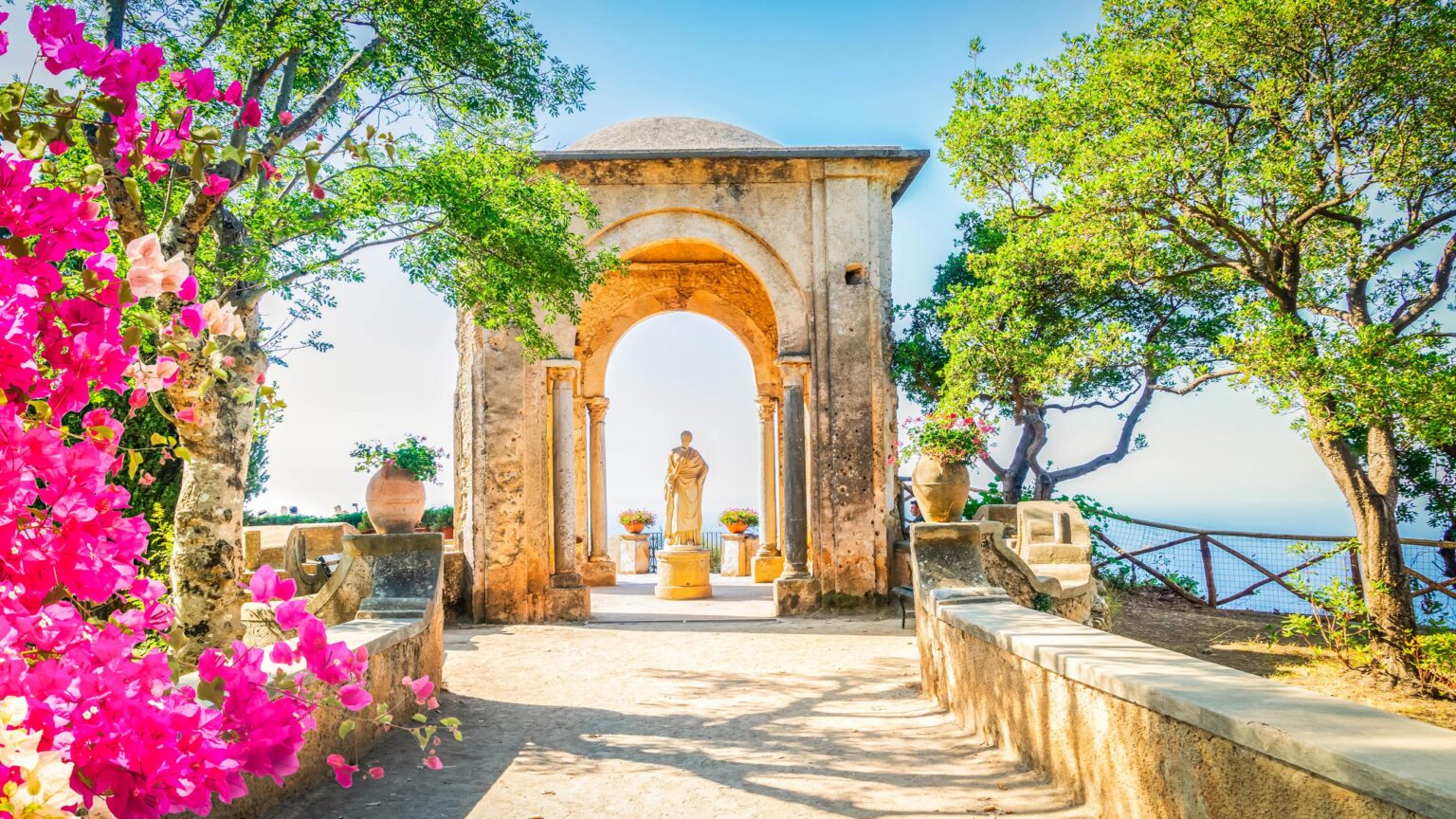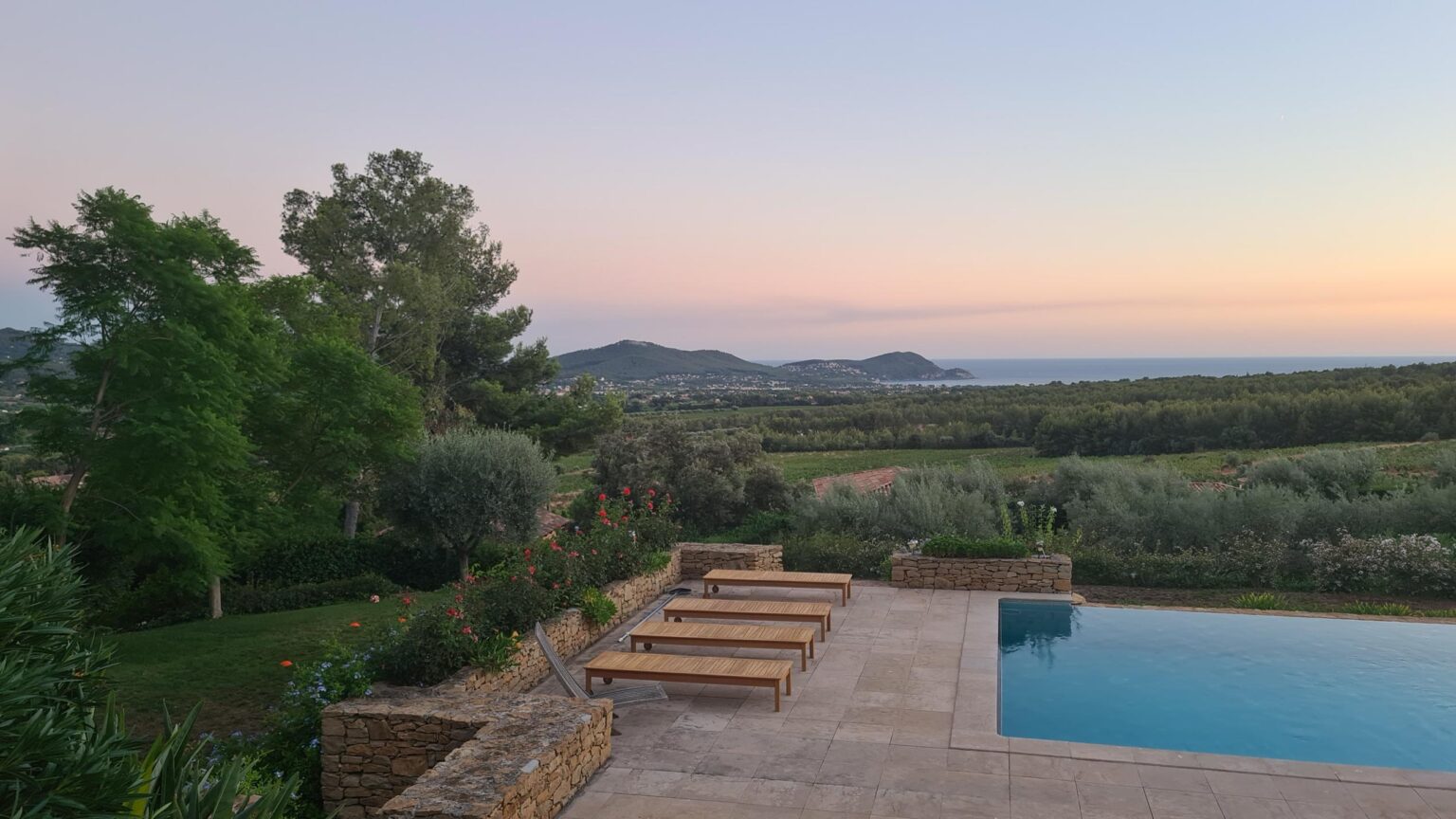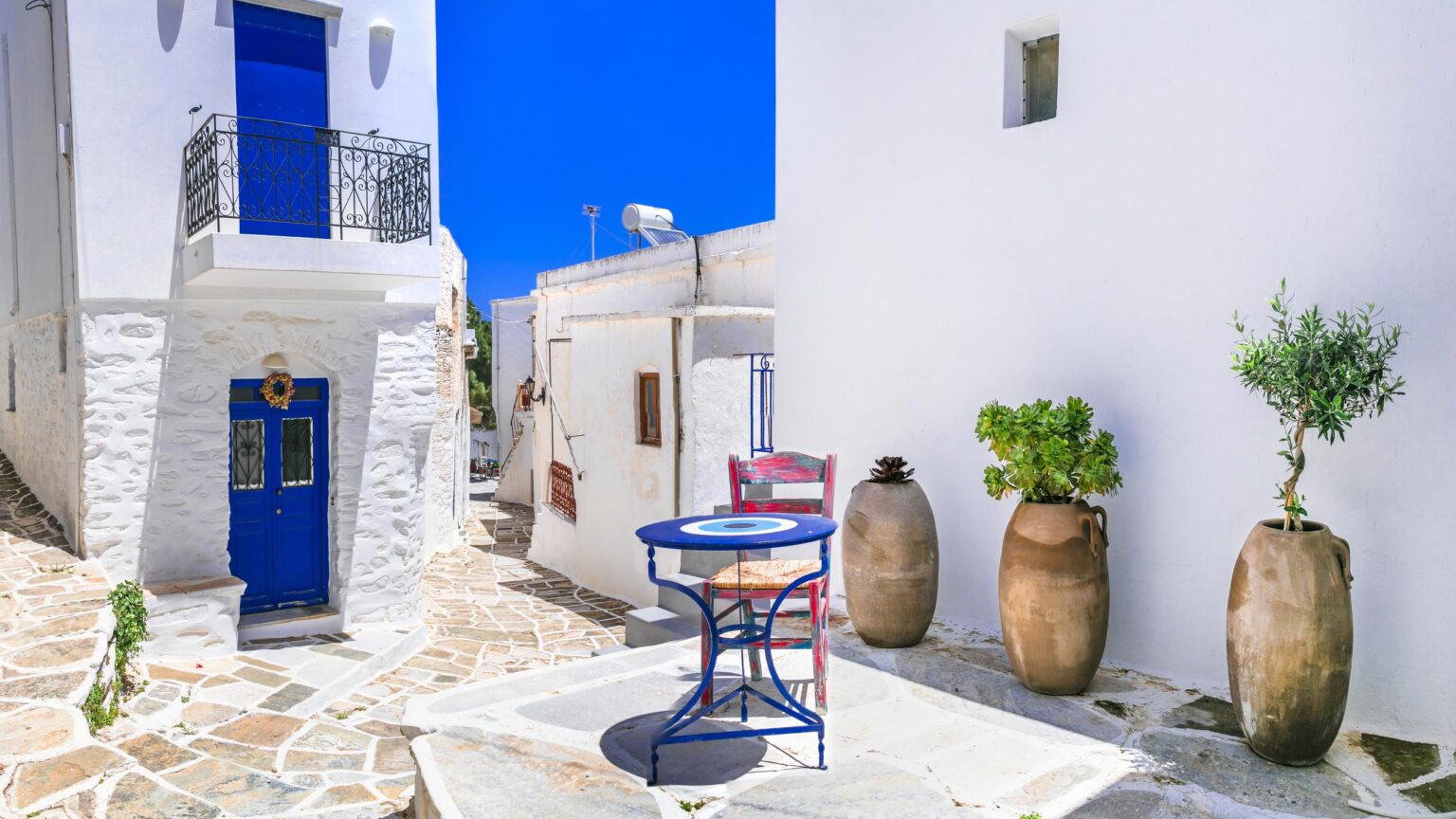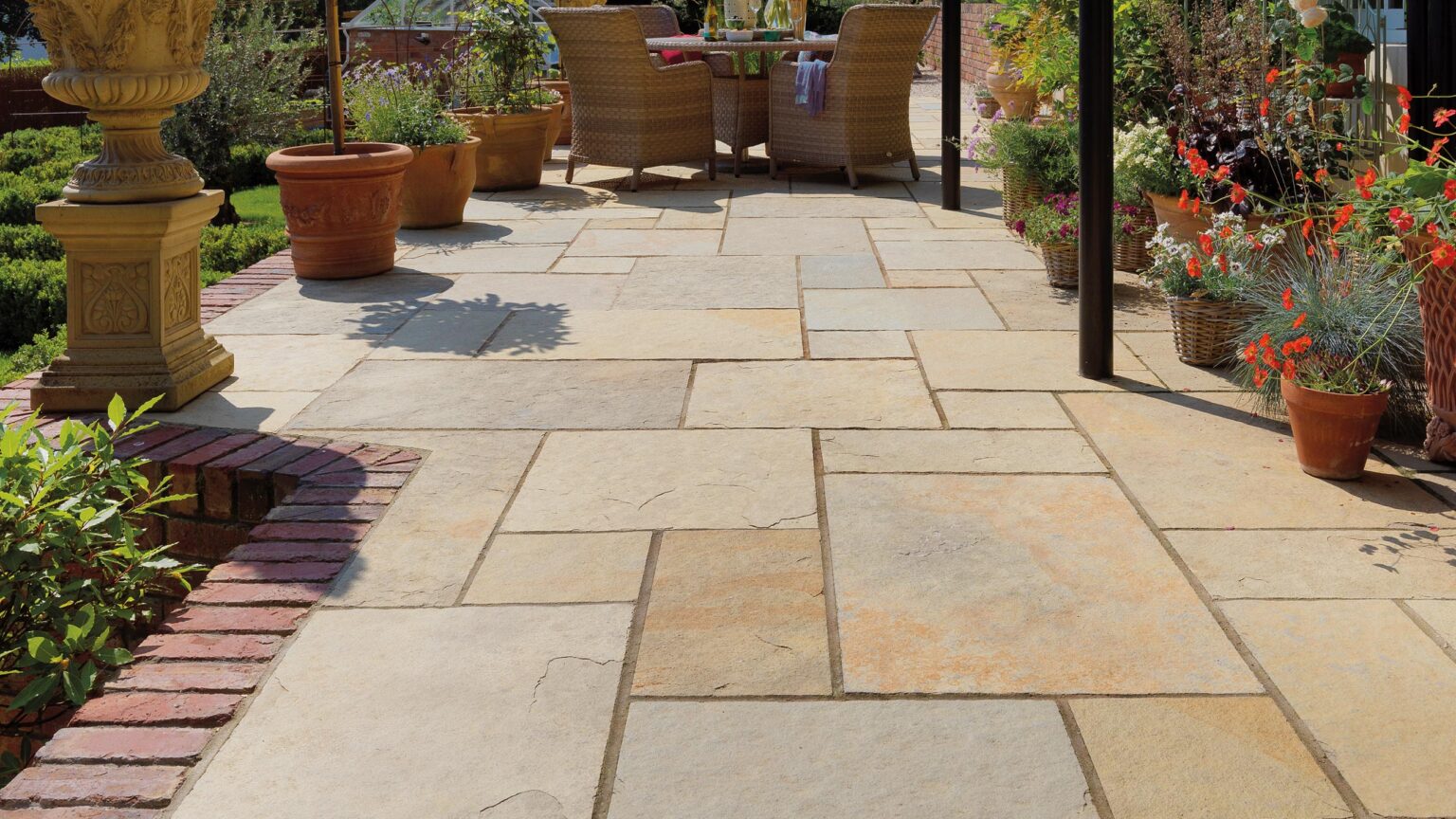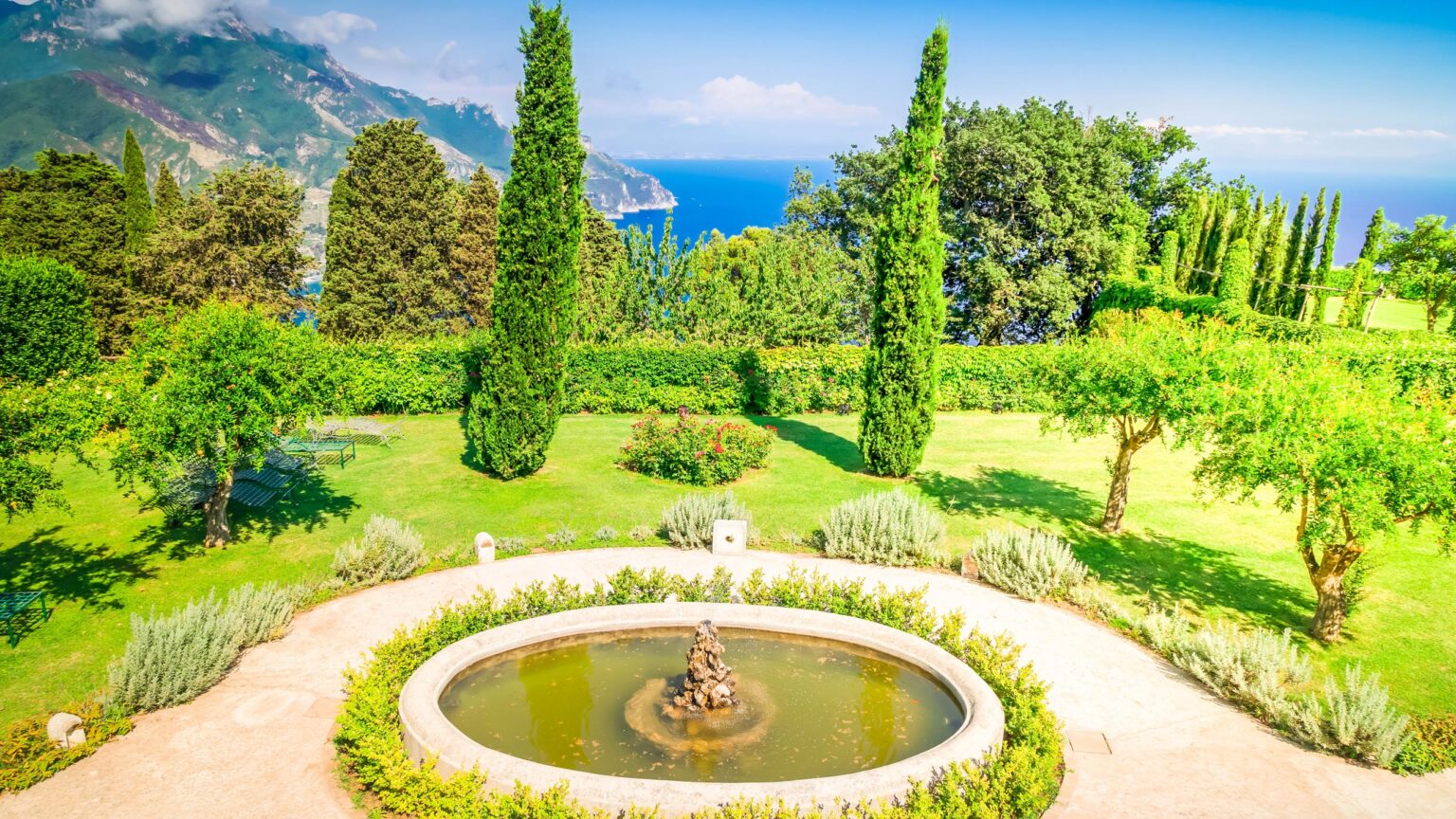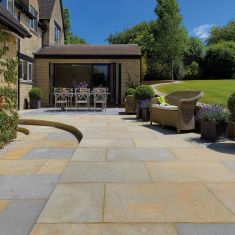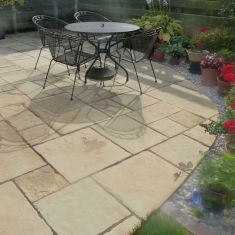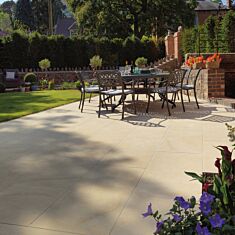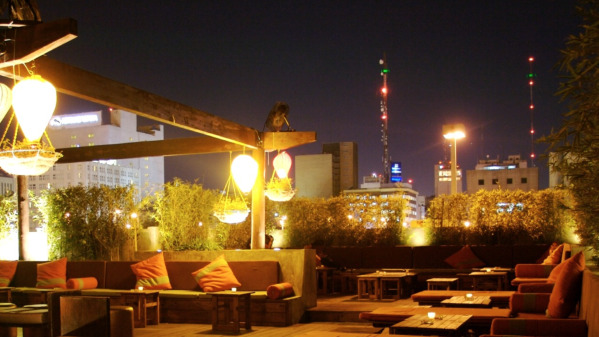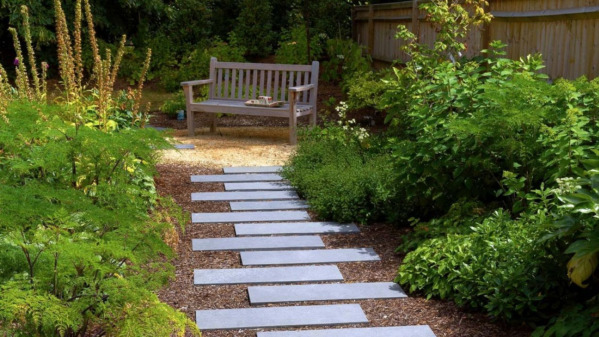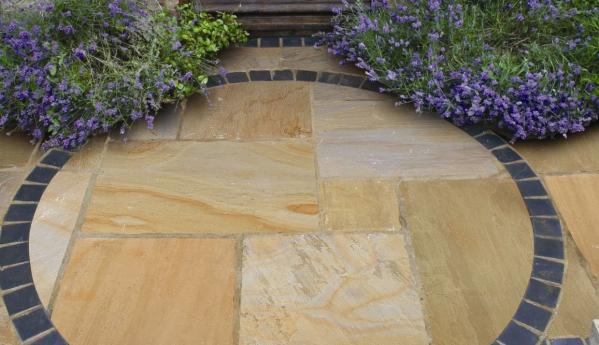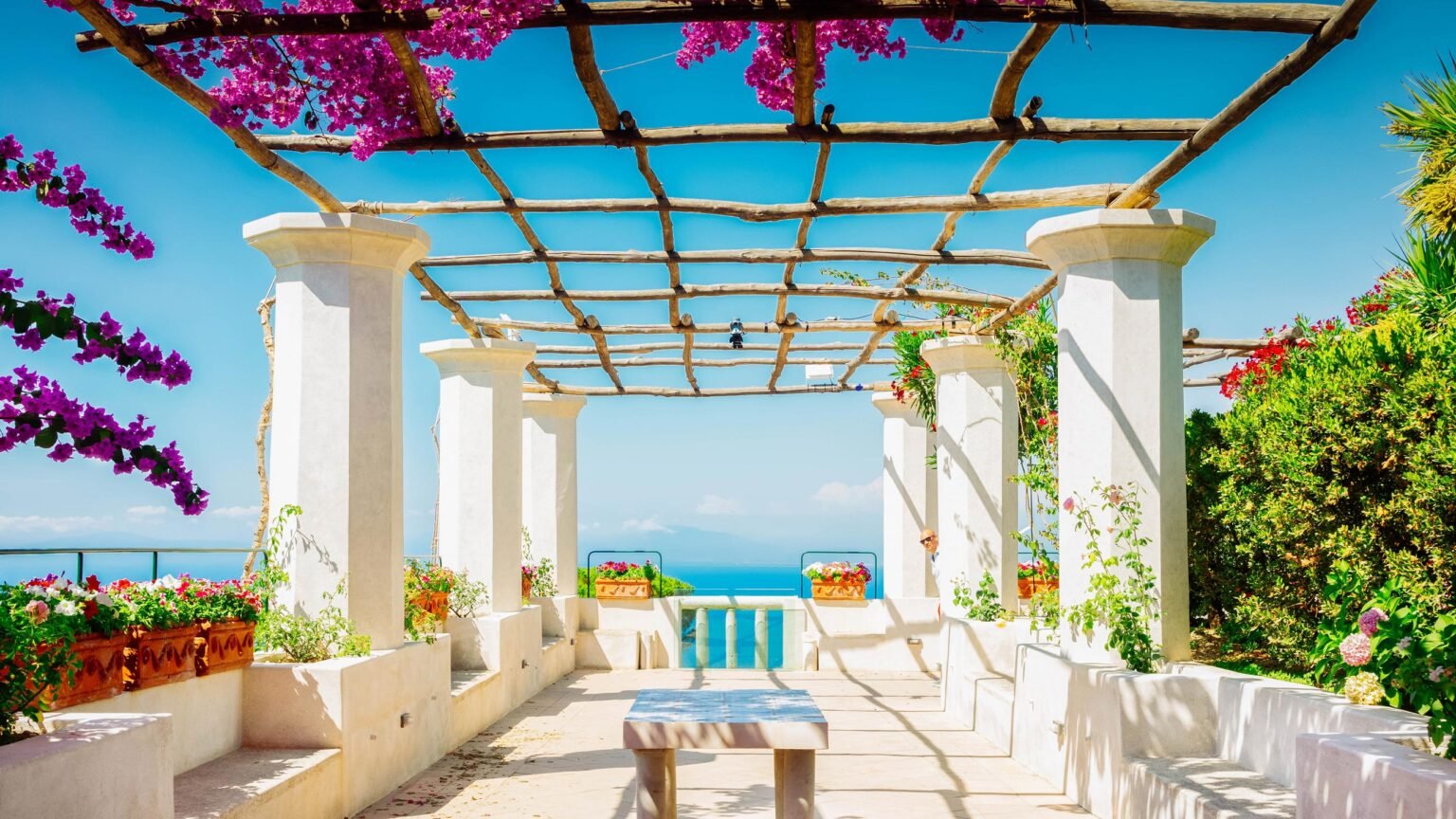
For many, Mediterranean garden style is the height of outdoor living. It reflects the sunny climate of the coastal areas of France, Greece, Italy and Spain and transports us to these idyllic settings with its old-world charm. It offers us an atmosphere of warmth and effortless relaxation.
In this guide, we will look at some of the elements that make up the character of a Mediterranean garden, so you can be inspired and start planning your new garden, in the hope of capturing that warmth and relaxation when you walk outside.
History of Mediterranean Gardens
The history of Mediterranean gardens can be traced over many years, from Ancient Greece to the modern age, with many influences along the way. Each culture and era has left its influence and mark on garden styles; let’s look at some of those in more detail:
Greek Influences
- Symmetry
- Herbs
- Fruit Trees
- Ornamental plants
- Courtyards
- Order & harmony (aesthetics)
The Greeks were known for their symmetrical gardens, which were typically located in the courtyards of homes and public buildings. These gardens were often planted with fruits trees, herbs, and ornamental plants, and also were designed to be both functional and aesthetically pleasing.
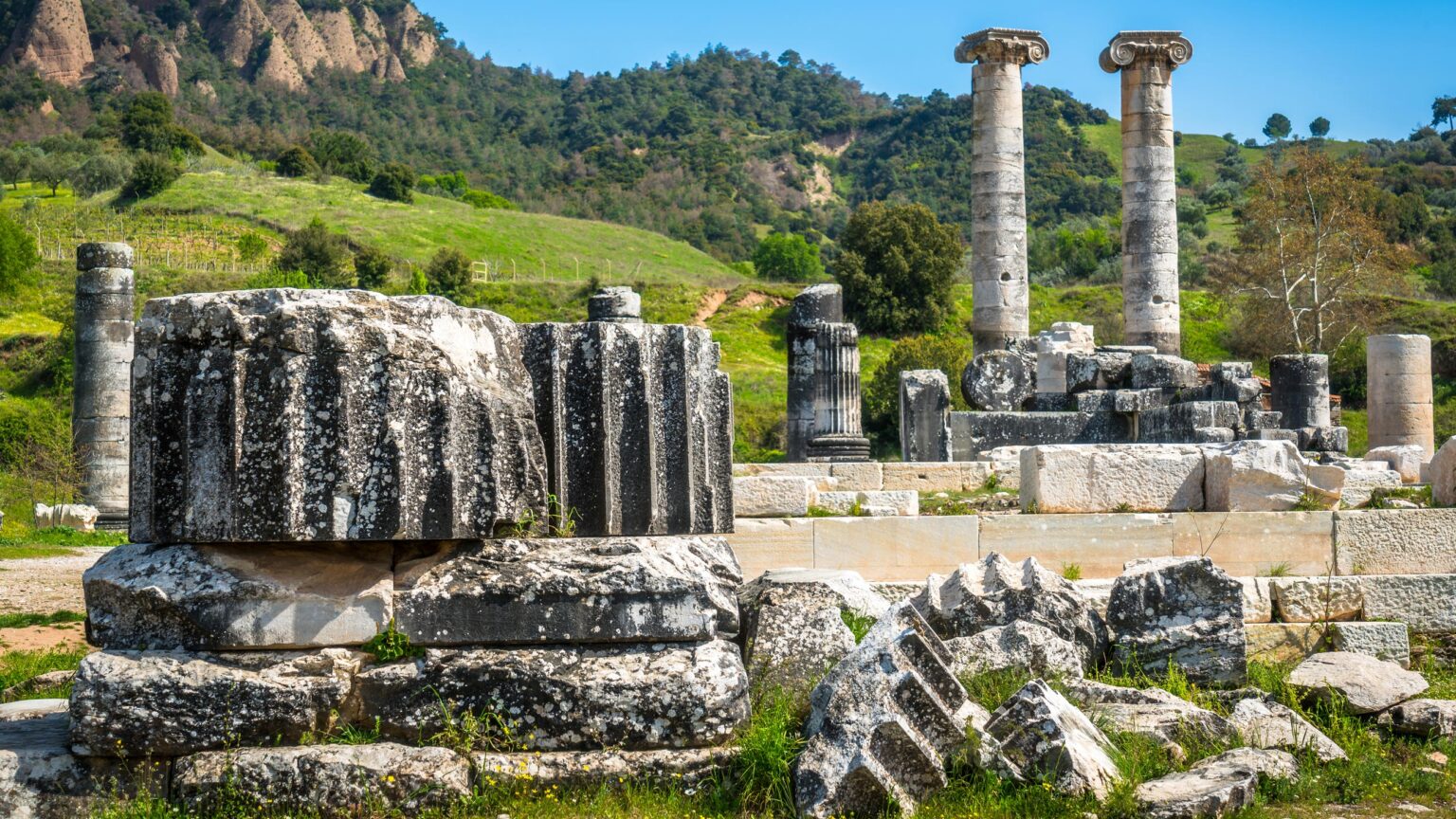
Roman Influences
- Fountains
- Sculptures
- Moisaics
The Roman also placed a great attention on garden design, and their gardens were typically larger and more ornate than those of the Greeks. Roman gardens often featured fountains, sculptures, and elaborate mosaics, and in addition, were designed to be places of relaxation and contemplation.
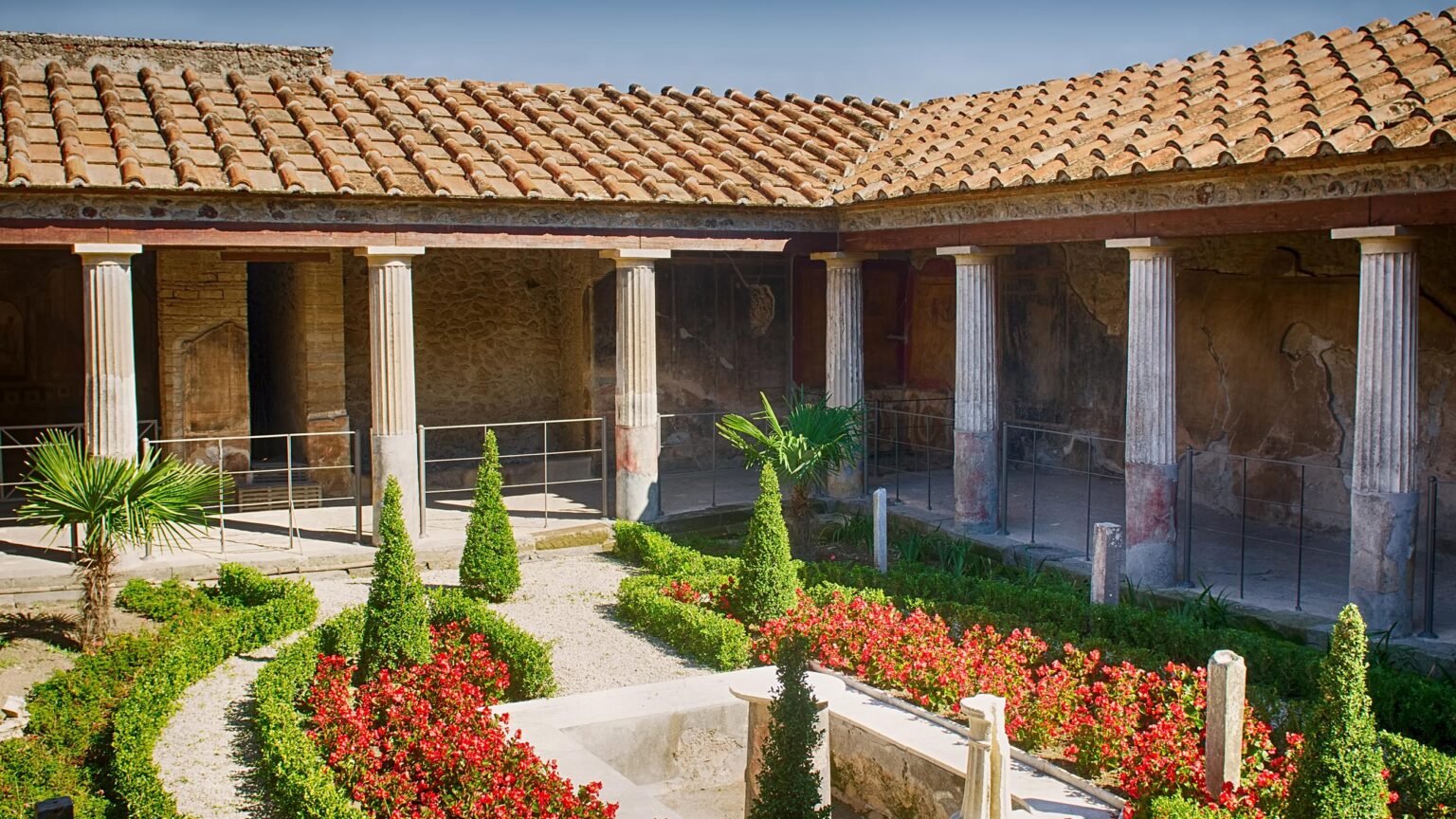
Islamic Influences
- Enclosed courtyard gardens
- Quadrants around a fountain
- Symmetry and ordered feel
- Geometric design elements
During the Middle Ages, Islamic garden design became influential throughout the Mediterranean region. Islamic gardens were typically divided into four quadrants, and were often centred around a courtyard or water feature. These gardens were often designed to reflect the principles of Islamic geometry and symbolism, and featured plants such as citrus trees, figs, and pomegranates.
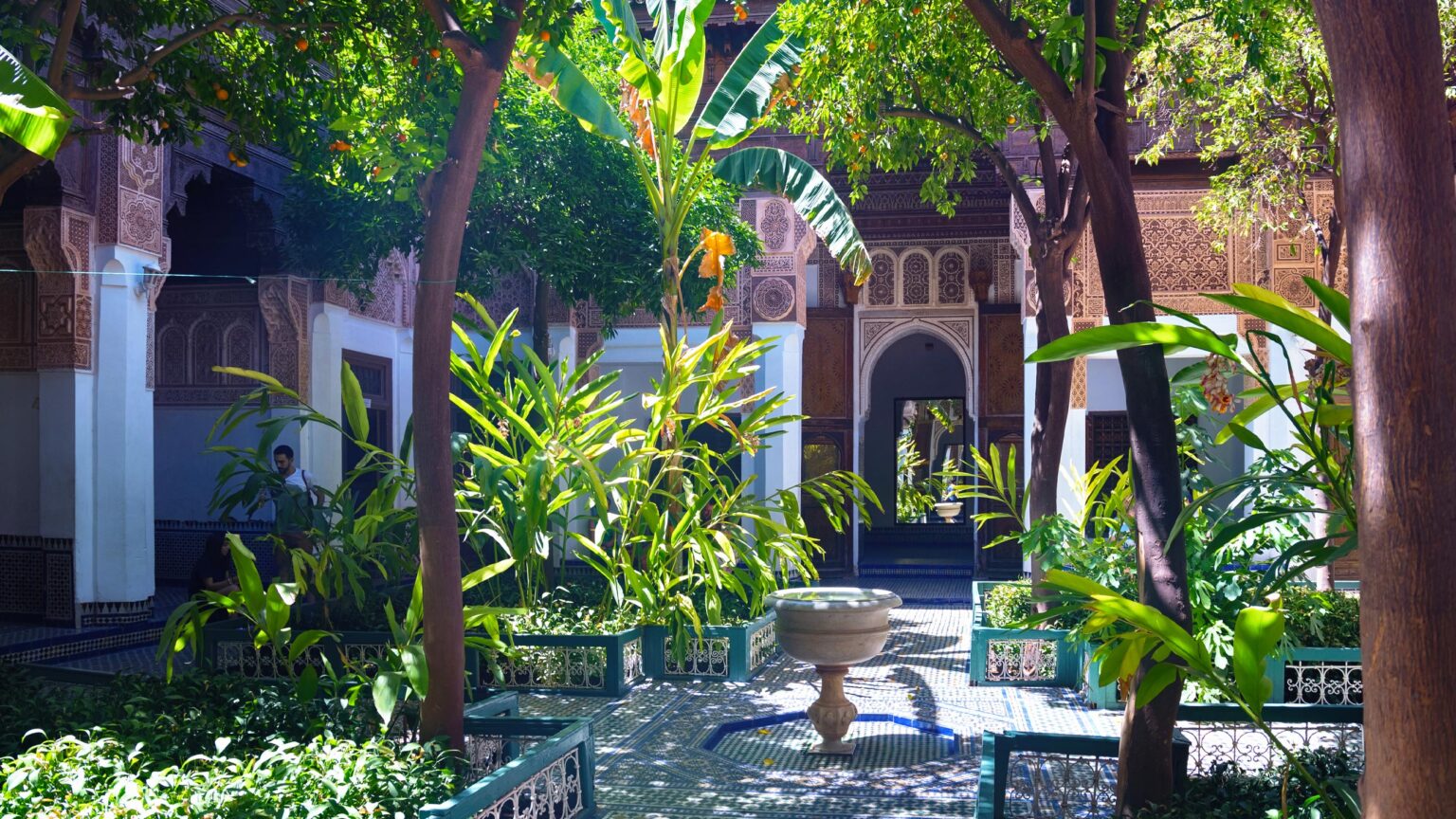
Renaissance gardens – rekindling the past
In the Renaissance period, Italian gardens became popular throughout the Mediterranean region. These gardens were typically designed drawing on earlier influences (Renaissance literally French for “rebirth”) with emphasis on symmetry and order, and featured geometric shapes, fountains, and statues.
These gardens were inspired by the best of Roman, Greek and to some extent Islamic influences (Through cultural osmosis and conquest). Italian gardens were also designed to be both functional and aesthetically pleasing.
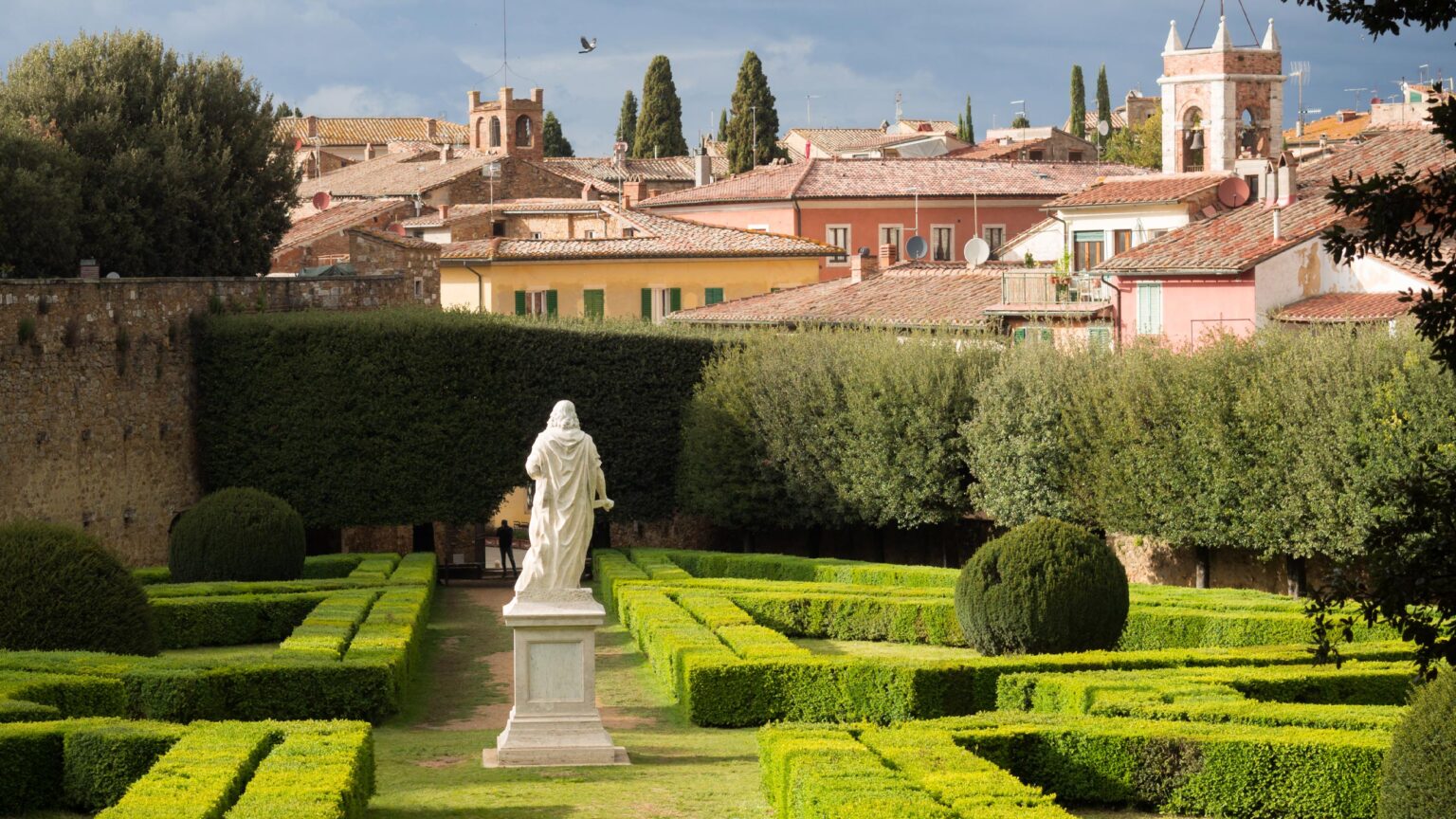
Global Influence
Mediterranean garden design has stood the test of time, and become refined via the cross pollination of cultures and trade.
Consequently, Mediterranean gardens continue to be popular throughout the world, and therefore are known for their combination of functionality and beauty. These gardens typically feature a variety of plants that thrive in the Mediterranean climate, such as lavender, rosemary and olive trees, and are often designed with an emphasis on water conservation and sustainability.
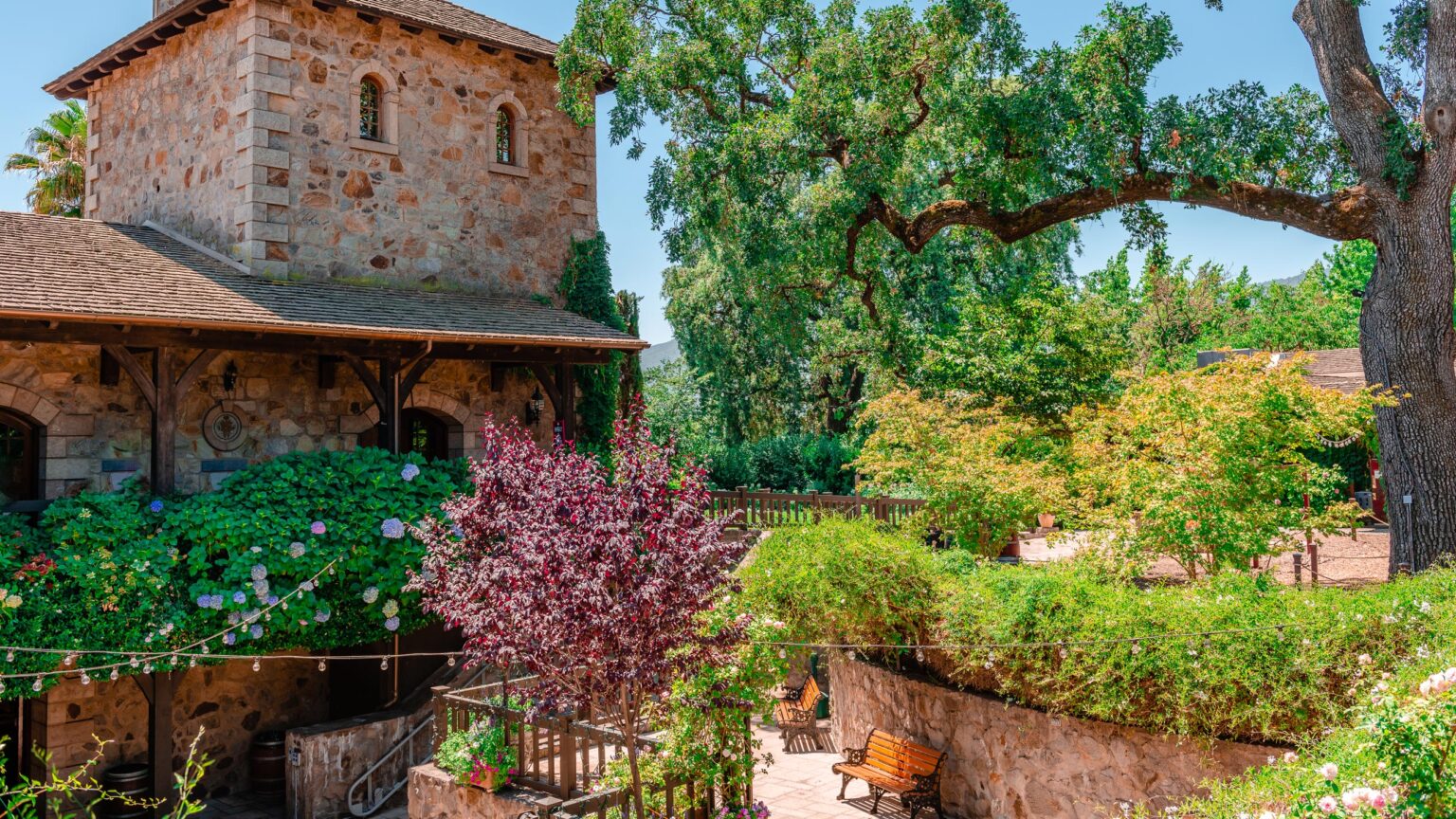
Mediterranean Garden Design Planning
If you are considering redesigning your garden with a Mediterranean theme, then it is worth spending a moment considering the stages necessary to accomplish this project.
There will be a series of phases and tasks based on the logical order thing will generally need to be done in:
Project timeline
- Ideation – gathering ideas and working out what you want
- Design – firming up ideas with sketches, garden plans etc, so you know exactly what is needed (big picture at least)
- Planning – what materials, labour, budget and timelines are needed
- Landscaping – the major tasks
- Groundwork – excavation, earth moving and levelling of ground in the garden
- Terracing – prepare where will patios, terraces and split-level tiers be
- Pathways – prepare where the pathways going to be
- Drainage – excavate channels for any required drainage
- Utilities – excavate trenches for any utilities needed (electricity or water supply)
- Fixtures – constructing the fixed/permanent elements of the garden
- Garden Structures – build retaining walls, pergolas, outdoor kitchens, lay paving etc
- Garden Features – incorporate any fixed features such as fountains, water features, sundials, statues and their plinths etc
- Planting – plant the trees, shrubs, flowers and herbs
- Accoutrement – dress your “set” with furniture, parasols, pot plants, objet d’art etc
Elements of a Mediterranean Garden
Creating a feeling of Mediterranean cheerfulness in the UK can sometimes be challenging – especially in winter months.
However, there are elements of Mediterranean garden style that can be easily emulated without having to wait for the height of summer. Below, we discuss some of the common themes and elements of Mediterranean gardens, with the hope that it inspires you to start planning your own garden transformation.
Let’s first look at common styles and themes of Mediterranean gardens, and then the project timeline phases, and some of the things that will need your consideration in each of the phases.
Which Mediterranean Garden Style?
As with all things Mediterranean, there are many aesthetics styles you can attempt, but six common ones are:
- Classical
- Renaissance/neoclassical (Palladian)
- Coastal
- Rustic / Bucolic
- Islamic
- Modernist
Classical – using rustic and aged stone coupled with classical architectural pieces with a slightly wilder organic elements. Mosaics and classical sculptures commonly used. Opus pattern paving (mixed size sandstone and limestone).
Features and elements include freestanding classical columns (stone or concrete), colonnade & entablatures (as shown in the image above), statues, urns, amphora, braziers, lamps and other Roman or Greek accoutrement.
Unlike British formal gardens (which are more ordered, clinical and reminiscent of Renaissance style gardens), true Mediterranean classical styling needs to be time-worn and a bit dilapidated – as you’d expected if it were a couple of millennia old! So it needs an organic and rustic element in the mix, so it doesn’t appear as regulated as a Renaissance garden.
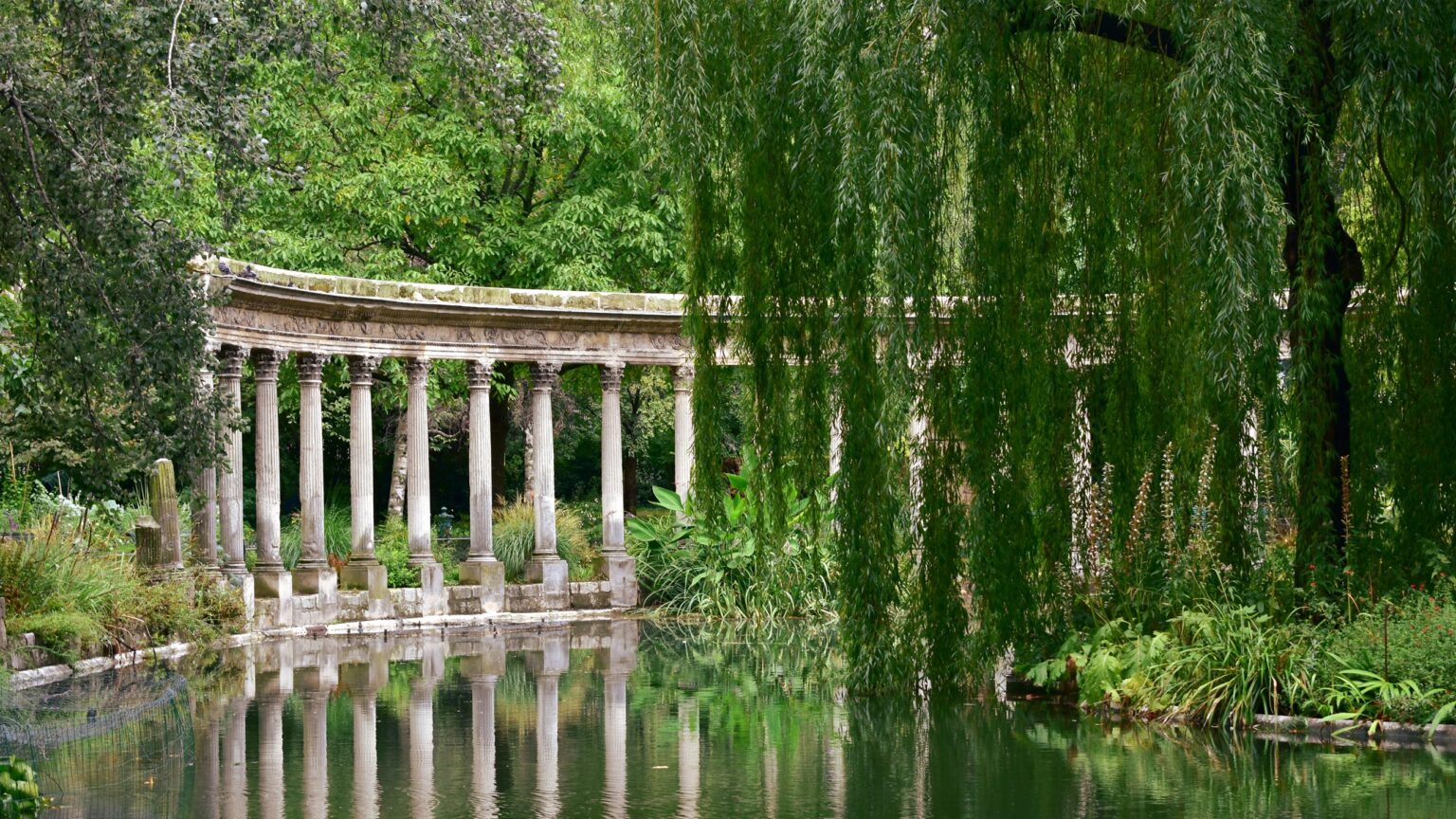
Renaissance – using more dressed and precise masonry elements, and more ordered vegetation, especially topiary, water features and statues as focal points. Antique flagstone paving (tumbled/weather stone).
The Renaissance was a rediscovery of classical art and culture, and saw the likes of Palladio codify the elements of classical architecture.
Consequently, Renaissance gardens are an idealised version of classical architecture and landscaping. Reason and logic and bringing nature to bear through knowledge and learning are the subtext to these gardens. These gardens are designed to show our control of nature and are ability to bring order and harmony to the world.
So, Renaissance gardens are formal, manicured and replete with topiary, lawns and statues and well sited Cedar and Cypress trees, plus neoclassical follies and garden features, but in a more pristine and maintained state.
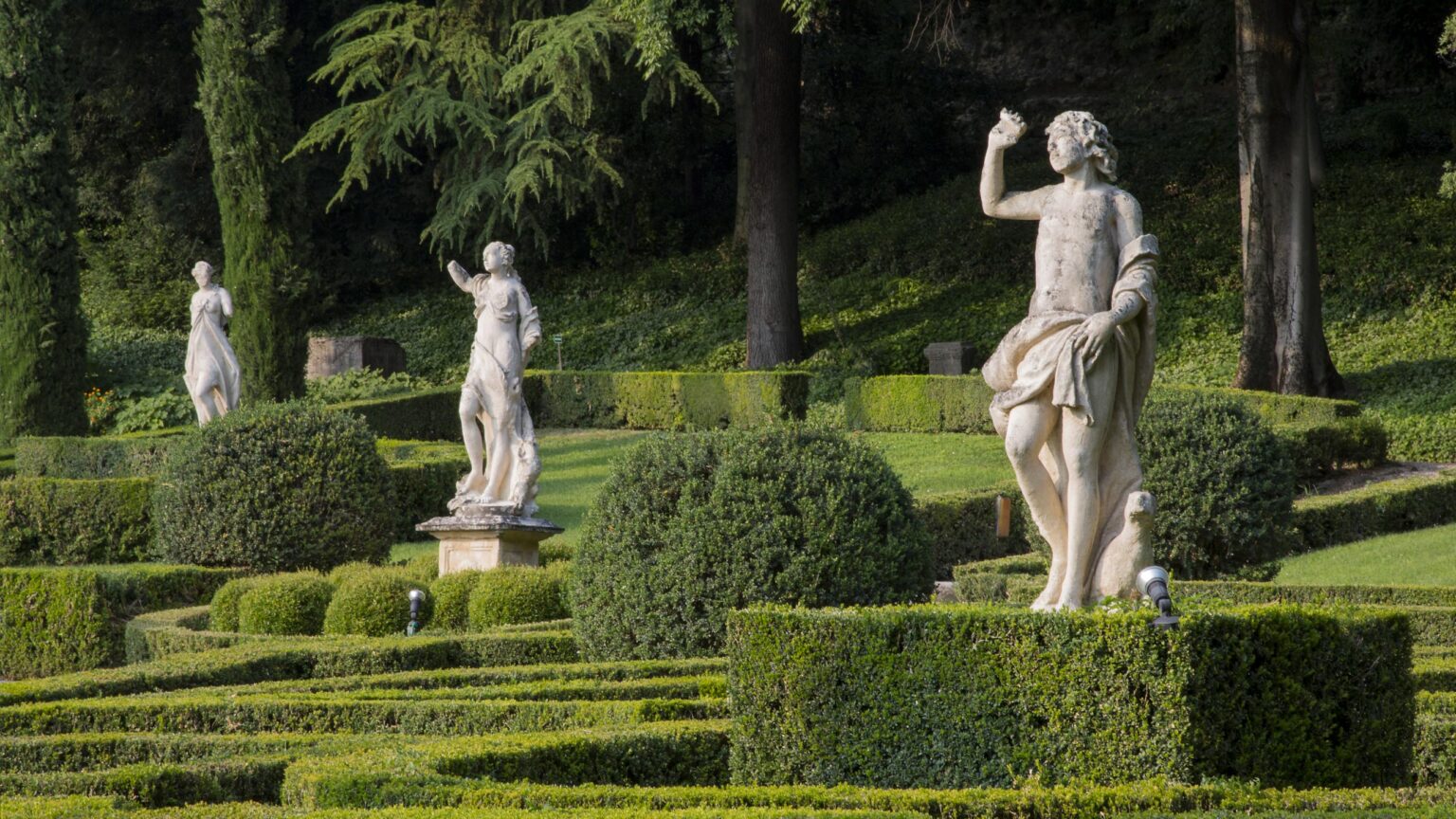
Coastal – whitewash and contrasting wood or vibrant accent paints (think the white and blue of Greek tavernas). Vibrant green, magenta/pinks and terracotta contrasting against the whitewash architecture. Wide use of terracotta pots and whitewash planters or raise beds. Crazy paving or terracotta tiles.
The coastal look has a fresh and vibrant appearance and really allows colours and materials to “pop” against the white backdrop. It has an invigorating quality that signals call-breezes, ozone and salt air, warm sunshine and relaxation.
Raised beds, climbing plants, planters and pots are key design elements of this style. Pergolas, parasols, umbrellas and sails are preferred methods for providing shade in this look.
Grills and barbecues tend to be fixed to building or boundary walls, and will often be hooded to protect the walls from staining and to contain rising embers and fire risk.
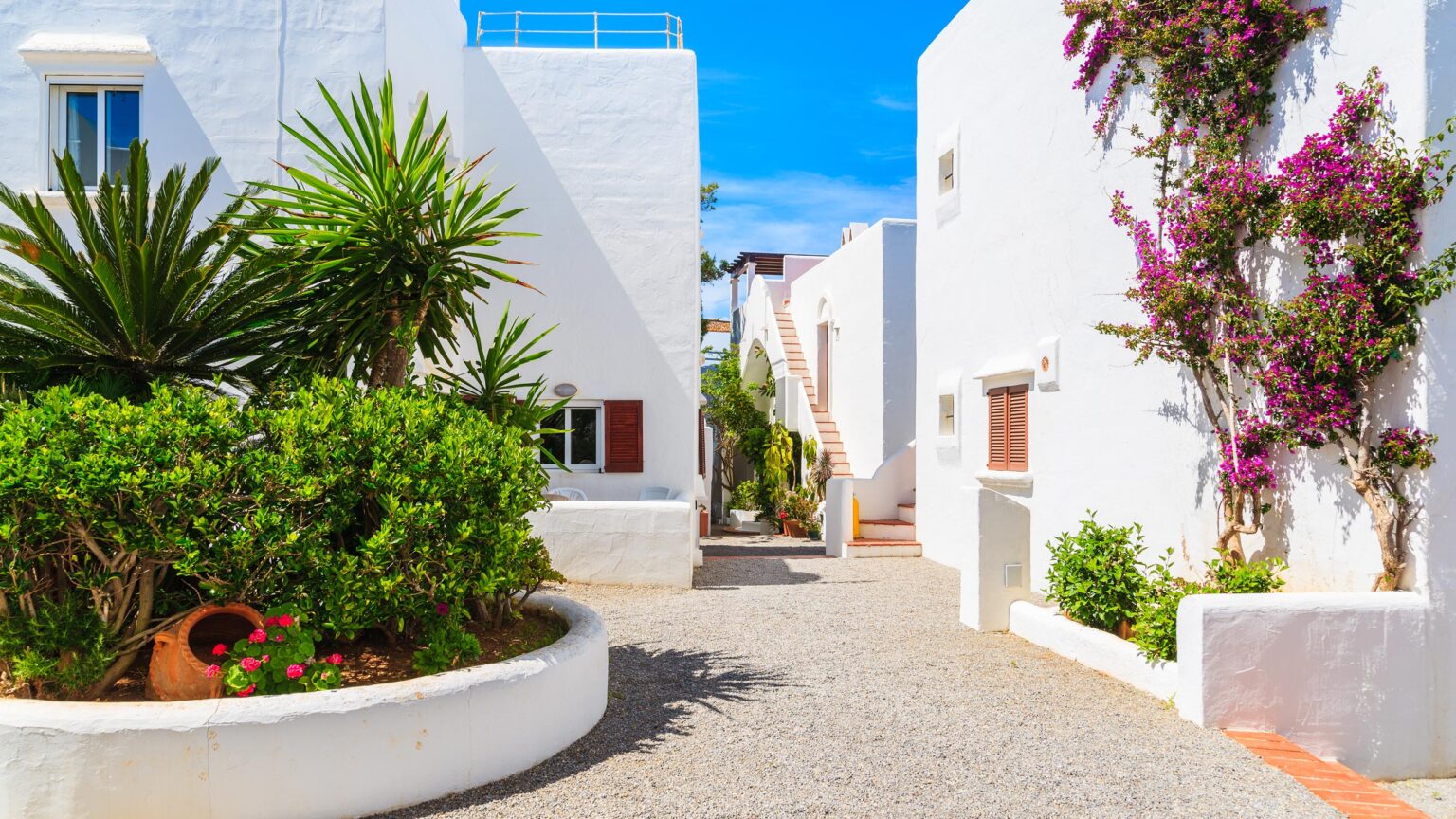
Rustic/Shabby – using more natural materials in a distressed and weathered state. Sun bleached timber, dry stone walls, lush overgrowing vegetation, organic unordered curves and landscaping. Cobbled paving stones, crazy paving or gravel.
Traditional rural properties and homes across France, Greece, Italy and Spain will tend to fall into this look. It is a bit time-worn, informal and organic.
Less landscaping and groundwork is present in the formation of these gardens, with more use of the natural topography.
Widespread use of local stone is one of the key characteristics, both in unbound dry stone walls and low retaining walls and raised beds, and for edging of pathways and paved areas.
These gardens will also tend to be more closely planted, akin to a British cottage garden, with large borders and beds densely populated with a wide variety of shrubs and flowers.
Iron and wooden arbours with climbing plants are common, as are wooden pergolas that use rustic reed/grass matt roof panels to provide the shade.
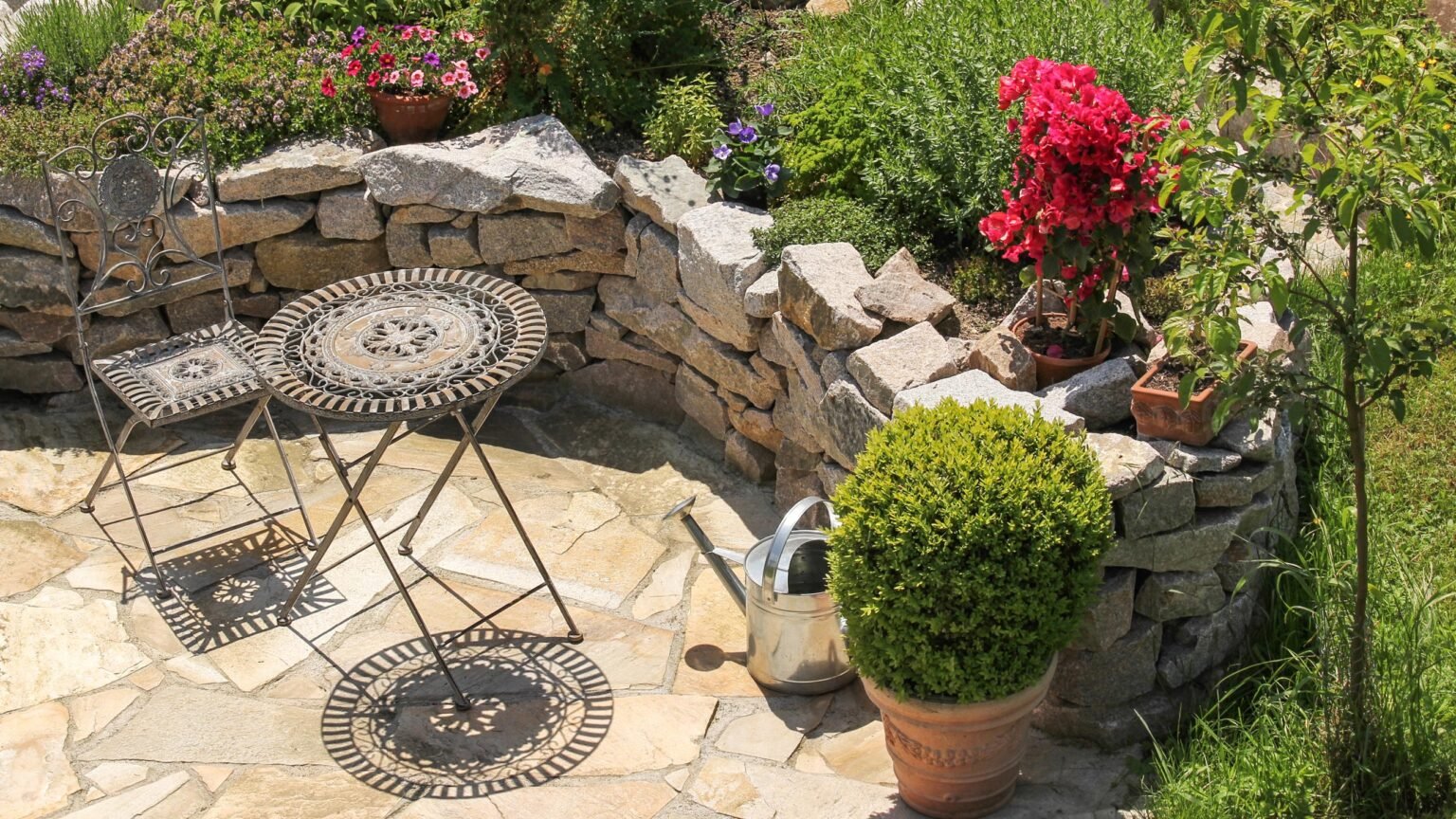
Modernist – clean lines, whitewashed and rendered walls, decorative aggregates, steel, glass, aluminium. Powder coated steel planters or rendered concrete raised beds. Decorative aggregates and low maintenance garden (lots of succulents etc).Porcelain paving or timber decking.
Modernism is about paring back ornation and a rejection of the vernacular (local building and design traditions) in favour of bold, clean lines, and simplicity. In addition to the right-angles and straight lines, other key factors are asymmetric layout, reflective surfaces (glass, steel, reflection ponds), flatter, uncluttered surfaces and materials.
You can juxtapose a modernist garden with a traditional or period property, but this is difficult to pull off successfully. We would really only recommend a modernist Mediterranean garden if your property is also modernist, or can be made to appear so (e.g. an extension that goes into your garden that has a modernist style).
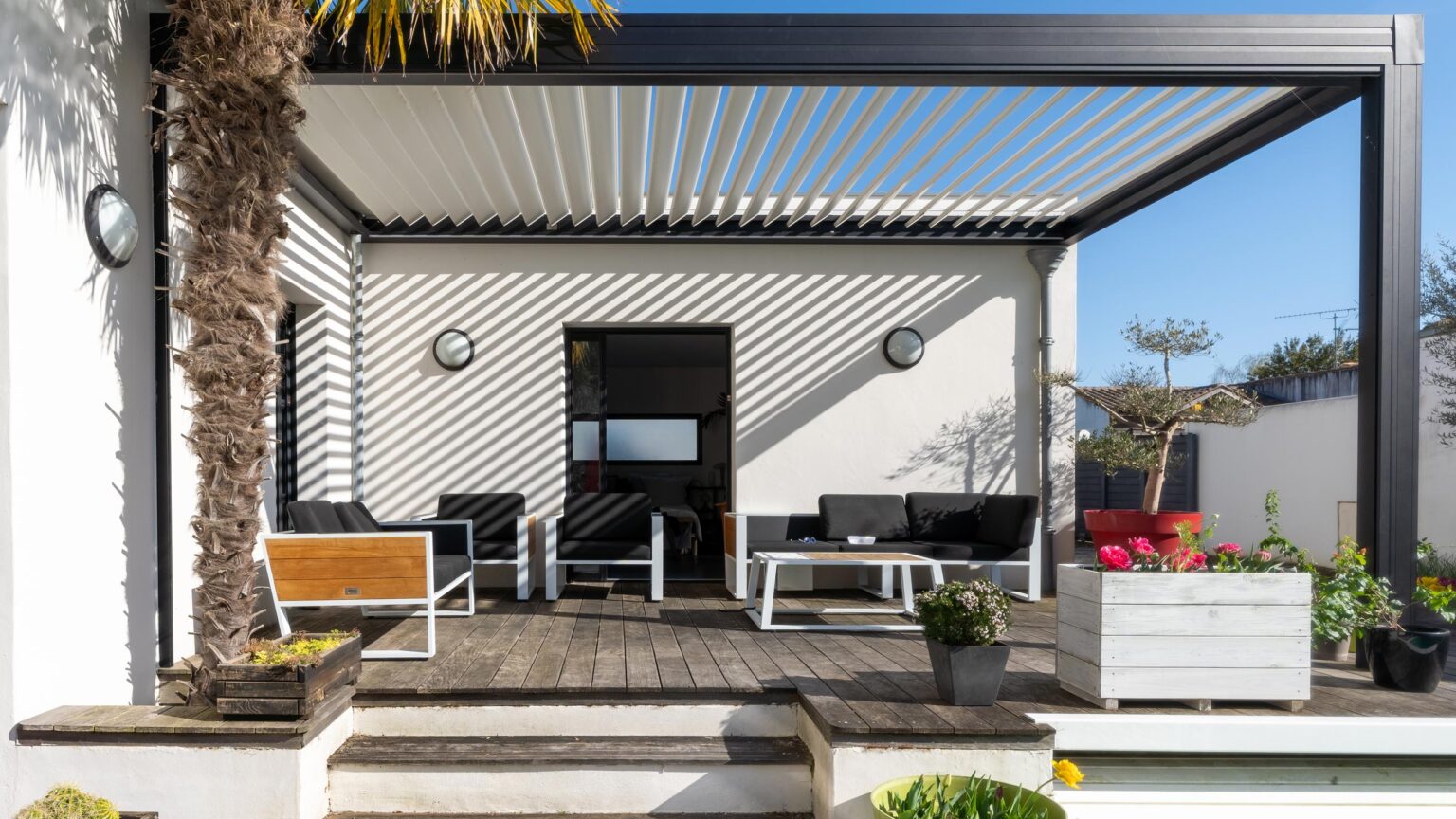
Islamic – the design language of past and present Mediterranean Islamic cultures have similar themes and elements, based on their common theology. Whether Arab, Seljuk, Moorish or Ottoman, you will see ordered and symmetrical gardens, with the use of geometric patterns and shapes, colourful mosaics, and generally abstract themes with no human or animal subjects portrayed.
Courtyard and quadrangle gardens are typical, with covered arcades or colonnade surrounding the inner quad. The inner facade of the quad and arcade is usually decorated with repeated geometric design motifs.
Often a central fountain or pond will be present.
The garden is laid out in a formal and ordered pattern, usually in four symmetrical sectors. Planting is usually topiary with low ornamental hedges and potted trees and shrubs. However, aromatic plants and herbs are often planted in the beds too to make a fragrant garden.
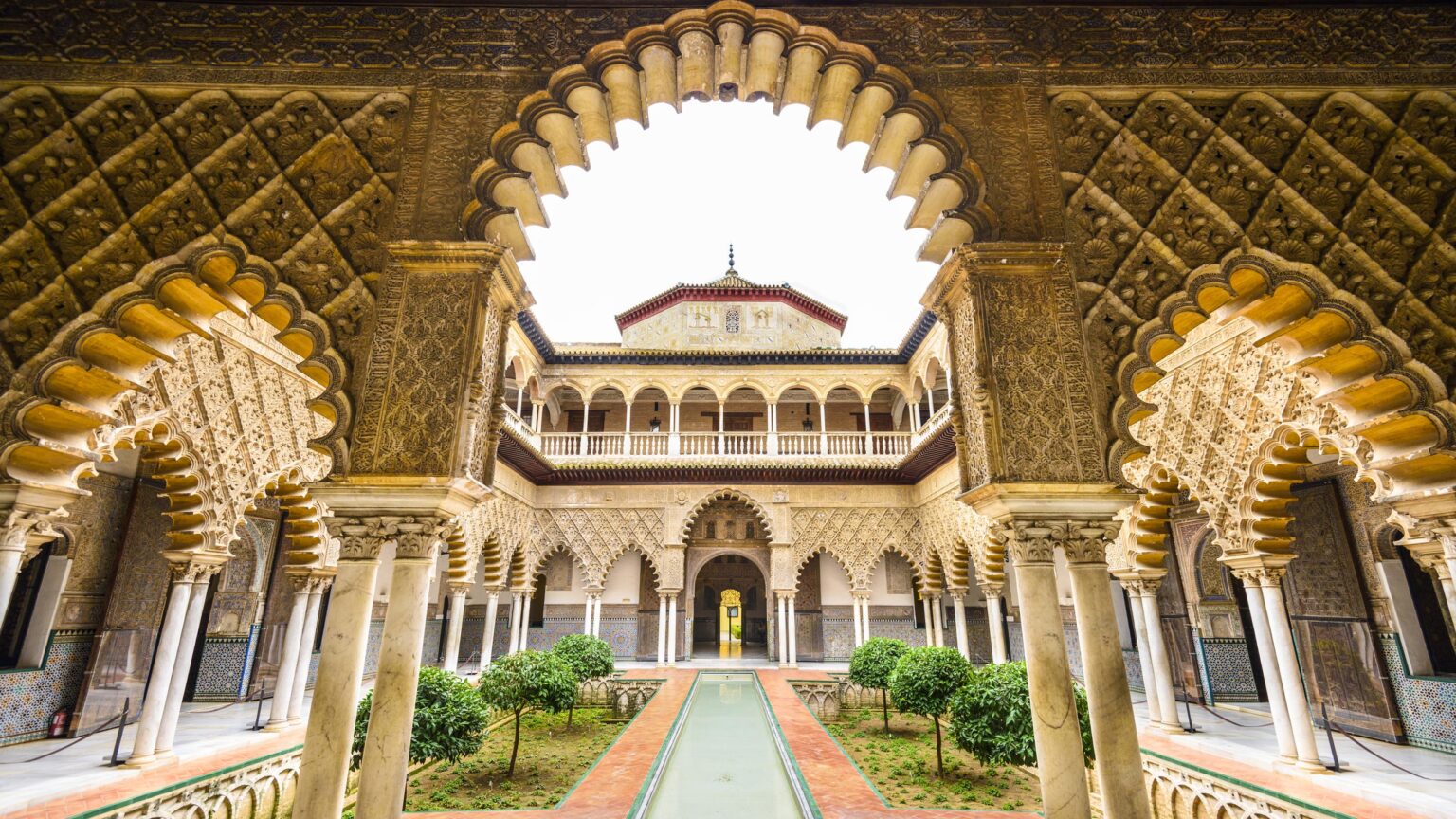
Landscaping & Groundwork
The Mediterranean is a vast geographical area, from Spain and Morocco in the West to Lebanon, Israel and Cyprus in the East. This includes flat coastal regions like the Camargue near Arles in France, to the steep seaside cliffs of the Amalfi Coast in Italy, to the rolling hills around Elounda in Crete. There are a wide array of terrain types across this huge area, and consequently, gardens and landscaping has been developed to work in each of these environments.
This is what makes a Mediterranean garden style so flexible, as you can pick and choose the bits that will work both to your tastes and also the specific site of your garden.
So an appreciation of the ground and terrain of your garden space will be needed, and your aims quantified:
- What is the gradient like?
- How much level ground do you want?
- How will you move between levels and tiers
- What sort of drainage do you need?
- Can I work with the existing landscape, or is significant groundwork and earth moving required?
Thinking this through, let’s consider some specific landscaping and groundwork options:
Groundwork: Working with Gradients
Whether your Mediterranean garden is going to be on flat ground, a gentle slope or a steep gradient, you will need to plan and consider where pathways, seating areas, trees and large shrubs, beds and borders will go. You will also need to consider sun-traps, shaded and sheltered areas too – for both you and your plants!
In this example, the garden works with the gradient of the slope, with winding pathways that allow less severe ascents/descents for pedestrians. Note the shading that the trees provide. Thinking about where the sun is relative to your garden and where you would like your trees to be is important in the early stages of planning.
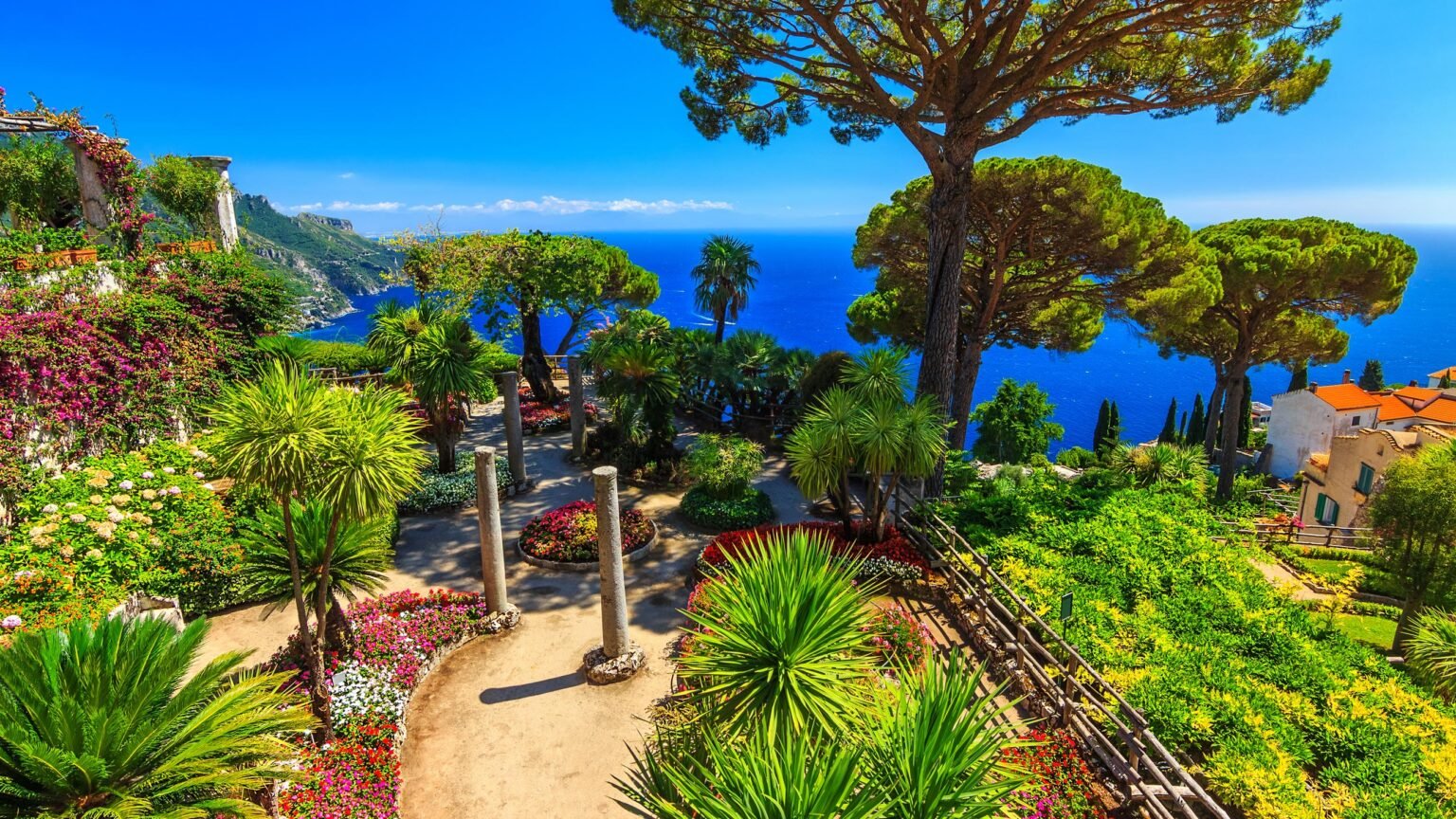
Groundwork: Terraces & Steep Terrain – Classical/Time-worn
If your garden has a very steep gradient, you can really use the hillside to create some drama and visual interest. Retaining walls, parapet walls, knee walls, coping, piers and pedestals can all be used in conjunction with steps to set the architectural style between garden terraces.
Likewise, the terraces themselves can incorporate patios, gravel, lawns and have structures and garden features to create areas people will want to explore and visit.
Here we see a rustic wall lined set of steps leading down to a paved terrace with Grecian urns and a freestanding temple-like folly with Ionic order columns and entablature (architrave, frieze and cornice) sitting at the top of more steps leading down to a lower grass terrace.
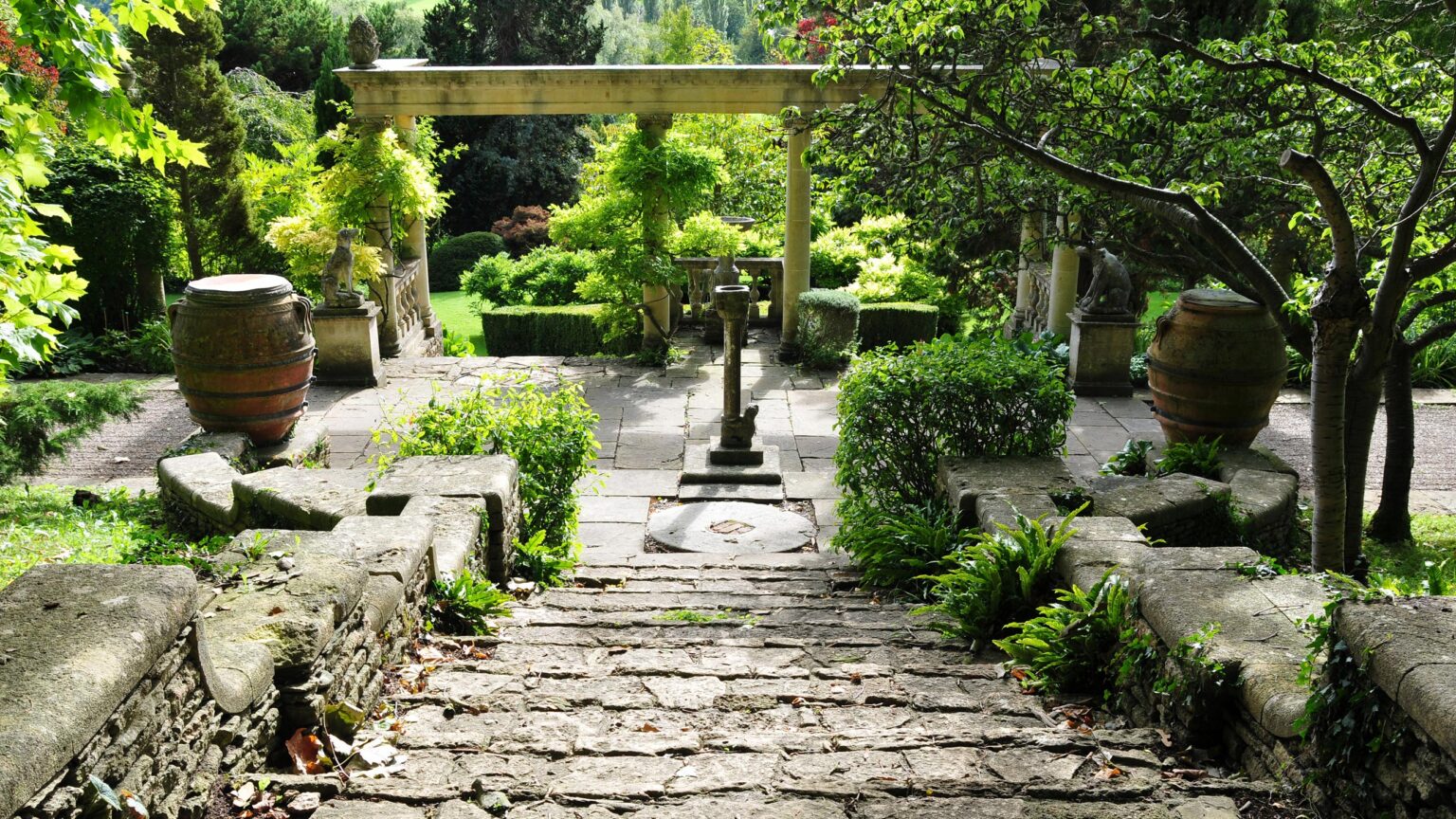
Groundwork: Terraces & Steep Terrain – Renaissance/Ordered
Here we see a different garden style when working with steep gradients. This garden has qualities of the Renaissance period, with more ordered, clean lines and the wresting of nature.
A gravelled terrace pathway creates a landing between two sloping lawn areas, flanked by manicured hedges and topiary arches. The hillside edge of the path has a knee-high retaining wall of dressed stone blocks.
The steps are edged with a low concrete ankle-wall, with pedestal urns and statues adorning the piers.
The overall visual-effect feels more meticulous and controlled, and this groomed appearance is meant to signal man’s reason and control over nature, a major theme of the Renaissance and Enlightenment.
As you can imagine, this takes a fair amount of groundwork to achieve!
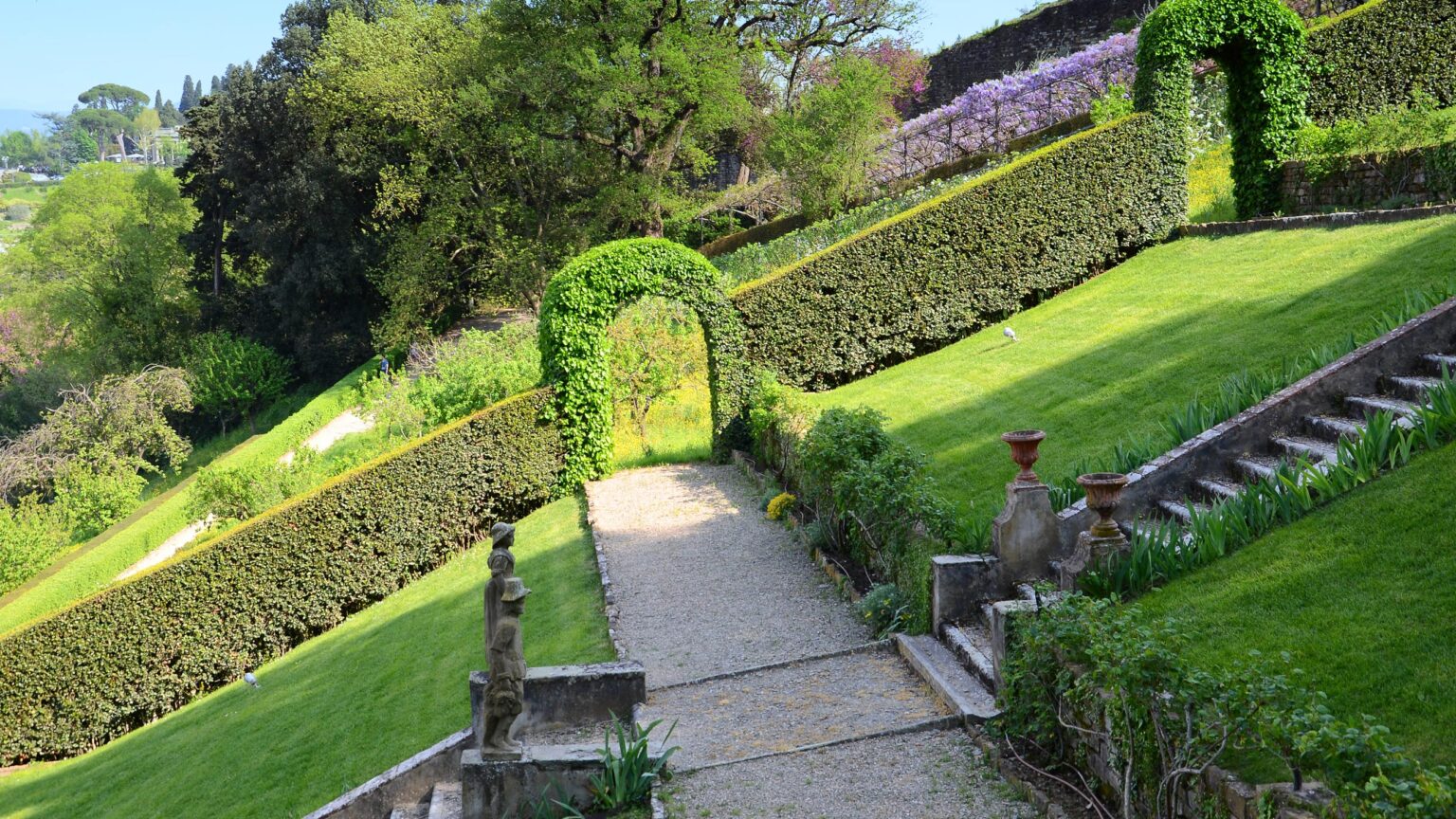
Landscaping: Height & Depth
Mediterranean gardens are often characterised by their views, with amazing vistas that contrast sea, sky, vegetation and architectural features.
However, an amazing view is not always an option due to the aspect of your garden and the local environment.
This is where using both height and depth in the design of your garden can be used to create your own views.
Create visual interest using verticality in the topography of the garden, the planting scheme, and the placement of features and architecture.
To achieve verticality within your garden, you may require a degree of groundwork (sunken gardens, terraces, retaining walls, steps, pathways).
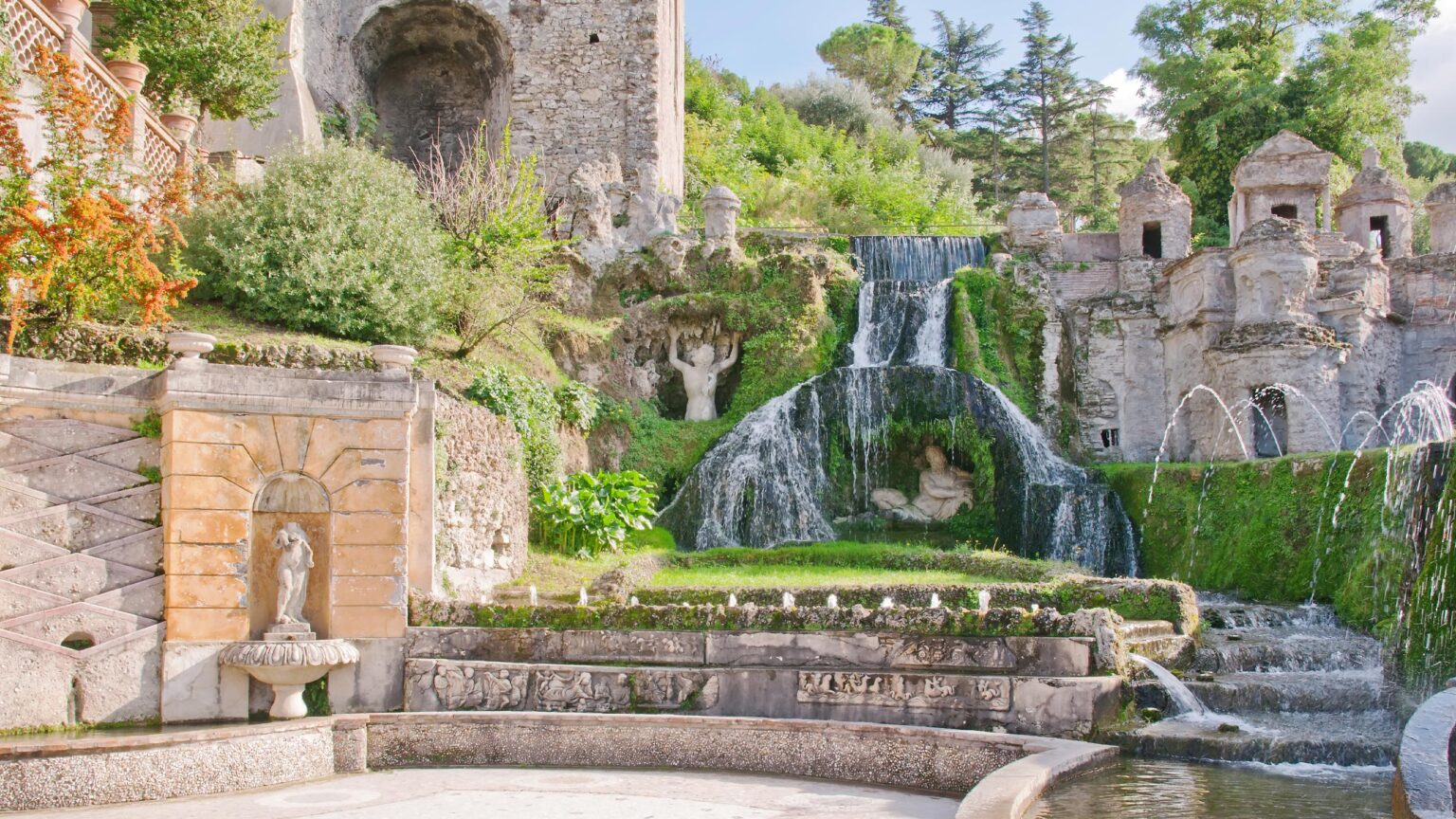
Landscaping: Terraces & Flat Terrain
With flatter garden terrain, you may still wish to introduce some elevation and terracing.
Gentle sloping land is going to make this easier than completely flat land – with a gentle slope, you can co-opt the rise into the terrace. However, if your garden is flatter than a billiard table, then creating an elevated area means either bringing in material, or excavating one portion, to provide material for the other.
The advantage of terraces in a thematic garden is that they offer you a huge opportunity to set an architectural style via the retaining walls, steps and any related piers/columns. What type of masonry and adorning you add to these highly visible elements will help set your garden’s look and feel.
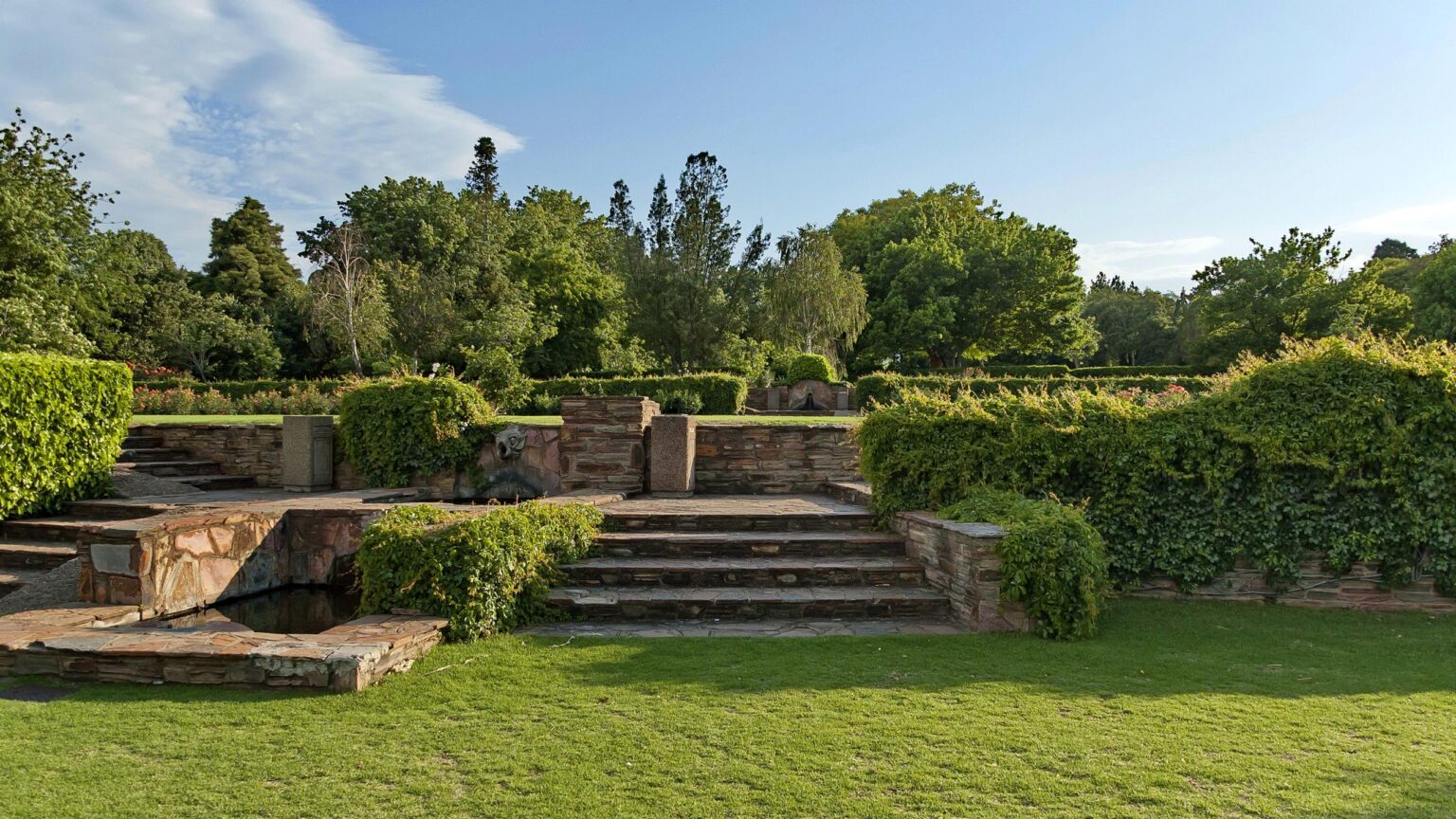
Groundwork: Water Features
Fountains, ponds, water-spouts & sconces are all commonly found in Mediterranean gardens. For more ideas about what water features might work for you, take a look at our guide here: Water Feature Ideas.
When planning your garden, you will need to figure out where water features are going to be. You will likely need to conduct groundwork (foundations and bases, electricity and water supply trenches etc) to allow them to be installed, so knowing what needs digging up or moving is best before anything else goes into the garden.
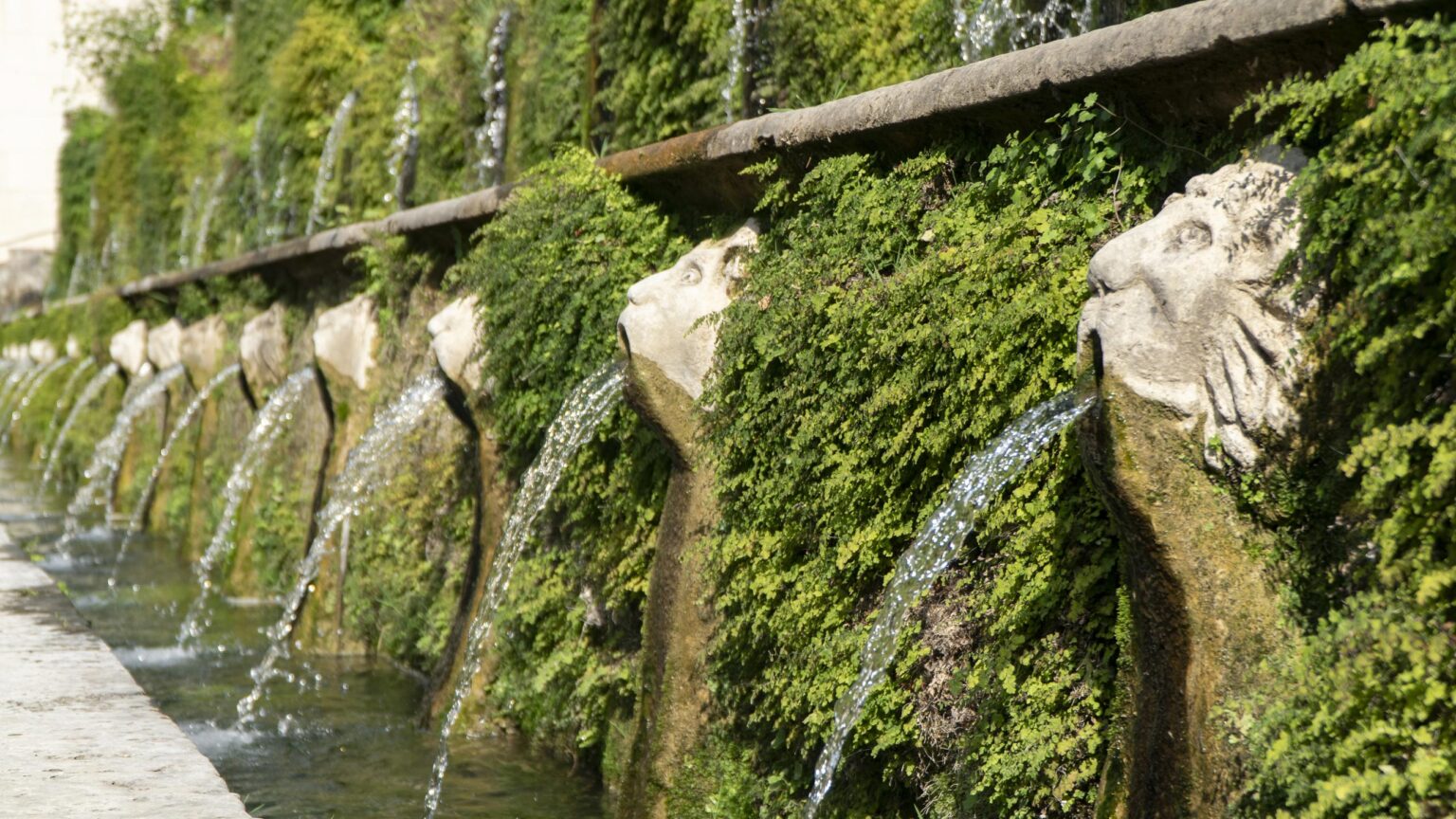
Groundwork: Pathways
Pathways, whether paved or gravelled, should have a hardcore sub-base to provide stability and sure-footedness. So, you will need to consider where the paths are going, so they can be excavated as part of your groundwork scheme.
Also, consider edging and knee-walls that may run parallel to your pathway. These will also need excavating.
Mediterranean garden paths tend to be straight (often the central axis of a designed vista) and are often flanked with low ornamental hedges.
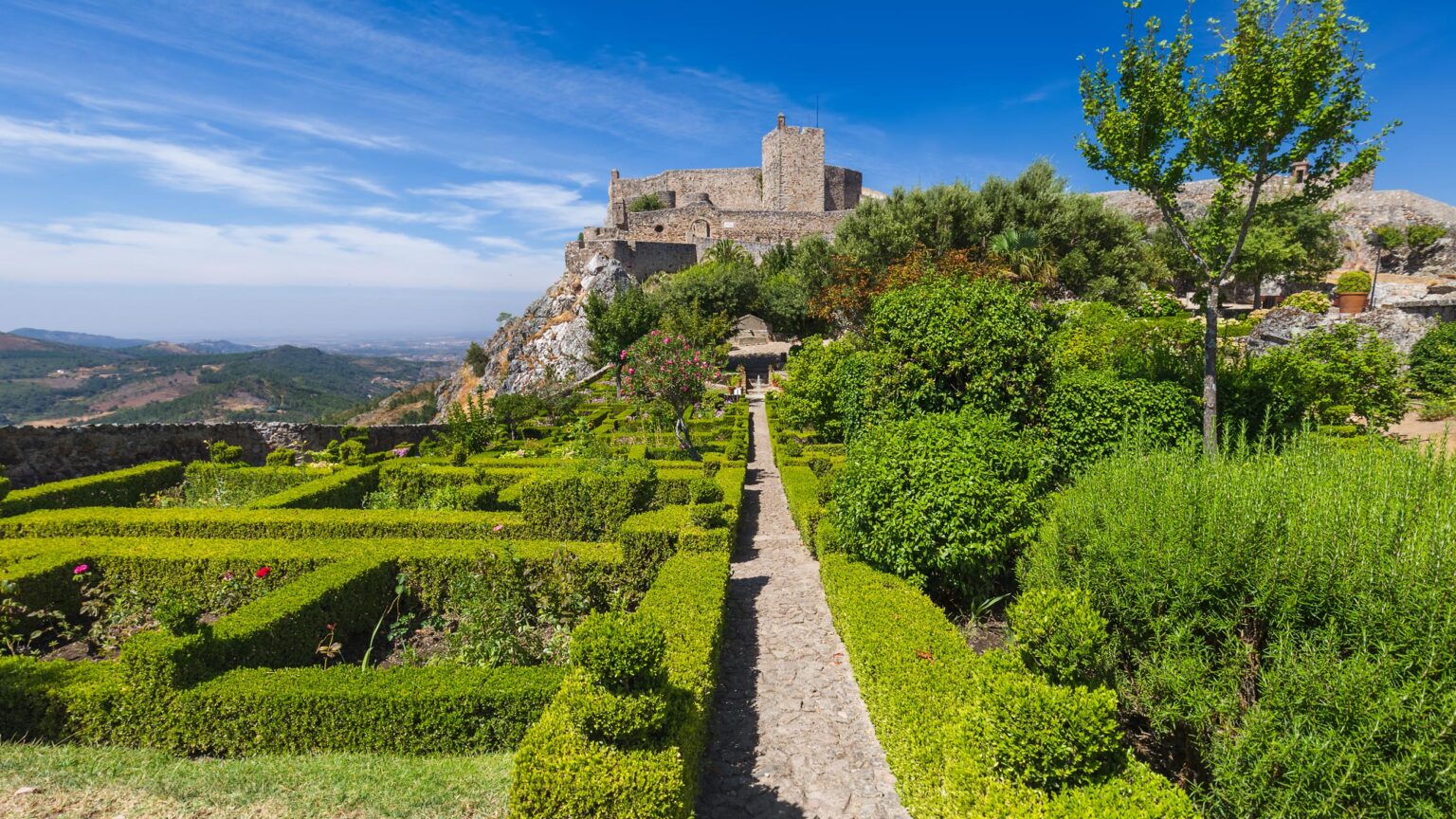
Groundwork: Paved Terraces & Patios
Patios and paved terraces will need a flat, stable sub-base of hardcore. The sub-base needs to be at least 150 mm deep, plus 40 mm for your laying course (either 5:1 mortar for bound paving or sharp sand for unbound paving), plus the depth of the paving units themselves. So you are likely to need to excavate a minimum 210 mm at the location where patios and pave terraces are required.
Also, the location of patios and pave terrace area needs to be carefully considered as part of your groundwork plan. You need to know where water will drain and soak away, and where the sun is throughout the year. Knowing where you have sun-traps versus shade is crucial, as it will determine the location of structure or trees that will be needed for shade. If no natural shade (from lee of boundary trees, houses and terrain) exists, then you will need to plan footings for pergolas, gazebos etc.
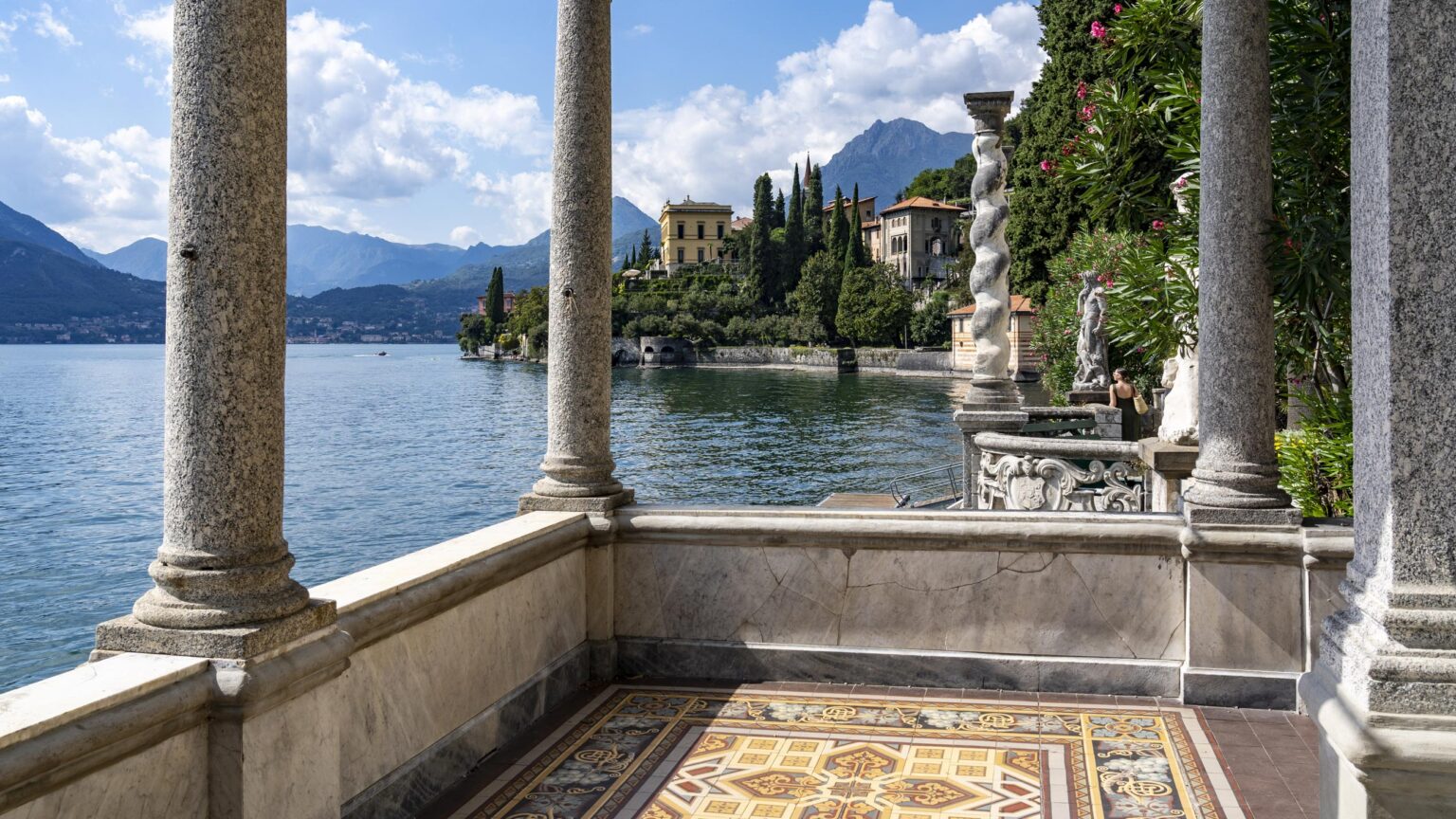
Groundwork: Garden Structures & Features
Whether you’re planning an arbour, gazebo, pergola, folly or belvedere, these structures will need footings and foundations excavated.
They will also likely need a drainage plan – how are you going to handle rainwater run-off from these structures.
In both cases (foundations and drainage), you will need to ensure any garden structures are very much part of your groundwork plan before you break ground.
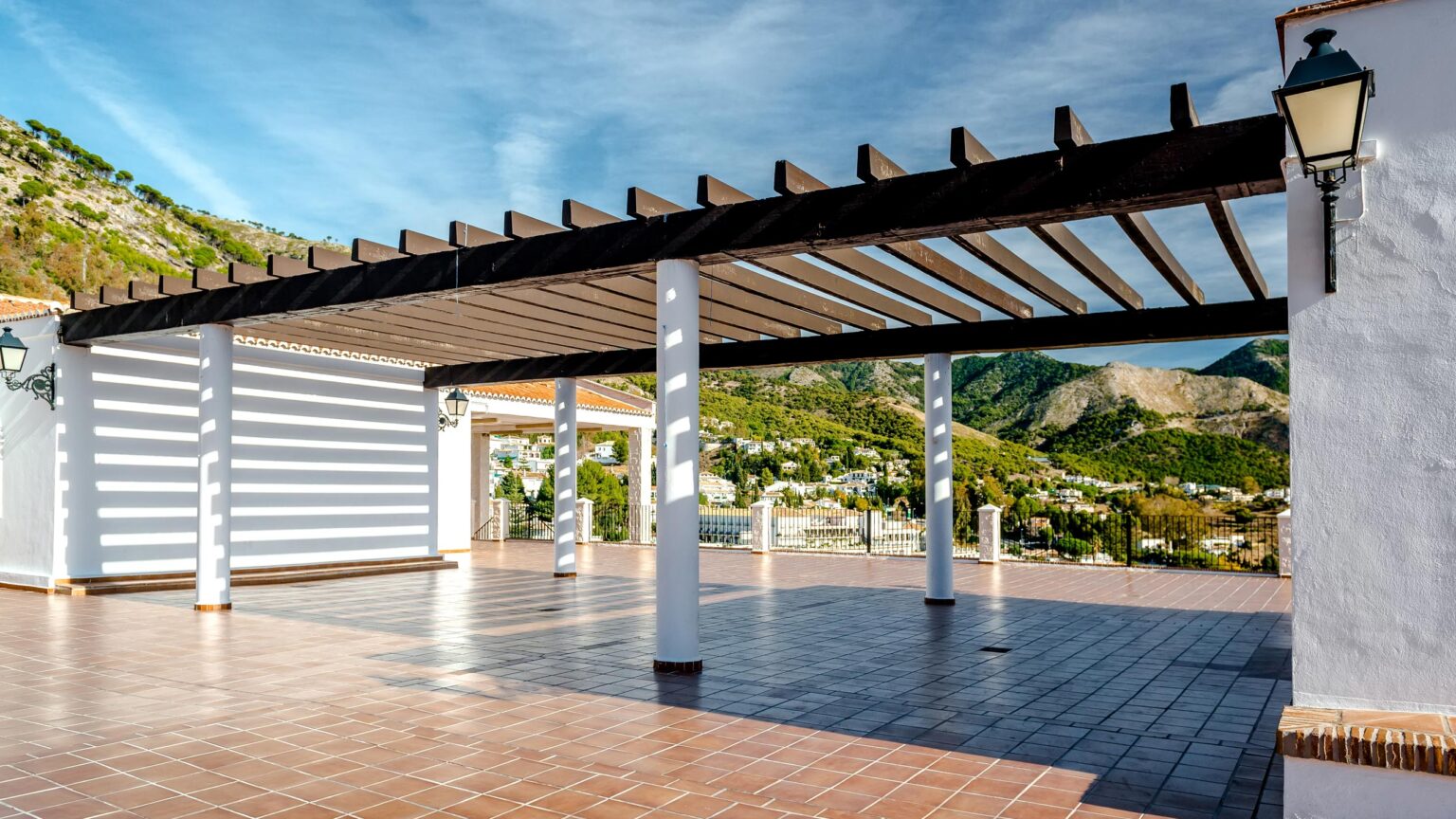
Mediterranean Garden Features & Materials
Garden features are commonplace in Mediterranean gardens, acting as focal points and juxtaposing man-made art against vistas and the garden’s natural flora.
Romanesque water features, classical sculpture and even empty terracotta vessels and urns are typical of gardens from the Algarve to Asia Minor.
The features don’t necessarily need to be large (like fountains or follies), but smaller Objet d’art and ornamentation are very effective ways to signal the Mediterranean style and provide some character.
Placement and selection of garden features is one of the central means by which you can pull-off a successful Mediterranean garden. Decide what you want the focus and aesthetic direction of the garden to be, and then carefully site those features to maximum effect.
The key to this planning is to try and visualise your views and vistas, and how you will move through the garden. Consider where in the garden you will also be sitting or interacting with it from, to ensure clear sight-lines to your garden features for maximum effect.
Whitewash
Whitewash is a traditional material used in Mediterranean gardens for various purposes. It is a type of paint or coating made from a mixture of lime, water, and sometimes other additives like salt or pigments. The resulting substance has a milky appearance and is typically applied to the surfaces of walls, fences, or other structures.
In Mediterranean gardens, whitewash serves multiple functions. Firstly, it acts as a protective layer, shielding surfaces from the harsh effects of the sun and weather conditions, such as intense sunlight, high temperatures, and salty air. The reflective nature of whitewash helps to reduce heat absorption, keeping the surfaces cooler.
Additionally, whitewash has a decorative purpose in Mediterranean gardens. Its bright white colour provides a visually appealing contrast against the vibrant greenery and colourful flowers typical of these gardens. The crisp, clean appearance of whitewashed surfaces adds a touch of charm and authenticity to the overall aesthetic.
Whitewash also has practical benefits for plant health. It acts as a natural fungicide and insect repellent, helping to prevent the growth of mould, fungi, and pests on garden walls and structures. This protective quality can contribute to the overall health and longevity of plants in the garden.
Overall, whitewash is a versatile material commonly used in Mediterranean gardens for its protective, decorative, and functional properties. Its use enhances the visual appeal, preserves the integrity of structures, and promotes a healthier environment for plants in these unique garden settings.
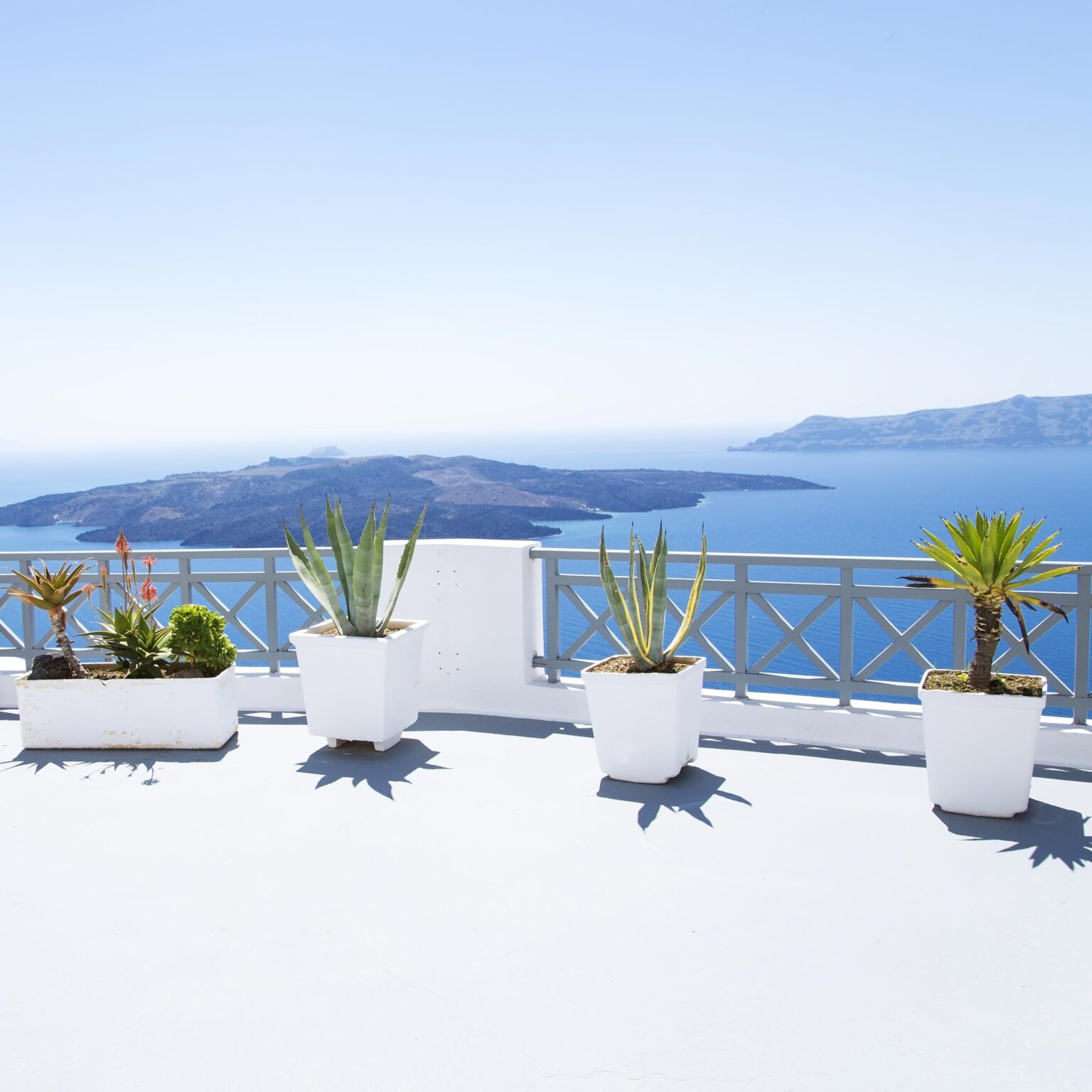
Aged/Weathered Stone
Aged stone holds a significant presence in Mediterranean gardens, imparting a timeless and antique charm to the landscape. These stones, which have weathered over time, are often used in various masonry and paving elements of the garden design, such as pathways, walls, patios, and decorative accents.
Their worn texture, muted colours, and rugged edges evoke a sense of history and authenticity, seamlessly blending with the natural surroundings.
Stone in Mediterranean gardens may be sourced from local quarries, fields or salvaged from ancient ruins, adding a sense of cultural heritage and continuity to the space. The stones showcase a range of earthy hues, including warm tans, soft grays, and weathered whites, mirroring the colours of the region’s sun-soaked landscapes.
Stone is used to create patio and terrace paving, often using a Roman Opus mixed size laying pattern to create a classical look.
Stone can be used to create meandering paths of crazy paving that wind through the garden, guiding visitors to various focal points and hidden corners. Their irregular shapes and sizes contribute to a sense of informality and organic flow, enhancing the relaxed and natural ambiance of the space.
In addition to pathways, stone is often employed to construct low ankle and knee walls, retaining walls, and terraces, providing structural stability while harmonizing with the natural terrain. These walls can be adorned with cascading vines, colourful flowers, or climbing plants, further accentuating the rustic beauty of the stones.
To enhance the overall aesthetic appeal, stones are occasionally used as decorative accents, such as sculptural elements, garden borders, or seating areas. Their weathered patina adds a sense of character and authenticity, creating a visual contrast against the vibrant greens of the surrounding vegetation.
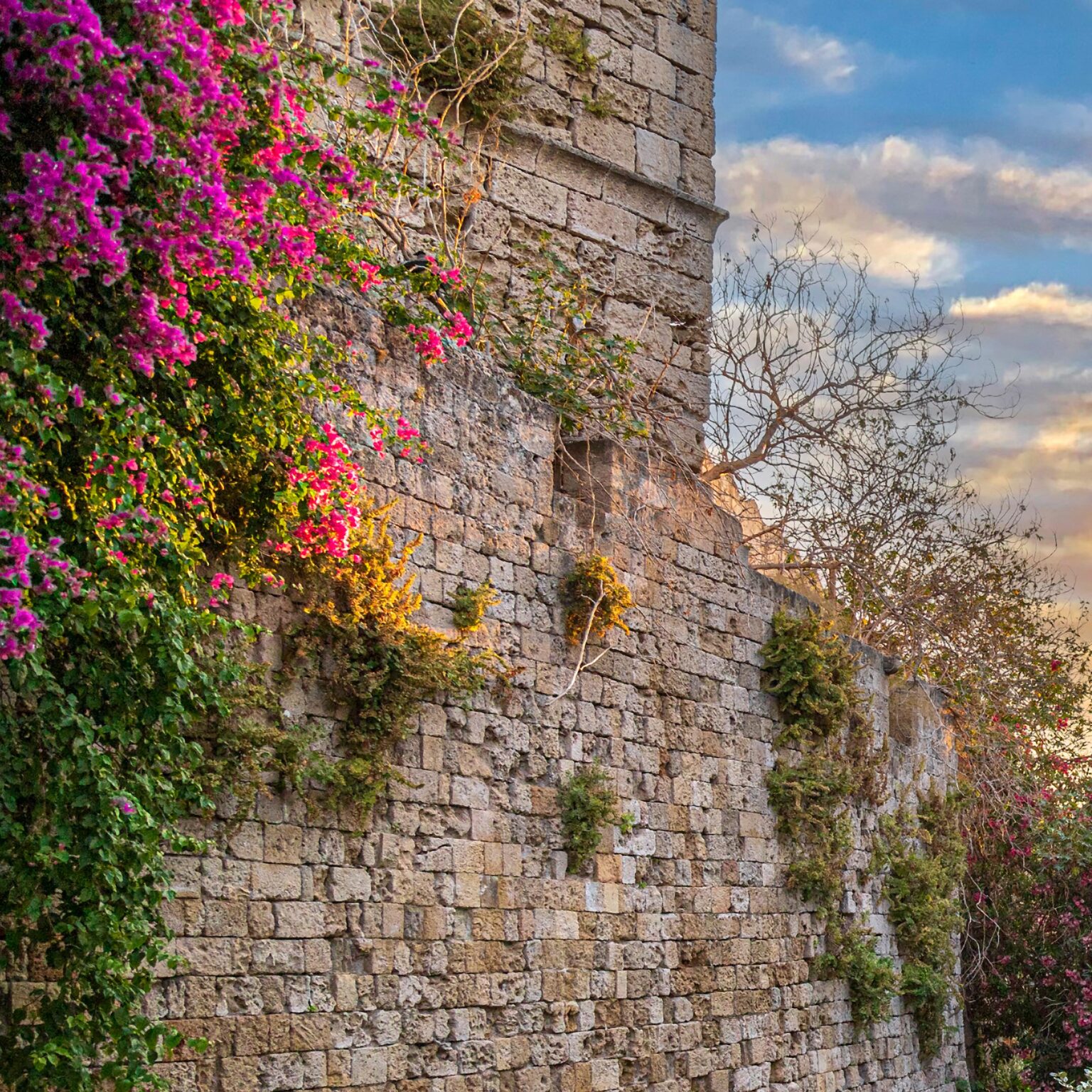
Terracotta
Terracotta is a popular ceramic material extensively used in Mediterranean gardens to add a touch of warmth and authenticity. Made from fired clay, terracotta possesses a natural orange earthy hue that seamlessly blends with the surroundings.
It is commonly used for various garden elements such as pots, planters, tiles, and decorative accents. The porous nature of terracotta allows for excellent water retention, making it ideal for the region’s more arid climate.
Terracotta pots are often filled with vibrant flowering plants, aromatic herbs, or even small citrus trees, adding a splash of colour and fragrance to the garden. The rustic charm of terracotta enhances the Mediterranean aesthetic, evoking a sense of timelessness and tranquillity.
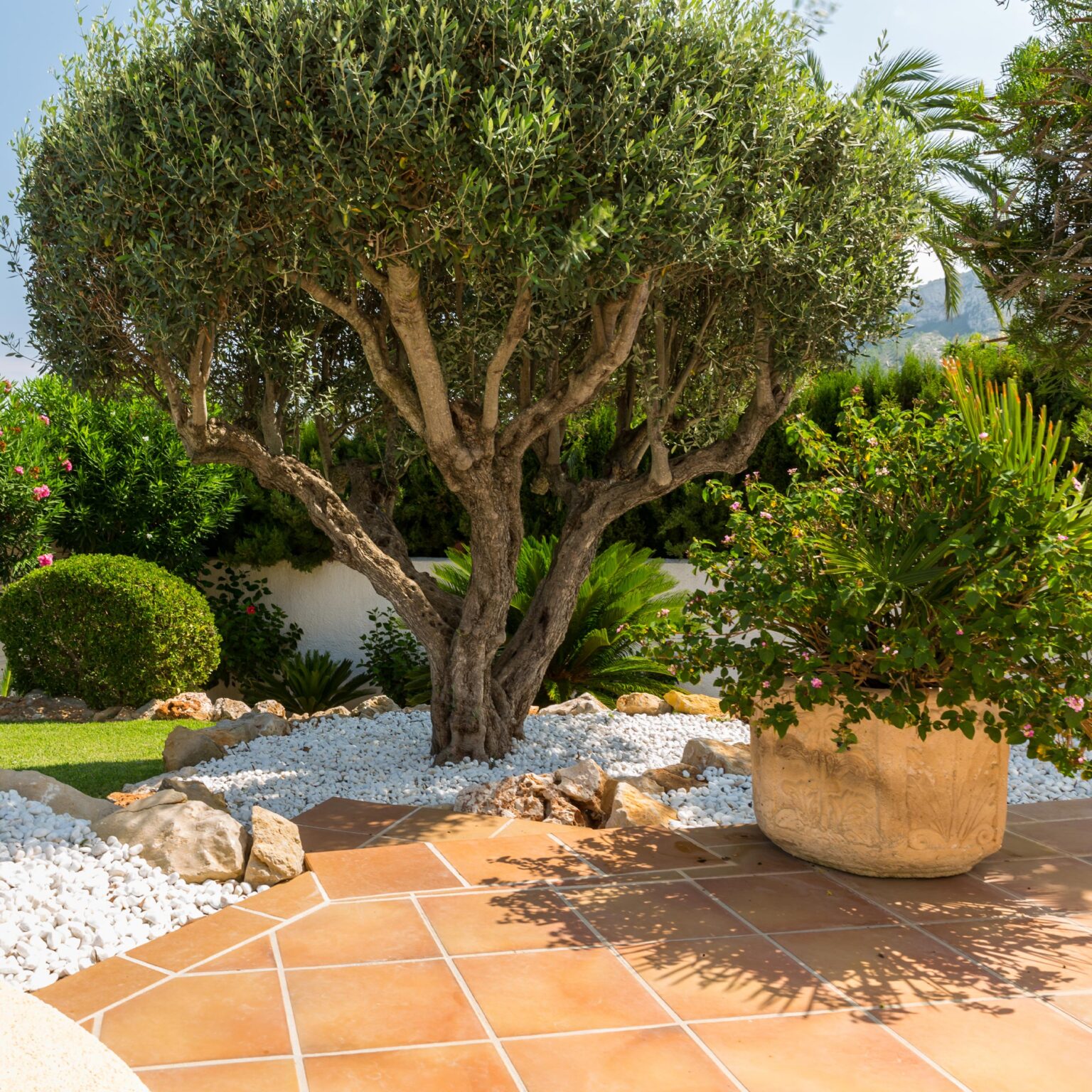
Shade & Garden Structures
Living in the Mediterranean, the sun is stronger and more consistent than here in the UK. This means their gardens tend to have a more dedicated and structured approach to shade.
Loggia – an open-sided end of the home that provides overhead cover from the floor above with vaults, arches or support columns. Often used to create an “outside” dining area connected to a patio or terrace.
Awnings – either mechanical or electro-mechanical, these can be unfurled from the side of the house to provide shade and rain cover.
Pergolas – these are fixed to the side of a structure (a lean-to) and may simply have timber joists or slats on the roof providing shade, or have mechanical or electro-mechanical louvres that can be articulated open to allow in sunlight, or closed to provide share and rain cover. Some more modern design might have a solid glass roof with blinds that can be used to provide shade.
Gazebos – these are technically freestanding pergolas, but we tend to think of “Gazebos” them as having solid roofs (either fabric, wooded shingle or roofing tiles). The framework is usually steel or timber, but pillars can be masonry or concrete too.
Arbours – timber or steel frameworks on which climbing plant and vines provide the shade. Great for pathways and vistas to visually frame an object.
Sails & Canopies – Canvas pulled taught using masts and steel cables are a great way to provide shelter to a dining or seating area with a contemporary and luxury aesthetic.
Umbrellas & Parasols – the versatility of being able to move and site them when and where you need them is why umbrellas and parasols are so popular. Choose between integrated table mounted umbrellas or standalone models.
Trees & Foliage – probably the oldest method for providing shade in the garden, a tree offers great options for shade. So be aware of where the sun is, and its transit in your garden when planting trees.
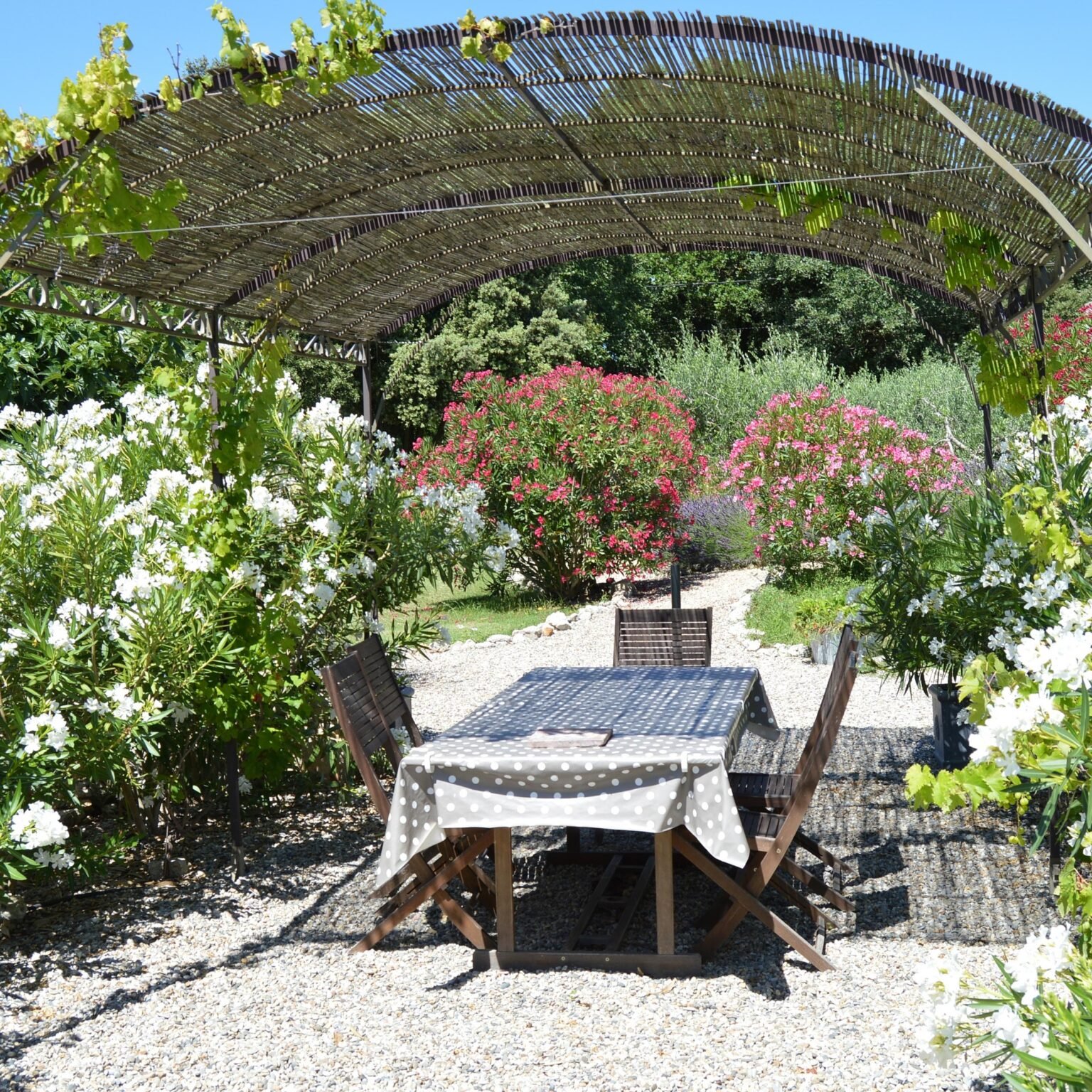
Fountains & Water Features
Mediterranean gardens frequently incorporate water features like fountains, reflecting pools, or small cascades. These elements add a soothing ambiance and help to cool the surroundings during hot summer months. Water features often have intricate tile work or sculptural details, complementing the overall Mediterranean aesthetic.
These features contribute to the timeless charm and inviting atmosphere of Mediterranean gardens. They provide fusion of art, nature, and historical elements, to create a captivating outdoor environment.
Water features should be sited, so they are either central focal points (such as a tiered and plinth fountains or ponds), or on the periphery such as wall fountains and sconces.
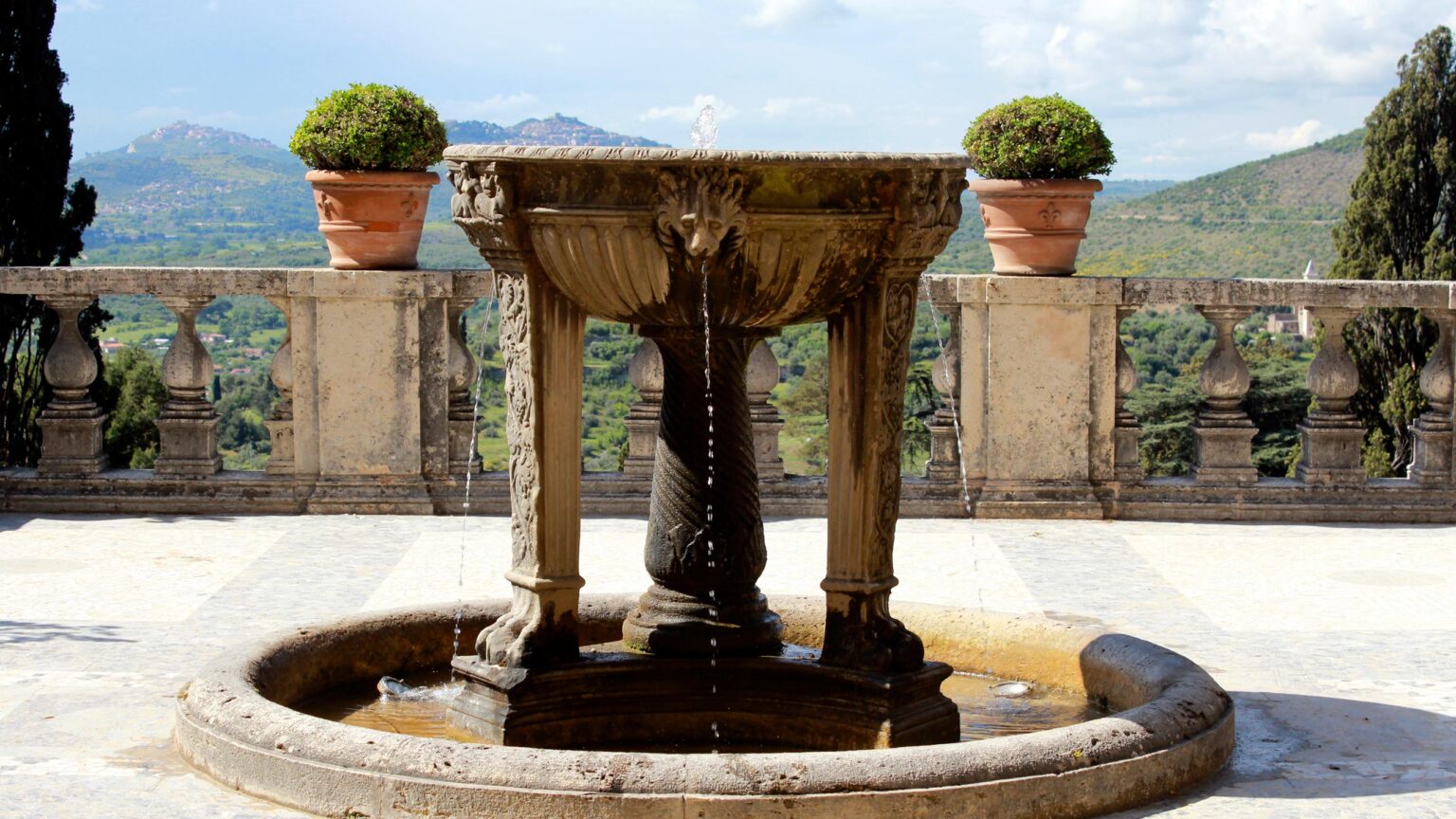
Plinths, Pedestals, Piers & Newel Posts
Statues, sculptures, sundials, ornamental urns and Grecian lamps all need to rest on some kind of base. Often that will be a standalone plinth or pedestal, but it could be a pier in a wall or a newel-post on steps and stairs.
So you need to consider not just what design accoutrement sits on top of them, but what design language the base itself is signalling in terms of the garden’s character.
Whether you use cut and dressed stone, or a concrete proxy, or rustic looking bound stone, or just render, that choice will help set the stylistic tone as much as whatever is sat on top of it!
The image shown has a sawn and polished unadorned marble block plinth base, setting a clean and formal aesthetic in keeping with the ordered nature of the garden.
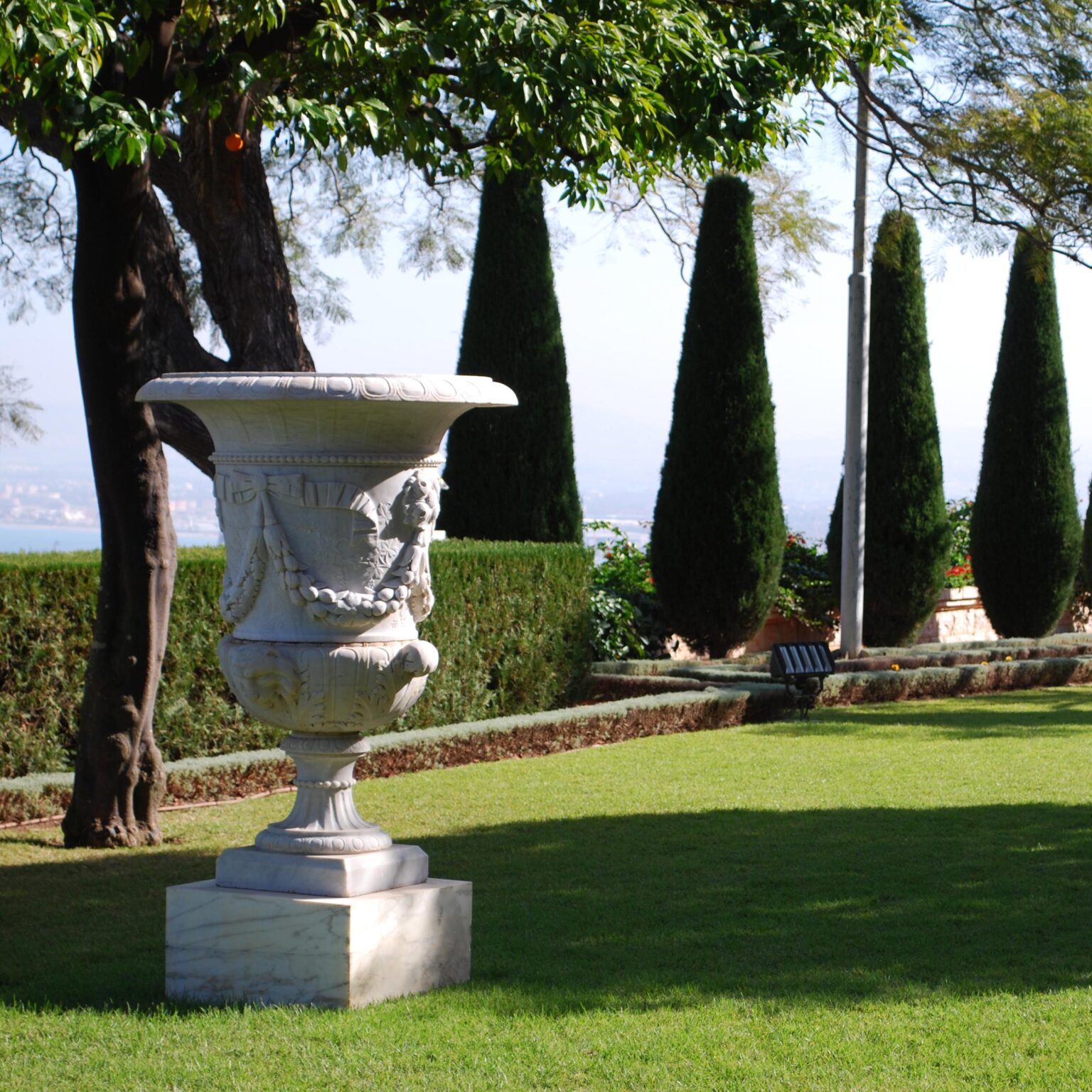
Mediterranean Garden Walling
To set a Mediterranean feel to your garden, you will want to select materials that look the piece. Therefore, British red brick, London Yellow Stock or Gault bricks are not going to set the right tone.
So what can you use for boundary walling and garden walling that would authentically be seen in a Mediterranean garden?
Dry stone walling – unbound natural stone. This is great for the retaining wall small terraces and raised flower beds. It also works well for boundary walls if they are not too high.
Bound stone walling – weathered, split, tumbled or dressed, bound stone walling (where it has been mortared or bonded together) is pretty versatile, and lends itself to a wide range of Mediterranean garden applications: retaining walls, boundary walls, parapet walls, plinths, posts, piers, raised beds. Obviously, the stone used need to look like a native of Mediterranean geology, so Wiltshire flint or Aberdeenshire granite may not look apropos.
Rendered walling – rendered, and whitewashed walling is common across the Mediterranean. Great for coastal properties, but also can work well in urban areas too. The high-contrast it provides accentuates foliage and accoutrement such as terracotta pots and urns.
Stone cladding – if you are going for a modernist design, and need to hide a very British brick wall, then split-face stone cladding might be the way to go. It provides quick and easy contemporary chic to exterior walling.
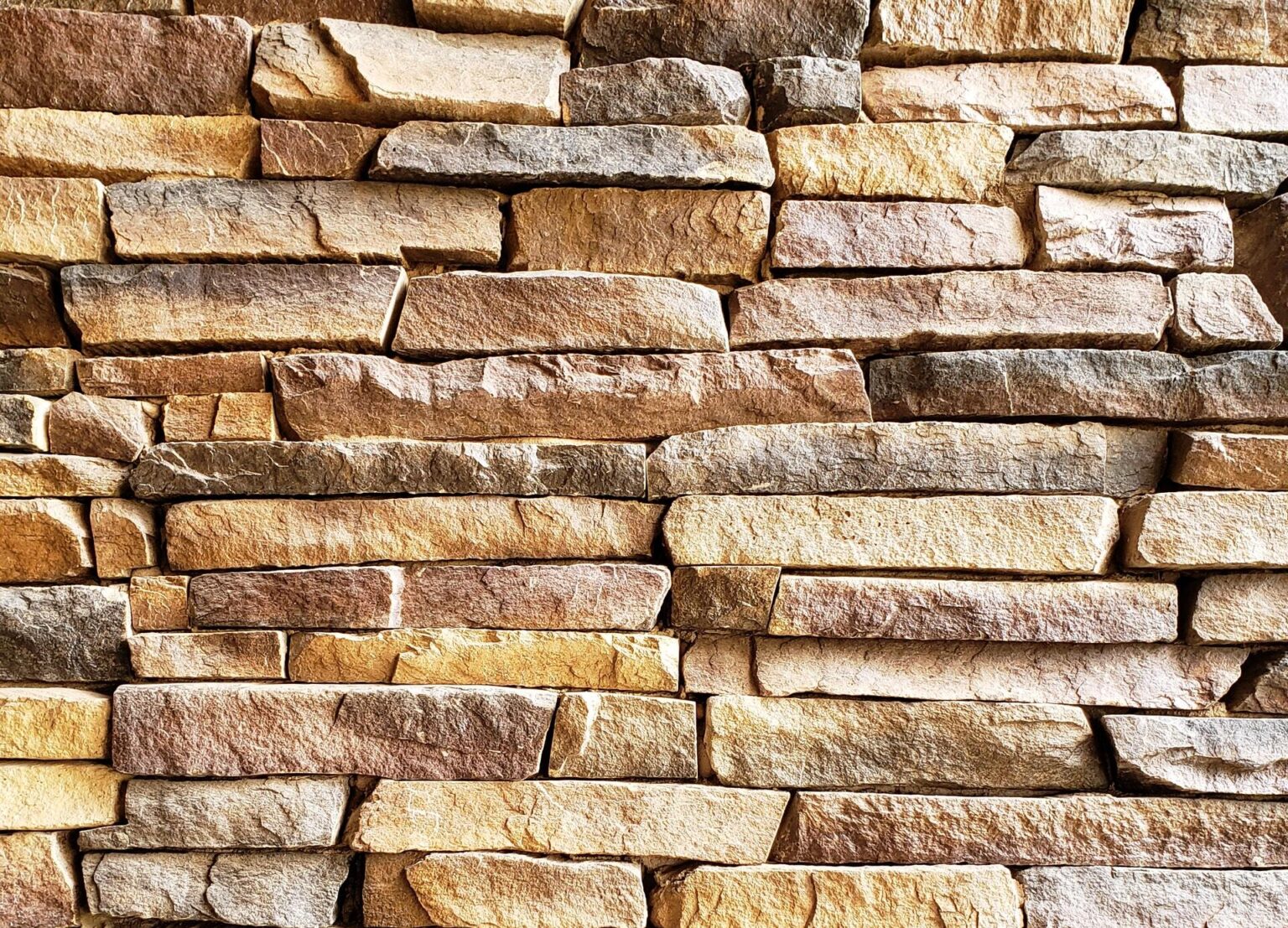
Garden Steps
Similar to retaining walls, parapet walls and balustrades, your choice of steps will help set the garden’s architectural style.
The material you use for the steps and lifts (the visible vertical bit under the step) will impart an architectural style, so consider what your overall theme is going to be and choose accordingly. Here are some shorthand to common styles:
- Rustic / Bucolic – riven stone steps and rough-hewn bound stone lifts.
- Coastal – terracotta, honed flat stone or porcelain steps with rendered whitewash lifts.
- Formal / Classical – honed flat stone (bull nosed and sawn) steps with honed stone lifts.
Image shown of a rustic set of stone steps in an olive grove. Notice the lack of coping, riven natural stone steps and bound rough-hewn block side walls.
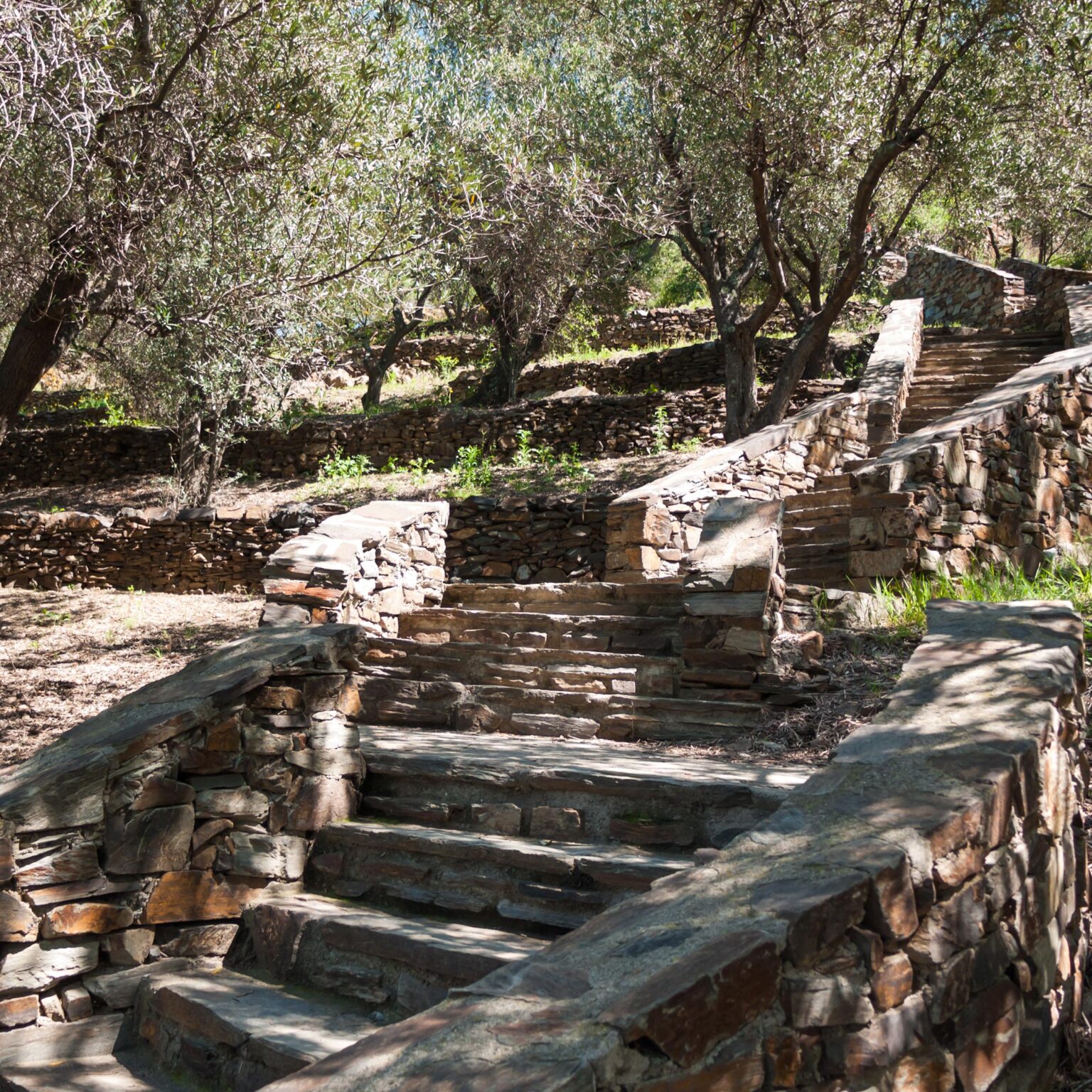
Balustrades & Parapets
Balustrades, newel-posts and parapet walls are all features you might employ on the edge of your terraces to set a Mediterranean architectural style. As they are relatively large and often in the line of sight for steps between garden levels, this heightens their significance.
Balustrades immediately make one think of neoclassical Palladian style gardens, but obviously, these very formal British garden features are borrowed from classical architecture and apropos for Mediterranean gardens.
If balustrades are too formal, and something more rustic and bucolic is sought, then a bound-stone parapet wall will help equally set an architectural tone for your garden.
The image shown combines less formal crazy paving with distressed balustrades, to create a less formal setting to this terrace.
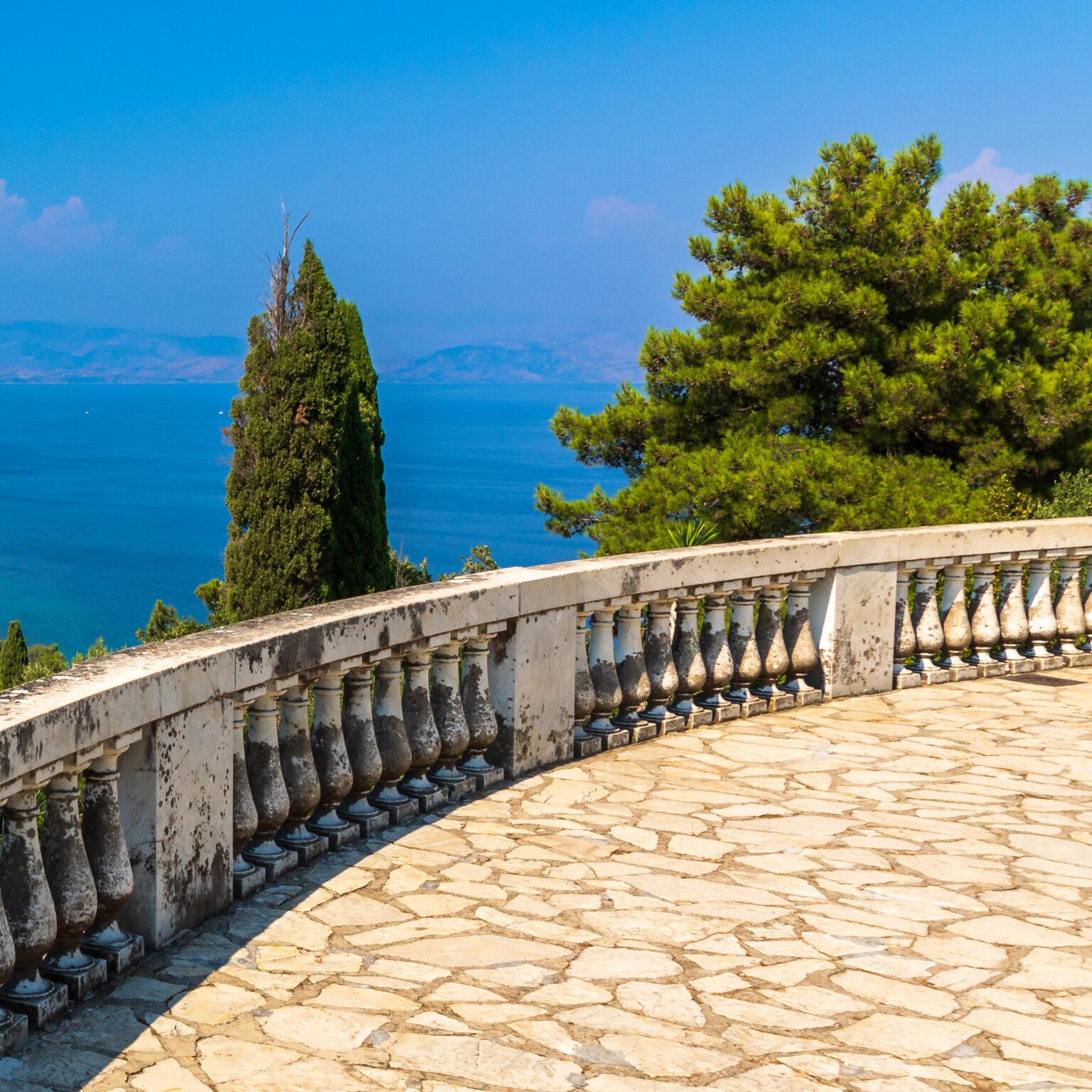
Mosaics & Decorative Paving
Roman, Byzantium, Moorish and Ottoman cultures have all used mosaics and decorative paving within the realms of their empires.
Colourful ceramics work well when coupled with courtyards, fountain and sundial surrounds, and wall mounted sconces and water spouts.
Consider using decorative paving circles or mosaics to create focal points and features on your garden terraces and patios.
The image shown is of the stunning Courtyard of Bahia Palace in Marrakesh, Morocco. This might be a bit ambitious for most, but we hope it will inspire you to introduce some decorative paving or mosaics elements into your Mediterranean garden.
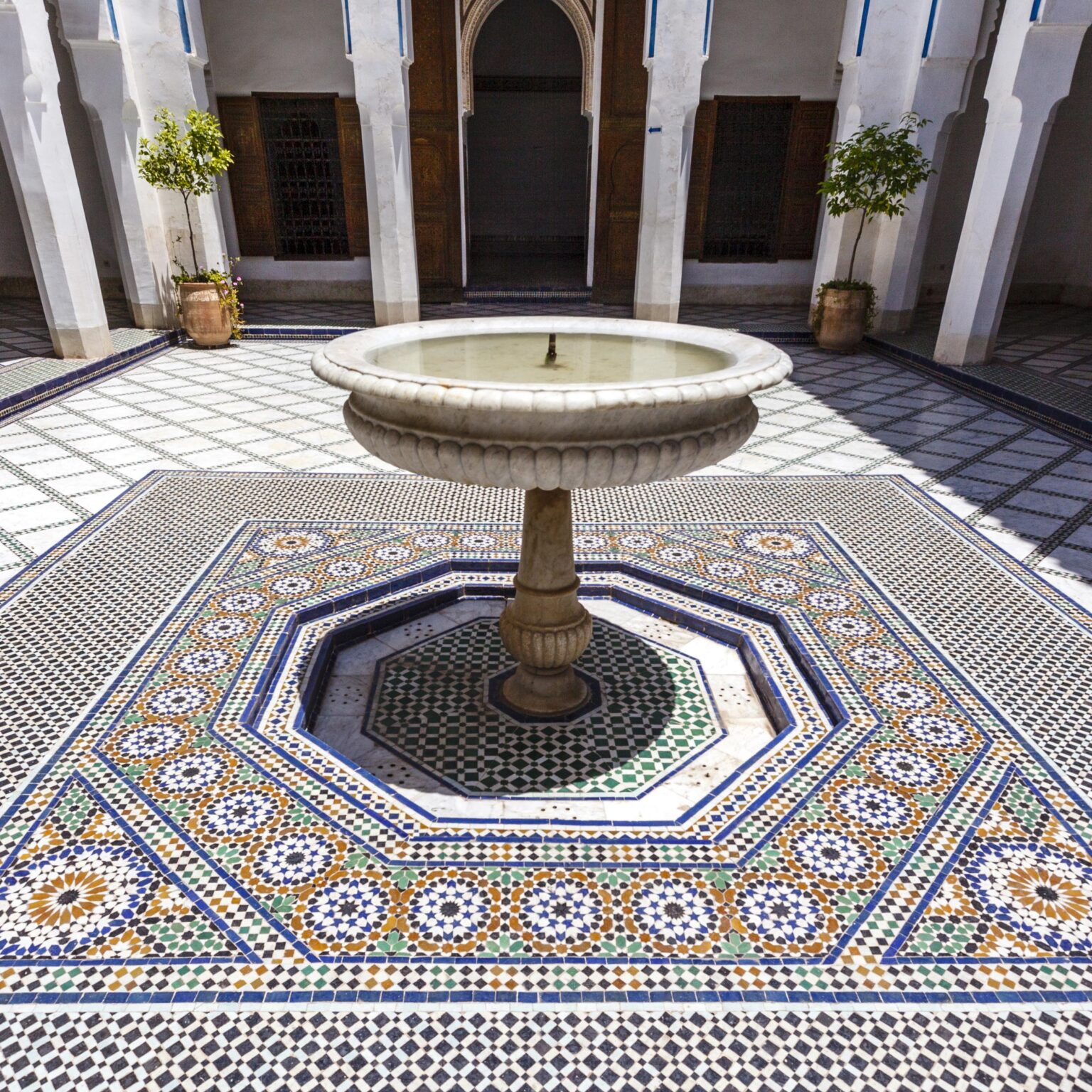
Outdoor Kitchens & Fixed Grills
Greek outdoor ovens and taverna grills are intrinsically Mediterranean in style, and will instantly set a tone.
They will also create a centre of gravity in your garden to which friends and family are drawn. The smells of baking bread, roasts and grilling fish, meat or veg are guaranteed to pull everyone in that direction.
So plan informal seating as well as dining areas adjacent to any outdoor ovens or grills you build in your garden to allow people to congregate and socialise.
The image shown is of a traditional outdoor Greek wood fired oven with shaded wooden dining table.
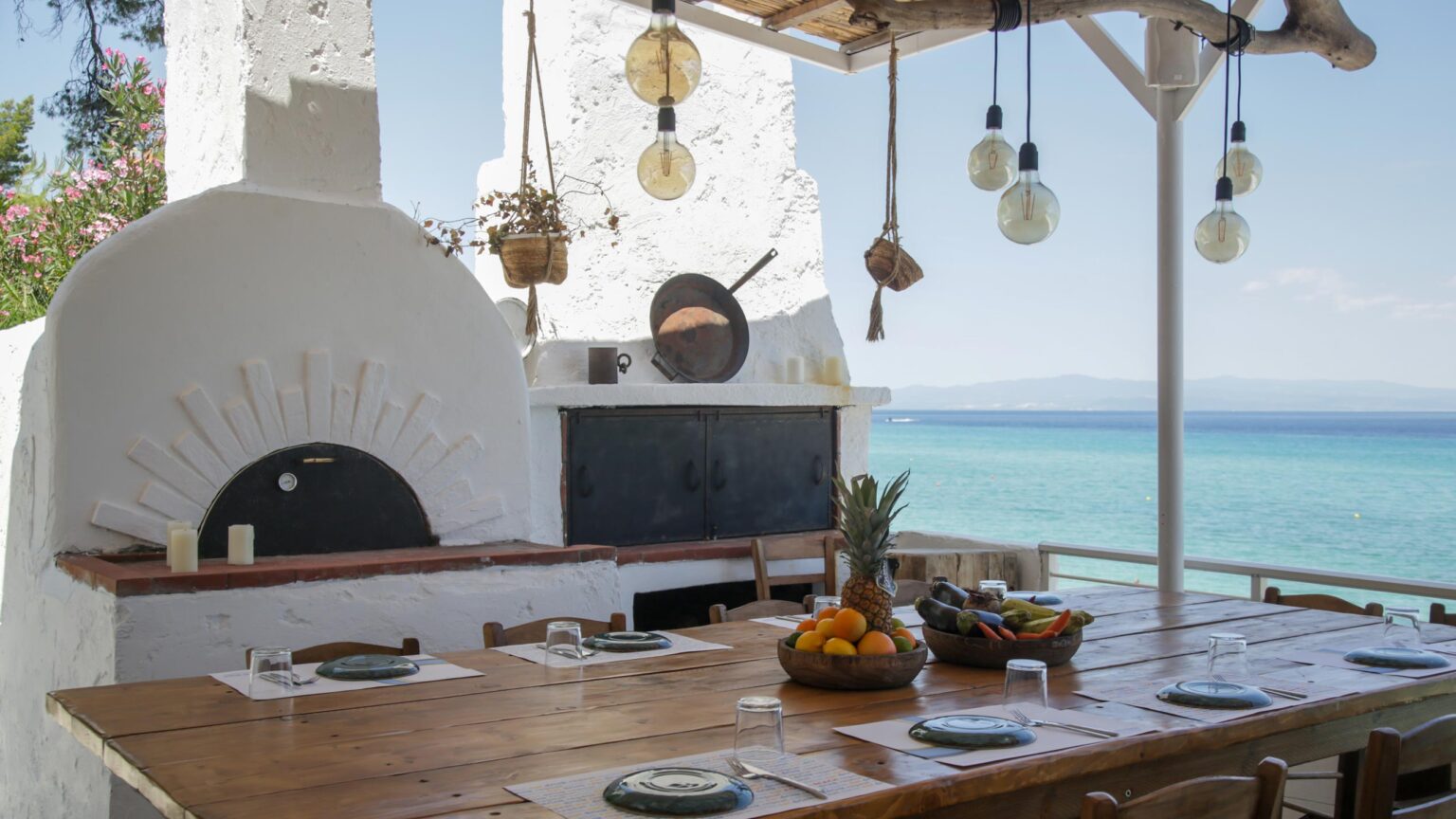
Garden Fireplaces
Having a warm focal point for sitting in the evenings (especially in the UK) is a great idea. This can be terracotta chiminea and braziers, or more permanent and fixed fireplaces in stone or rendered brick.
Recently, gas-powered and smokeless fires have become popular across the globe, and the villas of the Mediterranean are no exception. Being smokeless means everyone can gather around and draw closer, without getting stinging smoke in the face and a lung-full of acrid fumes!
This image shows a contemporary smokeless gas fire with glass surround and “glass”-coal infill, with a surrounding sofa on a villa patio.
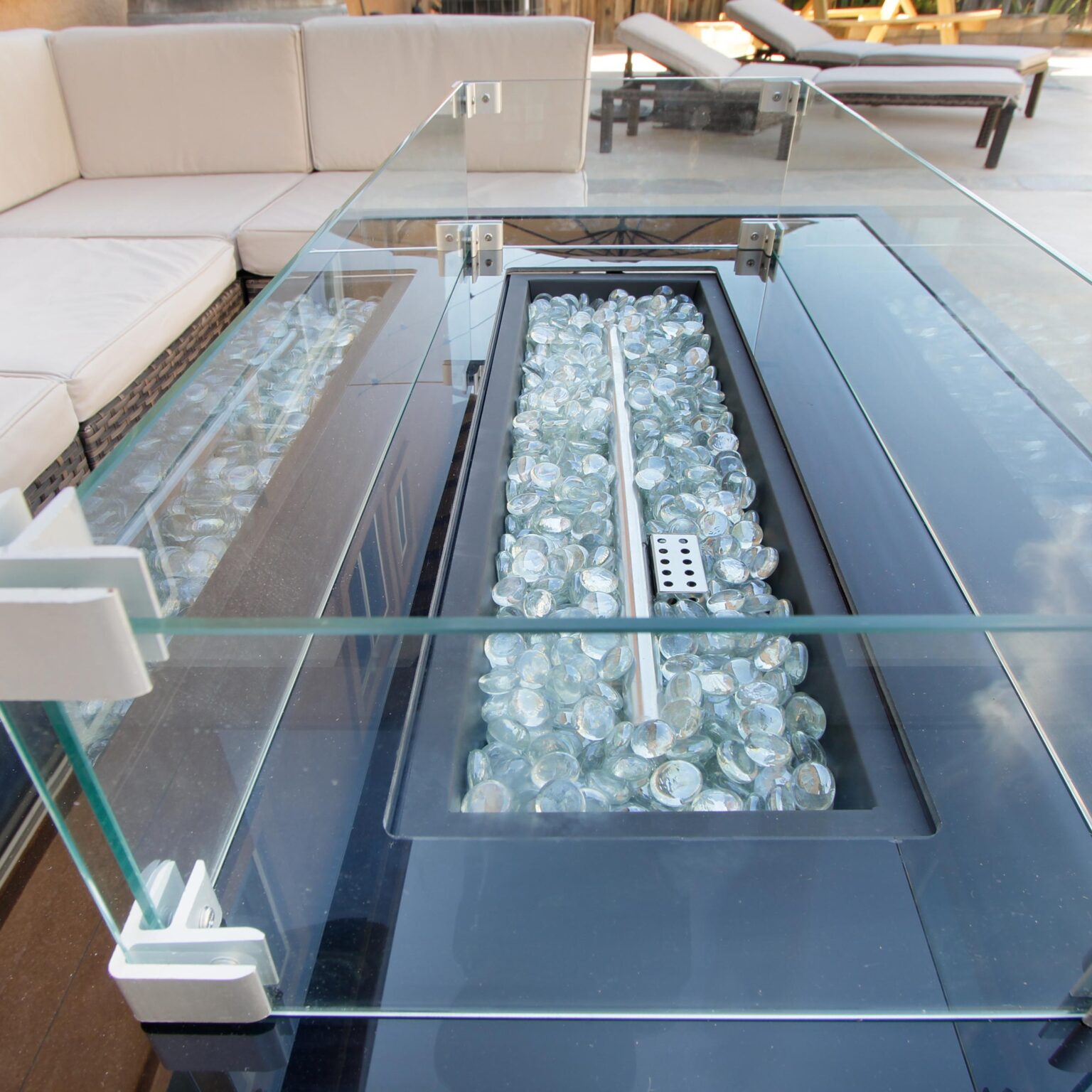
Grills, Barbecues & Firepits
If you are more keen on the bucolic Mediterranean vibe, then a traditional firepit and grill might be better suited.
Great for gathering around on colder evenings, and perfect for slow grilling (either directly and indirectly).
The image shown is of a Greek taverna fire pit with slow grilling rack of lamb on a spit.
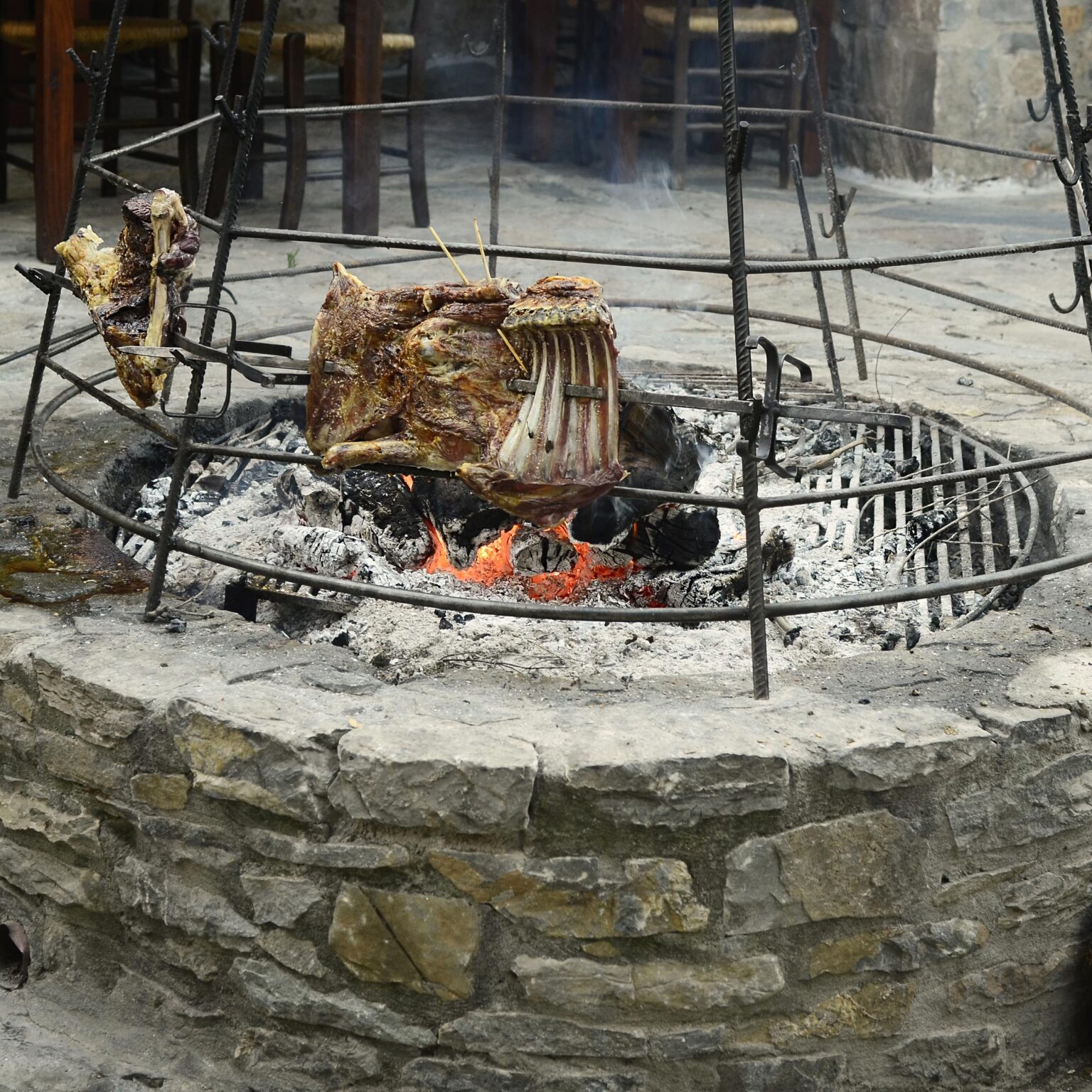
Seating Areas
For a Mediterranean garden seating, you might conjure up images of classic slatted folding bistro chairs or cast iron ones around a matching table. But let’s be honest, whilst these might look spot on for a Provence setting, they are not exactly the pinnacle of comfort.
The sofa and armchair are two of humanities’ greatest inventions! Comfy seating is one of the great joys of life, and especially so, when in the garden.
Outdoor furniture has come a long way in recent years, and now truly weather durable sofas and armchairs are possible with new exterior upholstery materials and fillers.
So make sure your patios and terraces have comfortable and cushioned seating, to allow you to properly relax in the garden (maybe with a nice book and something to drink, or with gathered friends for a good catch up).
In this image, we see sun-bleached hardwood two-seat sofas with thick outdoor cushions and a matching occasional table, situated adjacent to a stone wall. The patio is hone French limestone.
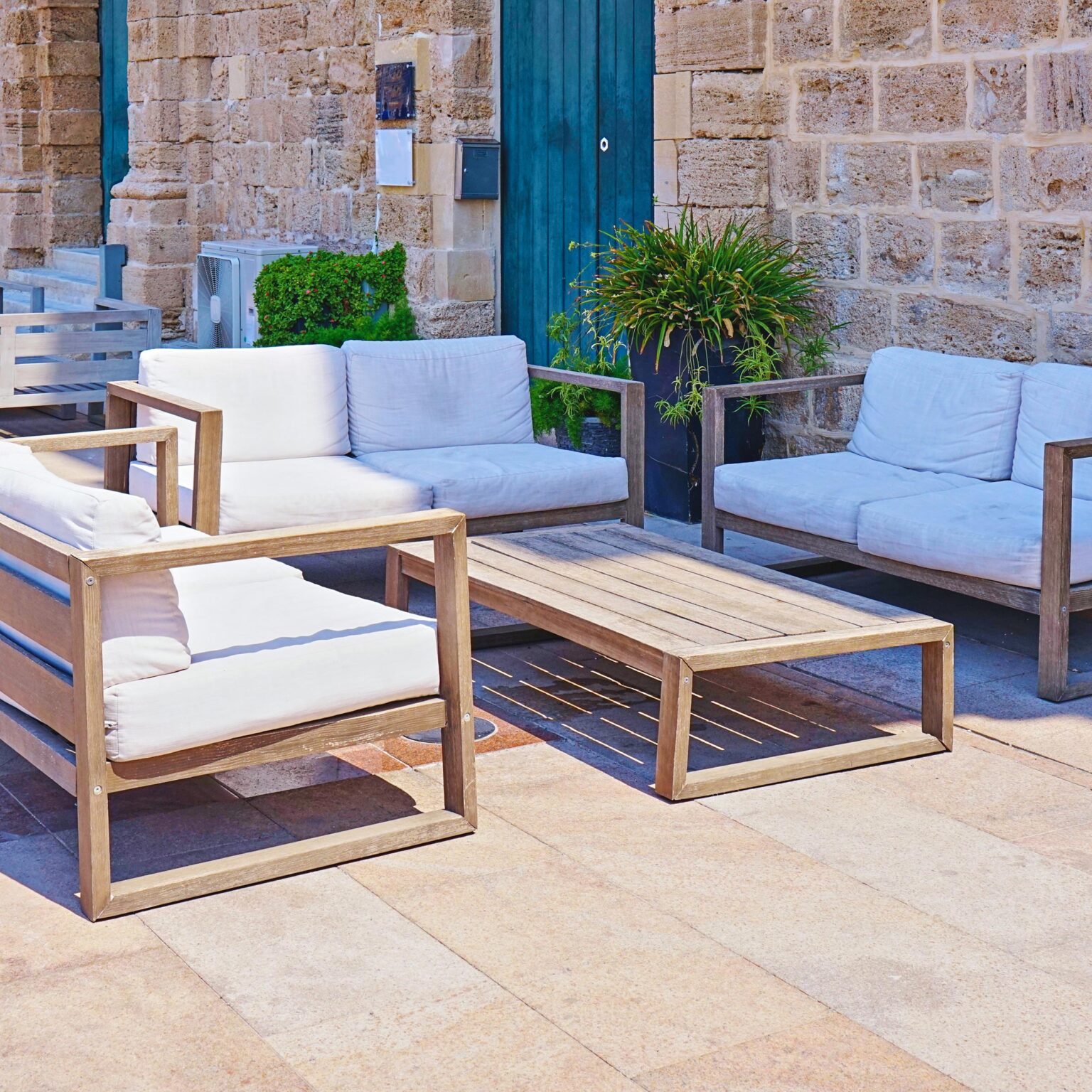
Snoozes & Napping
A little garden siesta in a hammock or day bed is magical and the purest form of relaxation.
So plan space in your garden that is tranquil and quieter, where you can sneak off to for a cheeky afternoon nap. Choose outdoor ready soft furnishing that can handle a bit of drizzle if you accidentally leave them out.
Moveable hammocks are ideal, as you can move them to follow the sun or chill out in the shade, and often they can be easily packed away for wintering.
Day beds are a bit decadent, but great fun to spend time in/on outdoors, with all the trappings and comfort of your bed. Sunday morning on the day bed with the newspapers and a coffee – magic!
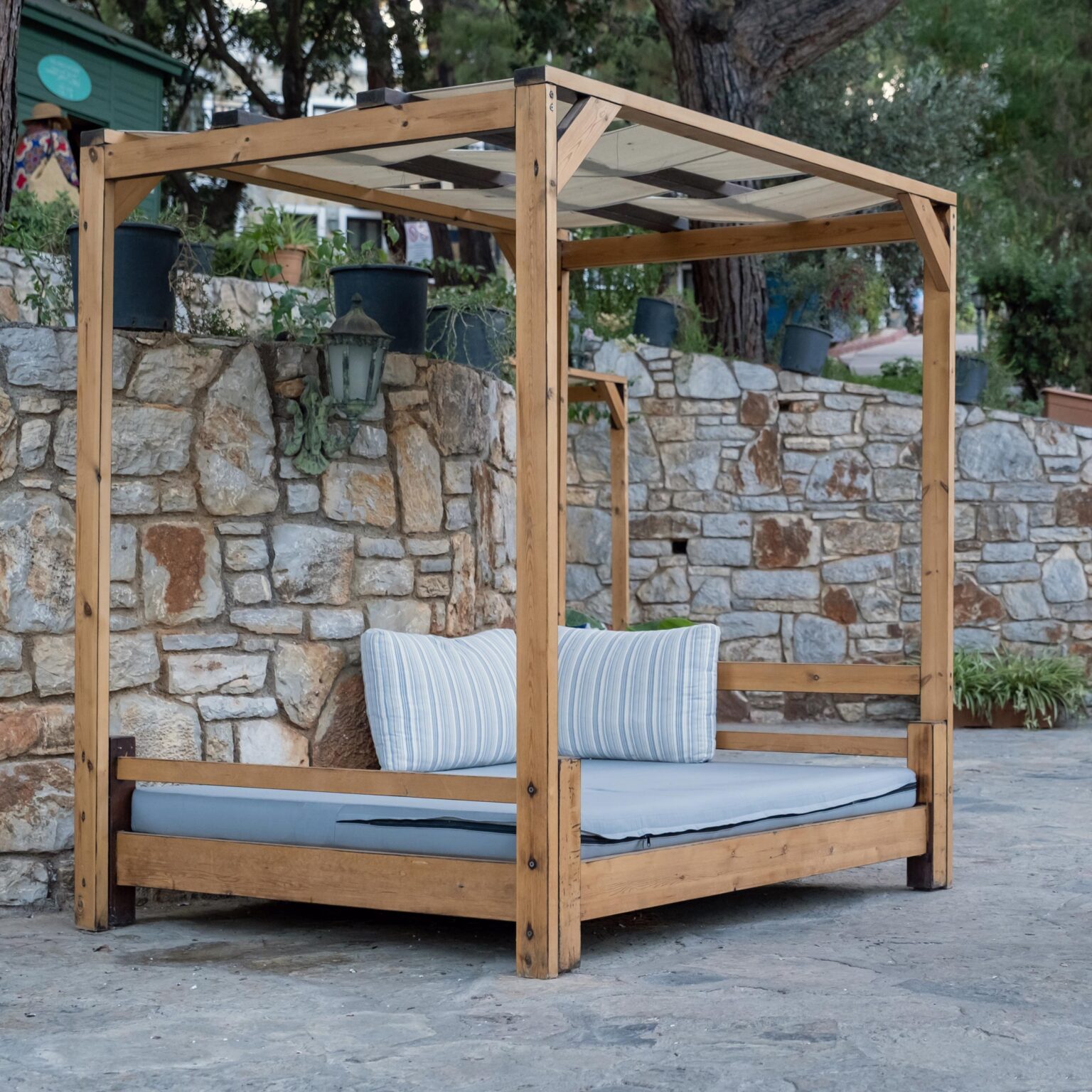
Alcoves, Nooks & Recesses
In Mediterranean garden design, the use of nooks and recesses adds charm, intimacy, and a sense of discovery to the outdoor space. These tucked-away corners provide opportunities for creative decorative elements, enhancing the overall aesthetic appeal of the garden.
To enhance the charm of your Mediterranean garden, use nooks and recesses to place decorative elements like water features, statues or objet d’art.
Nooks, with inset fountains or small ponds, can incorporate the sound of trickling water to the garden, adding a soothing ambience, creating a tranquil atmosphere. Additionally, strategically placed sculptures, urns, or pottery can contribute to the Mediterranean aesthetic, infusing the nooks with a sense of history and culture.
Overall, the use of nooks and recesses in Mediterranean garden design allows for the creation of enchanting, secluded spaces within the larger landscape. By incorporating lush foliage, masonry structures, and carefully chosen decorative elements, these nooks become captivating focal points that invite exploration and provide moments of tranquillity in the midst of nature’s beauty.
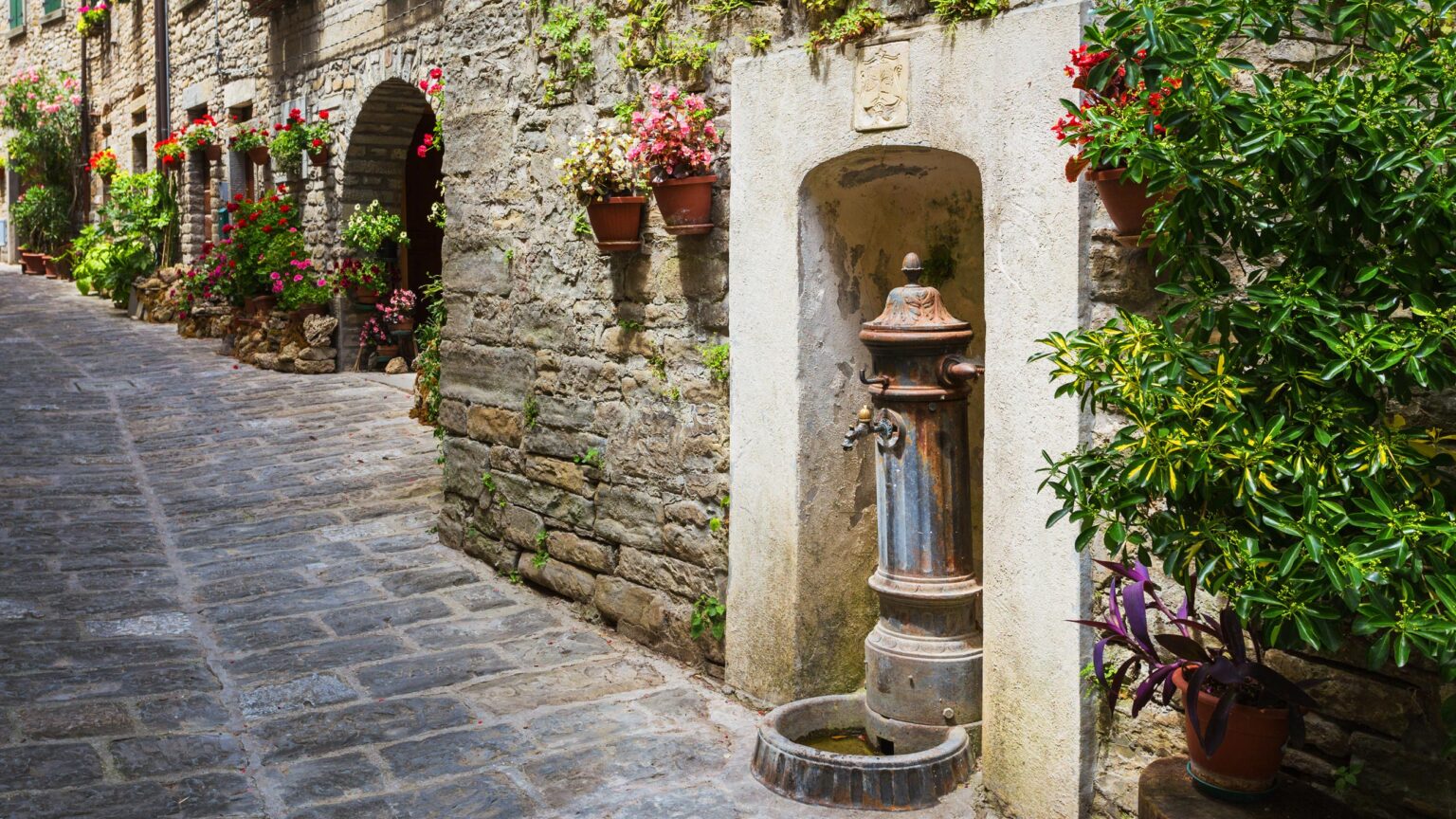
Benches & Viewing Spots
In Mediterranean garden design, benches serve as functional and aesthetic elements that seamlessly blend with the surrounding environment. A masonry bench will give you a Mediterranean feel but with a sense of permanence and history, as these benches are characterized by their durability, timeless appeal, and ability to withstand the elements.
One of the distinctive features of Mediterranean garden design is the variety of architectural styles represented. Each style brings its own unique characteristics to masonry benches. For instance, in Tuscan gardens, you may find rustic and weathered stone benches that evoke a sense of old-world charm. These benches often have rough edges and a worn appearance, perfectly complementing the rustic ambiance.
In Spanish or Moroccan-inspired gardens, masonry benches may feature colourful ceramic tile accents or intricate mosaic patterns. These benches add a vibrant and decorative touch to the space, reflecting the rich cultural heritage of the Mediterranean region.
When it comes to materials, various options can be used to construct masonry benches. Concrete benches provide a versatile and cost-effective choice, allowing for different shapes and finishes. Brick benches, on the other hand, offer a warm and inviting aesthetic.
Stone benches, such as those made from limestone or granite, are known for their natural beauty and longevity. These benches can be carved or sculpted to create intricate designs, adding an element of elegance to the garden.
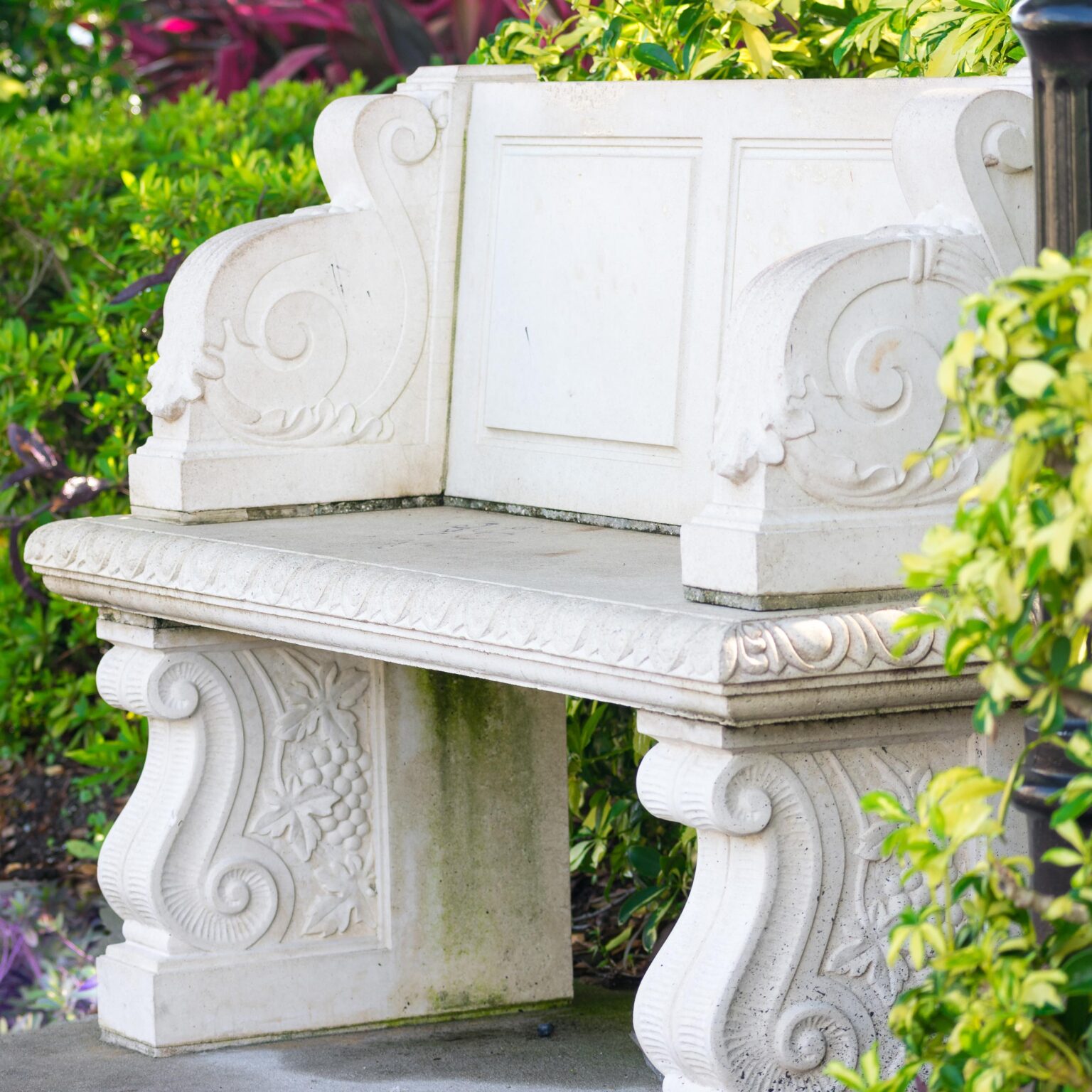
Braziers, Fire Urns & Kylix
Roman and Greek style metal braziers, fire urns and kylix (cups) are captivating additions to Mediterranean garden design, evoking a sense of ancient grandeur and adding warmth and ambiance to outdoor spaces. These architectural features can be strategically placed throughout the garden to create focal points and enhance the overall aesthetic.
One popular placement for metal braziers and fire urns is along pathways or at the entrance of the garden.
Another architectural feature where these metal accents can be incorporated is within courtyards or patio areas. Flanking the entrance to a courtyard with tall fire urns creates a dramatic effect, while smaller braziers can be positioned on low walls or pedestals to provide additional visual interest.
In larger gardens, metal braziers and fire urns can be strategically placed near water features, such as pools or fountains. The juxtaposition of fire and water adds a captivating contrast and heightens the sensory experience of the garden.
Whether placed along pathways, at entrances, within courtyards, or near water features, Roman and Greek style metal braziers and fire urns create an alluring ambiance in Mediterranean gardens, infusing the space with the mystique and romance of ancient civilizations.
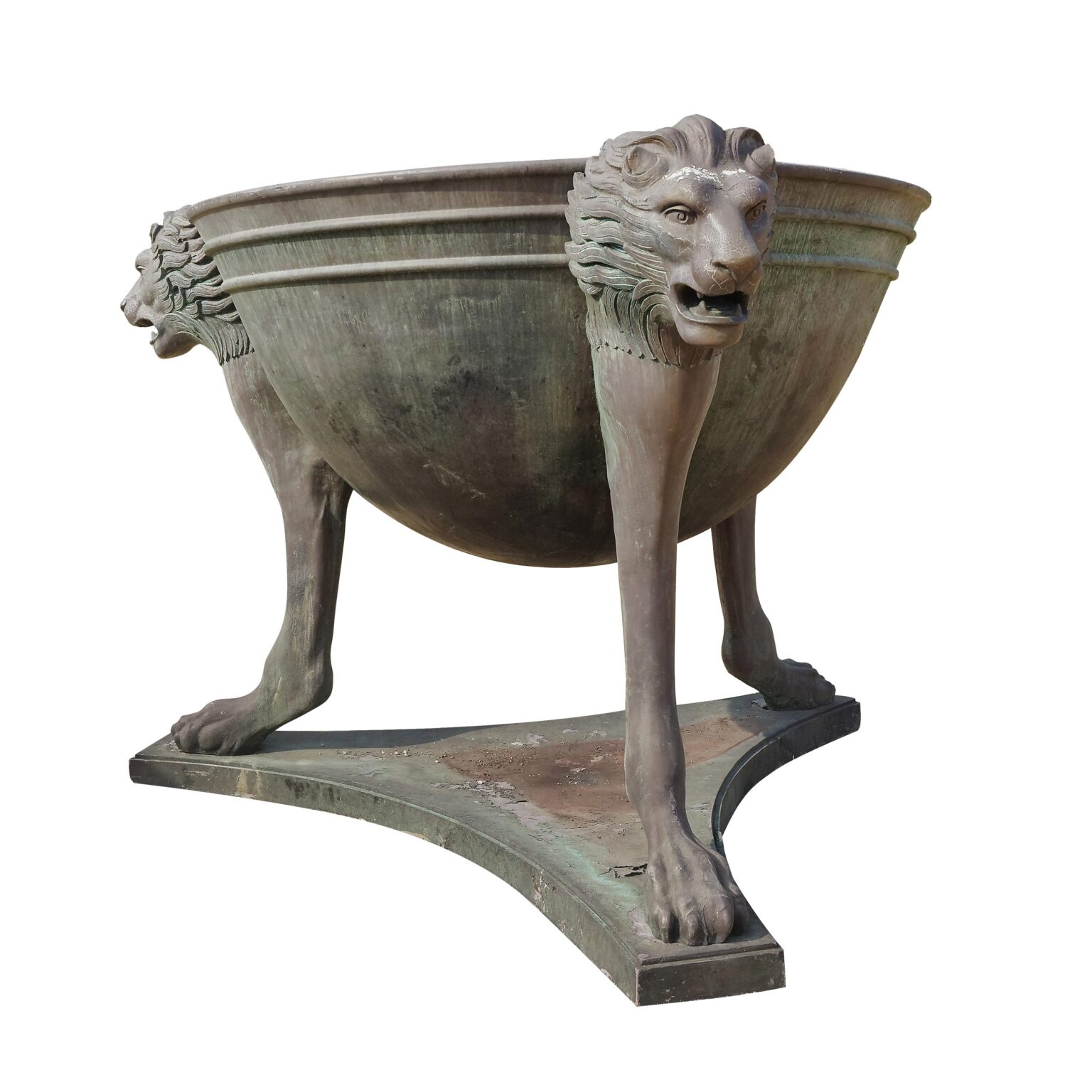
Standalone balustrades
Standalone balustrades and similar architectural features serve as eye-catching decorative focal points in Mediterranean garden design, adding elegance and a sense of grandeur to outdoor spaces. These ornamental structures can be strategically placed throughout the garden to create visual interest and delineate specific areas.
One popular placement for standalone balustrades is along pathways. By lining the edges with these intricate architectural elements, the garden gains a sense of sophistication and a clear delineation of spaces. Additionally, balustrades can be used as dividers or barriers, creating a sense of privacy or defining different functional areas within the garden, such as seating areas or dining spaces.
Another suitable location for standalone balustrades is around garden features, such as fountains, statues, or decorative plant beds. By encircling these elements, balustrades draw attention and highlight their beauty, turning them into striking focal points.
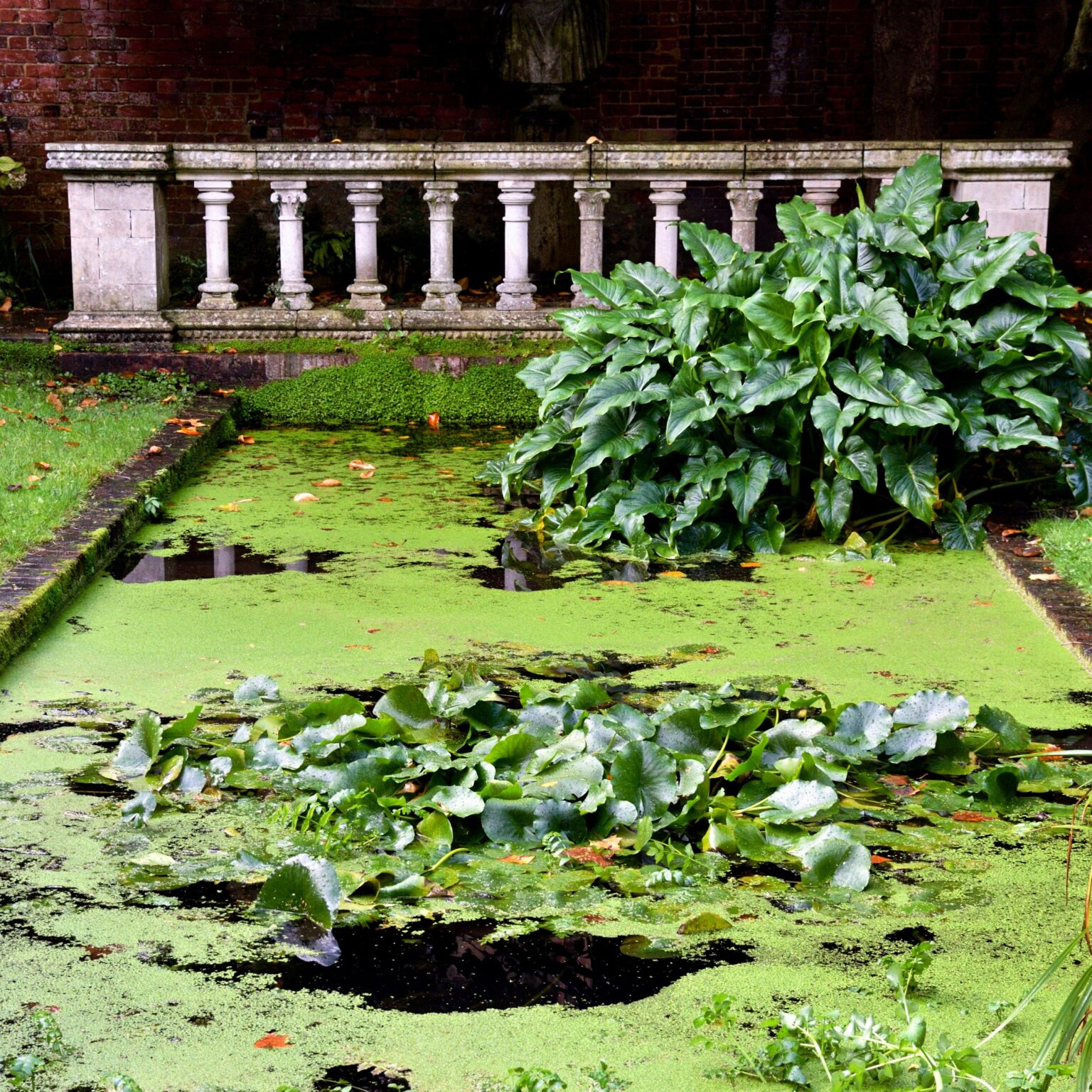
Objet D’art
Mediterranean gardens are known for their captivating blend of natural beauty and cultural richness, often enhanced by the inclusion of objet d’art. These artistic elements are drawn from various Mediterranean cultures, reflecting their diverse heritage. Common types of artwork found in these gardens.
Ceramic and Pottery – Mediterranean gardens feature a wide array of ceramic and pottery pieces, including hand-painted tiles, terracotta pots, and decorative plates. These artworks often showcase vibrant colours and intricate designs inspired by Moorish, Spanish, Italian, or Greek traditions.
Sculptures – Classical and mythological sculptures, reminiscent of ancient Greek and Roman cultures, are popular additions to Mediterranean gardens. These sculptures can portray gods, goddesses, and other legendary figures, adding a touch of timeless elegance and storytelling to the outdoor space.
Ironwork and Metal Art: Decorative ironwork, such as gates, trellises, and lanterns, draw inspiration from Moorish, Spanish, and Moroccan influences. These intricate metalwork designs add an element of craftsmanship and elegance to Mediterranean gardens.
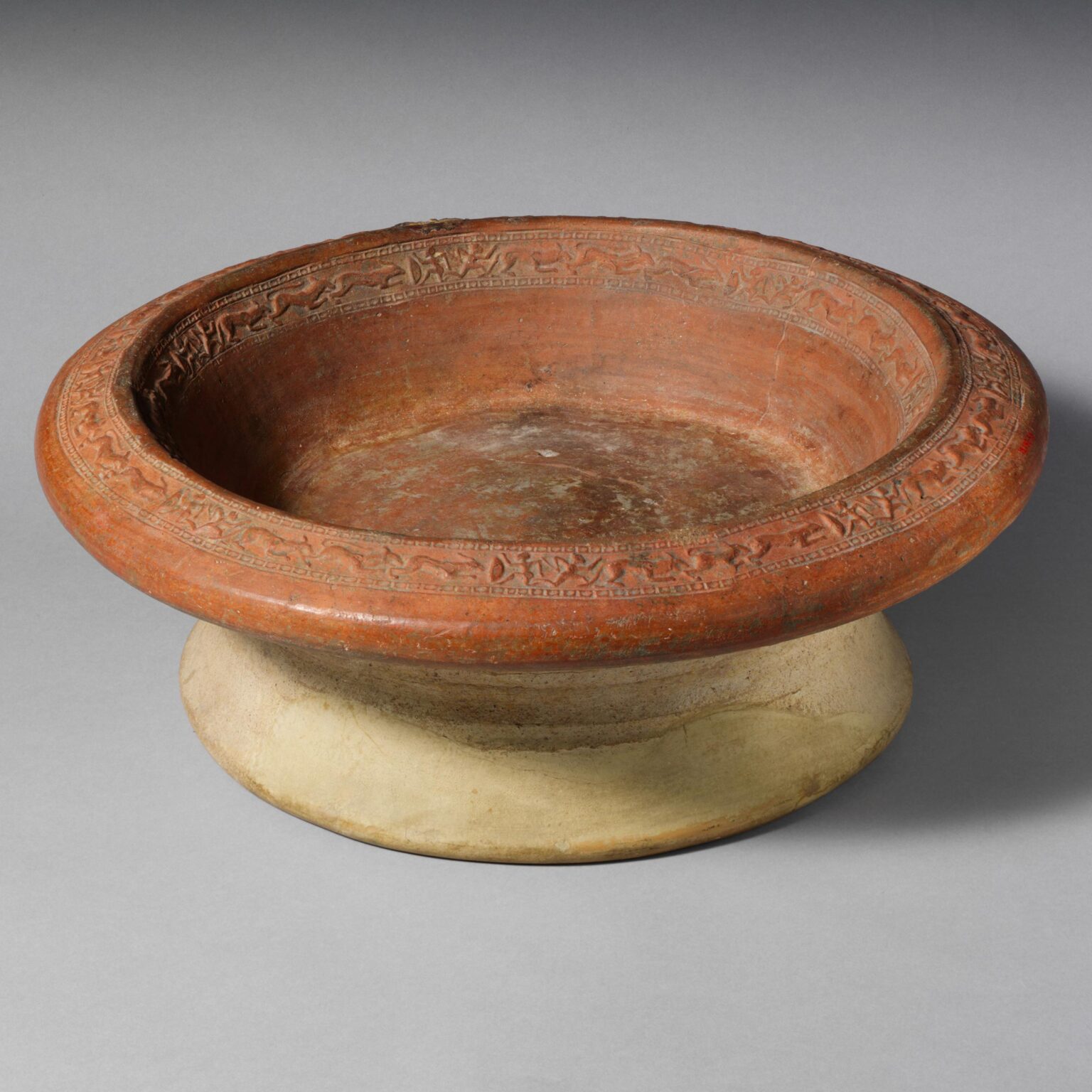
Statues
Statues and sculptures hold significant prominence in Mediterranean garden design, enriching the landscape with artistic expression and historical references. These captivating elements can be strategically placed throughout the garden to create focal points and evoke a sense of intrigue and beauty.
One common placement for statues and sculptures is in open spaces such as lawns or central areas. Here, they can serve as the centrepiece of the garden, commanding attention and inspiring contemplation. They can also be positioned at the end of paths or in garden alcoves, creating a sense of discovery and surprise.
In terms of materials, Mediterranean garden design often features statues and sculptures crafted from stone, such as marble or limestone. These durable materials not only withstand the elements but also lend a timeless elegance to the garden. Terracotta and bronze are also popular choices, adding warmth and richness to the outdoor space.
Historically, Mediterranean gardens often feature classical and mythological figures, inspired by Greek and Roman civilizations. These sculptures depict gods, goddesses, muses, and heroic figures, capturing the essence of ancient mythology. Additionally, wildlife sculptures, such as lions or birds, and abstract or contemporary pieces can also be found, providing a diverse range of artistic expressions in the garden.

Columns
One of the ways to utilize standalone classical columns is by placing them at the entrance or gate of the garden. They serve as majestic gateways, welcoming visitors and setting the tone for the garden’s ambiance. Alternatively, columns can be positioned as standalone focal points within the garden, drawing the eye and adding vertical interest to the landscape.
Entablatures, which consist of horizontal elements like architraves, friezes, and cornices, are placed atop columns. They add a sense of architectural refinement and provide a platform for decorative motifs or sculptures. Entablatures can be situated as decorative accents, sited near water features, or as part of a larger architectural structure, such as a pergola, gazebo or folly.
By incorporating standalone classical columns and entablatures in strategic locations within the garden, a Mediterranean-inspired space is elevated with a sense of classical beauty and sophistication, creating a captivating environment that celebrates the timeless allure of ancient architectural traditions.
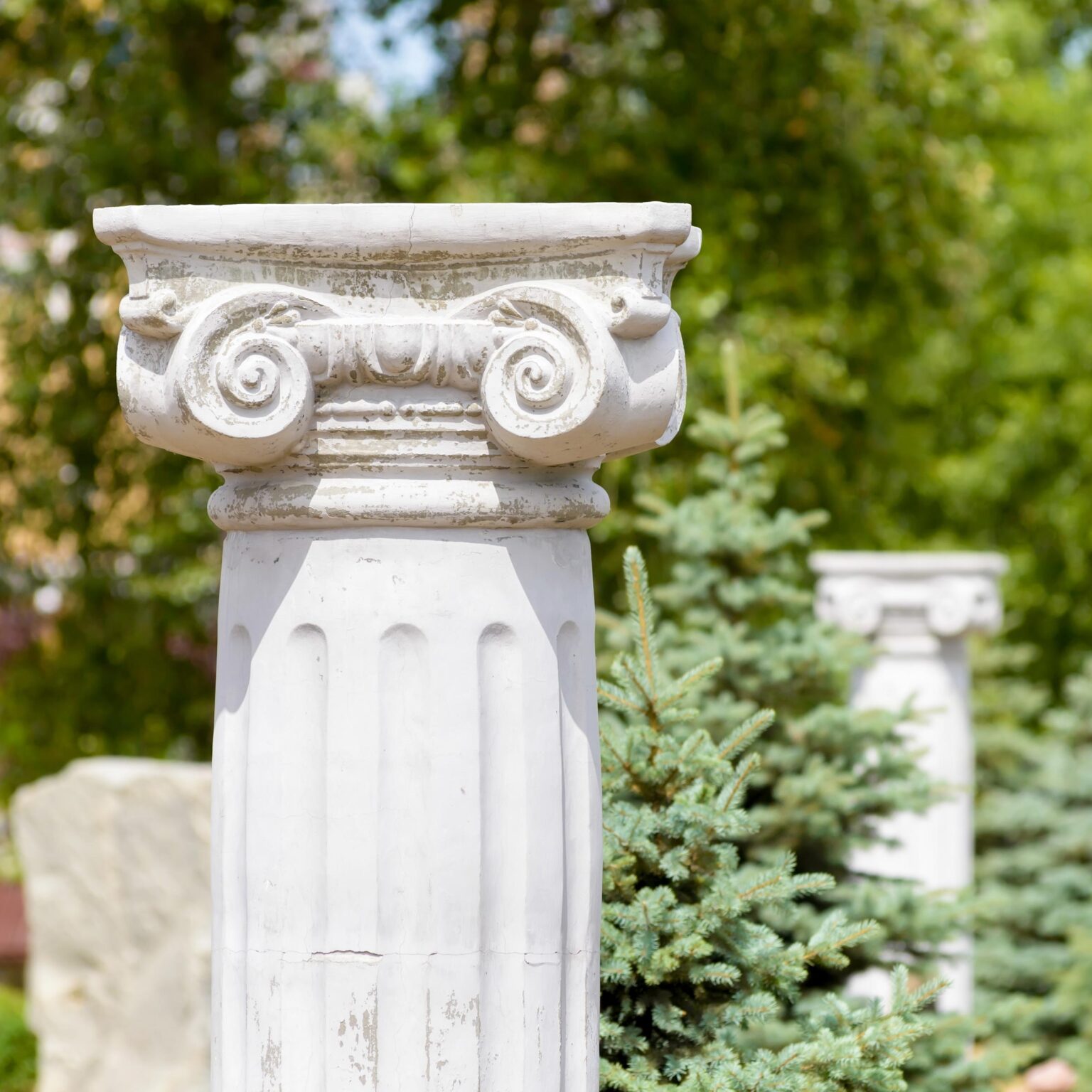
Gate Posts & Piers
Gate posts and piers play a significant role in Mediterranean garden design, offering a distinguished entry point while harmonizing with other decorative elements. When planning a Mediterranean garden, incorporating gate columns and piers alongside urns, braziers, and statues can create a cohesive and visually striking design.
Gate columns serve as pillars that frame the entrance, lending an architectural presence to the garden. These columns can be adorned with decorative motifs or climbing vines, enhancing their aesthetic appeal. Flanking the entrance with piers adds symmetry and solidity, grounding the design and providing a sense of balance.
To further enhance the grandeur of the entrance, urns can be placed atop the gate columns or piers. These urns can overflow with vibrant flowers or trailing vines, adding a burst of color and a touch of nature to the architectural elements. Additionally, braziers can be strategically placed on the columns or piers, infusing the entrance with a warm glow and a hint of mystique.
Incorporating statues near the gate columns and piers adds an element of artistic expression and storytelling. Classical or mythological figures can be placed on pedestals or nestled within the garden, creating focal points that intrigue and captivate visitors.
By integrating gate columns, piers, urns, braziers, and statues, a Mediterranean garden is transformed into a captivating and harmonious space. The combination of architectural elements and decorative accents evokes a sense of grandeur and invites exploration, immersing visitors in the timeless allure of Mediterranean aesthetics.
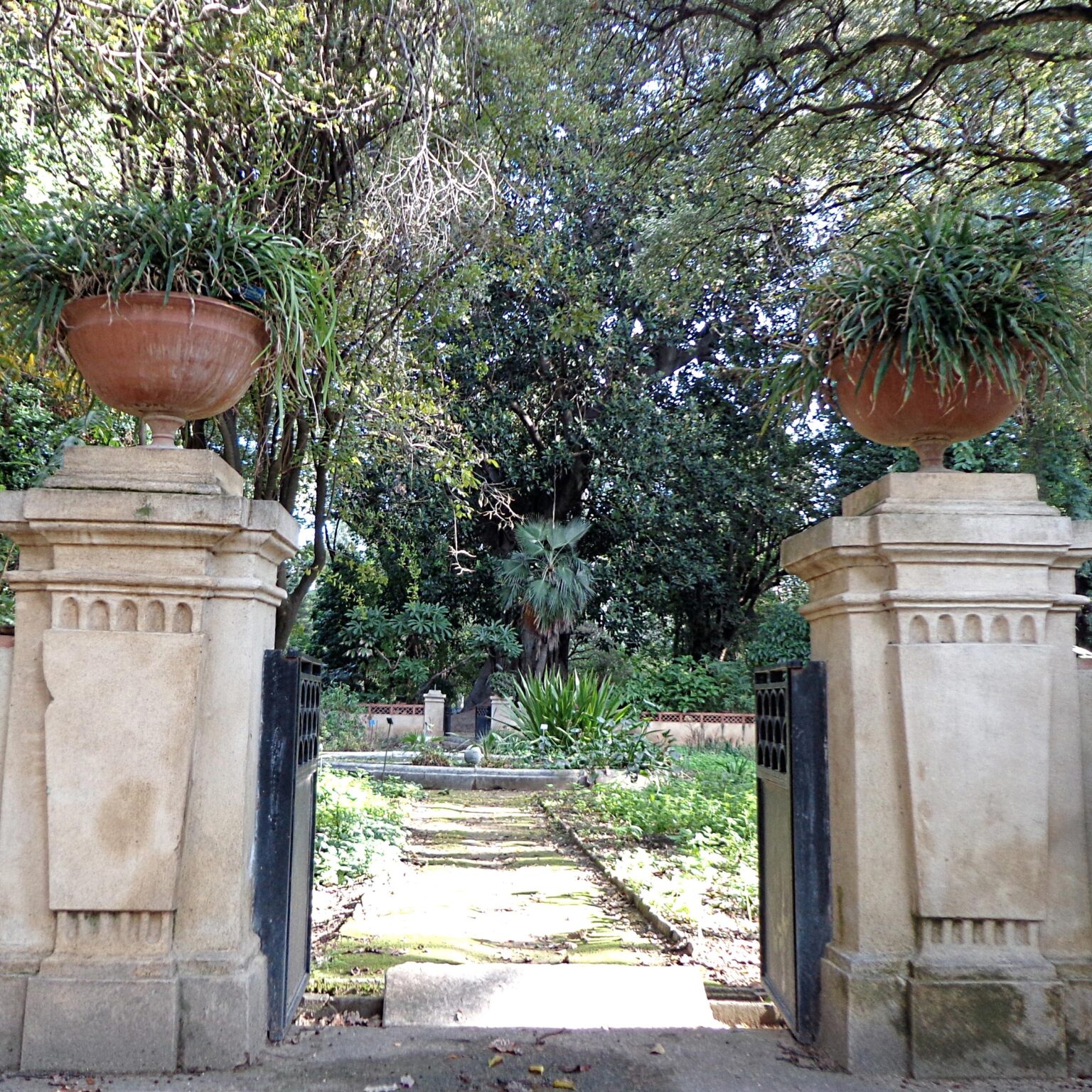
Planters & Pots
Different types of planters are associated with various architectural and garden styles within the Mediterranean region.
In Tuscan gardens, terracotta planters are popular choices, reflecting the rustic charm and earthy tones of the landscape. These planters often feature a weathered patina and are filled with colourful blooms or fragrant herbs, creating a warm and inviting atmosphere.
In Moroccan-inspired gardens, vibrant ceramic or mosaic-adorned planters take centre stage. These intricately designed containers bring a touch of exoticism and elegance, mirroring the vibrant colour palette and geometric patterns prevalent in Moroccan architecture.
In Spanish or Andalusian gardens, wrought iron or clay pots are commonly used. The distinctive shapes and ornate detailing of these planters align with the region’s Moorish influences, adding a sense of sophistication and cultural richness.
Mediterranean gardens also embrace modern or contemporary styles, where sleek and minimalist planters made of materials like concrete or corten (weathered) steel are utilized. These planters provide a clean and structured look, complementing the architectural lines and modern design elements.
Whether traditional or contemporary, planters and pots in Mediterranean gardens play a crucial role in defining the overall style and character of the space. They offer opportunities to showcase various architectural and garden styles, adding a personalized touch and enhancing the beauty of the surrounding flora.
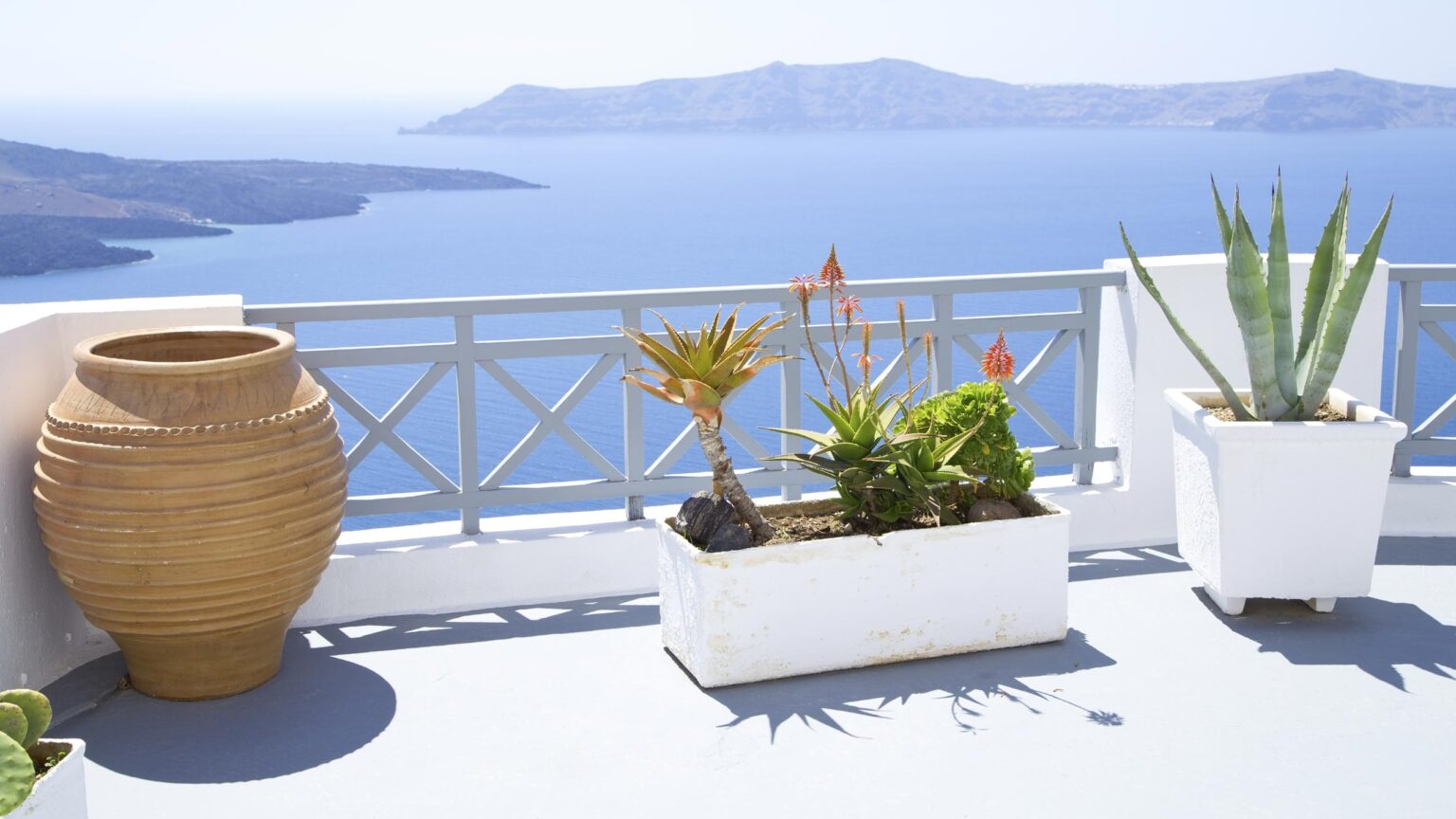
Terracotta Urns, Pots & Jars
Terracotta containers and vessels have been used across the Mediterranean for thousands of years for trade, commerce and domestic use. Consequently, they have been used widely across the Mediterranean in gardens as planters, decorative adornments and as centrepieces and features.
Tuscan Jars: These rustic terracotta jars have a round, bulbous body with a narrow neck and often feature a weathered and aged appearance. They exude a timeless charm and are typically used as focal points in Mediterranean gardens.
Cretan Urns: Originating from Crete, these urns have a wide body and a narrow neck. They often showcase intricate patterns and designs, ranging from simple to elaborate, and are characterized by their elegant and artistic aesthetics.
Andalusian Pots: Inspired by the region of Andalusia in Spain, these pots feature a classic Mediterranean design. They typically have a rounded shape with decorative patterns, such as geometric or floral motifs, adding a touch of sophistication and cultural heritage to the garden.
Etruscan Amphorae: Reflecting ancient Etruscan pottery, these amphorae have an elongated and graceful shape. They usually possess two handles on the sides and are adorned with intricate painted designs, reminiscent of classical art and history.
Greek Kylix: The Greek kylix (cup) is a shallow terracotta bowl with two handles. It often showcases beautifully painted scenes or patterns on the exterior, capturing the essence of ancient Greek aesthetics and storytelling.
Moroccan Clay Pots: With their distinctive reddish-brown hue, Moroccan clay pots exhibit a traditional North African design. They often have a rounded shape, sometimes with decorative etchings or geometric patterns, and convey a sense of exoticism and warmth.
Roman Terracotta Pithoi: These large and robust terracotta containers originate from ancient Rome. They have a cylindrical shape with sturdy handles and are commonly used for storage or as decorative elements in Mediterranean gardens, evoking a sense of history and grandeur.
Phoenician Amphorae: Inspired by the ancient Phoenician civilization, these amphorae boast an elegant and elongated silhouette. They feature decorative elements such as painted motifs or embossed patterns, reminiscent of the maritime heritage of the Mediterranean.
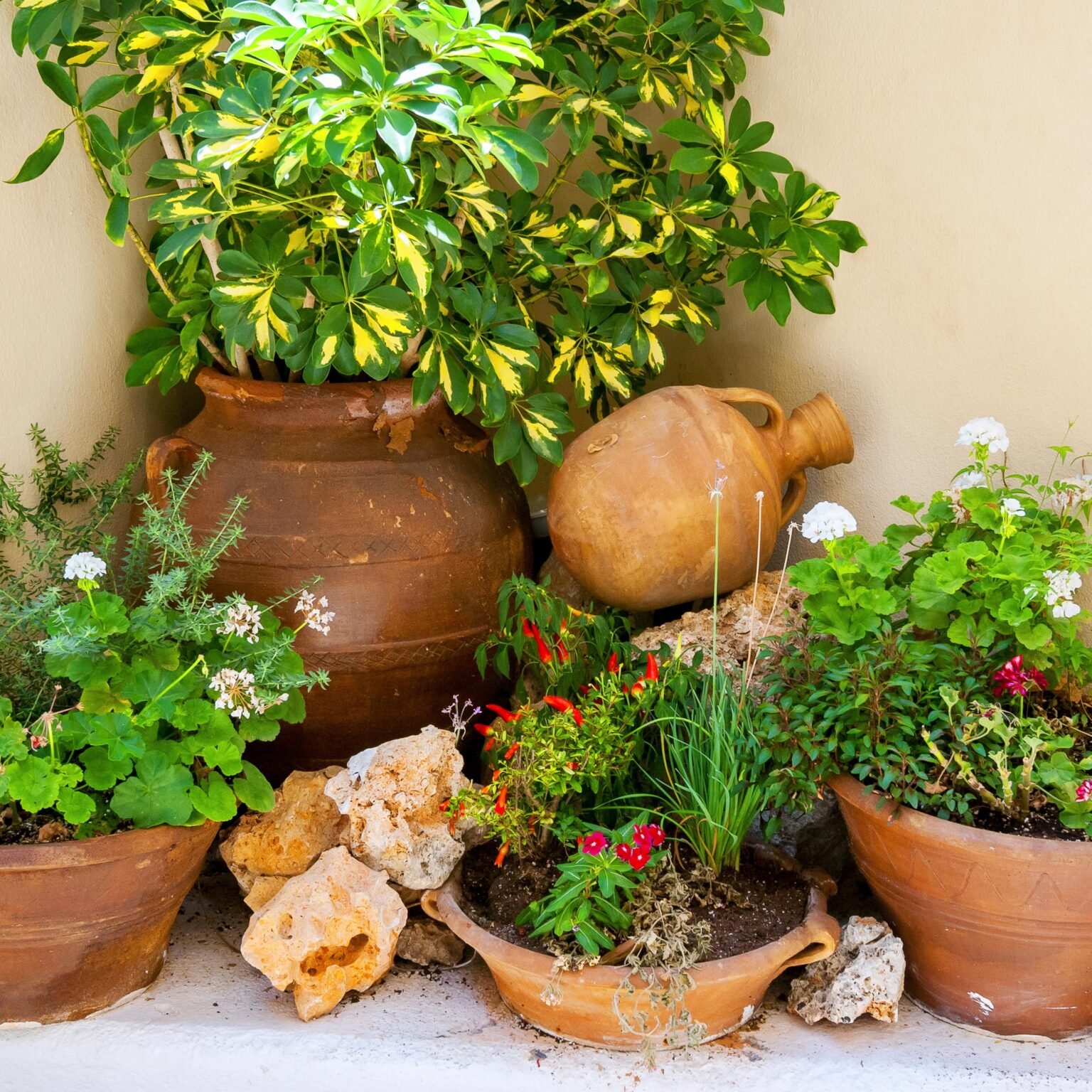
Colourful Tiles and Mosaics
Mediterranean gardens are renowned for their vibrant and visually captivating designs, often incorporating the use of mosaic and colourful decorative tiles. Inspired by ancient Roman and Byzantine traditions, mosaic art brings a sense of artistry and intricate detailing to these outdoor spaces.
Mosaic tiles are skilfully arranged to create stunning patterns, depicting scenes from nature, mythology, or geometric motifs. The use of colourful decorative tiles further enhances the aesthetic appeal of Mediterranean gardens, adding bursts of vibrant hues and creating a lively atmosphere. Whether used to adorn pathways, walls, or water features, these mosaic and colourful tiles infuse the garden with a sense of craftsmanship and cultural heritage. They serve as a testament to the region’s rich history and artistic traditions, transforming Mediterranean gardens into captivating works of art.
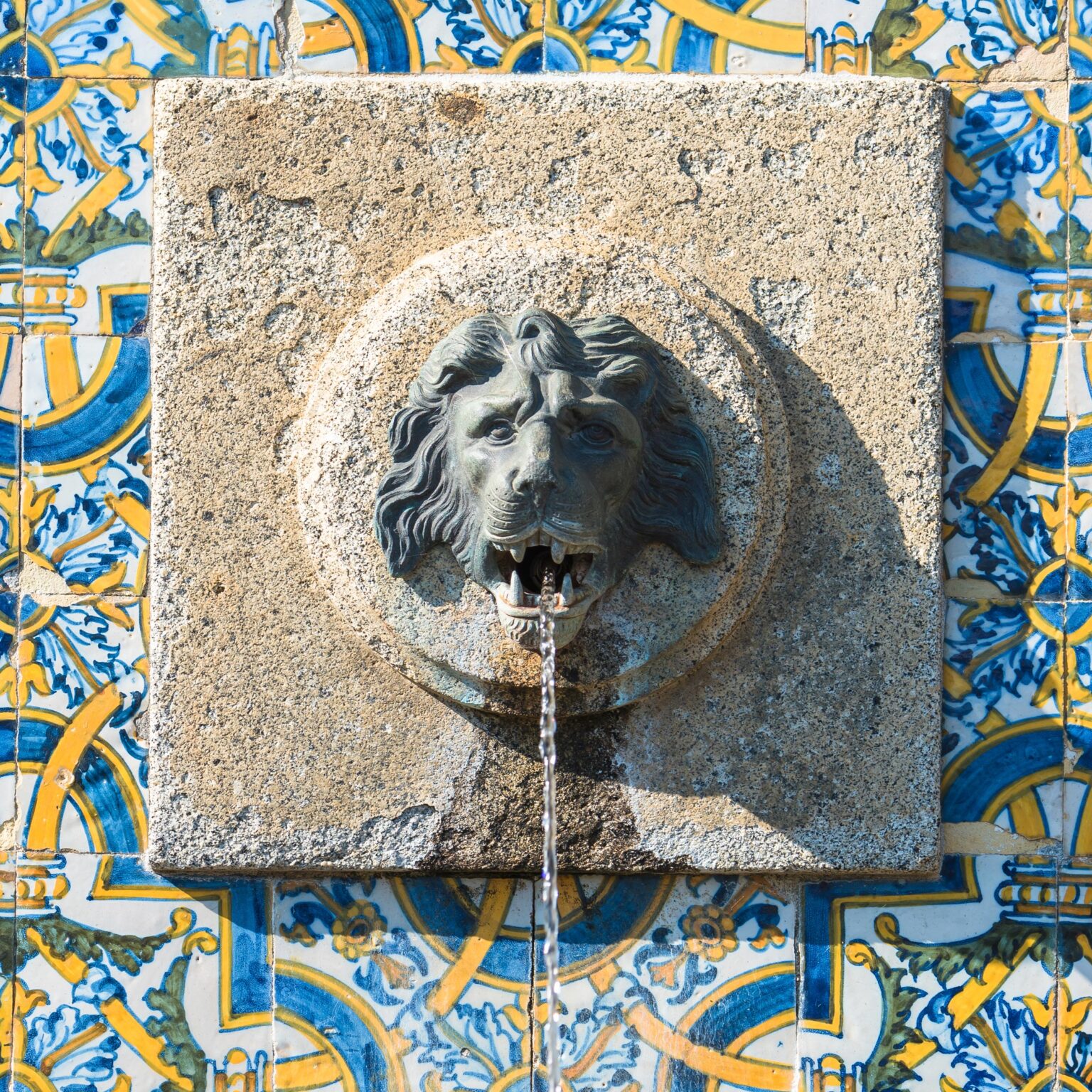
Letting Your Mediterranean Garden Do Its Thing
Armed with some basic understanding of the features and components that make up a Mediterranean garden, and an appreciation of the potential groundwork involved too, you will be ready to start designing and planning your garden.
One of the things about designing a garden with real character, is that to a degree, there needs to be some amount of both luck and randomness (synchronicity and happenstance if you will), that means you create something that is not entirely of your making, and that it has an organic nature of its own that shines through.
So, although you know what the ingredients should be, and how they should be put together, do allow things to go slightly off script at times! It sounds a bit woo-woo, but often the magic in a garden, is not exactly what you’ve initially built and planted, but what it shows you over time.
This is a great example of some of the key elements of Mediterranean coastal styling. Whitewash walls contrasting with vividly painted turquoise doors, window surrounds and shutters and terracotta pots. Shade is provided by a mature Bougainvillea tree.
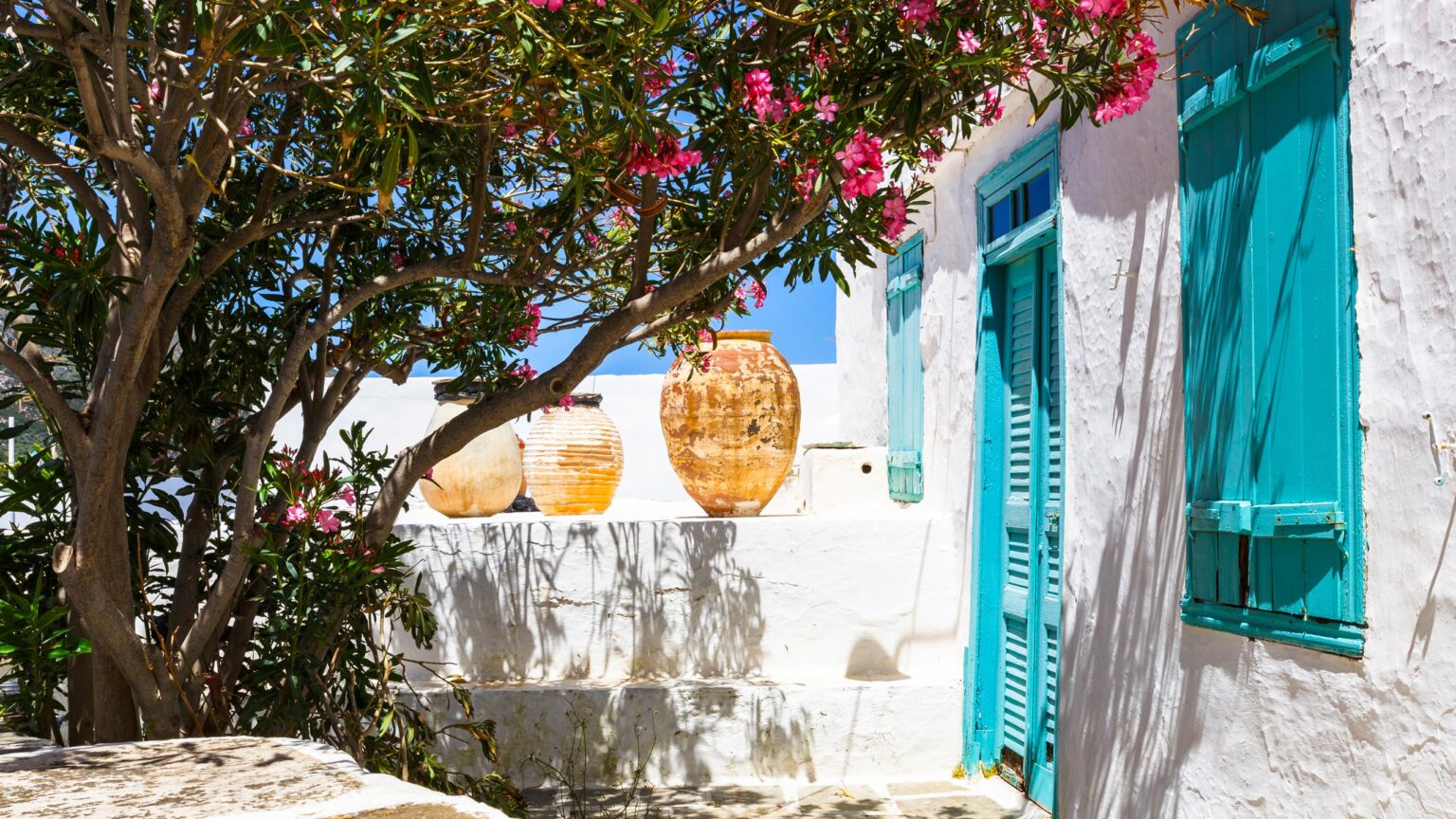
A weather golden/cream limestone well with ironwork pulley and frame has oodles of character. Coupled with the rough-hewn stone retaining wall and property, and the time-worn paving, wooden planters and wrought-iron bench and plough, and you have a Mediterranean bucolic idyll.
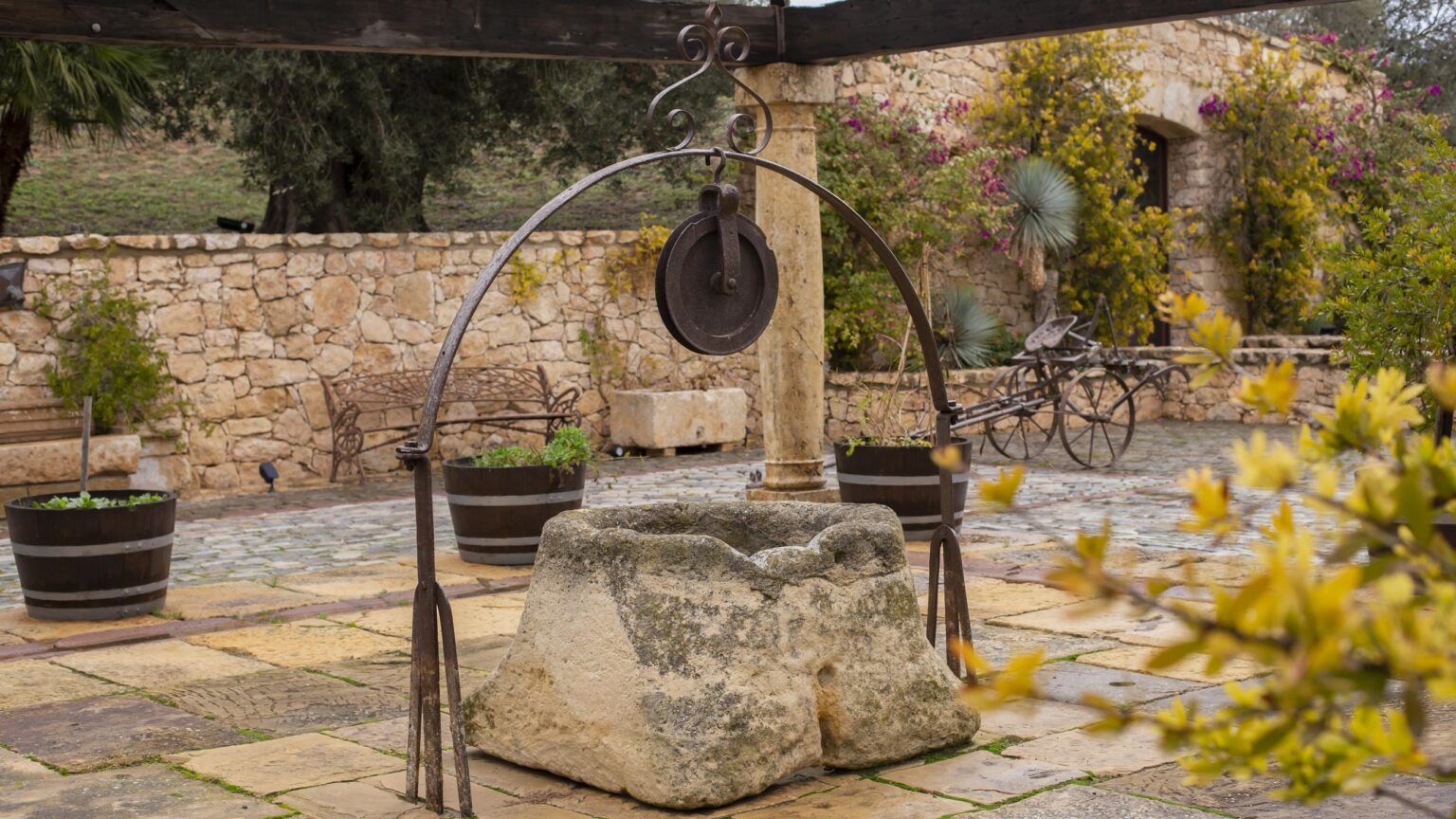
An elegant and relaxed terrace using French limestone paving and a row of urn planters with topiary. This works so well due to the contrast of the vivid green foliage against the rustic creamy-white stonework of the house and patio. The dining area is shaded by large deciduous trees, making the whole space very appealing and enchanting.
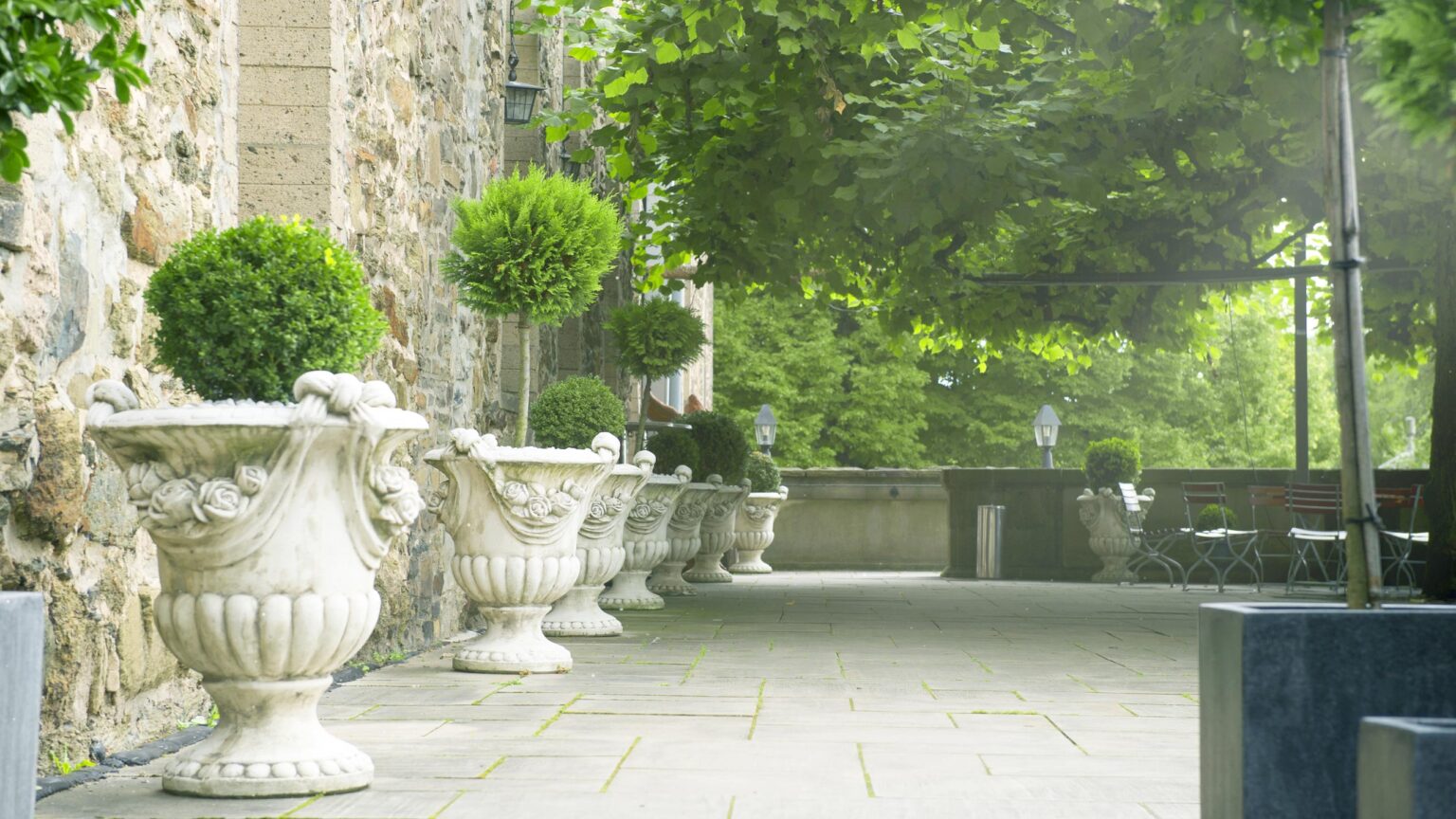
Simple contrasting colours with a rustic theme. Whitewashed unrendered stone walling makes a great canvas for the climbing plant, terracotta jug and dark teal coloured door.
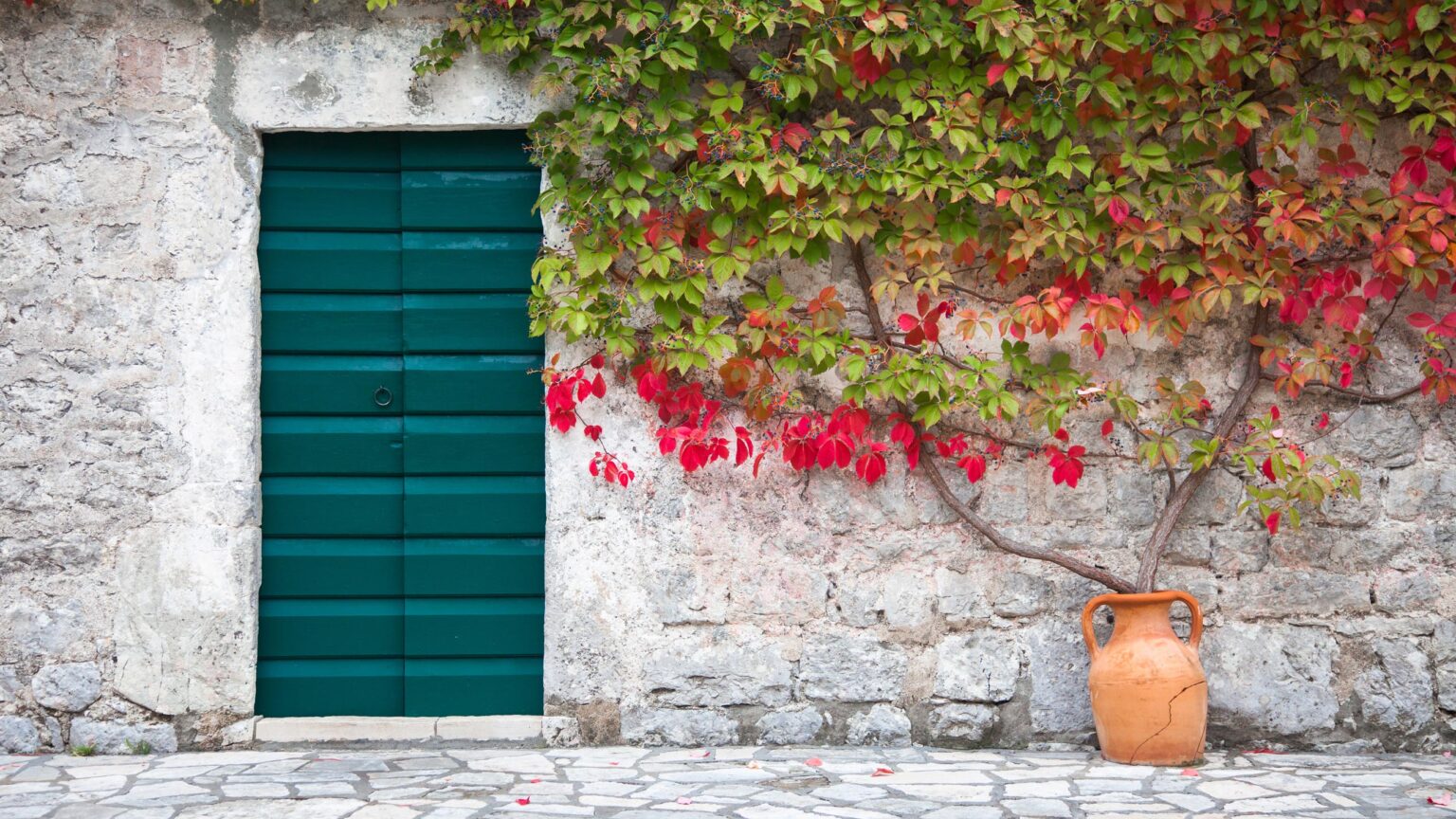
Using pergolas, awnings and trees to create a shaded dining and seating areas, interspersed with terracotta pots and planters. The result is an inviting and relaxed, tranquil terrace perfect for languid late lunches!
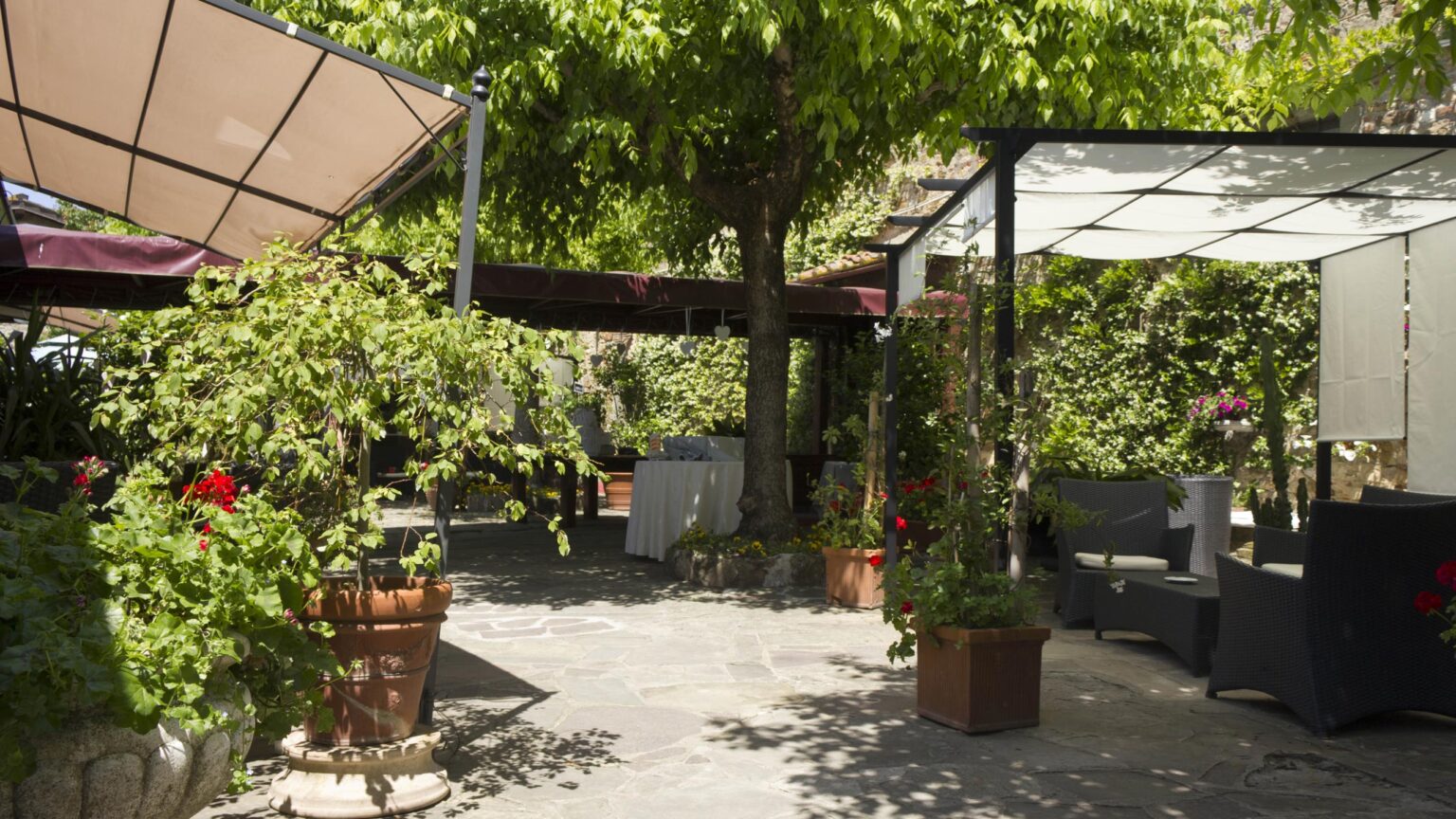
The simple use of terracotta pots with cacti and succulents resting on a parapet wall elevates this terrace, providing much more character and interest. Perhaps it is the extra love and attention it signals, that makes this feel more welcoming and homely.
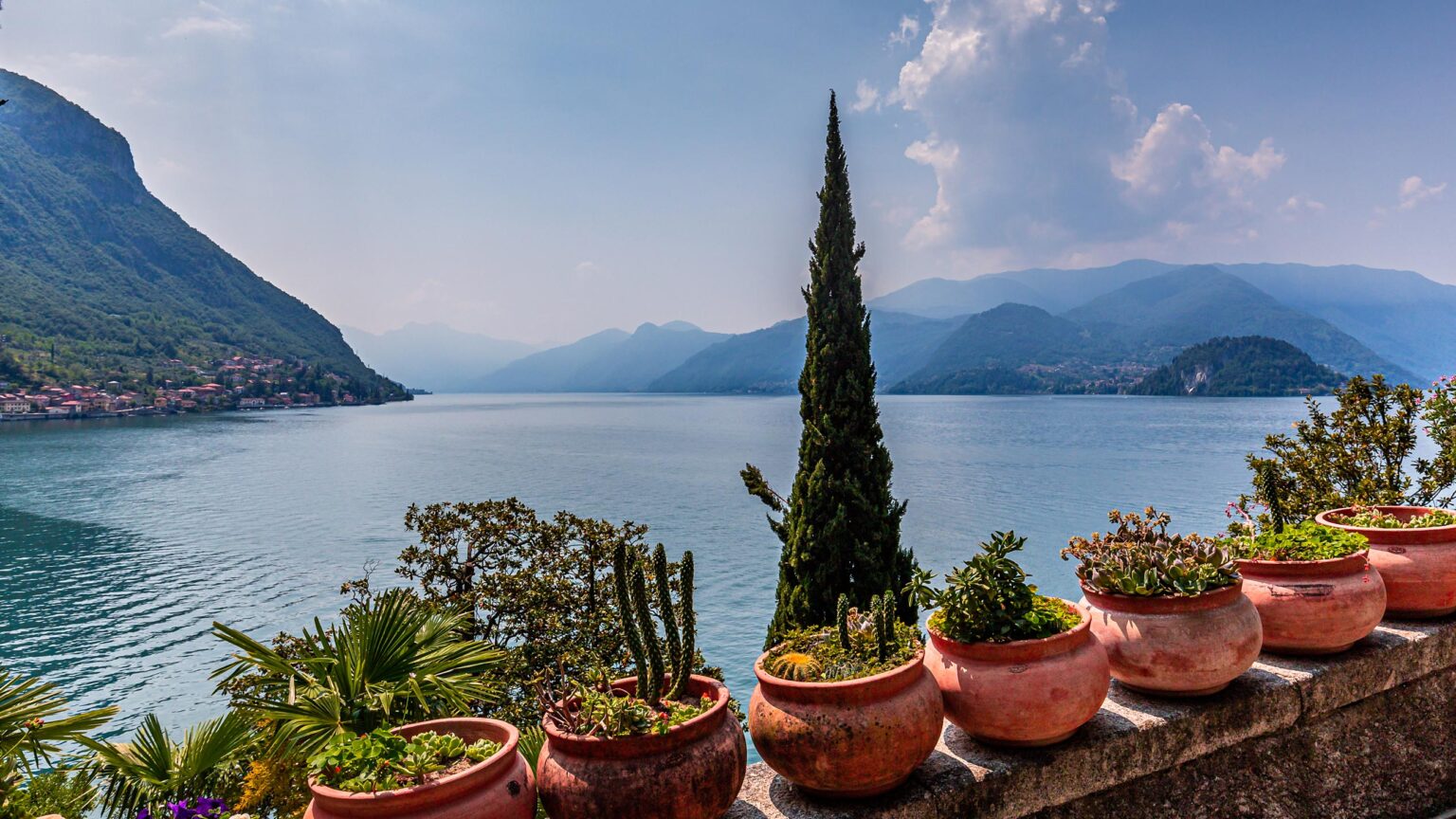
You don’t need to live in Marrakesh – the principles at play in Islamic courtyard gardens is something that will work well in many smaller, urban garden spaces. Pedestal fountains, mosaic and lush green ornamental trees and topiary will add bags of character and provide a wonderful garden retreat.
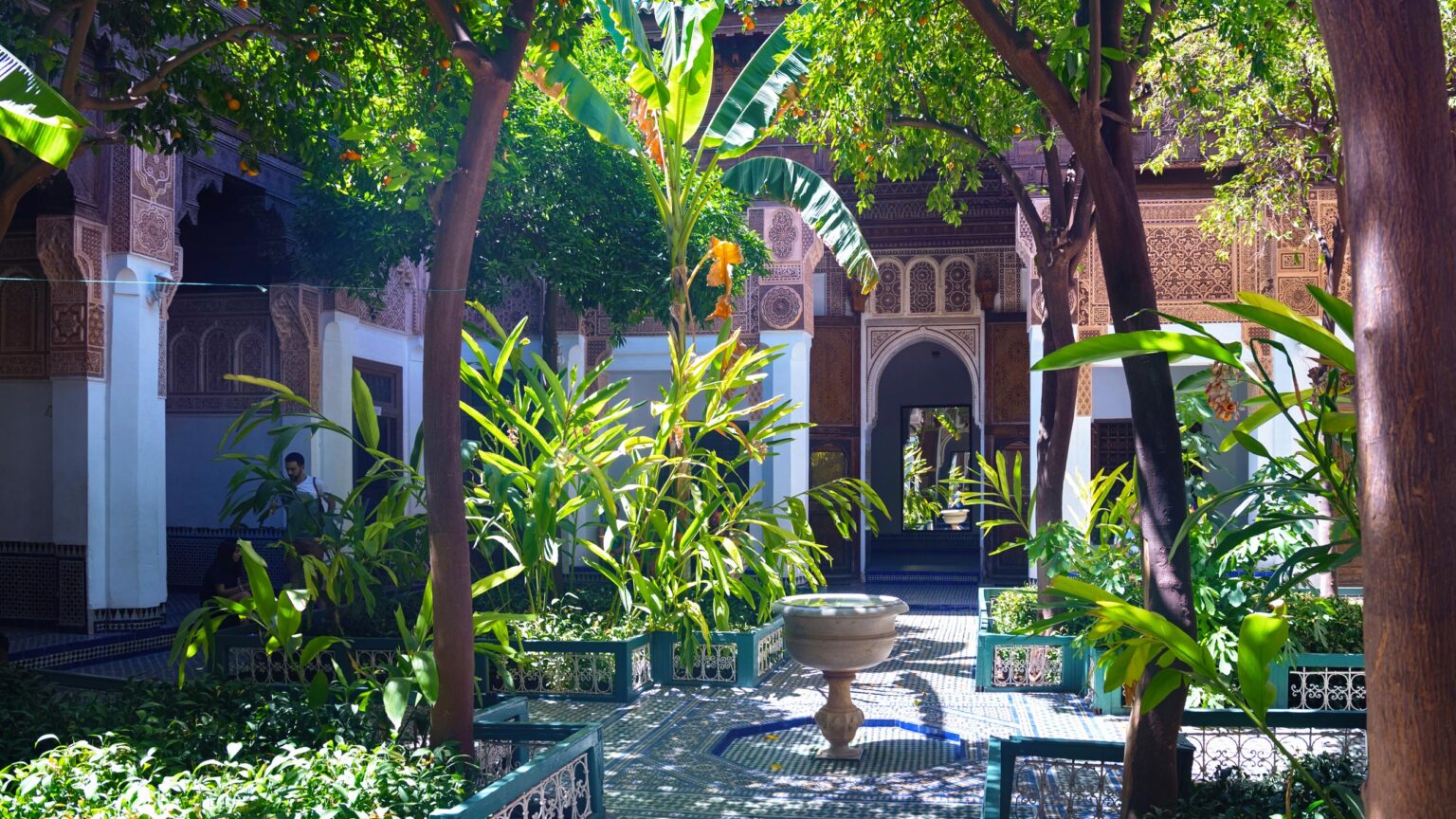
You can achieve some wonderful looks for landscaping features through simple material selection. Here we see how rounded river pebbles and terracotta bricks have been laid to create a beautiful rustic terrace overlooking the valley below.
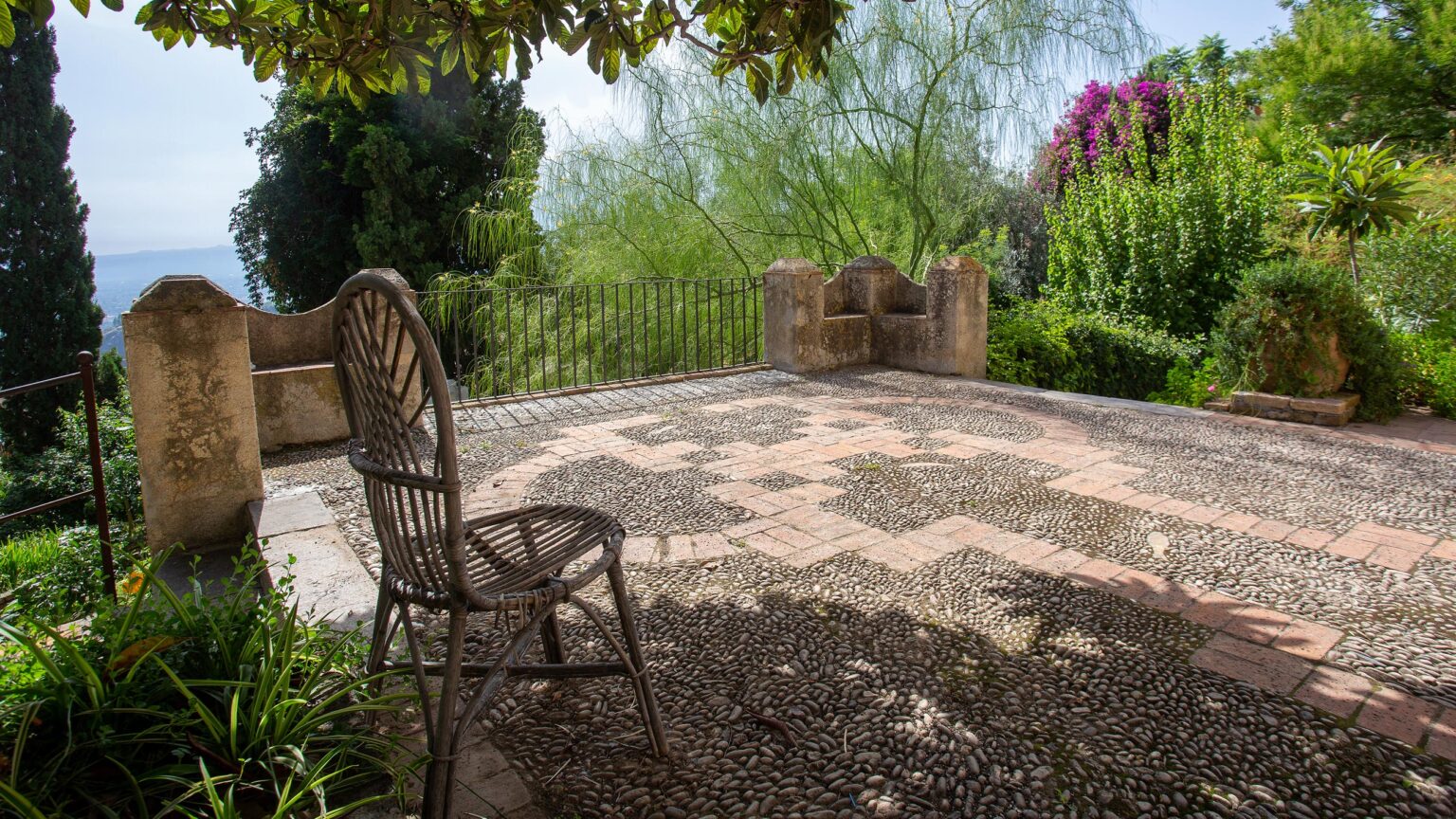
Plants for a Mediterranean Garden
Creating a Mediterranean garden in the UK can be a wonderful way to bring the feel of a warmer climate and aesthetic to your outdoor space. Here are ten plants commonly found in Mediterranean gardens that can utilised in the UK.
Note: some of these plant will need bringing indoors or putting in a conservatory, glasshouse or orangery in Winter before the harsh British frost kills them! For those that cannot be moved, other overwintering measures such as wrapping might be necessary.
Lebanese Cedar Tree (Cedrus libani)
With its Lebanese origins, the cedar tree perfectly complements the Mediterranean garden style. Its presence evokes the grandeur of ancient landscapes, reminiscent of sun-drenched hillsides and tranquil coastal vistas. Planted strategically within a Mediterranean-inspired garden, the cedar tree adds height, structure, and a sense of maturity to the landscape, lending an air of authenticity to the overall design.
Cedar trees exhibit a unique combination of architectural elegance and softness. They typically have an upright, pyramidal form with gracefully spreading branches, which create a visually striking silhouette. The dense foliage consists of clusters of needle-like leaves that range in colour from blue-green to silvery-green, adding year-round interest to the garden. During autumn, the needles may take on a golden or bronze hue, enhancing the seasonal beauty of the tree.
Hardiness: H6 (-20ºC to -15ºC) Hardy – Very Cold Winter
Hardy throughout the UK and northern Europe.
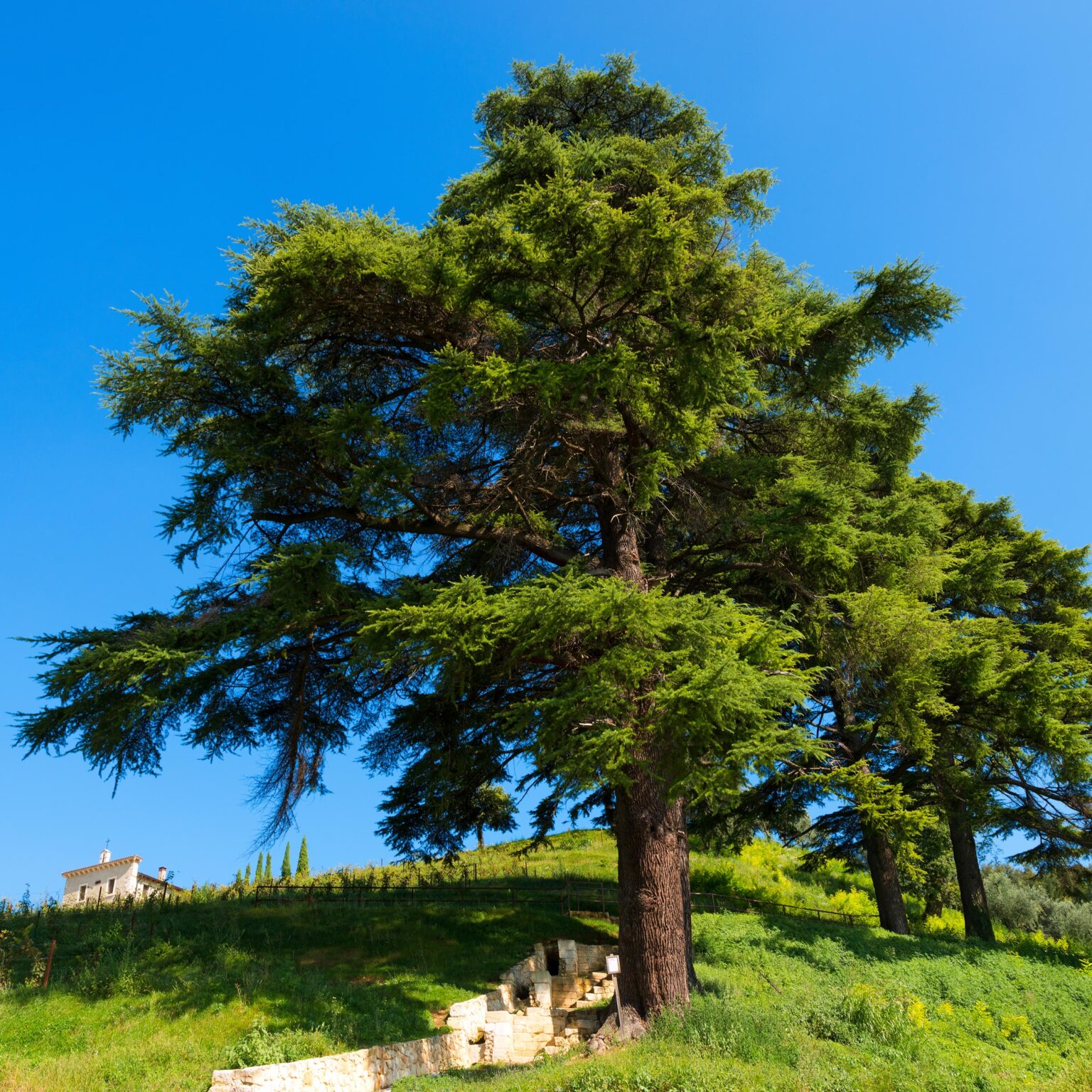
Palm Tree – Chusan palm (Trachycarpus fortunei)
Trachycarpus fortunei exhibits a distinctive appearance that adds a touch of exoticism to any Mediterranean-style garden. Its slender, fibrous trunk is covered with a dense layer of brown, hair-like fibres, giving it a unique and tactile texture. The leaves, or fronds, are large and fan-shaped, creating a graceful canopy atop the trunk. The deep green colour of the fronds provides a striking contrast against other plants in the garden, enhancing its visual impact.
While not native to the Mediterranean region, the Trachycarpus fortunei palm tree has become synonymous with Mediterranean landscapes due to its resilient nature and aesthetic appeal. Its presence in a Mediterranean-style garden adds a tropical touch, reminiscent of the palm-lined coastlines and lush oases of the Mediterranean region. Planted strategically within the garden, this palm tree brings a sense of height, structure, and a relaxed, vacation-like atmosphere to the overall design.
Hardiness: H5 (-15ºC to -10ºC) Hardy – cold winter
Hardy through most of the UK, even in severe winters. May not withstand open or exposed sites.
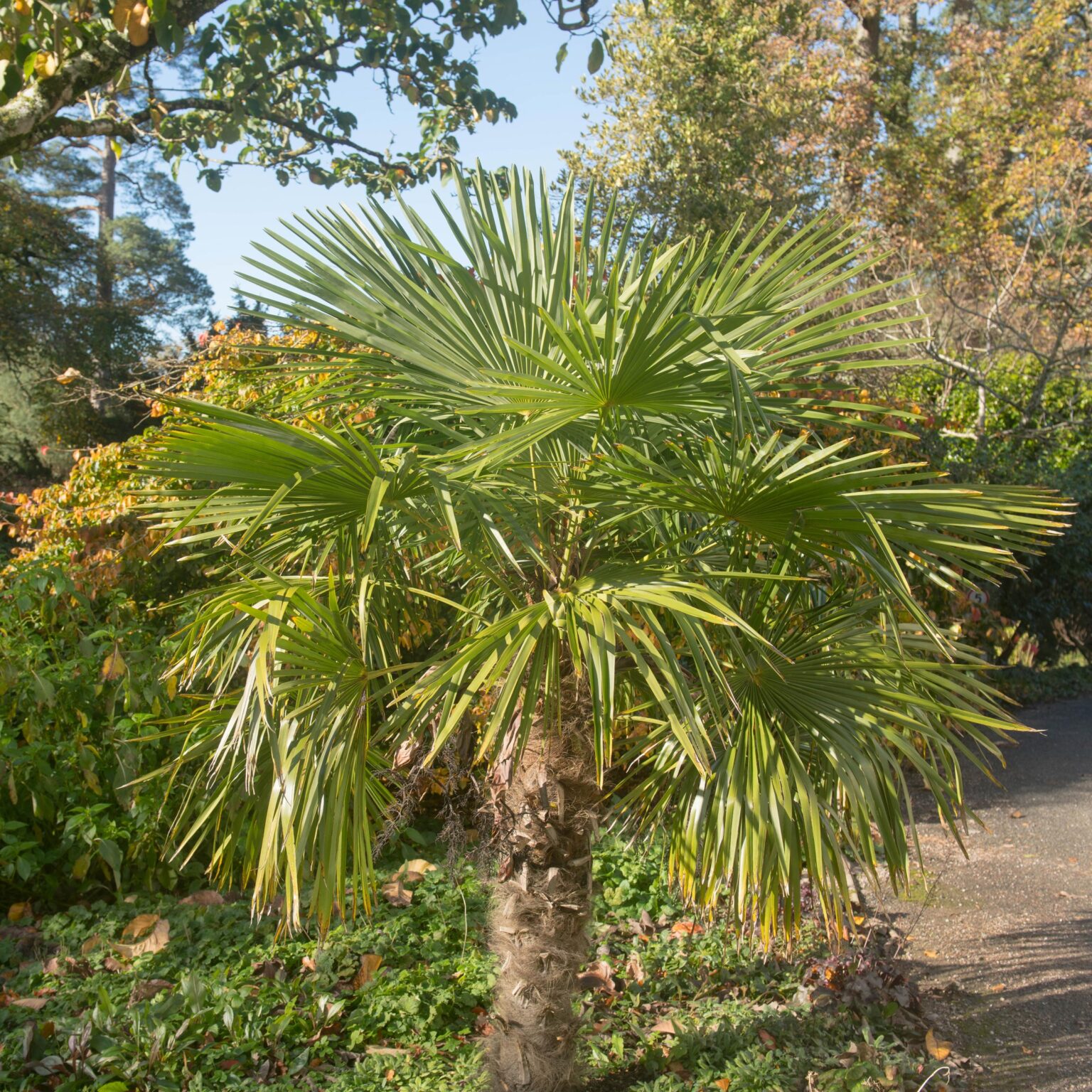
Olive Tree
Olive trees exhibit a unique combination of elegance, resilience, and versatility. They feature an iconic, twisted trunk with silver-gray bark that adds a sculptural element to the landscape. The evergreen foliage consists of small, oblong leaves with a silvery-green hue, reflecting the sunlight and creating a luminous effect. During spring, olive trees produce fragrant, delicate white flowers, followed by small green fruit that ripen into edible olives (be aware, the likelihood of them baring fruit in the UK is low).
Olive trees (Olea europaea) possess a remarkable ability to adapt to a variety of climates, making them surprisingly suitable for the UK. While originating from the Mediterranean region, these trees have shown resilience and tolerance for different conditions. Selecting the right cultivars and providing appropriate care can enable olive trees to thrive in the UK climate, allowing gardeners to enjoy their unmistakable Mediterranean appeal.
Hardiness: H5 (-15ºC to -10ºC) Hardy – cold winter
Hardy through most of the UK, even in severe winters. May not withstand open or exposed sites.
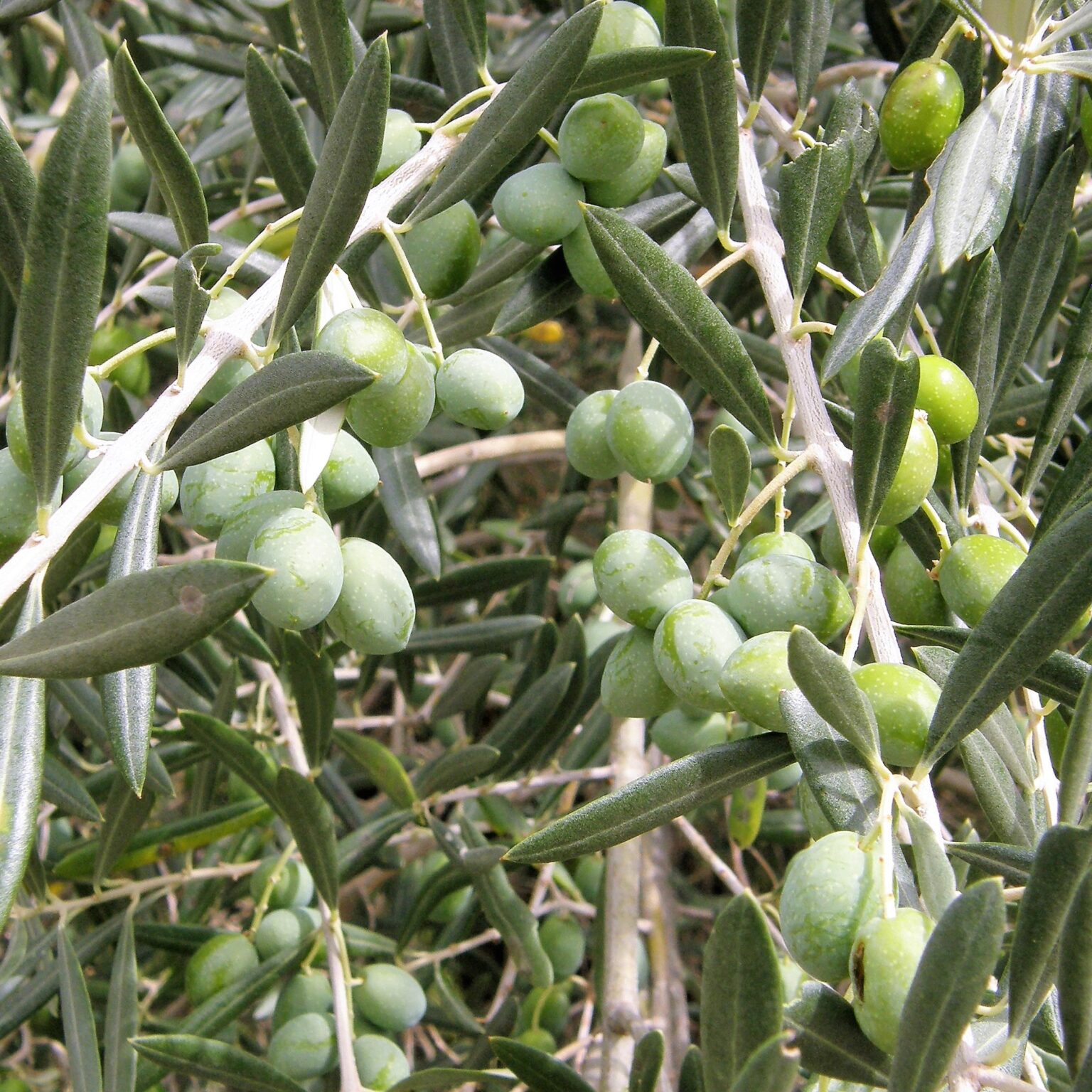
Italian Cypress (Cupressus sempervirens)
Italian Cypress is synonymous with Mediterranean landscapes, evoking the charm and tranquillity of Mediterranean gardens. When incorporated into a Mediterranean-style garden in the UK, this tree adds a sense of height, structure, and architectural interest. Planted in rows or as individual specimens, it creates a striking backdrop or defining feature, transporting you to the sun-soaked landscapes and picturesque vistas of the Mediterranean region.
Cupressus sempervirens is a hardy evergreen tree that possesses remarkable adaptability to various climates. Originating from the Mediterranean region, it has shown resilience and tolerance to different conditions, including the UK climate. With careful selection and appropriate care, Cupressus sempervirens can thrive in UK gardens, allowing you to enjoy its Mediterranean allure.
Hardiness: H5 (-15ºC to -10ºC) Hardy – cold winter
Hardy through most of the UK, even in severe winters. May not withstand open or exposed sites.
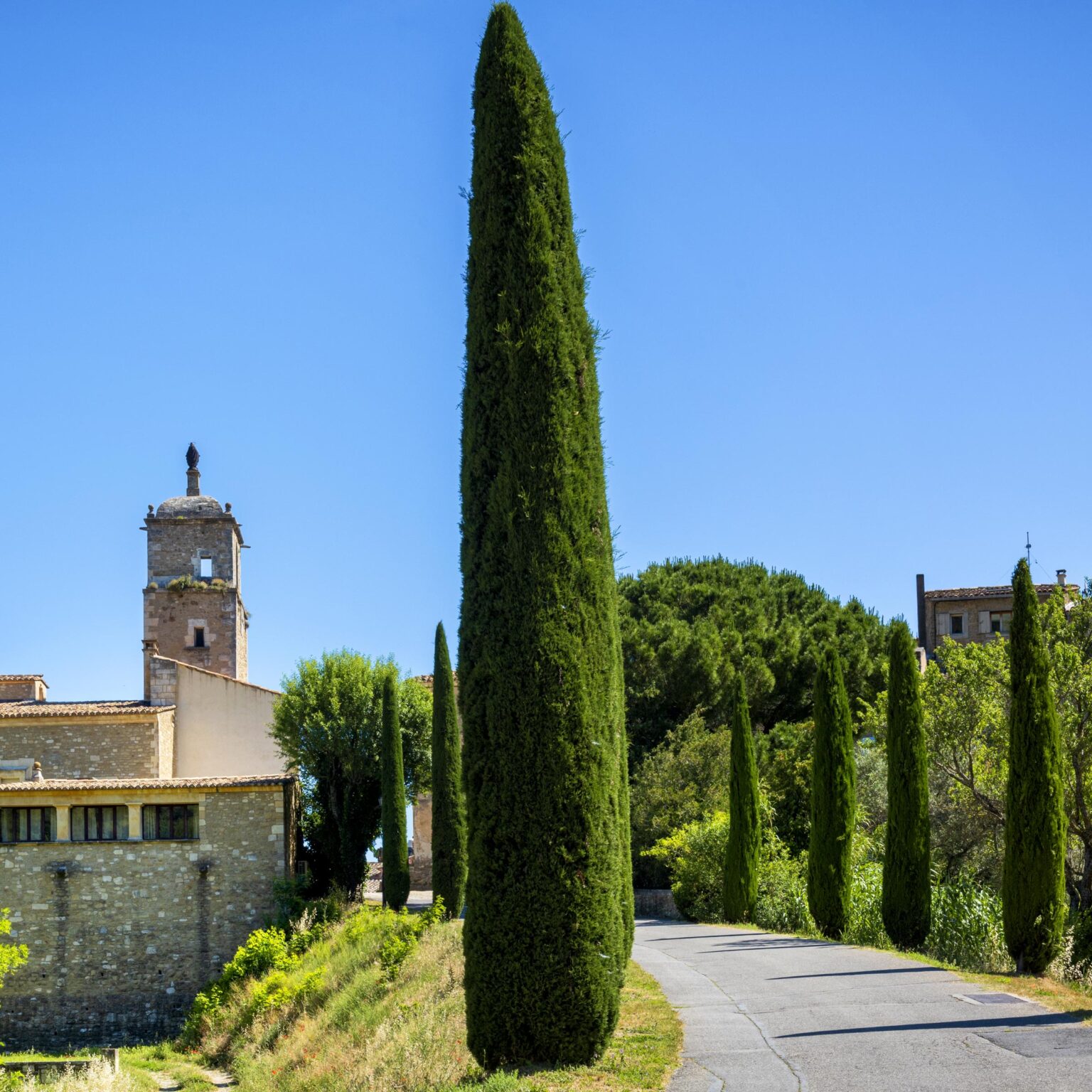
Bougainvillea
Bougainvillea is renowned for its striking and abundant bracts, which are modified leaves surrounding small, inconspicuous flowers. The bracts are available in a wide range of vibrant colours, including shades of pink, purple, red, orange, and white, adding a burst of colour and visual interest to the garden. The foliage is typically dark green and can vary in shape, ranging from elliptical to ovate. Bougainvillea is a climbing or trailing plant, often featuring sprawling branches that can be trained against trellises, walls, or pergolas.
Bougainvillea is a genus of tropical and subtropical plants, and while many varieties prefer a warmer climate, some hardy cultivars have been developed to withstand cooler temperatures. Native to South America, this plant was brought to Mediterranean gardens as part of the Columbian exchange.
These hardy Bougainvillea varieties have shown adaptability to the UK climate, making them suitable for Mediterranean-style gardens in milder regions. These cultivars can tolerate occasional frost, but providing protection during cold snaps, such as situating them against a south-facing wall or using horticultural fleece, can help safeguard them during colder periods.
Hardiness: H3 (-5ºC to 1ºC) Half-hardy
Unheated glasshouse / mild winter. Hardy in coastal / mild areas except in hard winters and at risk from sudden (early) frosts. May be hardy elsewhere with wall shelter or good microclimate.
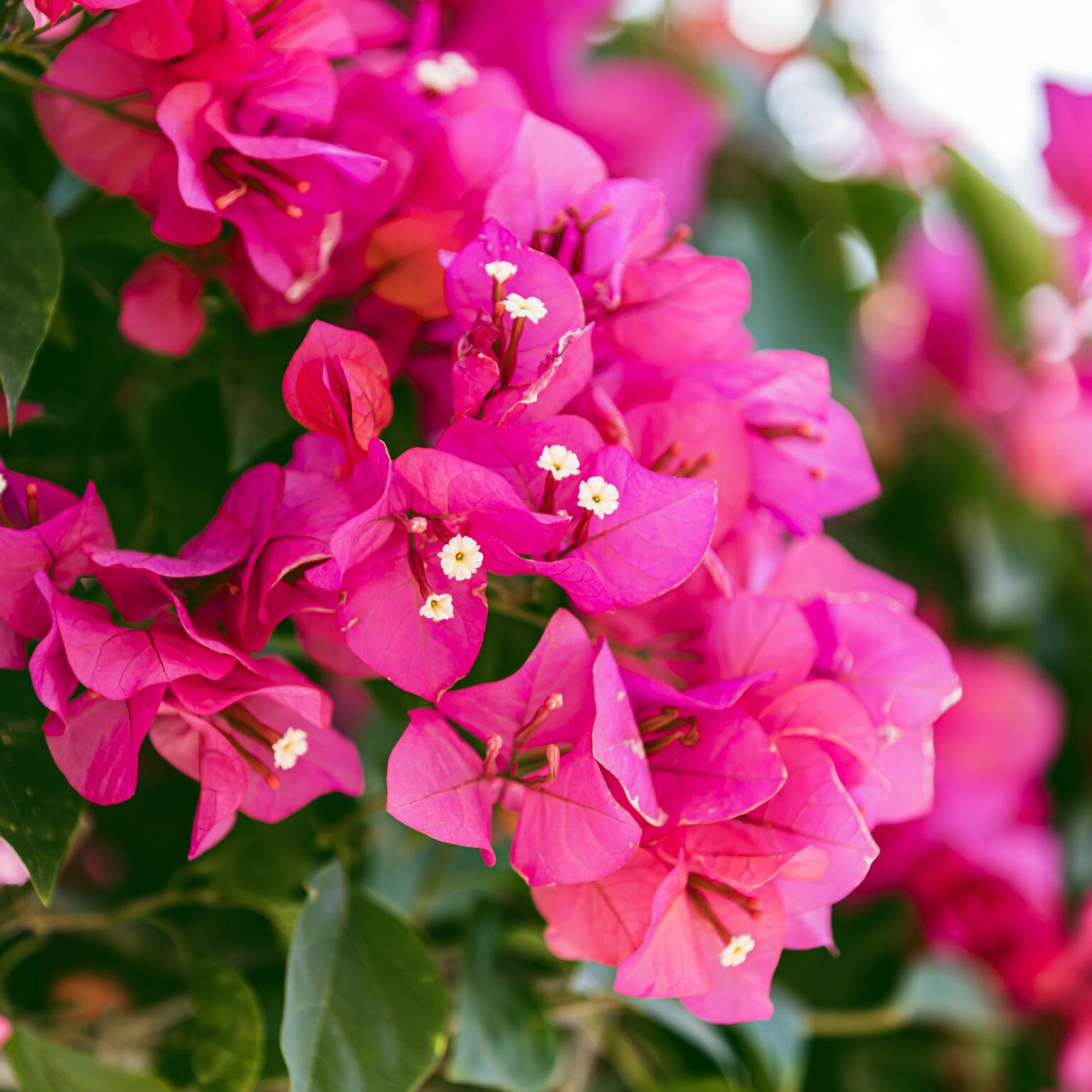
Agapanthus
Agapanthus plants feature long, strap-like leaves that grow in clumps, forming a basal rosette. From early to late summer, tall stalks emerge, bearing spherical clusters of bell-shaped flowers. The flowers come in a range of colours, including shades of blue, white, and purple. They provide a captivating display and add a burst of colour and elegance to the garden. Agapanthus foliage remains attractive throughout the growing season, contributing to the plant’s overall architectural appeal.
Agapanthus is often associated with Mediterranean landscapes, where it thrives in sunny, coastal regions. By incorporating Agapanthus into a UK garden, you can capture the essence of the Mediterranean and infuse your outdoor space with its vibrant and lively ambiance. Whether planted in borders, massed together for a dramatic effect, or used as focal points, Agapanthus adds a touch of Mediterranean sophistication, evoking the charm and tranquillity of coastal gardens.
Agapanthus, also known as Lily of the Nile, encompasses a diverse group of plants that exhibit varying degrees of hardiness. While some tender varieties may require protection or overwintering indoors, several hardy cultivars have been developed, specifically suited to withstand the UK climate. These hardy Agapanthus varieties have demonstrated adaptability and resilience, making them suitable choices for UK gardens.
Hardiness: H5 (-15ºC to -10ºC) Hardy – cold winter
Hardy through most of the UK even in severe winters. May not withstand open or exposed sites.
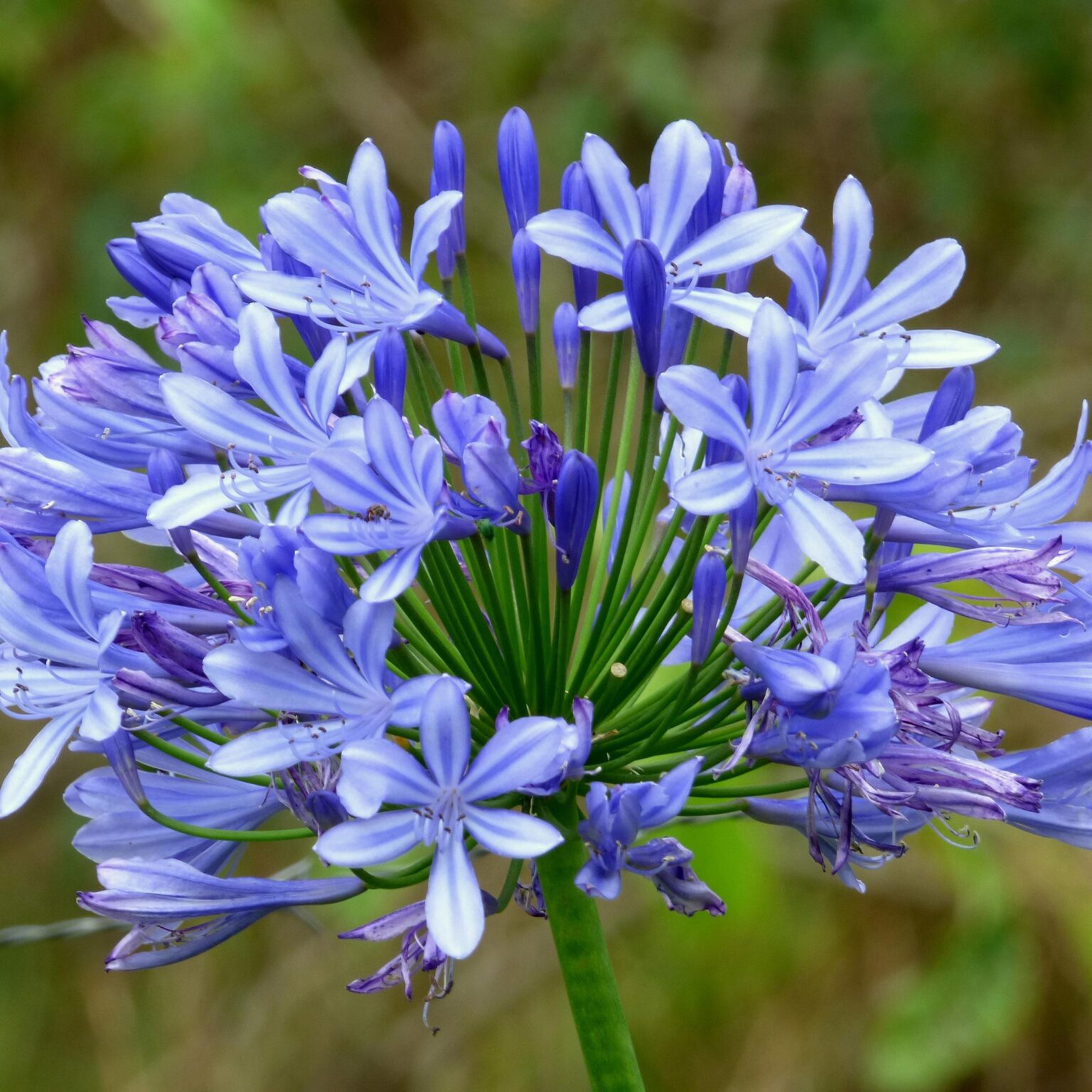
Geranium
Geraniums display an array of charming features that contribute to their popularity in garden design. They typically have deeply lobed or dissected foliage, which adds texture and interest even when the plants are not in bloom. Geranium flowers come in various colours, including shades of pink, purple, blue, and white, providing a spectrum of options to suit different design preferences. The blooms can be single or double, and they appear in abundance, often creating a blanket of colour throughout the summer months.
Geraniums are renowned for their hardiness and adaptability, making them ideal choices for UK gardens. Numerous geranium varieties are classified as hardy and can withstand a range of conditions, including heavy frost and varying soil types. With proper selection and care, geraniums can flourish in the UK climate, even in regions prone to cooler temperatures and wetter conditions.
Hardiness: H7 (colder than -20ºC) Hardy – very cold winter
- Geranium ‘Rozanne’- H7 very Hardy
- Geranium ‘Johnson’s Blue’ – H7 very Hardy
- Geranium ‘Anne Thomson’ – H7 very Hardy
- Geranium ‘Nimbus’ – H7 very Hardy
- Geranium ‘Patricia’ – H7 very Hardy
- Geranium ‘Rise and Shine’ – H7 very Hard
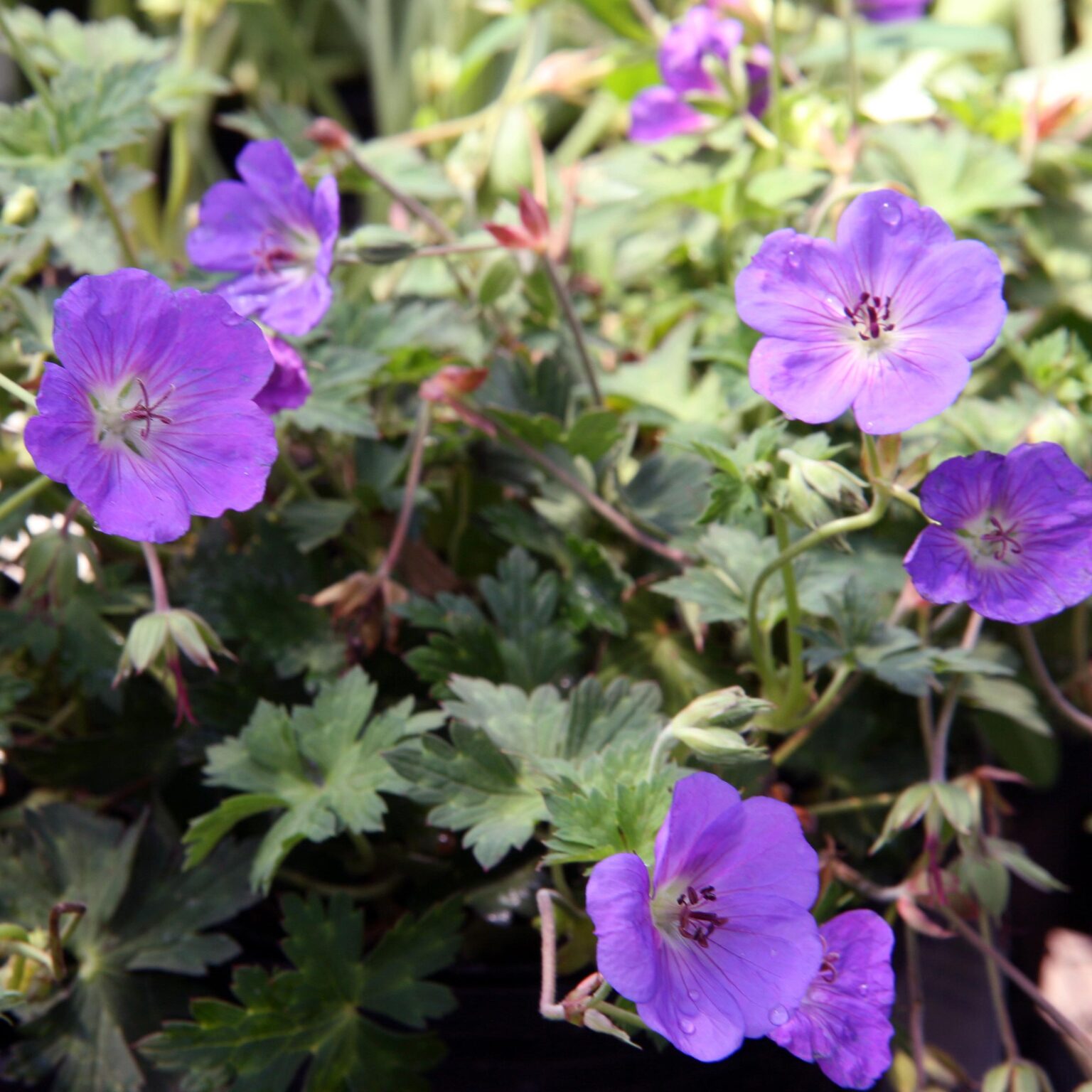
Citrus trees
Designing a Mediterranean-style garden in the UK allows you to create a slice of paradise and transport yourself to sun-drenched landscapes. Lemon trees, with their vibrant foliage, fragrant blooms, and delicious fruits, are an excellent choice for adding a touch of Mediterranean charm to UK gardens. While traditionally associated with warmer climates, certain lemon tree varieties have proven to be hardy and adaptable, enabling UK gardeners to cultivate these citrus beauties and create an authentic Mediterranean oasis in their own outdoor spaces.
Lemon trees are admired for their glossy, evergreen foliage, fragrant white blossoms, and, of course, their bright yellow fruits. They typically grow as small to medium-sized trees, reaching a height of around 6 to 10 feet when fully matured. The fragrant blooms appear in clusters and give way to the formation of tangy lemons. Beyond their ornamental value, lemon trees provide a delightful sensory experience, as their aromatic leaves and fruits infuse the garden with a fresh, citrusy scent.
Although lemon trees are native to subtropical regions, several hardy lemon tree varieties have been developed to withstand cooler climates. These hardy lemon trees exhibit adaptability and resilience, making them suitable for the UK climate. While they may require some winter protection in colder regions, they can thrive and bear fruit in milder areas, allowing gardeners to enjoy the essence of the Mediterranean right at home.
Hardiness: H1c (5ºC to 10ºC) Glasshouse/Orangery
Can be grown outdoors in summer throughout most of the UK, while daytime temperatures are high enough to promote growth.
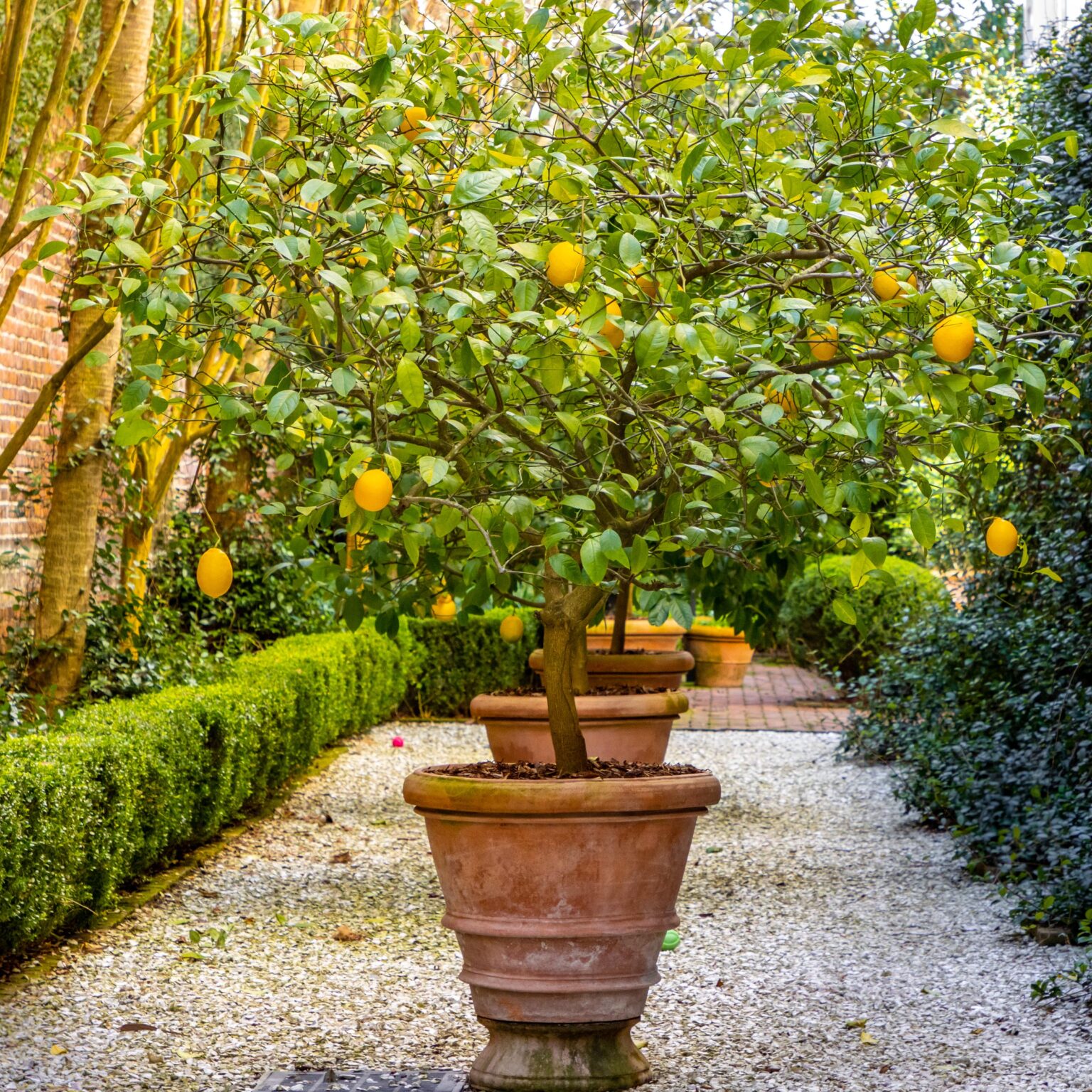
Thyme
Thyme (Tymus vulgaris) is a commonly used herb in cooking and gardening. It is a perennial plant that belongs to the mint family (Lamiaceae). Thyme is a native to the Mediterranean region and is known for its aromatic leaves, which have a strong and distinctive flavour.
Beyond its ornamental value, thyme offers culinary delights and fragrant qualities. The leaves of thyme are frequently used in cooking, imparting a distinct, earthy flavor to various dishes. Whether added to Mediterranean-inspired recipes, roasted meats, or infused in oils and vinegars, thyme adds depth and aroma to culinary creations. Its fragrant leaves also release a pleasing scent when brushed against, further enhancing the sensory experience in the garden.
Thyme is renowned for its hardiness and adaptability, making it an excellent choice for UK gardens. It is classified as a perennial herb, meaning it can survive and thrive year after year. Thyme is highly tolerant of varying soil conditions and can withstand drought, making it suitable for a range of garden environments. Whether your garden is exposed to full sun or partial shade, thyme can adapt and flourish, bringing its Mediterranean essence to the UK climate.
Hardiness: H5 (-15ºC to -10ºC) Hardy – cold winter
Hardy through most of the UK even in severe winters. May not withstand open or exposed sites.
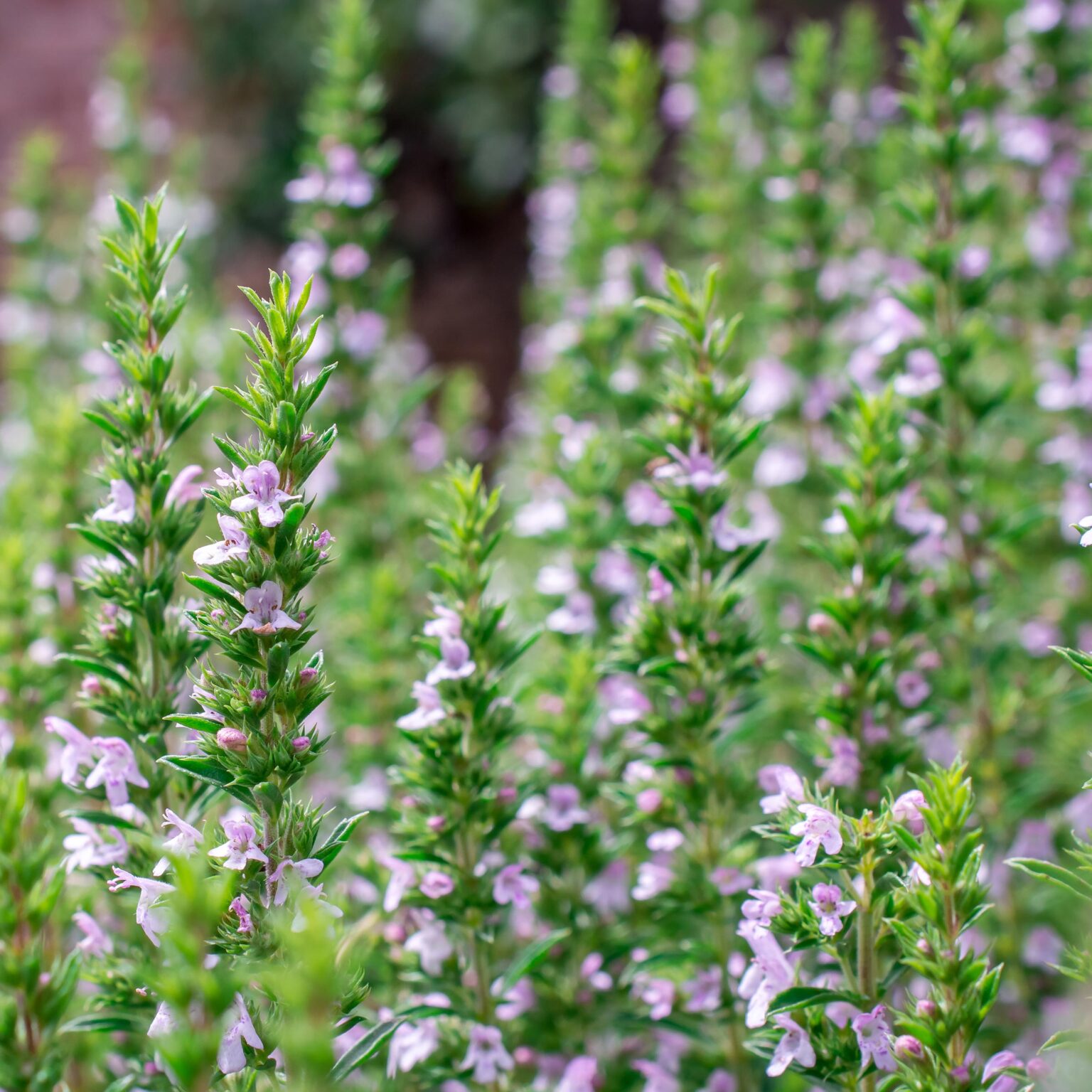
Cistus/Rockrose
Also called Rockrose, Cistus is a drought-tolerant shrub that produces beautiful saucer-shaped flower in various colours. It prefers full sun and well-drained soil.
Cistus plants exhibit a captivating combination of vibrant flowers and silver-green foliage, adding visual interest and beauty to any garden setting. The flowers, which resemble delicate papery petals, come in a variety of colours, including shades of white, pink, purple, and yellow. They bloom profusely during the summer months, creating a dazzling display that attracts bees and other pollinators. The silver-green leaves are often slightly hairy, lending a soft and textured appearance to the plant.
One of the appealing aspects of Cistus plants is their low-maintenance nature. They require minimal care once established, making them suitable for gardeners seeking hassle-free options. Cistus plants are drought-tolerant and do not require excessive watering, making them ideal for water-wise gardening. Additionally, their evergreen foliage ensures year-round interest, requiring minimal pruning or maintenance.
Hardiness: H4 (-10ºC to -5ºC) Hardy – average winter
Hardy through most of the UK. May suffer foliage damage and stem dieback in harsh winters in cold gardens. Plants in pots are more vulnerable.
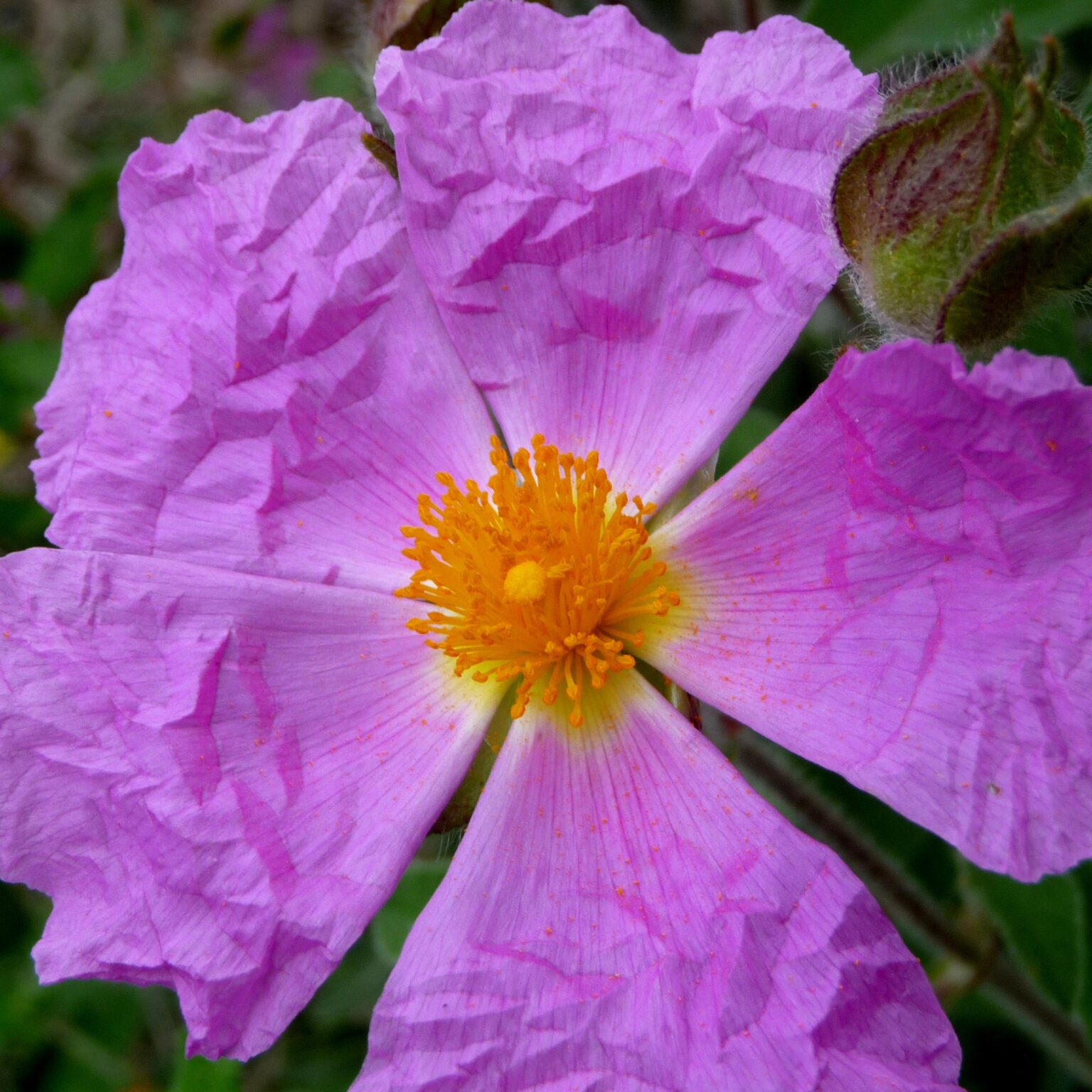
Rosemary
This popular aromatic herb is an evergreen shrub with fragrant needle-like leaves. It is perfect for adding texture and aroma to your garden. It thrives in sunny spots and well-drained soil.
Rosemary is a quintessential herb in Mediterranean gardens, where it thrives in the wild and cultivated landscapes. By incorporating rosemary into a UK garden, you can instantly transport yourself to the Mediterranean and infuse your outdoor space with its undeniable charm. Whether used as a fragrant border, in containers, or as part of a mixed planting scheme, rosemary brings a sense of authenticity and a touch of the Mediterranean to your garden
Rosemary is pretty hardy and adaptable, making it an excellent choice for UK gardens. It is classified as a woody perennial herb, capable of withstanding cooler temperatures and even light frosts. Rosemary thrives in well-draining soil and prefers a sunny position, but it can tolerate a range of soil conditions and some shade. These characteristics allow rosemary to adapt to various garden environments and flourish in the UK climate.
Hardiness: H4 (-10ºC to -5ºC) Hardy – average winter
Hardy through most of the UK. May suffer foliage damage and stem dieback in harsh winters in cold gardens. Plants in pots are more vulnerable.
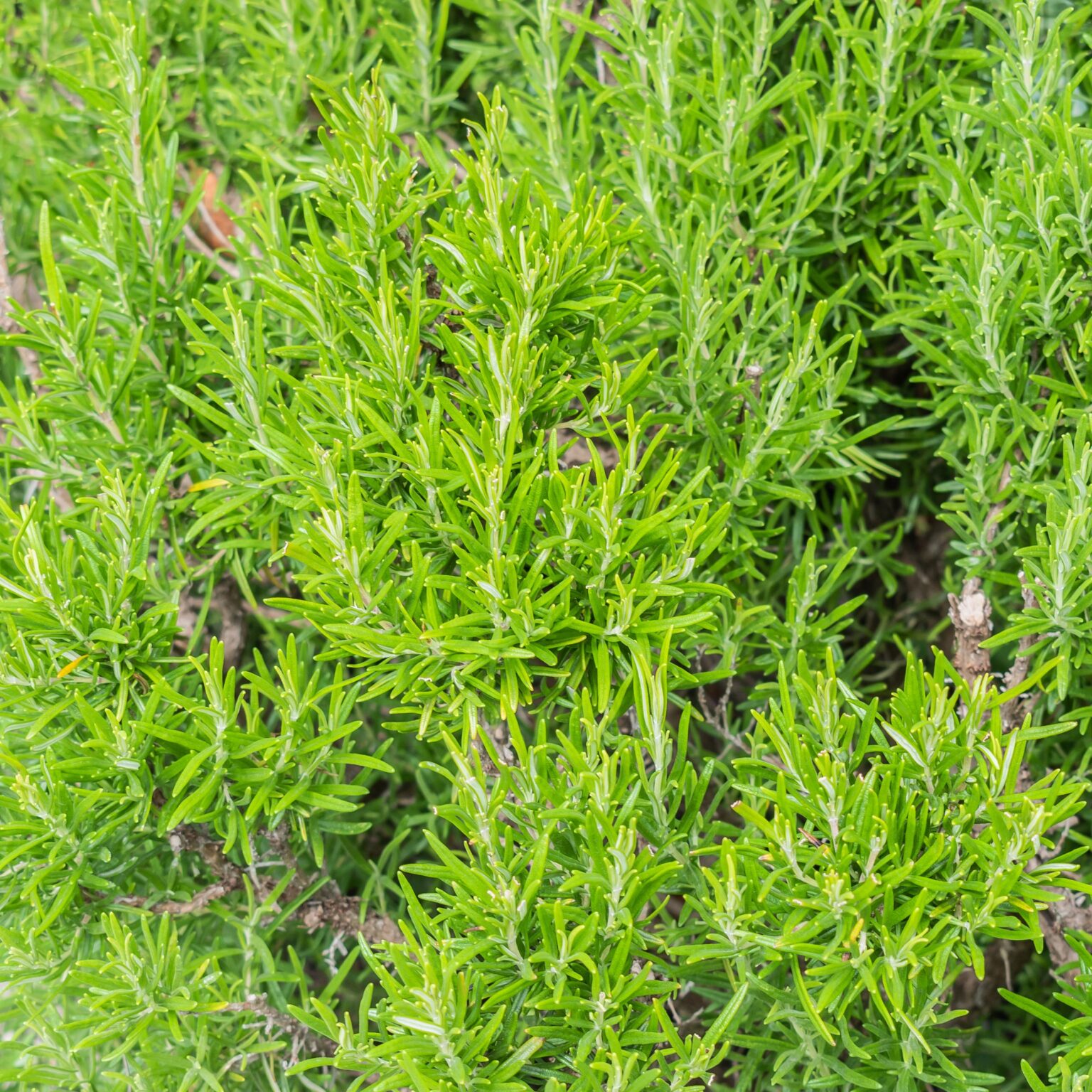
Bay tree
Bay trees / Bay Laurel (Laurus nobilis) are a popular evergreen shrub suitable for containers or growing in the ground.
The bay tree is prized for its glossy, dark green leaves that release a delightful fragrance when crushed or brushed against. The leaves are lance-shaped and have a leathery texture, adding a touch of sophistication to the garden. The bay tree can be pruned and shaped into various forms, including topiary standards, pyramids, or shrubs, allowing for versatility in garden design. Its attractive foliage provides year-round interest, making it an ever-present source of beauty in your Mediterranean-style garden.
The aromatic leaves of the bay tree are treasured in Mediterranean cuisine, imparting a distinctive flavour to a variety of dishes, including soups, stews, sauces, and roasted meats. Having a bay tree in your garden provides easy access to fresh bay leaves, enhancing your culinary endeavours with an authentic Mediterranean touch. Additionally, the bay tree has symbolic significance, representing victory, honour, and wisdom, adding depth and meaning to your garden’s overall atmosphere.
Hardiness: H4 (-10ºC to -5ºC) Hardy – average winter
Hardy through most of the UK. May suffer foliage damage and stem dieback in harsh winters in cold gardens. Plants in pots are more vulnerable.
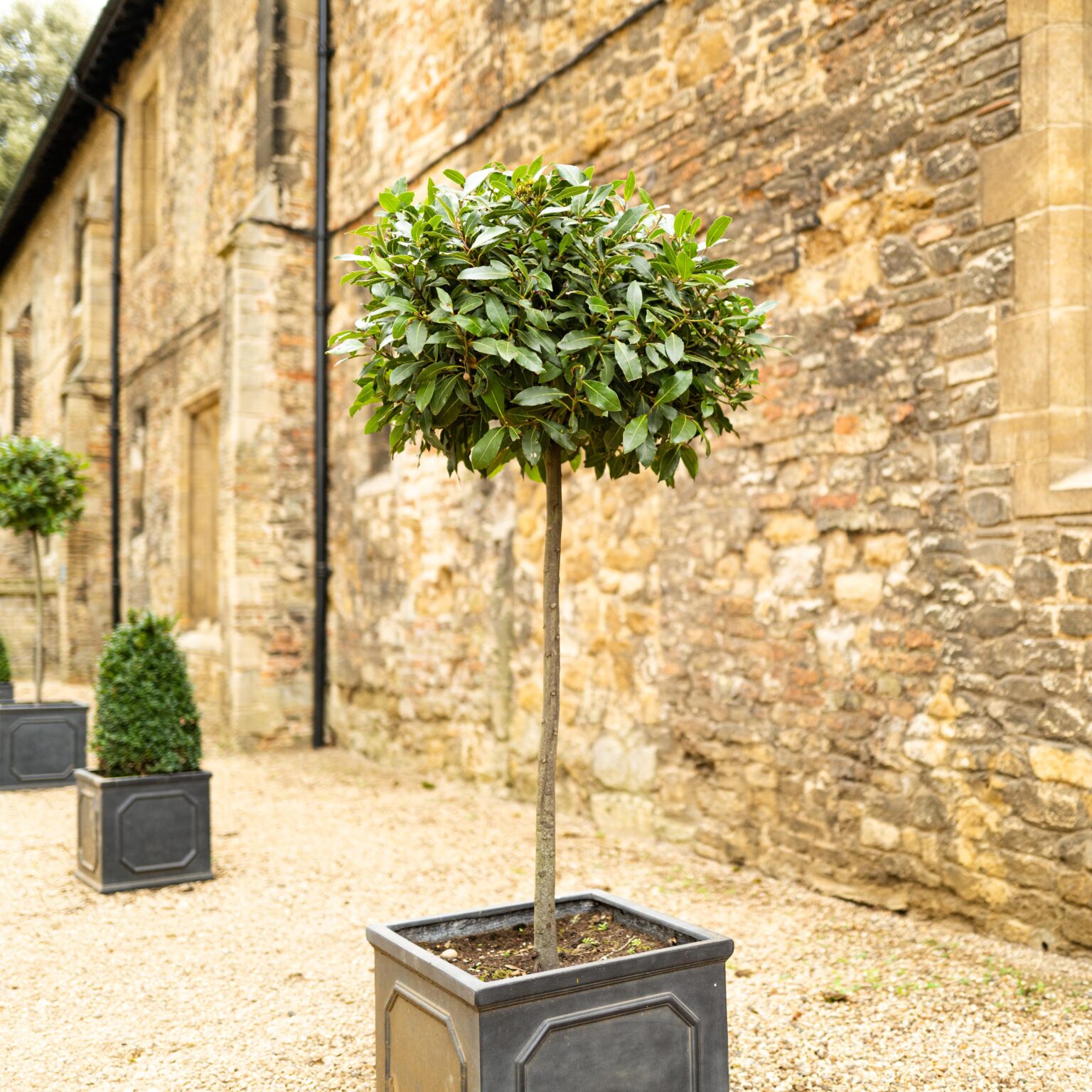
Cordyline
Cordyline plants showcase a captivating array of foliage that adds depth and visual interest to any garden setting. The leaves vary in colour, including shades of green, red, pink, purple, and variegated combinations. The long, sword-shaped leaves cascade from a central stem, creating an architectural silhouette that adds a tropical touch to the garden. Some varieties may produce fragrant flowers, although they are typically less significant compared to the foliage. Cordyline plants can grow to various heights, ranging from compact forms suitable for containers to taller specimens reaching up to 10 feet or more.
While Cordyline is not native to the Mediterranean, its lush foliage and exotic appearance can evoke the essence of tropical and Mediterranean landscapes. By incorporating Cordyline into a UK garden, you can create a Mediterranean-style oasis with a touch of exotic allure. Whether used as a focal point, in containers, or as part of a mixed planting scheme, Cordyline adds a sense of drama and tropical ambiance, enhancing the Mediterranean-inspired design of your garden.
In the UK, Cordyline plants can thrive in various regions, especially those with milder climates. They are commonly found in coastal areas and urban gardens. While they can tolerate temperatures as low as -10°C with protection, it is important to note that severe winters or prolonged periods of frost may damage or kill Cordyline plants. Choosing hardier varieties and providing shelter during harsh weather conditions will help ensure their success in a Mediterranean-style garden.
Hardiness: H3 (-5ºC to 1ºC) Half-hardy – unheated glasshouse / mild winter
Hardy in coastal / mild areas except in hard winters and at risk from sudden (early) frosts. May be hardy elsewhere with wall shelter or good microclimate. Can survive with artificial winter protection.
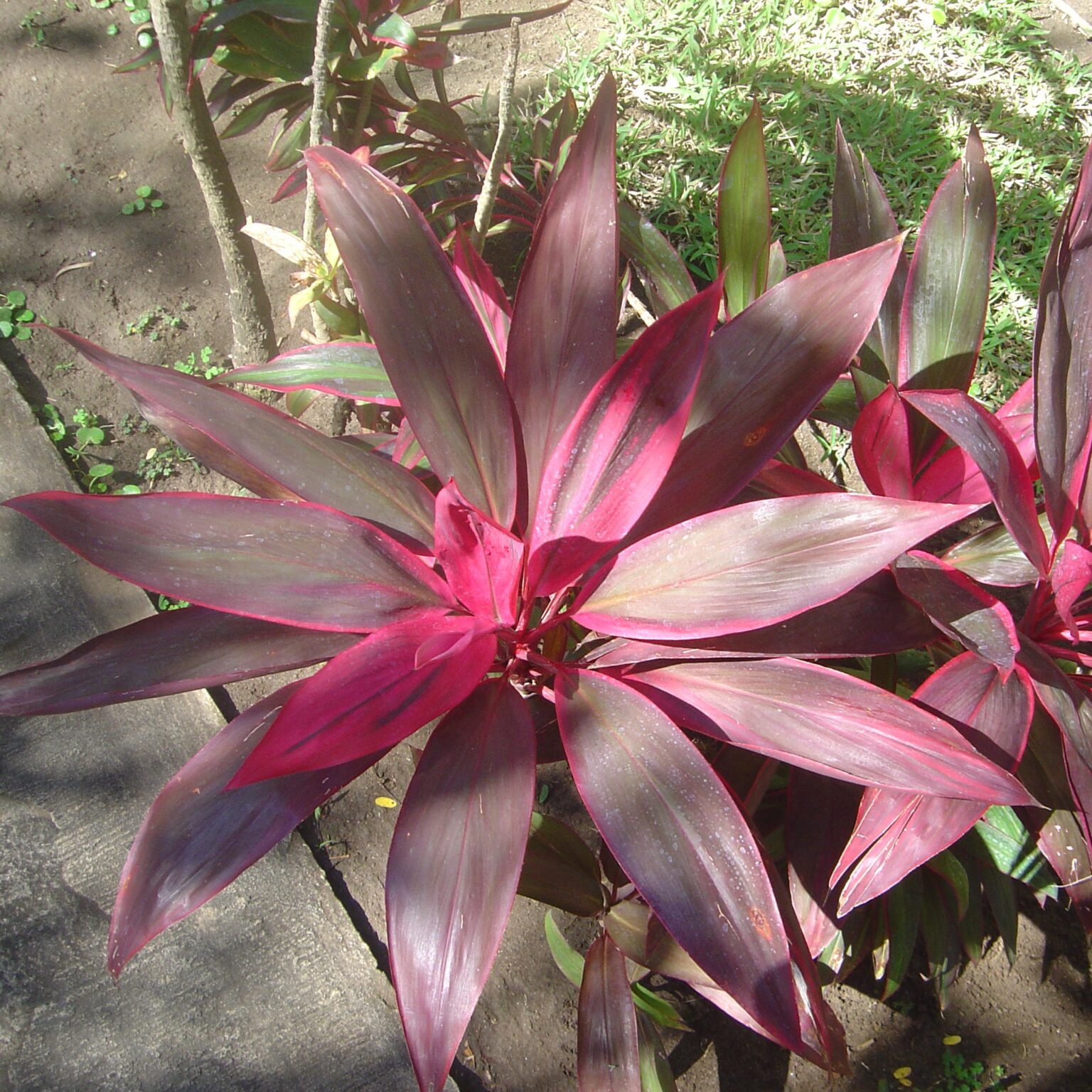
Mint
Spearmint (mint, lamb mint, garden mint) is a common aromatic herb that is indigenous to Europe as Asia Minor. Great for cooking and for creating fragrant areas in your Mediterranean garden, this plant can be a bit ambitious and unruly if left to its own devices. We suggest planting in large tubs or pots, to keep in from spreading uncontrolled! Whilst very hard, expect it to die back in the Winter.
Mint plants are characterized by their vibrant green, aromatic leaves. They have a bushy growth habit, reaching a height of 1 to 2 feet (30 to 60 cm) when fully grown. The leaves can be harvested throughout the growing season and used fresh or dried for culinary purposes, adding a burst of flavour to drinks, salads, desserts, and more. Mint also produces small, delicate flowers in shades of white or purple, attracting pollinators to the garden.
Mint is fully hardy. It is a perennial plant that thrives in a wide range of conditions. Mint prefers moist, well-draining soil and a position with partial shade, although it can tolerate full sun. It is a fast-growing herb that spreads through runners, so it’s important to contain its growth or grow it in pots to prevent it from taking over the garden. Mint’s hardiness and ability to tolerate cooler temperatures make it an excellent choice for the UK climate.
Hardiness: H7 (-20ºC or below) Very hardy
Hardy in the severest European continental climates, including exposed upland locations in the UK.
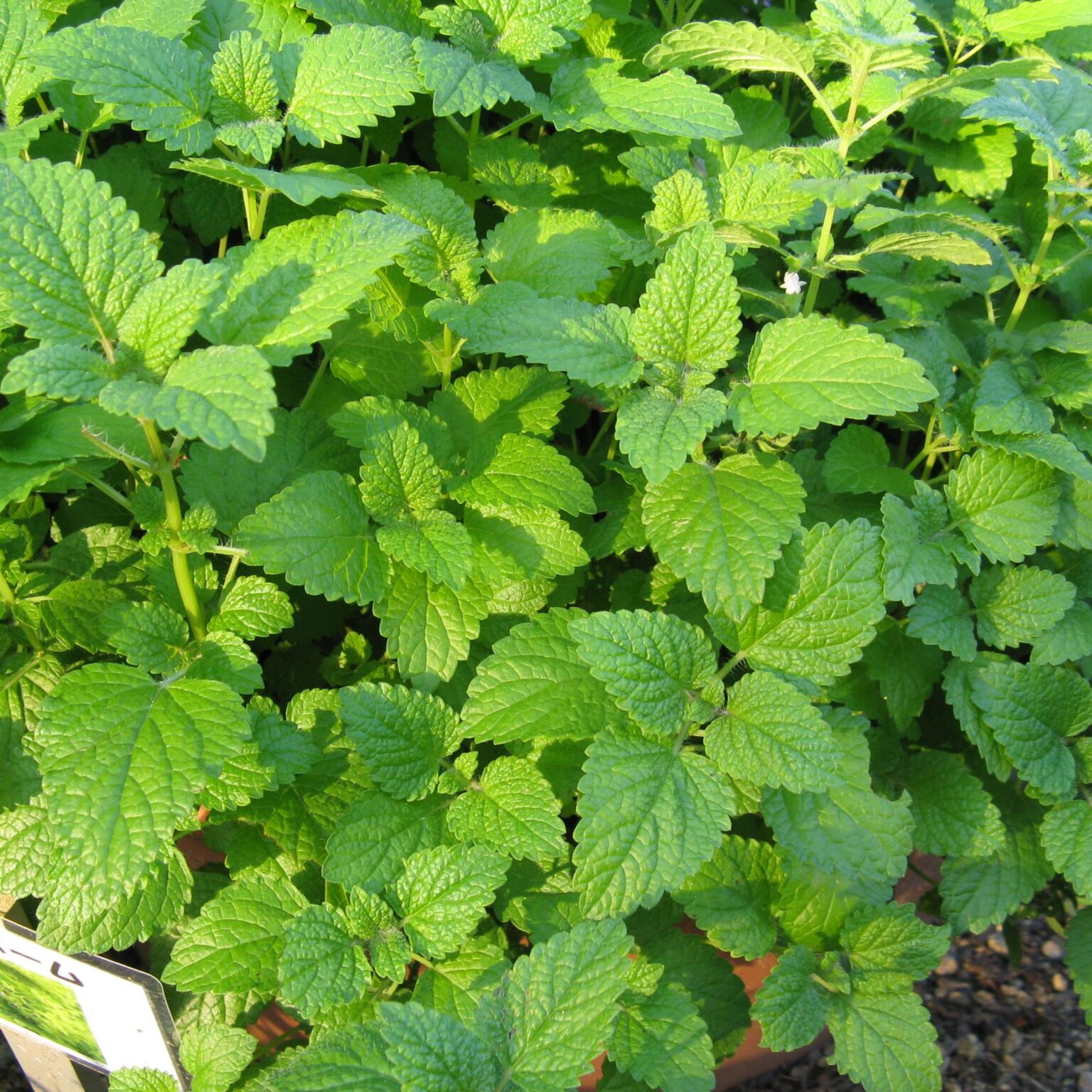
Lavender
Known for its aromatic scent and beautiful purple flowers, lavender is a staple in Mediterranean gardens and can tolerate dry conditions. English Lavender (Lavandula angustifolia) is hardy and perfectly suited to our climate.
Lavender is celebrated for its beautiful and aromatic blooms. The flowers appear in hues of purple, blue, pink, and white, and are arranged in dense, spike-like clusters atop slender stems. Lavender plants typically grow to a height of 1 to 3 feet (30 to 90 cm), forming compact mounds of fragrant foliage. The narrow, silvery-green leaves add a textural contrast to the garden and release a soothing aroma when gently brushed. Lavender’s flowers attract bees, butterflies, and other pollinators, bringing added life and movement to the garden.
Lavender is known for its hardiness and ability to thrive in a variety of climates. It is well-suited to the UK climate, particularly in southern and coastal regions where the weather is milder. Lavender plants prefer full sun and well-draining soil. They can tolerate drought conditions and are highly resistant to pests and diseases. These characteristics, along with their ability to withstand moderate frosts and colder temperatures, make lavender a reliable and low-maintenance choice for UK gardens.
Hardiness: H5 (-15ºC to -10ºC) Hardy – cold winter
Hardy through most of the UK even in severe winters. May not withstand open or exposed sites.
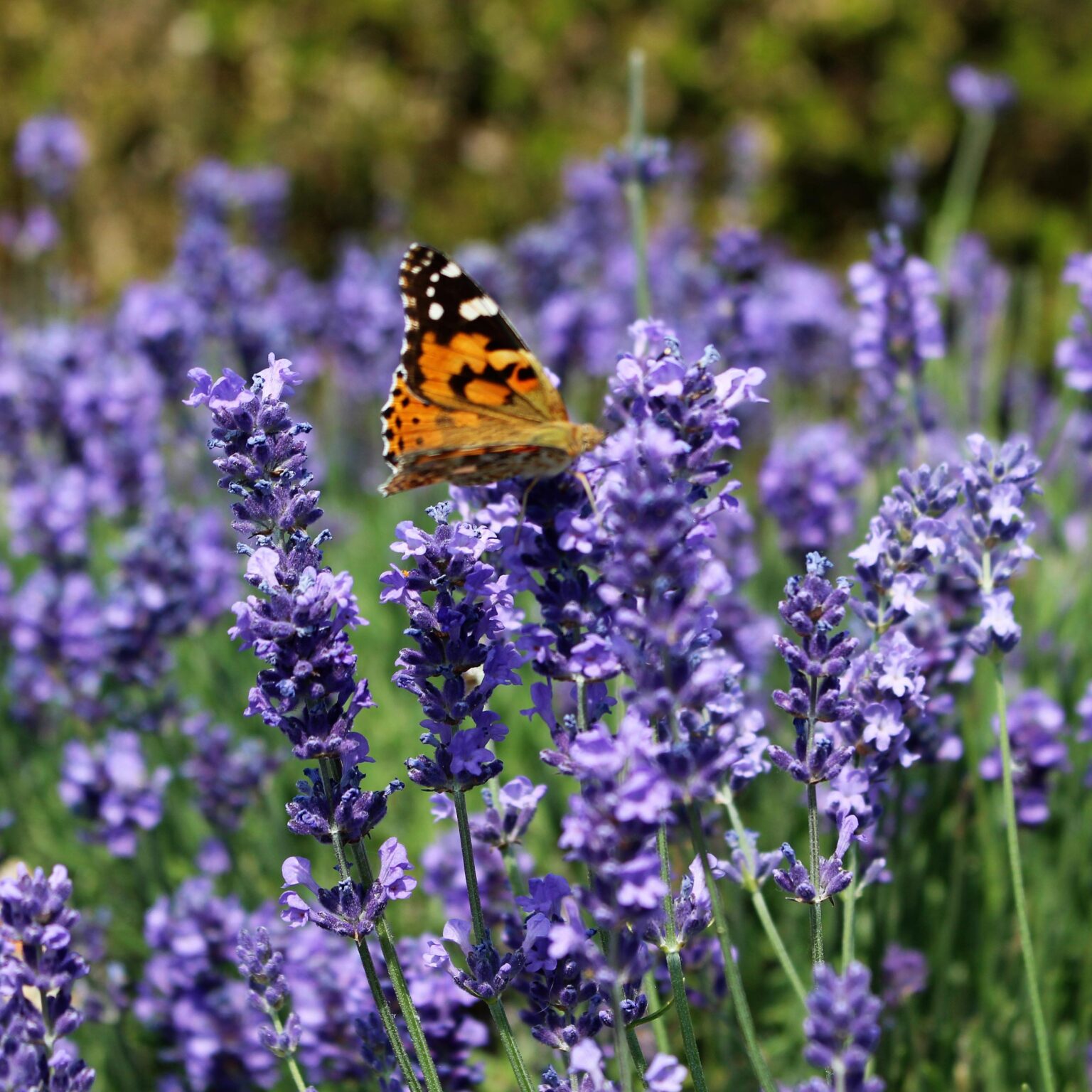
Agave
Agave plants provide a sculptural element to the garden, and by incorporating it into your UK garden, you can create a striking visual contrast against the lush greenery and soft textures typically associated with Mediterranean landscapes. Its architectural presence and succulent foliage add a touch of exoticism and evoke the sun-soaked beauty of arid Mediterranean regions. They thrive in dry and sunny conditions, with good drainage.
Agave plants showcase a captivating combination of architectural form and succulent foliage. They typically form rosettes of thick, fleshy leaves with striking textures, colours, and spiky margins. The leaves may be green, blue-gray, variegated, or even have vibrant hues of red or purple. Some Agave species also produce tall flowering stalks that rise from the centre of the rosette, adorned with clusters of tubular flowers. The mature plants vary in size, ranging from compact specimens suitable for containers to larger species that can reach several feet in height and width.
Agave’s hardiness varies depending on the species and cultivar. Some Agave species, such as Agave parryi and Agave americana, are more cold-hardy and can withstand temperatures as low as -15°C when provided with proper protection and well-drained soil. These species are well-suited to the UK climate, particularly in milder regions. However, it is important to consider the specific hardiness rating of the chosen Agave variety to ensure its suitability for your location.
Hardiness: H3 (-5ºC to 1ºC) Half-hardy – unheated glasshouse / mild winter
Hardy in coastal / mild areas except in hard winters and at risk from sudden (early) frosts. May be hardy elsewhere with wall shelter or good microclimate. Can survive with artificial winter protection.
- Agave parryi – H3 Half Hardy
- Agave americana – H3 Half Hardy
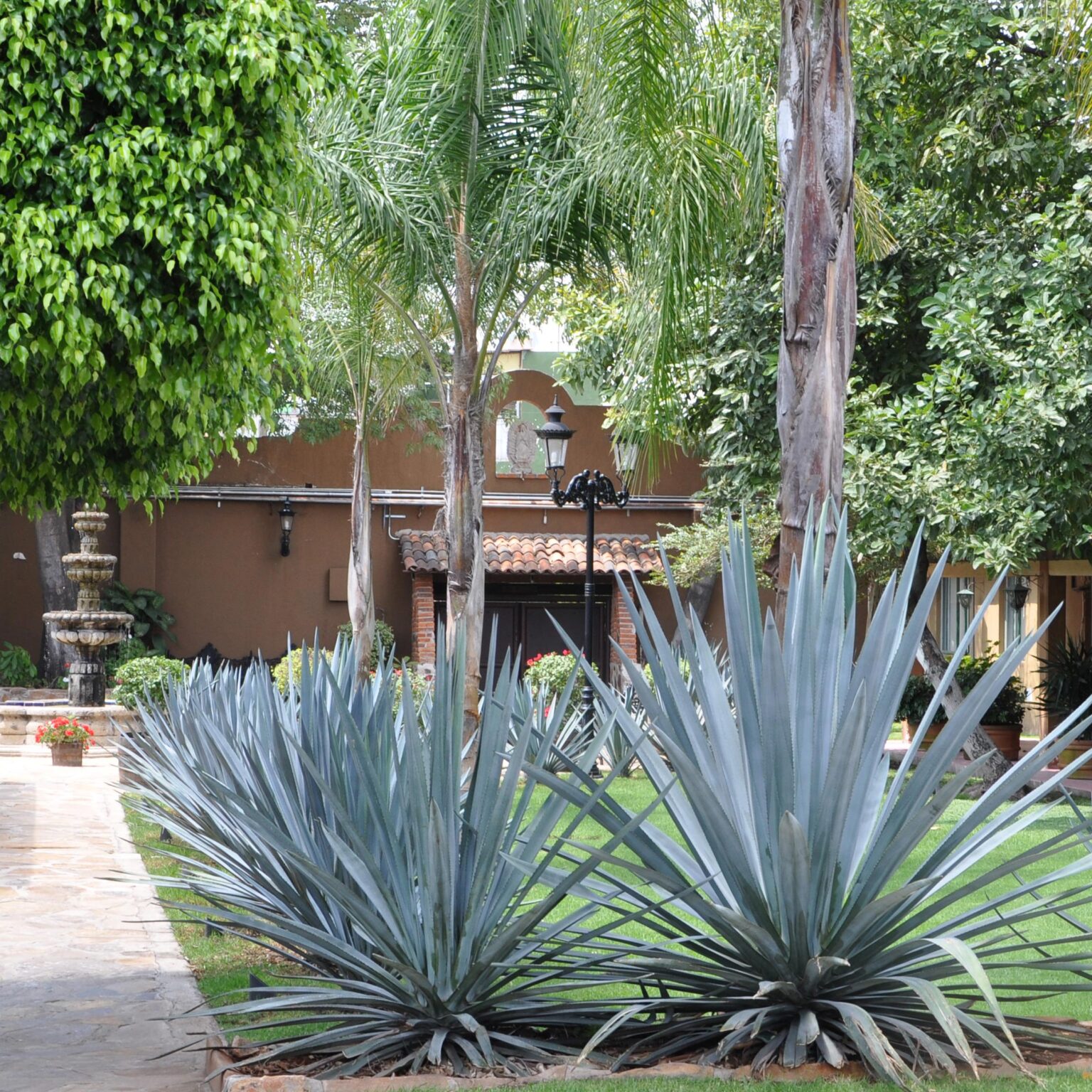
Jerusalem Sage (Phlomis)
Phlomis plants are characterized by their beautiful clusters of flowers and attractive foliage. They produce whorls of tubular flowers that vary in colour, including shades of yellow, orange, and purple. These eye-catching flowers bloom from late spring through summer, attracting pollinators to the garden. Phlomis also boasts velvety, heart-shaped or lanceolate leaves that are often gray-green or silver, lending a soft texture and visual interest even when the flowers have faded. The combination of flowers and foliage adds depth and beauty to any Mediterranean-style garden.
Many Phlomis species, particularly Phlomis russeliana and Phlomis fruticosa, are well-suited for the UK climate. They prefer well-drained soil and full sun, but can also tolerate partial shade. Phlomis plants are drought-tolerant once established, making them ideal for gardens with limited water availability. They are also relatively resistant to pests and diseases. With proper care, Phlomis can flourish in UK gardens and bring a Mediterranean touch to your outdoor space.
In the UK, Phlomis can thrive in various regions, including those with mild coastal climates. It can tolerate temperatures as low as -18°C, making it resilient in colder regions as well.
Hardiness: H5 (-15ºC to -10ºC) Hardy – cold winter
Hardy through most of the UK even in severe winters. May not withstand open or exposed sites.
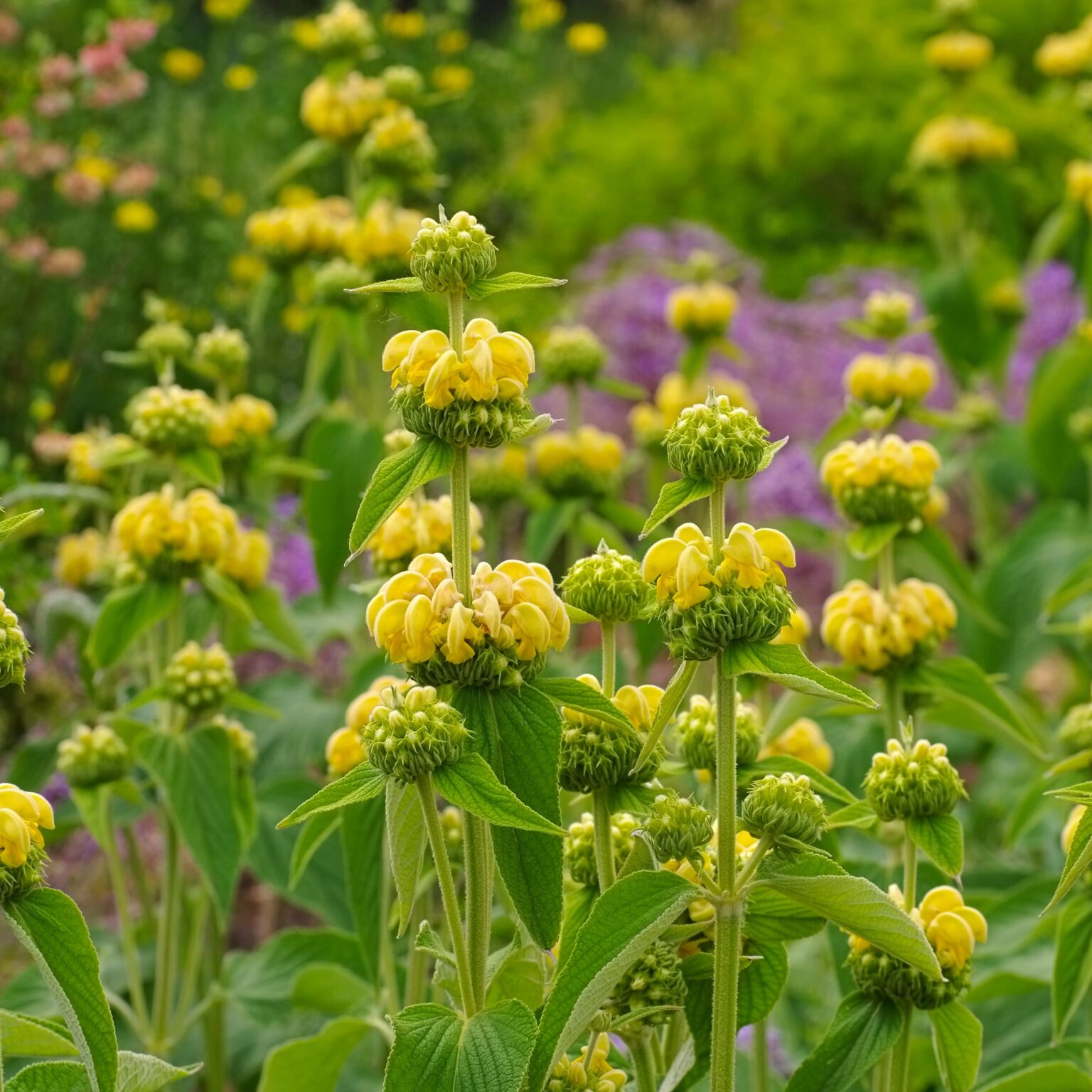
Sedge (Carex) ornamental grasses
Carex is a versatile grass that adds texture, elegance, and versatility to UK gardens designed in a Mediterranean style. With its adaptability, low-maintenance nature, and ability to thrive in various light and soil conditions, Carex offers an opportunity to create captivating compositions in your garden.
Carex grasses offer an attractive blend of grace and elegance. They typically have narrow, arching leaves that come in a variety of colours, including shades of green, bronze, brown, and variegated combinations. The delicate yet structured appearance of Carex grasses adds visual interest and textural contrast to a Mediterranean-style garden. Some Carex species produce ornamental seed heads, further enhancing their appeal. Overall, Carex’s foliage creates a soft, flowing effect that adds a touch of natural beauty to any garden design.
Carex looks particularly stunning when planted in groups or clusters. Create bold swaths or borders of Carex to add texture and visual interest to your Mediterranean-style garden. Mix different Carex species with other Mediterranean plants, such as lavender, rosemary, or agapanthus, to create a vibrant and harmonious composition.
Carex can also be planted in containers, making it an excellent choice for adding interest to patios, balconies, or small gardens. Choose compact Carex varieties for containers and position them along pathways or as edging plants to provide a soft, flowing contrast to the hard surfaces.
Carex, commonly known as sedge, is a highly adaptable grass genus that thrives in a range of conditions. Many Carex species are well-suited to the UK climate, making them suitable for Mediterranean-style gardens. They tolerate various soil types, including moist, well-drained, and even clay soils. Carex is generally shade-tolerant but can also handle full sun, allowing for versatile placement in your garden. Its adaptability to different moisture levels, including periods of drought, adds to its appeal in the context of sustainable gardening practices.
Hardiness: H5 (-15ºC to -10ºC) Hardy – cold winter
Hardy through most of the UK even in severe winters. May not withstand open or exposed sites (see H7 hardy varieties for these circumstances).
- Carex buchananii (Leatherleaf Sedge) – H5 Hardy – cold winter
- Carex comans (New Zealand Hair Sedge) – H4 Hardy – average winter
- Carex morrowii (Fisher’s Form) – H7 Very hardy
- Carex oshimensis ‘Evergreen’ – H7 Very hardy
- Carex testacea (Orange New Zealand Sedge) – H5 Hardy – cold winter
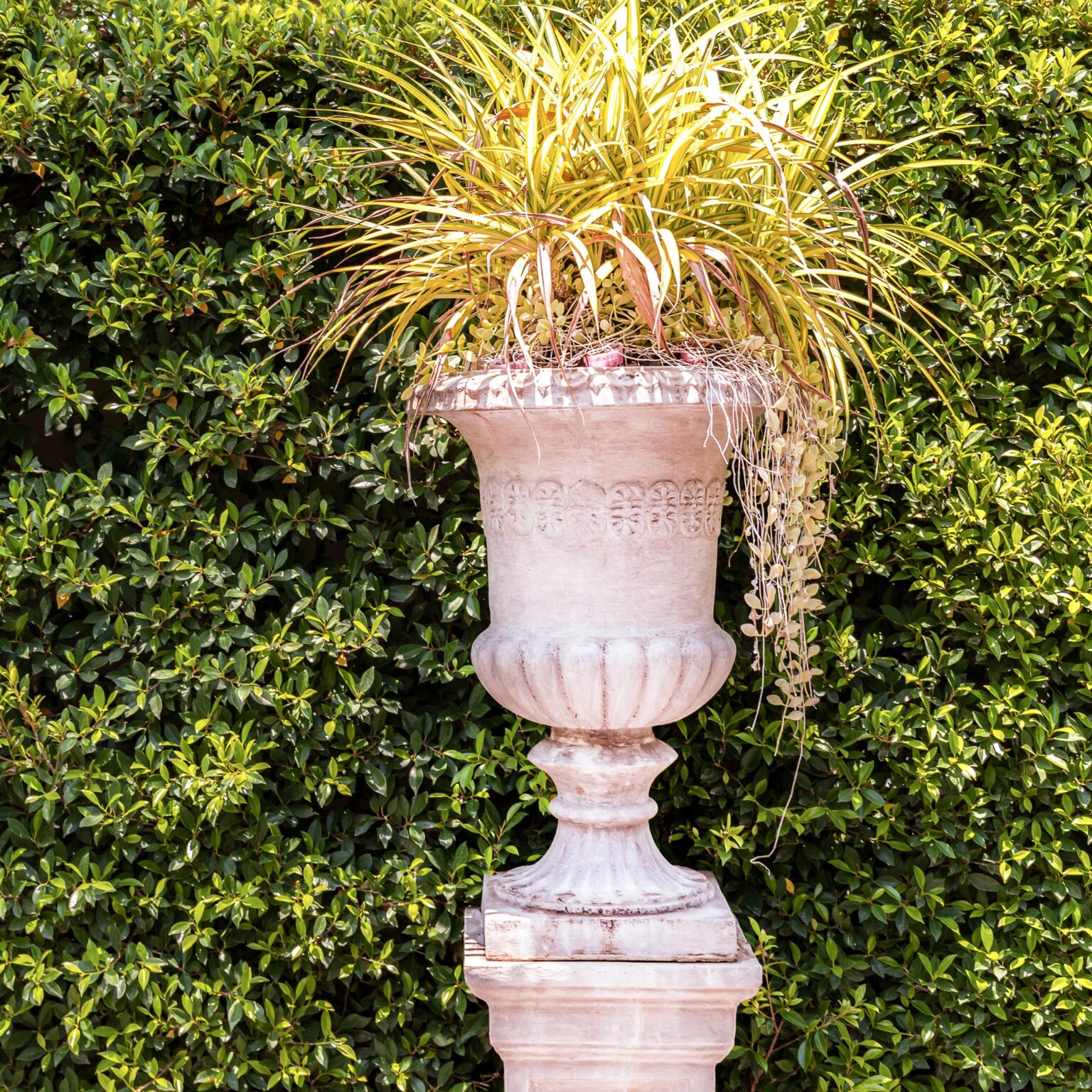
Almond Tree
Almond trees offer a striking presence in a Mediterranean-style garden. They typically have attractive, deciduous foliage that emerges in spring and transforms into a vibrant green canopy throughout the growing season. In early spring, before the leaves fully emerge, the branches become adorned with delicate, fragrant blossoms in shades of white or pale pink, creating a visually stunning display. The almond fruits develop later in the season and can add an element of interest to the tree.
While almond trees are commonly associated with warm Mediterranean climates, certain varieties have proven to be hardy and suitable for UK gardens. Introducing almond trees to your garden can bring a touch of exotic beauty and create a Mediterranean atmosphere even in the UK’s temperate climate. By selecting appropriate varieties and providing proper care, you can enjoy the delicate blossoms and nutritious almonds these trees have to offer.
Almond trees (Prunus dulcis) exhibit varying degrees of hardiness, and it is crucial to choose suitable cultivars for UK gardens. Some almond tree varieties, such as ‘Robijn’ and ‘Garden Prince’, have been specifically bred for their ability to withstand cooler climates and are more suitable for UK gardens. These varieties are typically categorized as “self-fertile” or “partially self-fertile,” meaning they do not require cross-pollination to produce almonds.
Hardiness: H5 (-15ºC to -10ºC) Hardy – cold winter
Can be grown outdoors in summer throughout most of the UK, while daytime temperatures are high enough to promote growth.
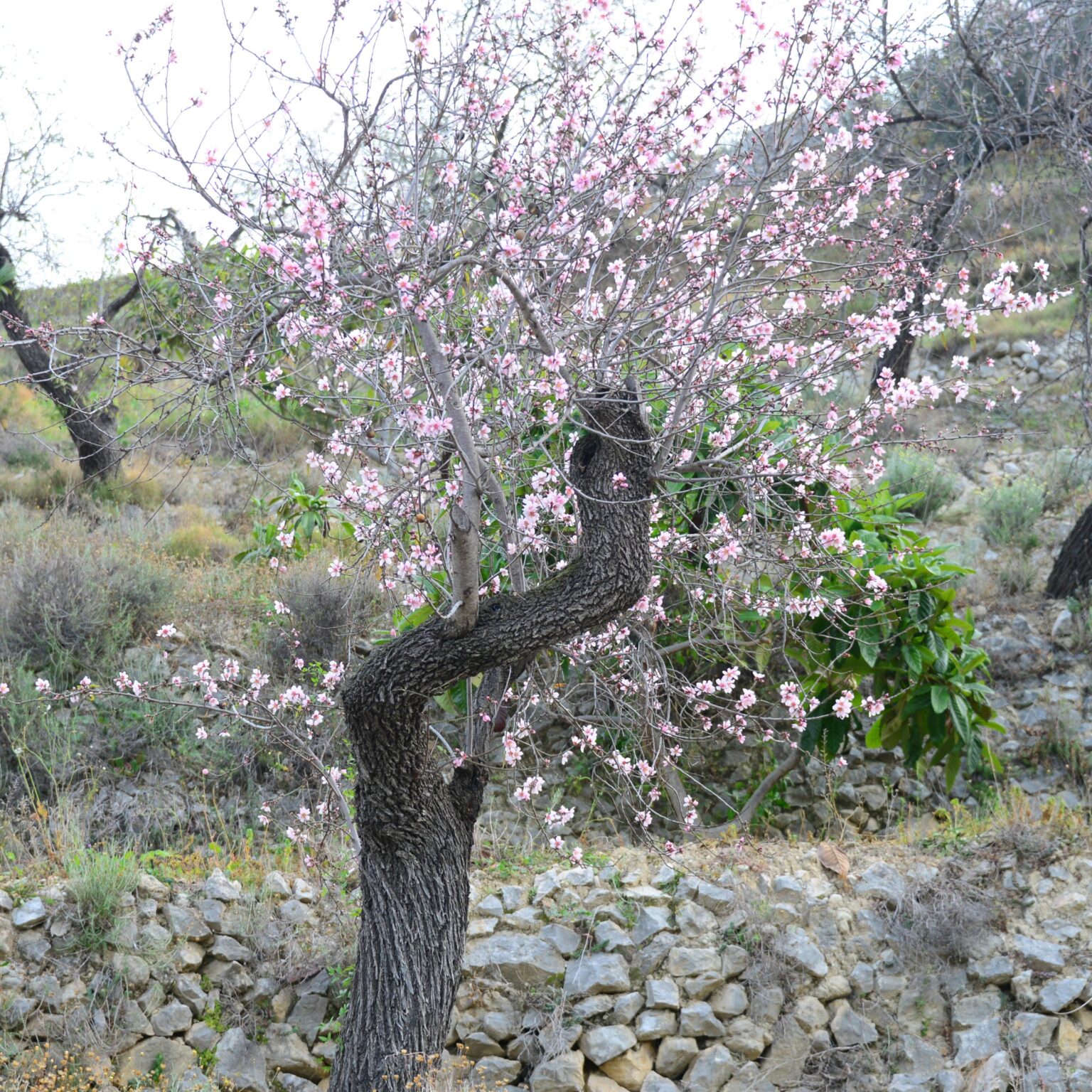
Arundo Donax (Spanish Reed)
Arundo donax is known for its impressive size and striking appearance. It features tall, sturdy stalks that can reach heights of 2 to 5 meters, creating an impressive vertical element in the garden. The stalks are topped with large, feathery plumes that emerge in late summer or early autumn. These plumes add a touch of elegance to the landscape, swaying gracefully in the breeze. The foliage consists of long, slender green leaves that create a lush backdrop for the plumes.
Arundo donax is considered hardy in the UK, particularly in the milder regions and sheltered locations. It can withstand temperatures as low as -10°C, making it suitable for most parts of the country. However, it may benefit from some winter protection, such as mulching around the base of the plant, especially in colder regions or during harsh winters. It is important to note that in some areas, Arundo donax has shown invasive tendencies, so it’s essential to monitor its growth and take necessary measures to prevent its spread.
Containment: Due to its vigorous growth and spreading nature, Arundo donax can be invasive in some regions. Consider planting it in containers or using root barriers to restrict its spread and prevent it from taking over neighbouring plants or areas of the garden.
Hardiness: H4 (-10ºC to -5ºC) Hardy – average winter
Hardy through most of the UK. May suffer foliage damage and stem dieback in harsh winters in cold gardens. Plants in pots are more vulnerable.
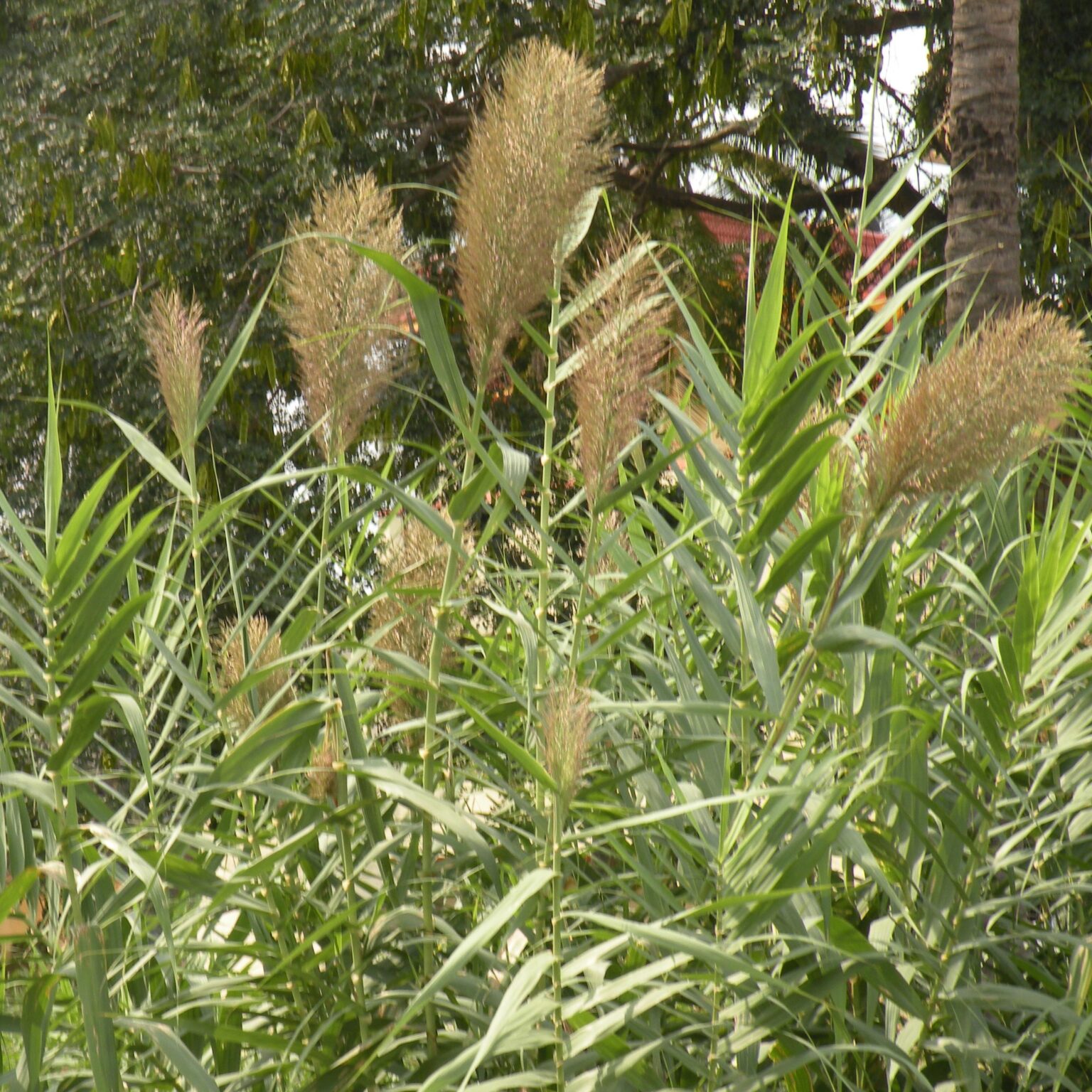
Japanese Blood Grass (Imperata Cylindrica) ‘Red Baron’
Imperata cylindrica, commonly known as Cogon grass or Japanese blood grass, is a visually captivating ornamental grass that can add a touch of drama to UK gardens, particularly in the context of designing a Mediterranean style garden. With its unique appearance and hardiness, Imperata cylindrica offers an opportunity to infuse your landscape with a Mediterranean vibe, reminiscent of sun-drenched terrains.
Imperata cylindrica is known for its distinct and eye-catching appearance. The grass features slender, upright blades that range in colour from vibrant green to deep burgundy-red. The most striking feature of this grass is the reddish colouration at the tips, which intensifies during the summer months, giving it the nickname “blood grass.” The combination of the vibrant foliage and upright growth habit creates a visually arresting display, making it an excellent choice for adding visual interest and contrast to your garden.
Imperata cylindrica is considered hardy in the UK, particularly in the milder regions with well-drained soils and ample sunlight. While it prefers warmer climates, it can adapt to a wide range of conditions and is capable of withstanding colder temperatures. However, providing some winter protection, such as mulching or situating it in a sheltered spot, can help ensure its survival during harsh winters.
Hardiness: H4 (-10ºC to -5ºC) Hardy – average winter
Hardy through most of the UK. May suffer foliage damage and stem dieback in harsh winters in cold gardens. Plants in pots are more vulnerable.
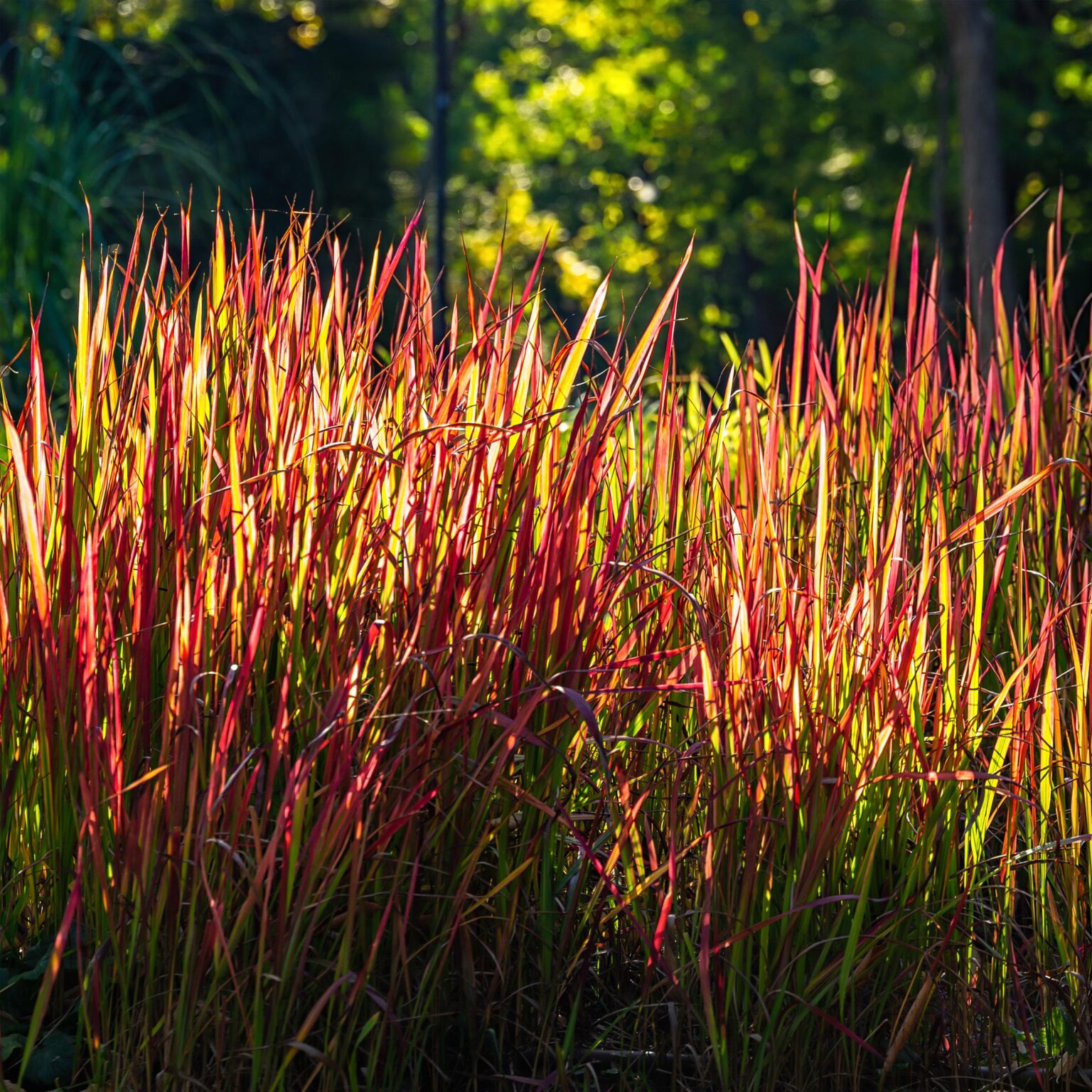
Callistemon
Callistemon is known for its eye-catching appearance and distinct bottlebrush-like flowers. The shrub typically features dense, bushy foliage composed of narrow, lance-shaped leaves. The flowers, which appear in spring and summer, are the highlight of the plant. They consist of cylindrical clusters of tiny, nectar-rich flowers, with long stamens that resemble the shape of a bottlebrush. The flowers come in a range of vibrant colours, including red, pink, yellow, and cream, creating a striking display.
Callistemon thrives in full sun, requiring at least 6 to 8 hours of direct sunlight daily to promote healthy growth and abundant flowering. Choose a location in your garden that receives ample sunlight, preferably with southern or western exposure, to maximize the plant’s potential.
While some Callistemon species are not fully hardy in the UK, there are several varieties that can tolerate the milder regions and coastal areas. Callistemon citrinus and Callistemon viminalis are among the more cold-tolerant species, able to withstand temperatures as low as -5°C to -10°C, making them suitable for many parts of the country. However, providing some winter protection, such as mulching or situating the plant in a sheltered spot, can help ensure its survival during colder winters.
Hardiness: H3 (-5ºC to 1ºC) Half-hardy – unheated glasshouse / mild winter
Hardy in coastal / mild areas except in hard winters and at risk from sudden (early) frosts. May be hardy elsewhere with wall shelter or good microclimate. Can survive with artificial winter protection.
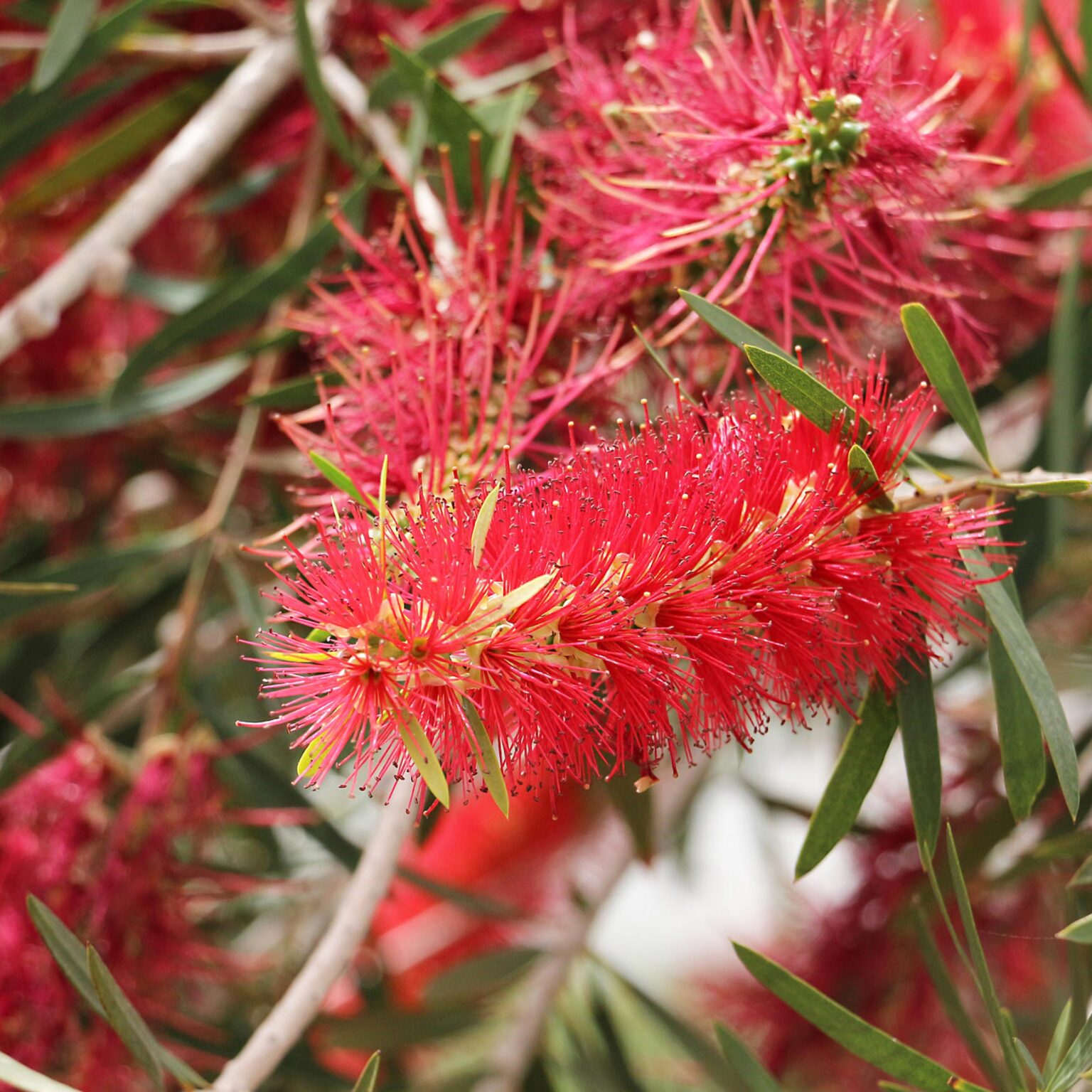
Euphorbia
Euphorbias display a wide range of appearances, but they generally have succulent-like stems and foliage. The foliage can vary from small, needle-like leaves to broader, lance-shaped or rounded leaves, depending on the species. Some varieties produce strikingly coloured flowers that are often inconspicuous, with vibrant bracts stealing the show. These bracts can be yellow, orange, red, or even green, adding a splash of colour to the garden.
Hardiness and Suitability for the UK Climate:
Many species of Euphorbia are well-suited for the UK climate and are considered hardy. They can tolerate a range of temperatures and weather conditions, making them adaptable to various regions of the country. Some Euphorbia species, such as Euphorbia griffithii ‘Fireglow’ and Euphorbia polychroma (Cushion Spurge), are particularly well-known for their hardiness and suitability to the UK climate.
Euphorbias are versatile plants that can be used in various design applications within a Mediterranean-style garden. Their diverse forms and colours allow them to be incorporated as accent plants, borders, or even as part of a mixed planting scheme. Some species, like Euphorbia characias ‘Wulfenii’, make excellent focal points with their impressive size and striking flowers. Pairing Euphorbias with other Mediterranean plants such as lavender, rosemary, and ornamental grasses can create a harmonious and cohesive garden design.
While Euphorbias offer beauty and versatility, it is important to note that some species contain toxic sap or latex that can cause skin irritation or harm if ingested. Take care when handling them and keep them out of reach of children and pets.
Hardiness: H4 to H7
- Euphorbia characias (Mediterranean spurge) – H4 Hardy – average winter
- Euphorbia amygdaloides (wood spurge) – H6 Hardy very cold winter
- Euphorbia griffithii ‘Fireglow’ – H7 Very hardy
- Euphorbia epithymoides (Spurge polychroma / Cushion Spurge) – H7 Very hardy
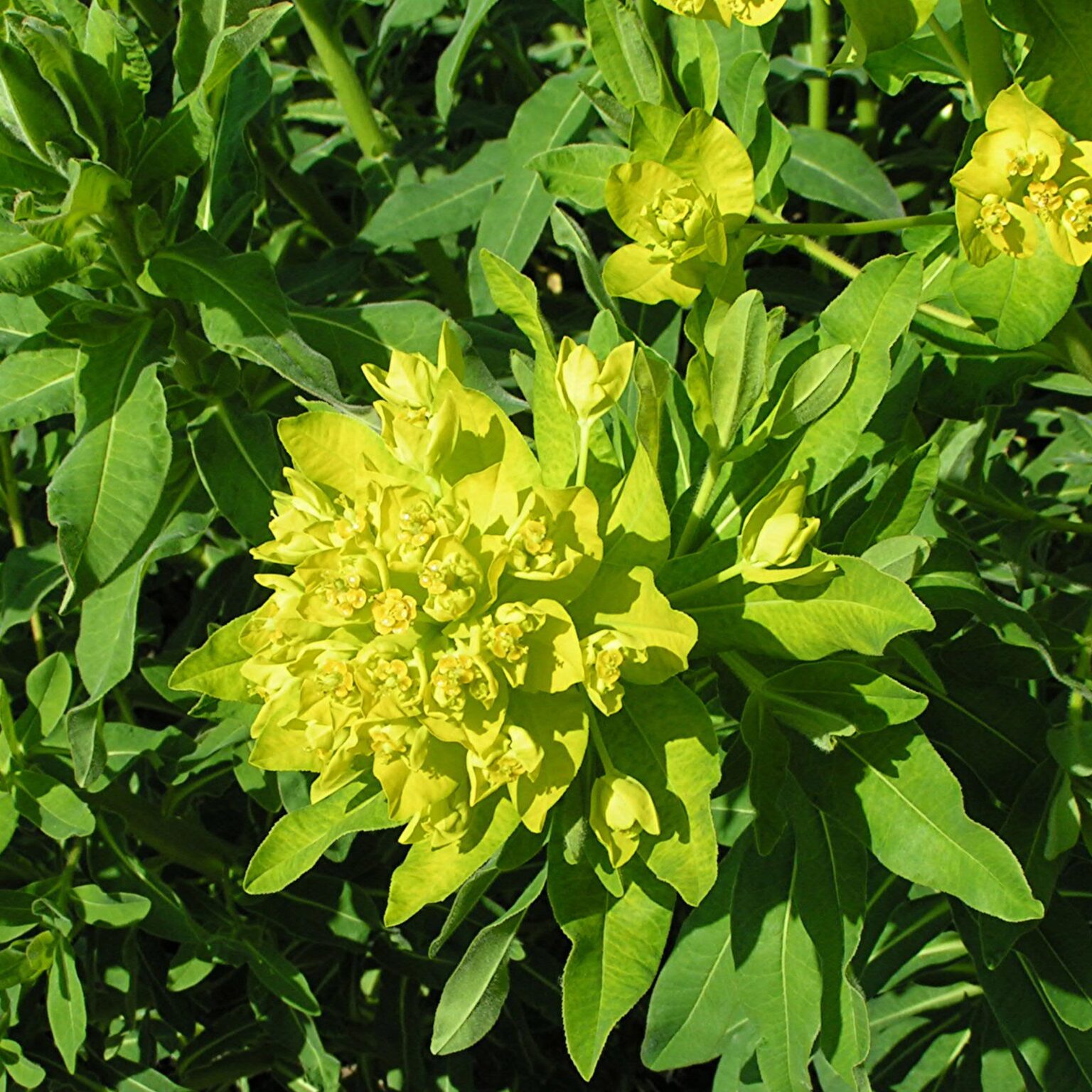
Fatsia Japonica
Fatsia japonica, also known as Japanese aralia or Fatsia, is an evergreen shrub that brings a touch of exotic charm to UK gardens. With its large, glossy leaves and architectural form, Fatsia japonica adds a tropical flair and visual interest to Mediterranean-style garden designs.
Fatsia japonica is renowned for its impressive foliage. The plant features large, deeply lobed, palmate leaves that can measure up to 30 centimetres in width. The glossy, dark green leaves provide an attractive backdrop in the garden, creating a lush and vibrant atmosphere. The leaves are held on stout stems, and their unique shape adds an architectural element to the landscape.
Fatsia japonica is well-suited to the UK climate, particularly in the milder regions and coastal areas. It is a hardy plant that can tolerate a range of conditions, including cold temperatures and coastal winds. In fact, it can withstand temperatures as low as -10°C to -15°C, making it suitable for most parts of the UK. However, providing some protection from cold, drying winds and situating the plant in a sheltered spot can enhance its performance and overall hardiness.
Hardiness: H4 (-10ºC to -5ºC) Hardy – average winter
Hardy through most of the UK. May suffer foliage damage and stem dieback in harsh winters in cold gardens. Plants in pots are more vulnerable.
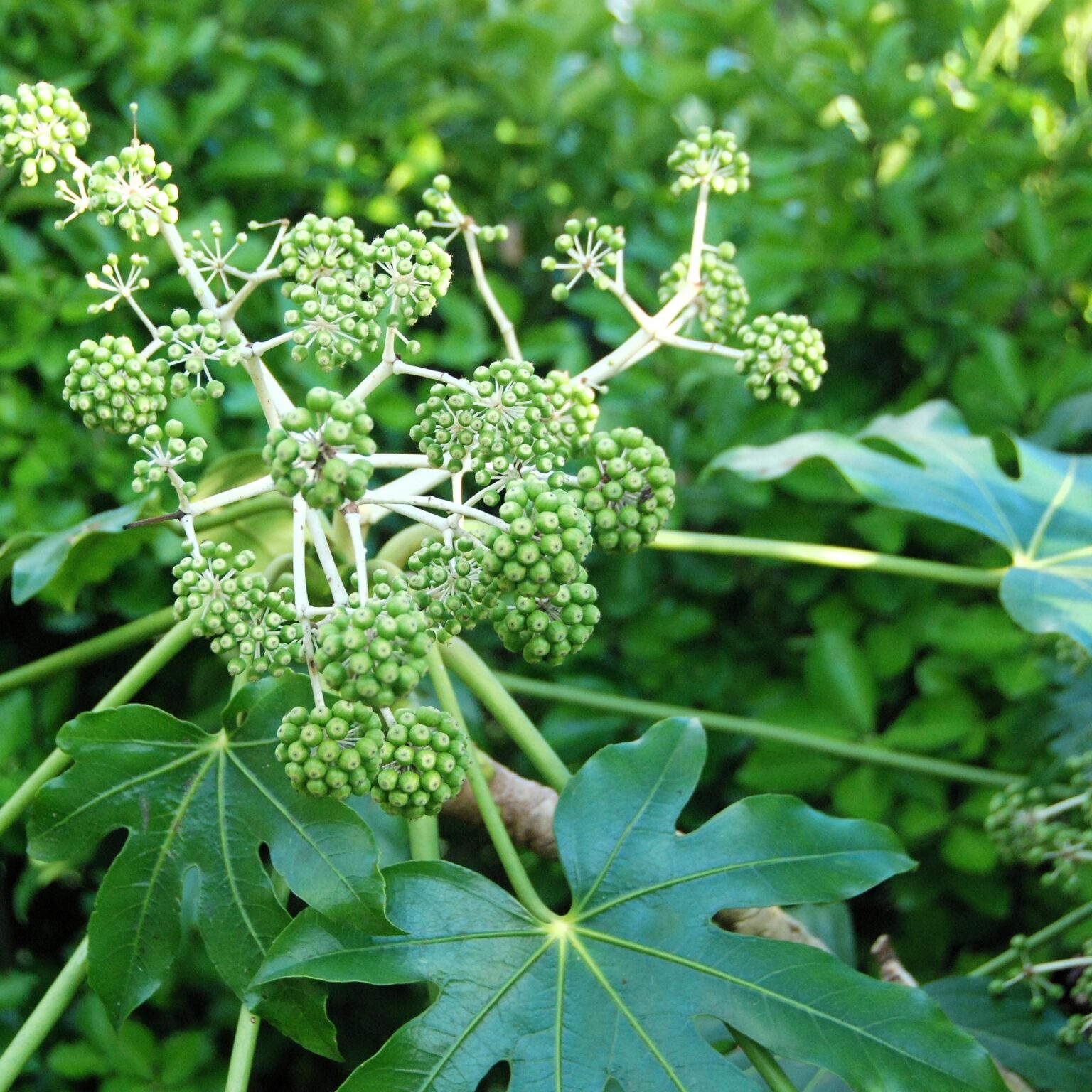
Festuca Glauca (Blue Fescue)
Festuca glauca, commonly known as Blue Fescue or Blue Festuca, is a delightful ornamental grass that brings a touch of grace and beauty to UK gardens. With its striking blue-gray foliage and compact growth habit, Festuca glauca is well-suited for creating a Mediterranean-style garden. This versatile grass not only adds texture and color contrast but also thrives in the UK climate with its hardiness and adaptability.
Festuca glauca is known for its tufted clumps of narrow, needle-like leaves that create a soft, fine-textured mound. The leaves exhibit a stunning blue-gray color that intensifies during the cooler months. In early summer, slender flower stalks rise above the foliage, bearing delicate greenish or purplish flowers. While the flowers are not the main attraction, they add a touch of interest to the overall appearance of the plant.
Festuca glauca is well-suited for the UK climate and is considered highly hardy. It can tolerate a range of temperatures, including cold and frost, making it suitable for most regions of the country. It is particularly resilient in coastal areas, where it can withstand strong winds and salt spray. Festuca glauca is also drought-tolerant, making it ideal for Mediterranean-style gardens that often feature low-maintenance and water-wise plants.
Hardiness: H4 (-10ºC to -5ºC) Hardy – average winter
Hardy through most of the UK. May suffer foliage damage and stem dieback in harsh winters in cold gardens. Plants in pots are more vulnerable.
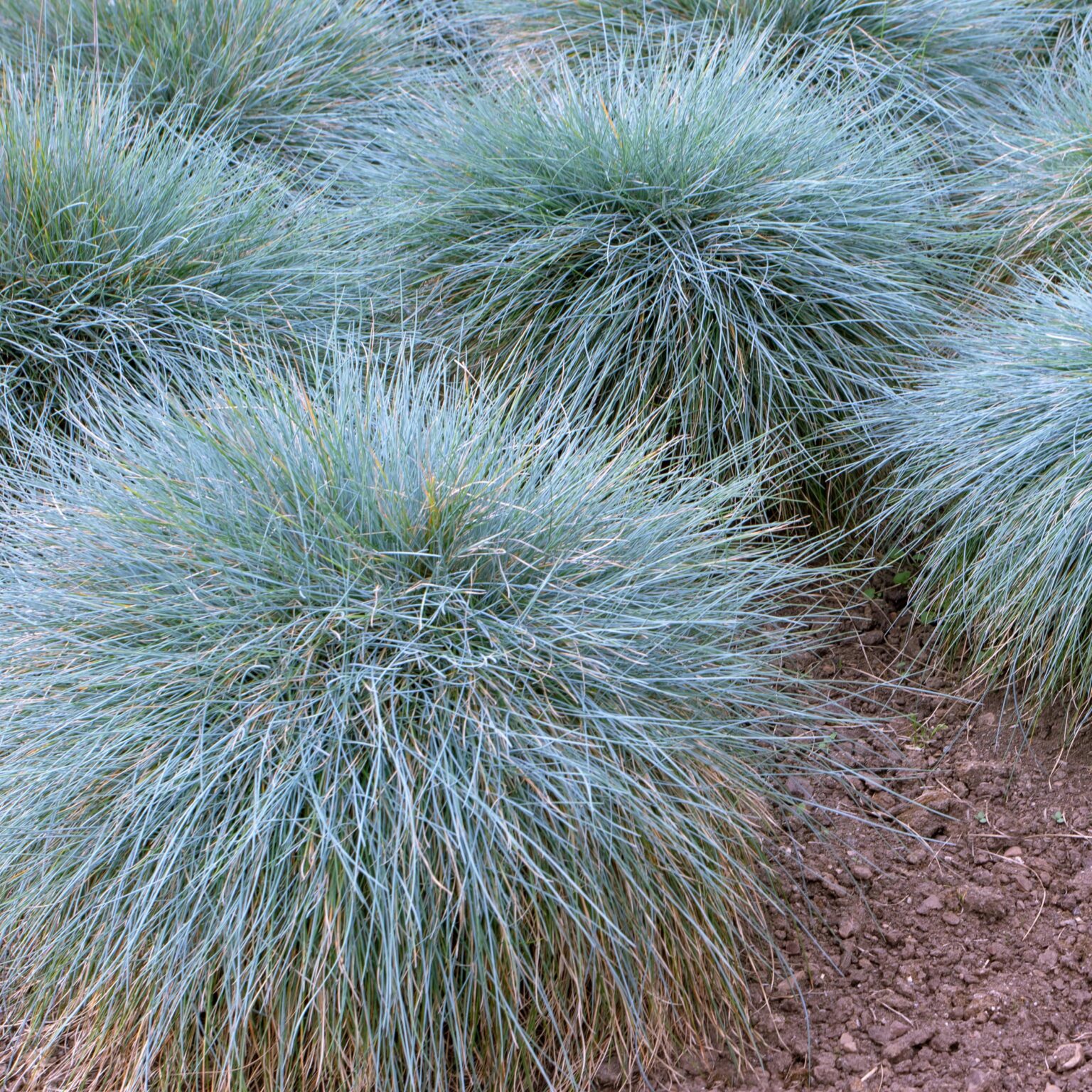
Fig Tree
The fig tree (Ficus carica) is a captivating and iconic tree that brings a touch of Mediterranean elegance to UK gardens. With its distinctive lobed leaves, attractive bark, and delicious fruits, the fig tree adds both beauty and functionality to a Mediterranean-style garden design. While fig trees may require some protection in colder regions, they can thrive and produce a bountiful harvest in the UK climate with proper care and siting.
Fig trees are known for their unique and attractive appearance. They feature large, palmate leaves with deep lobes, giving them a tropical and exotic look. The leaves are a rich green colour and have a slightly leathery texture. During the growing season, the tree’s canopy is dense and provides a lush and inviting atmosphere. In late summer or early autumn, small green figs start to form, gradually ripening into luscious fruits that can be harvested for culinary use.
Fig trees can be grown successfully in the UK, especially in milder regions and in areas with sheltered microclimates. While they are not fully hardy, they can withstand cool temperatures and occasional frosts. Choosing the right variety and providing proper protection during colder months can help ensure their survival. It is advisable to plant fig trees against a south-facing wall or in a sunny, sheltered spot to maximize their chances of withstanding UK weather conditions.
Hardiness: H4 (-10ºC to -5ºC) Hardy – average winter
Hardy through most of the UK. May suffer foliage damage and stem dieback in harsh winters in cold gardens. Plants in pots are more vulnerable.
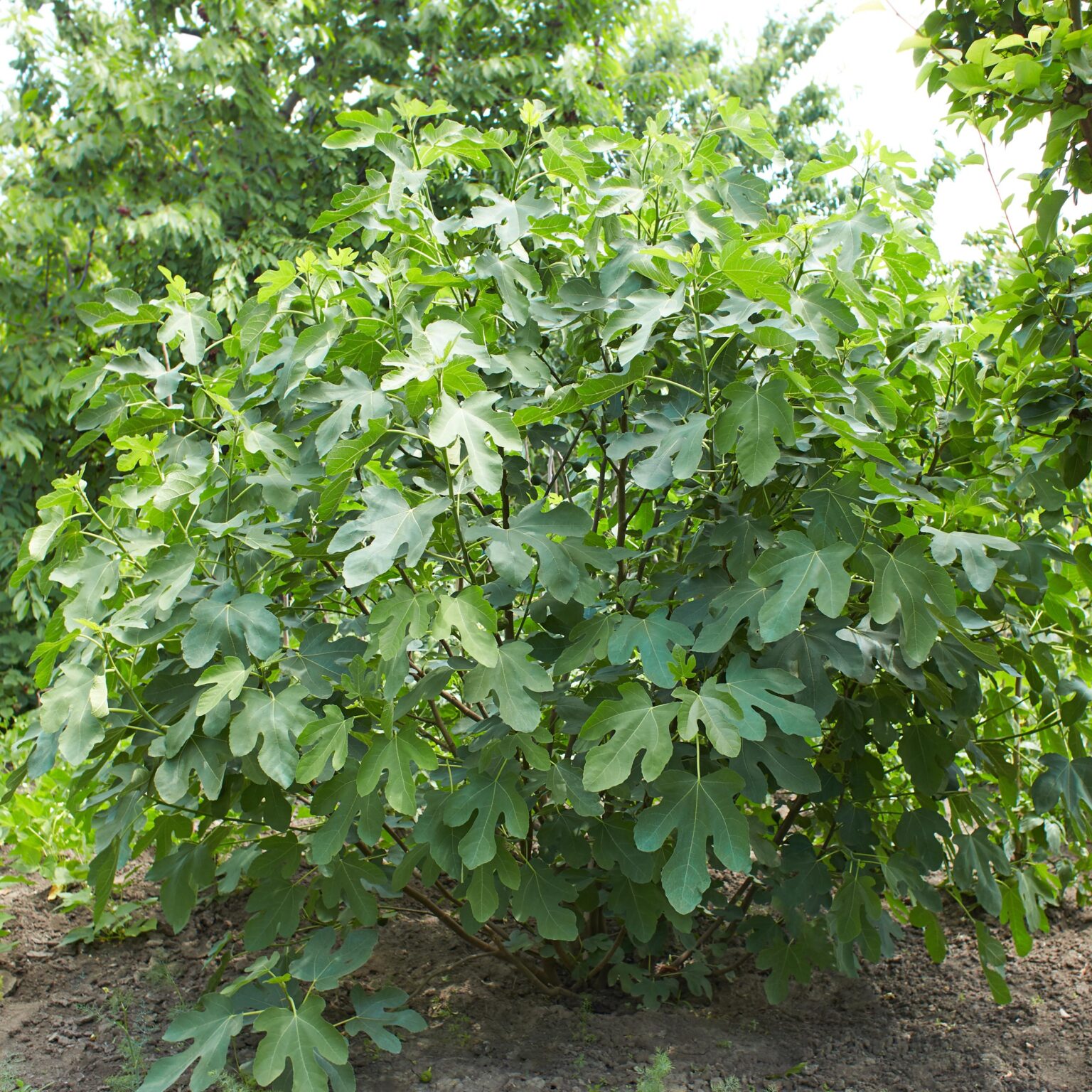
Grape Vine (Vitis vinifera)
With its lush foliage, graceful tendrils, and delicious fruits, the grape vine is not only visually appealing but also offers the opportunity to harvest your own homegrown grapes. While specific varieties and proper siting are essential for success in the UK climate, grape vines can thrive and contribute to the ambiance of a Mediterranean-style garden design.
Grape vines feature large, lobed leaves that create a dense canopy of lush green foliage, providing a visually appealing backdrop. The vines develop delicate tendrils that climb and twine, adding an element of grace and movement to the landscape. During the growing season, clusters of small flowers emerge, giving way to clusters of grapes that ripen in late summer or early autumn, showcasing a variety of colours from green to red or purple.
With the right selection of hardy grape varieties and appropriate siting, grape vines can thrive in the UK climate. There are several grape varieties that are specifically bred for cooler climates and exhibit excellent hardiness. These hardy varieties can tolerate lower temperatures, withstand occasional frosts, and produce delicious fruits. Additionally, planting grape vines against a south-facing wall or in a sheltered location can help maximize their chances of success.
Hardiness: H5 (-15ºC to -10ºC) Hardy – cold winter
Can be grown outdoors in summer throughout most of the UK, while daytime temperatures are high enough to promote growth.
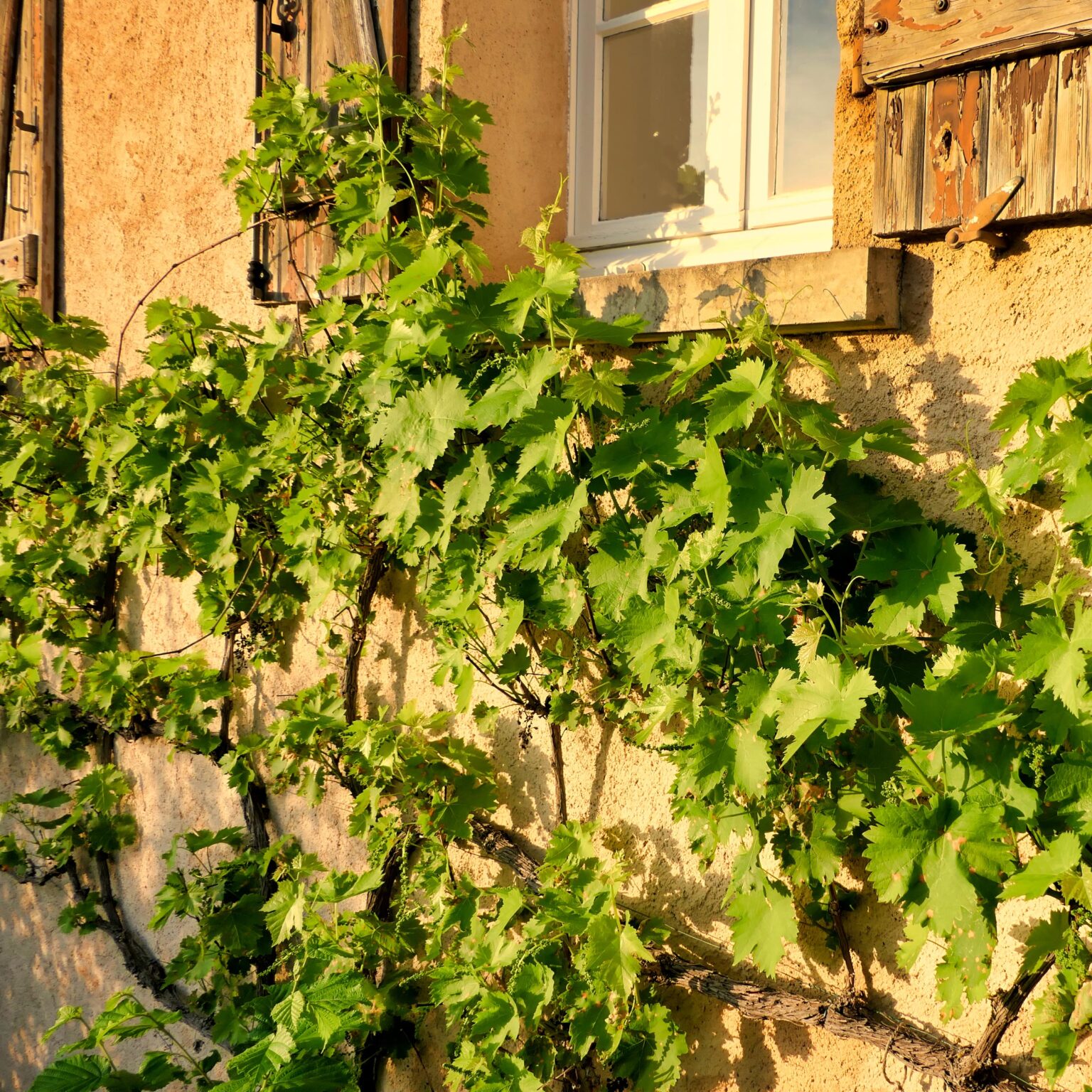
Kniphofia (Red Hot Pokers)
Kniphofia, commonly known as Torch Lily or Red Hot Poker, is a stunning perennial that adds vibrant colours and vertical interest to UK gardens, beautifully complementing a Mediterranean-style design. With its tall spikes of tubular flowers and grass-like foliage, Kniphofia creates a striking visual display. While certain varieties are more suitable for the UK climate, with proper care and siting, these plants can thrive and contribute to the Mediterranean ambiance of your garden.
Kniphofia plants showcase a distinctive and eye-catching appearance. They feature long, erect flower spikes that rise above the foliage, resembling torches or fiery pokers. The flowers are tubular and come in various shades of red, orange, and yellow, creating a stunning display of warm colors. The grass-like foliage forms dense clumps of narrow, strap-like leaves, providing an attractive backdrop to the vibrant blooms. The overall effect is a bold and dynamic presence in the garden.
Kniphofia varieties differ in their hardiness, and it is important to select those that are best suited to the UK climate. Some species and cultivars are more tolerant of cooler temperatures and can withstand frost. For UK gardens, it is recommended to choose hardy varieties that have been bred specifically for colder regions. With proper siting and protection, Kniphofia can thrive and bloom reliably in the UK climate.
Hardiness: H5 (-15ºC to -10ºC) Hardy – cold winter
Can be grown outdoors in summer throughout most of the UK, while daytime temperatures are high enough to promote growth.
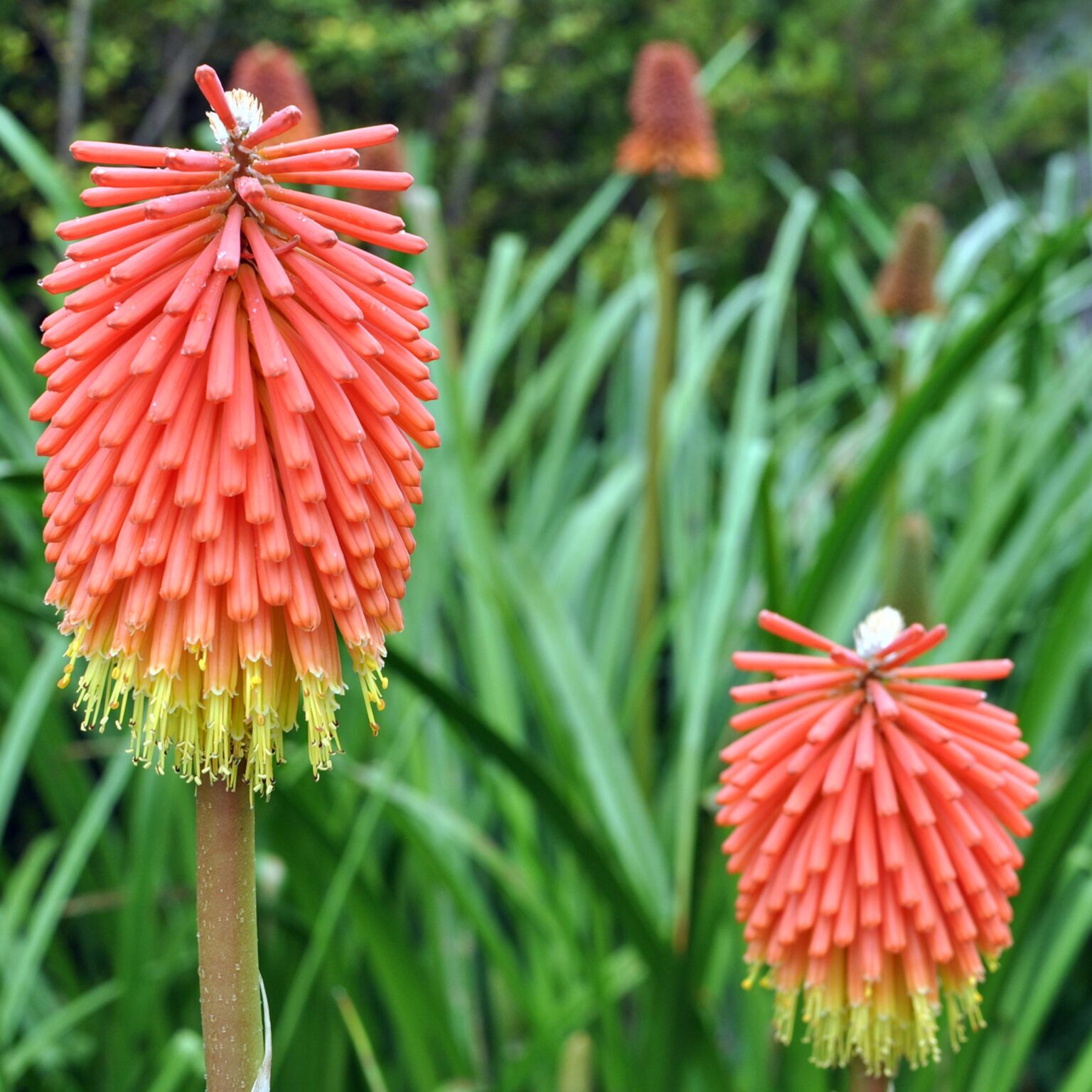
Mahonia aquifolium ‘Apollo’ (Oregon grape)
Mahonia aquifolium, commonly known as Oregon Grape, is an evergreen shrub that adds year-round beauty to UK gardens, contributing to the charm of a Mediterranean-style design. With its holly-like foliage, vibrant yellow flowers, and blue-purple berries, Mahonia aquifolium offers visual interest and versatility. This hardy shrub is well-suited to the UK climate and provides an attractive backdrop or focal point in Mediterranean-inspired landscapes.
Mahonia aquifolium features glossy, leathery, holly-like leaves that are divided into spiky, toothed leaflets. The foliage is deep green, creating a lush and vibrant backdrop throughout the year. In late winter or early spring, this shrub produces clusters of fragrant yellow flowers, which contrast beautifully against the dark foliage. Following the blooms, blue-purple berries develop, providing additional ornamental interest. The overall effect is a robust and visually appealing shrub that adds texture and colour to the garden.
Mahonia aquifolium is well-known for its excellent hardiness and suitability to the UK climate. It is a tough and resilient shrub that can thrive in a variety of conditions. It tolerates both sun and shade, making it adaptable to different garden settings. Additionally, it is highly resistant to cold temperatures and can withstand frost and harsh winter conditions. Mahonia aquifolium is a reliable choice for UK gardens, even in colder regions.
Hardiness: H5 (-15ºC to -10ºC) Hardy – cold winter
Can be grown outdoors in summer throughout most of the UK, while daytime temperatures are high enough to promote growth.
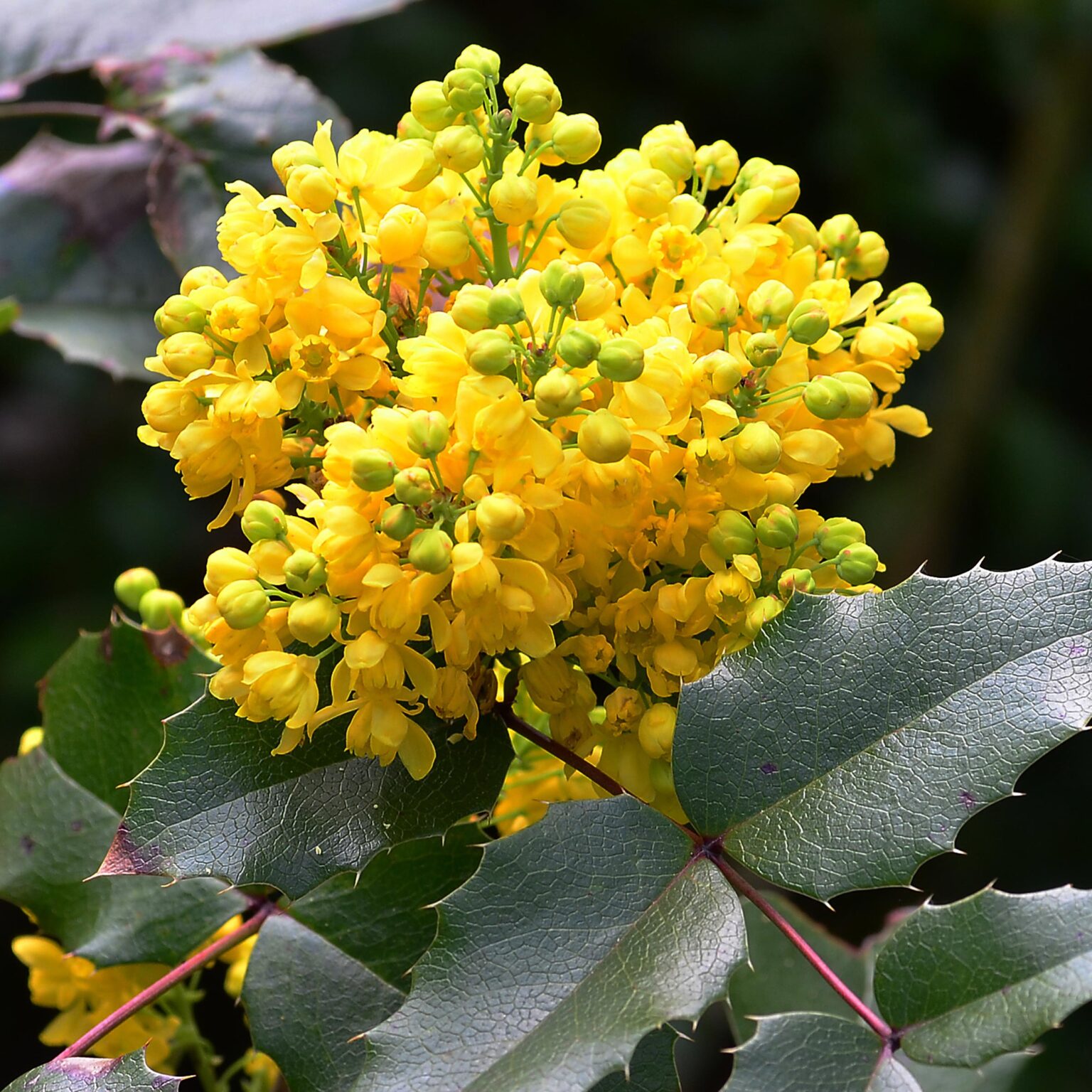
Miscanthus sinensis ‘Zebrinus’
Miscanthus sinensis, commonly known as Chinese Silver Grass or Maiden Grass, is a graceful and versatile ornamental grass that adds elegance and movement to UK gardens. With its slender, arching foliage and feathery plumes, Miscanthus sinensis creates a captivating display in Mediterranean-style garden designs. This hardy grass thrives in the UK climate and offers year-round interest, making it a valuable addition to any landscape.
Miscanthus sinensis is characterized by its graceful and airy appearance. The grass forms dense clumps of narrow, arching leaves that are typically green but can also exhibit variegated or bronze hues, depending on the variety. In late summer or early autumn, feathery plumes emerge above the foliage, initially appearing as silvery or purplish tassels that mature to a creamy white or pinkish colour. These plumes persist well into the winter, providing visual interest and a textural element to the garden.
Miscanthus sinensis is well-suited to the UK climate and is known for its hardiness. It can withstand a range of temperatures, including cold winters and hot summers. This grass is particularly resilient and can tolerate a variety of growing conditions, making it an excellent choice for UK gardens. However, it is important to select appropriate varieties that have been specifically bred for colder regions to ensure optimal performance and winter survival.
Hardiness: H6 (-20ºC to -15ºC) Hardy – Very Cold Winter
Hardy throughout the UK and northern Europe.
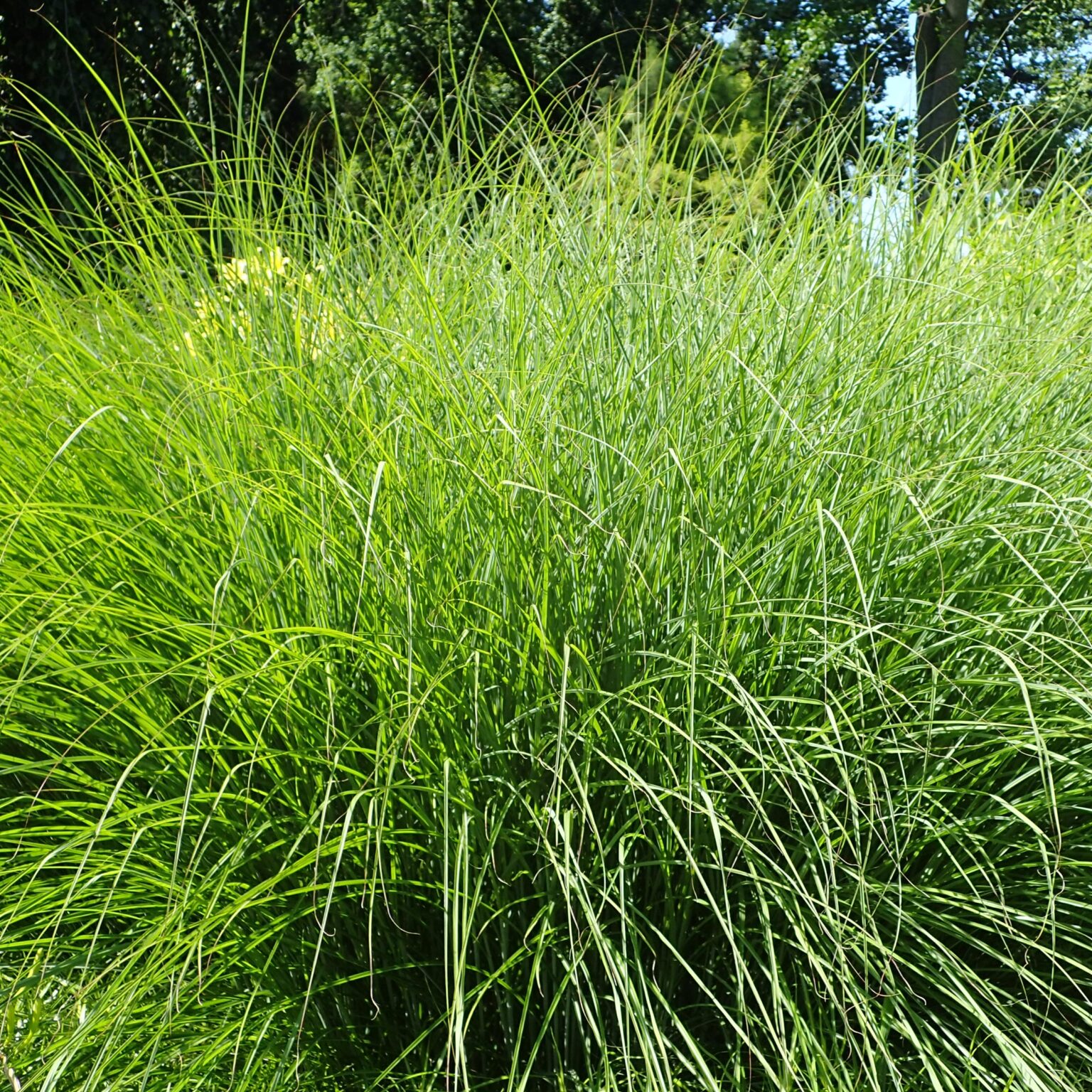
Pampass Grass (Cortaderia selloana)
Pampas Grass is a visually stunning and eye-catching accent plant that can add drama and texture to UK gardens, particularly in the context of a Mediterranean-style design. With its tall plumes and graceful foliage, Pampas Grass creates a sense of grandeur and elegance. Although it requires careful consideration in the UK climate, it can be a valuable addition when specific conditions are met.
Pampas Grass is renowned for its majestic and impressive appearance. It features long, slender blades of arching, grass-like foliage that form dense clumps. The foliage is typically green, but some cultivars may have variegated or golden-coloured leaves. The most striking feature of Pampas Grass is its towering plumes, which emerge in late summer or early autumn. These plumes can reach heights of up to 2 meters (6.5 feet) or more and are composed of feathery, silky-white or pale pink flowers. They create a stunning visual display and add movement and texture to the garden.
Pampas Grass is native to South America and is adapted to warmer climates. In the UK, it requires specific conditions to thrive. While it can be grown successfully in the milder regions of the country, it may struggle in areas with harsh winters or prolonged periods of freezing temperatures. Therefore, it is crucial to select hardier varieties, such as Cortaderia selloana ‘Pumila,’ which are better suited to the UK climate and have a higher chance of survival.
Hardiness: H6 (-20ºC to -15ºC) Hardy – Very Cold Winter
Hardy throughout the UK and northern Europe.
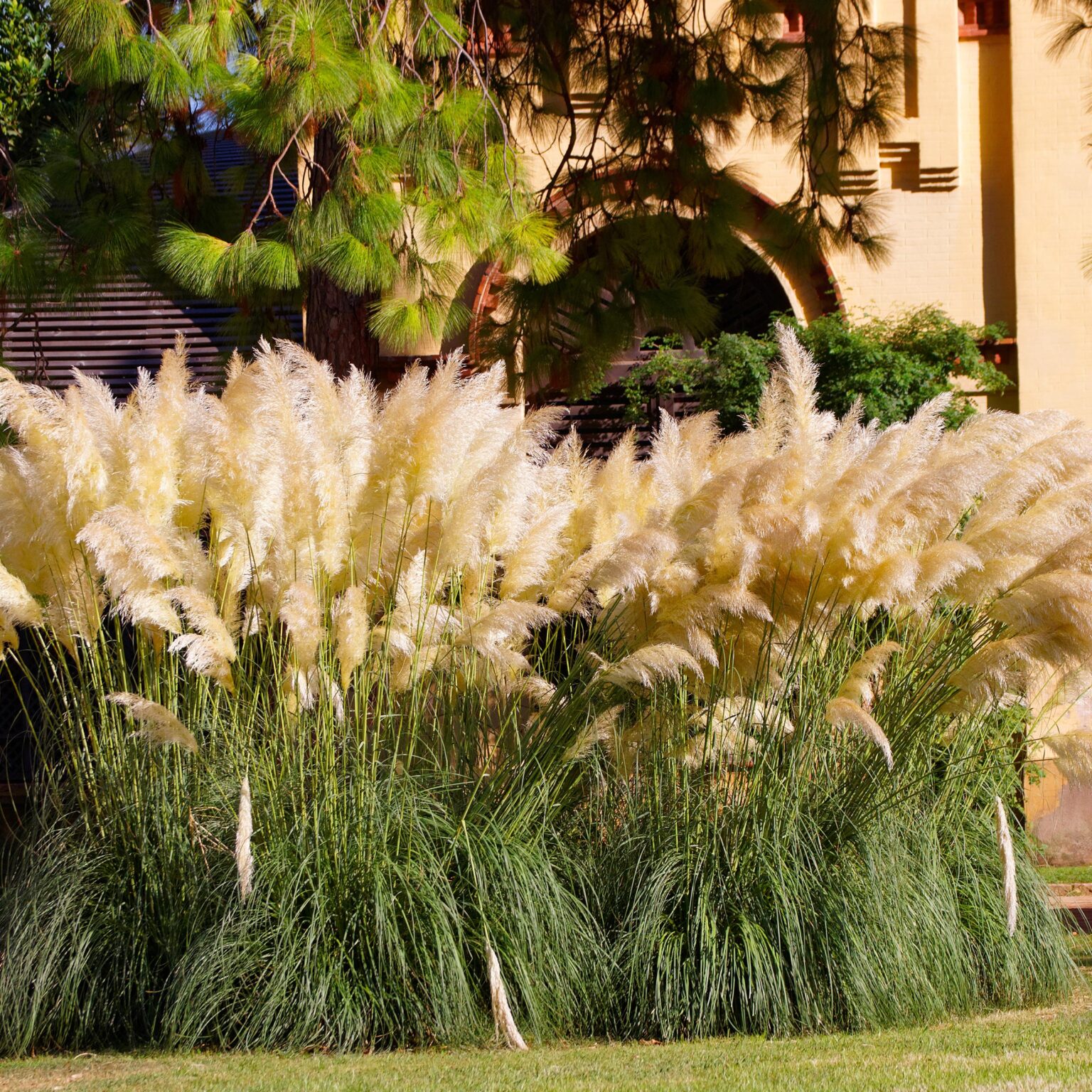
Phormium (New Zealand Flax)
Phormium, commonly known as New Zealand Flax, is a bold and architectural plant that adds a touch of exoticism to UK gardens, particularly when trying to capture the look and feel of a Mediterranean-style garden design. With its vibrant, sword-like leaves and diverse colour variations, Phormium brings a dynamic element to the landscape. While its hardiness in the UK climate may vary, selecting appropriate varieties can ensure successful growth and contribute to a captivating garden design.
Phormium is prized for its striking and distinctive appearance. It features long, sword-shaped leaves that arise from a central clump or rosette. The foliage is typically stiff and leathery, and the leaves can vary in colour, ranging from shades of green to bronze, burgundy, red, or variegated combinations. Some cultivars exhibit bold stripes or contrasting margins, adding further visual interest. The mature plants can reach heights of up to 2 meters (6.5 feet), creating a vertical presence in the garden.
The hardiness of Phormium in the UK climate depends on the specific variety and the location within the country. While some Phormium species may be more sensitive to frost and colder temperatures, there are cultivars, such as Phormium tenax ‘Purpureum’ or Phormium cookianum, that are better suited to the milder regions and coastal areas of the UK. It is important to choose the appropriate variety and provide protection in colder regions or during severe winters to ensure their survival.
Hardiness: H4 (-10ºC to -5ºC) Hardy – average winter
Hardy through most of the UK. May suffer foliage damage and stem dieback in harsh winters in cold gardens. Plants in pots are more vulnerable.
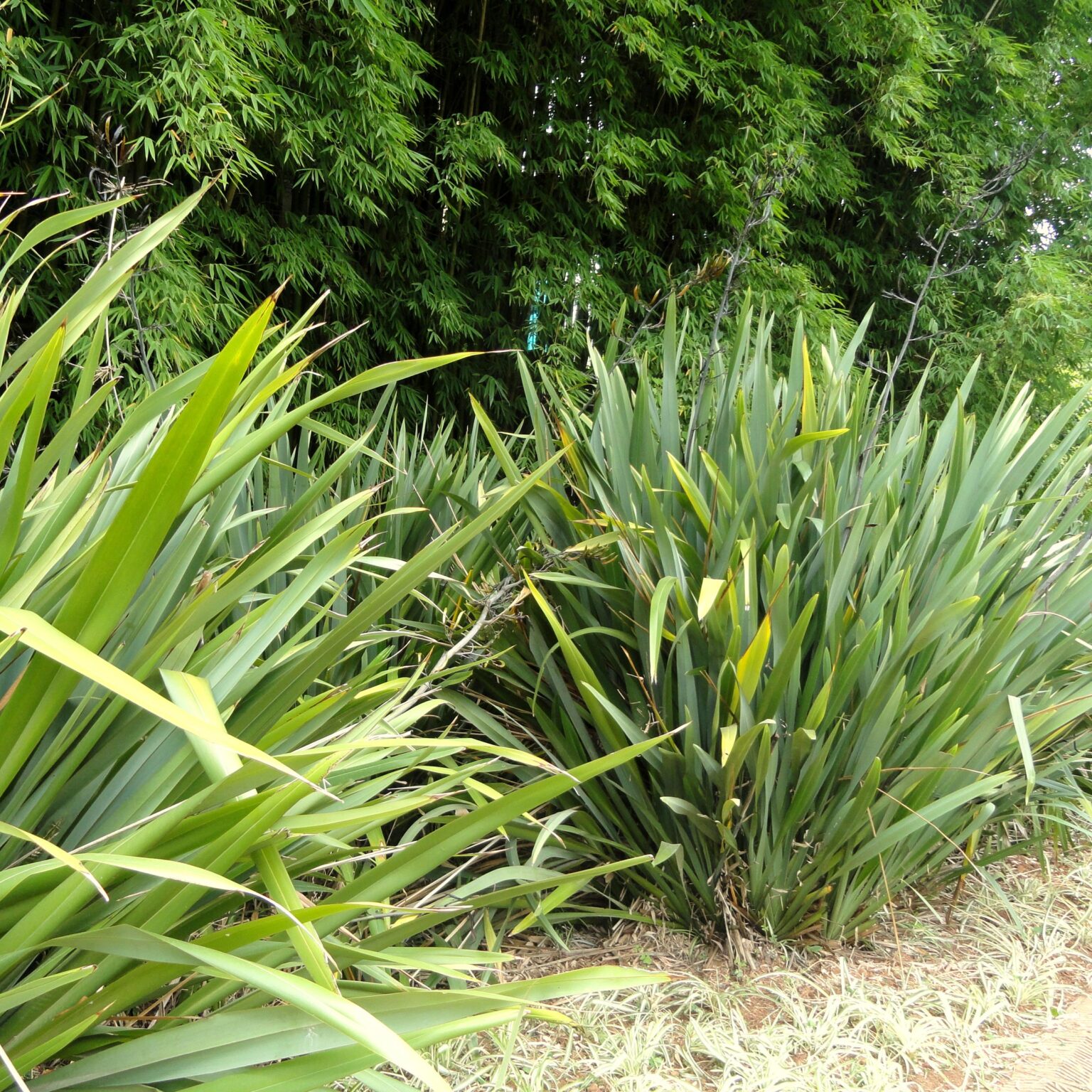
Hylotelephiums/Sedum ‘Herbstfreude’ (Autumn Joy)
Sedum Herbstfreude, also known as Autumn Joy or Stonecrop, is a delightful perennial plant that brings beauty and versatility to UK gardens, especially in the context of a Mediterranean-style design. With its attractive succulent foliage and stunning late-season blooms, Sedum Herbstfreude adds a touch of vibrancy and resilience to the landscape. This hardy plant thrives in the UK climate, making it an excellent choice for gardeners seeking long-lasting beauty.
Sedum Herbstfreude showcases a charming and distinct appearance. The plant forms compact mounds of thick, succulent leaves that are typically blue-green or grayish-green, adding texture and interest to the garden. As summer transitions to autumn, Sedum Herbstfreude undergoes a stunning transformation. The flower heads emerge, initially in pale green, and gradually transition to rosy pink, deepening to a rich, warm copper colour. These flower heads are composed of numerous tiny star-shaped blooms, creating a captivating display that attracts pollinators and adds a burst of colour to the garden.
Sedum Herbstfreude is renowned for its hardiness and adaptability to the UK climate. It is well-suited to withstand the temperate conditions and variable weather often experienced in the UK. This plant can tolerate both heat and cold, making it a reliable choice for UK gardens. Its ability to thrive in various growing conditions, combined with its resilience, makes Sedum Herbstfreude an ideal addition to a Mediterranean-style garden.
Hardiness: H7 (-20ºC or below) Very hardy
Hardy in the severest European continental climates, including exposed upland locations in the UK.
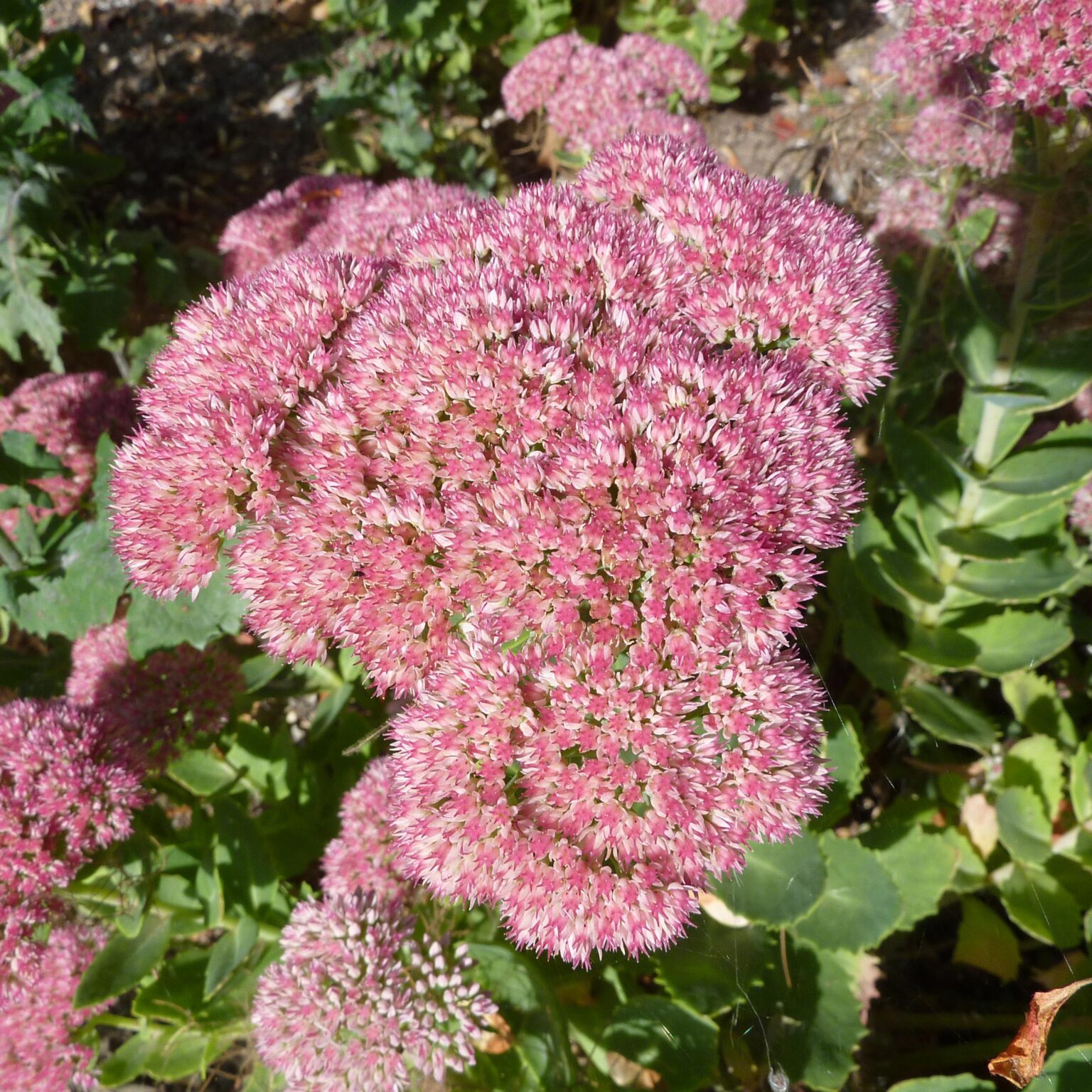
Yucca
Yucca plants bring a touch of exotic beauty and architectural elegance to UK gardens, perfectly complementing the Mediterranean style of landscape design. With their bold, sword-like leaves and tall, dramatic flower spikes, Yuccas make a striking focal point or addition to a garden border. These hardy plants can thrive in the UK climate, adding a touch of desert-like charm to the landscape.
Yuccas are known for their distinctive appearance, characterized by their spiky, sword-shaped leaves and tall flower spikes. The leaves are usually rigid, pointed, and evergreen, forming a rosette or clump at the base of the plant. Depending on the variety, the leaves can be green, blue-green, or variegated with creamy yellow or white edges. In summer, Yuccas produce tall, sturdy flower spikes adorned with numerous bell-shaped or pendulous white flowers. These blooms are often fragrant and can attract pollinators, adding to the plant’s allure.
Hardiness: H4 (-10ºC to -5ºC) Hardy – average winter
Hardy through most of the UK. May suffer foliage damage and stem dieback in harsh winters in cold gardens. Plants in pots are more vulnerable.
Yuccas are remarkably hardy plants that can withstand the UK climate, particularly when the right species or cultivars are selected. Certain Yucca species, such as Yucca filamentosa and Yucca gloriosa, are well-suited to the UK’s temperate climate and can thrive even in colder regions. These Yucca varieties exhibit excellent tolerance to low temperatures, frost, and even seaside conditions, making them ideal choices for UK gardens.
- Yucca gloriosa (Spanish dagger) – H5 Hardy – cold winter
- Yucca filamentosa (Needle Palm) – H5 Hardy – cold winter
- Yucca flaccida ‘Ivory’- – H5 Hardy – cold winter
- Yucca flaccida ‘Golden Sword’ – H4 – average winter
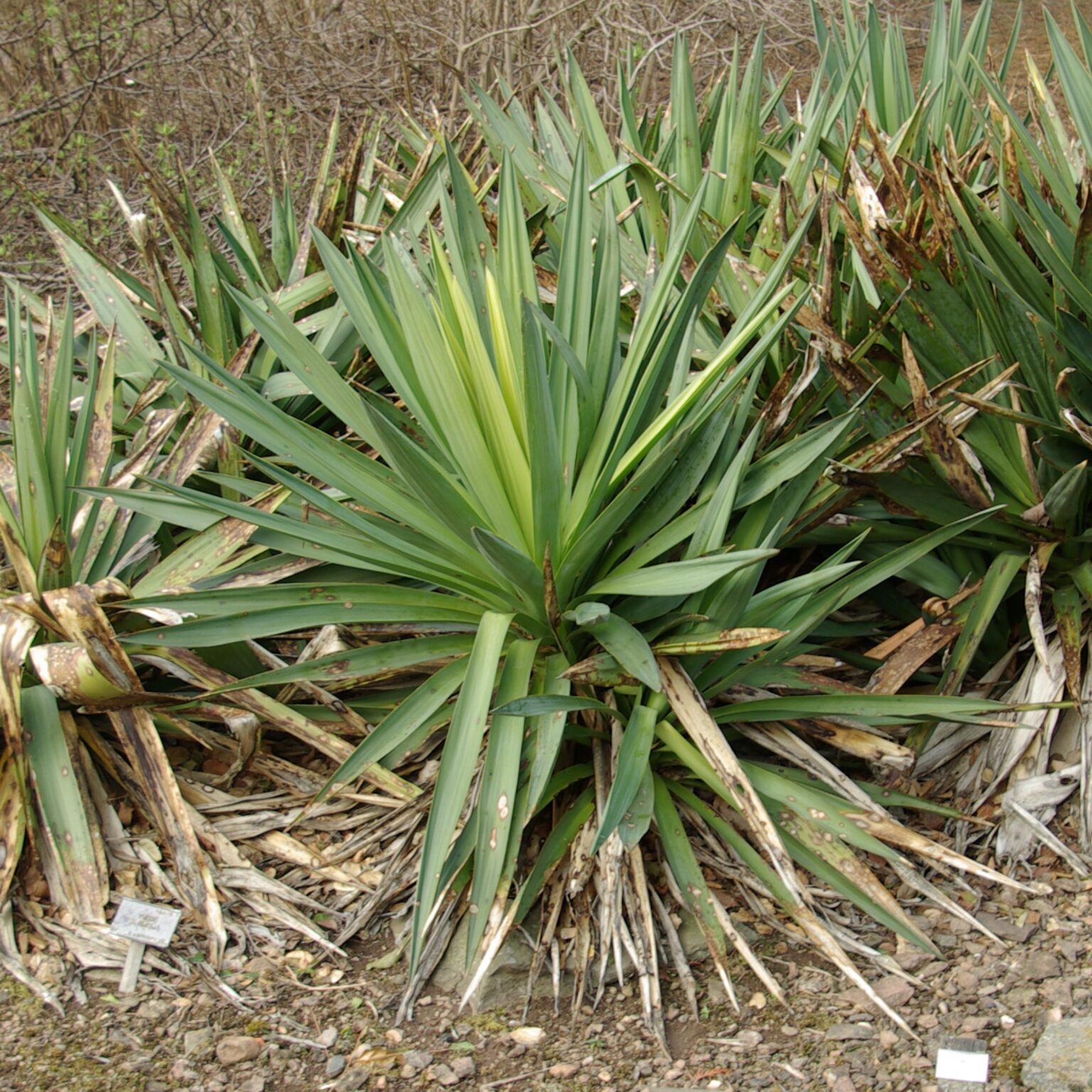
British Mediterranean Gardens
There are many great examples of Mediterranean gardens in the UK that you can look to for inspiration. These gardens have captured the spirit and appearance of Mediterranean gardens whilst working within the limitation of our British climate.
Mottisfont Abbey, Hampshire
Mottisfont Abbey is a National Trust property in Hampshire that boasts a Mediterranean garden with a collection of drought-resistant plants, including lavender, thyme, and rosemary.
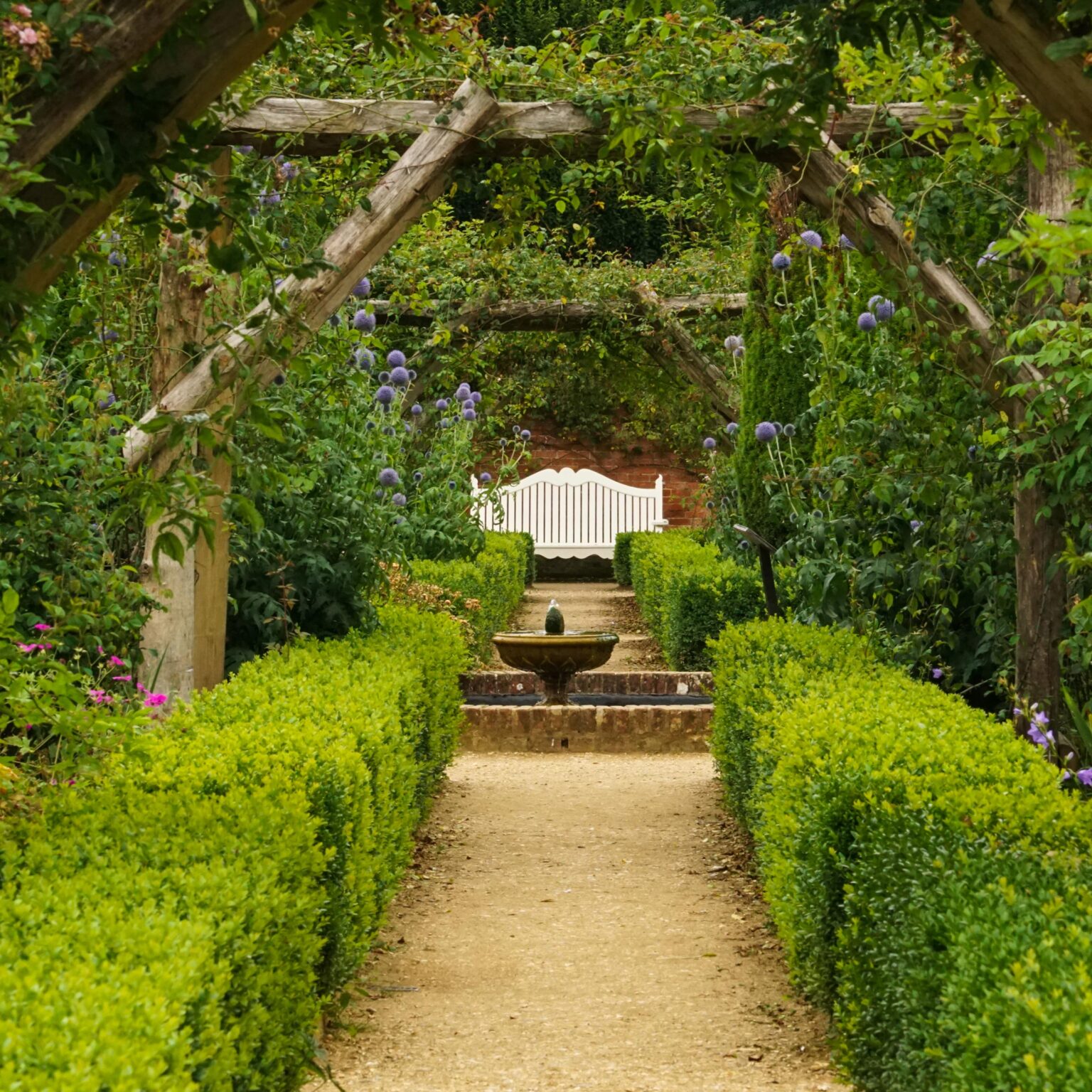
Hidcote Manor Garden, Gloucestershire
Hidcote Manor Garden is located in Gloucestershire and is famous for its intricate layout and use of Mediterranean plants such as cypress trees, lavender, and agapanthus.
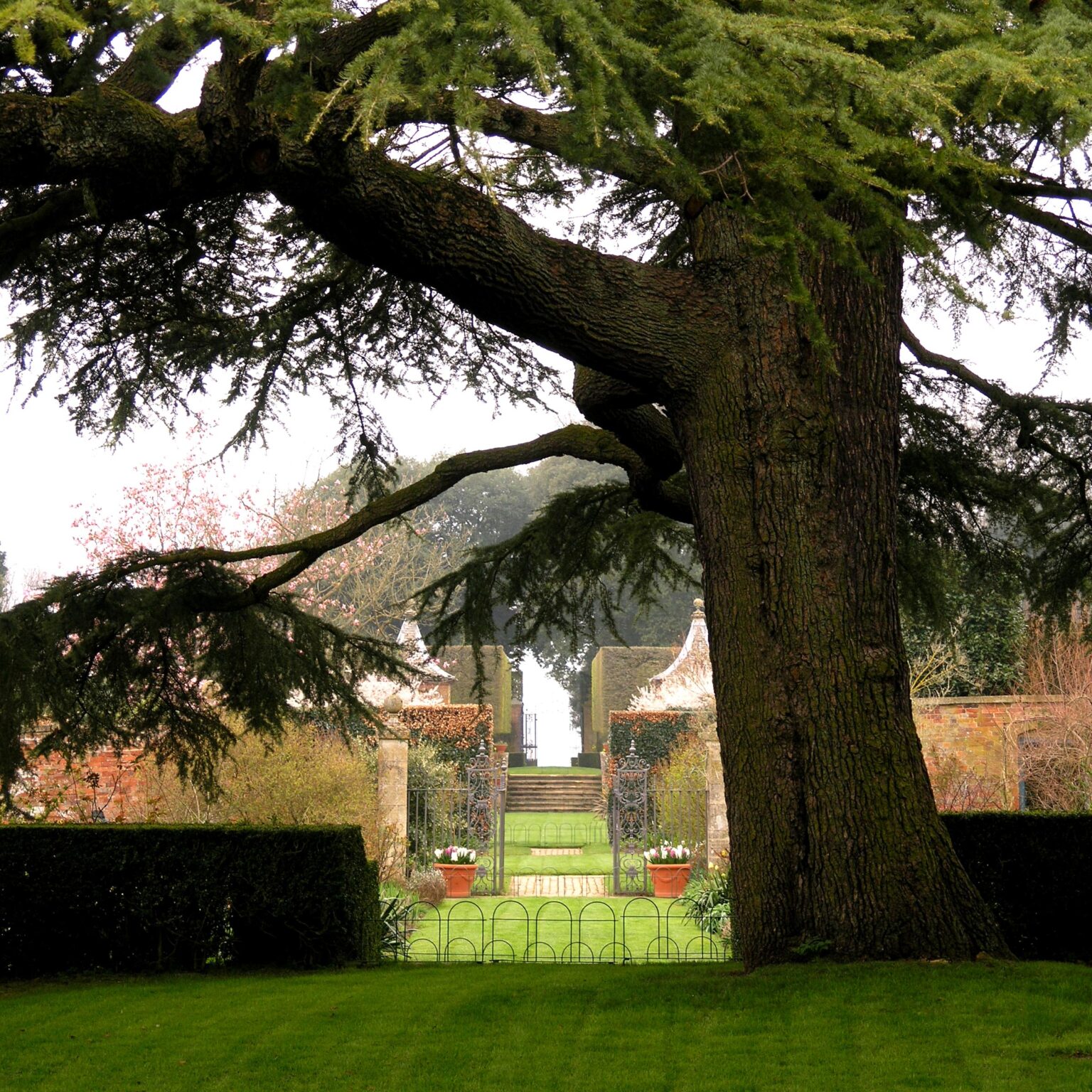
The Laskett, Herefordshire
The Lasket is set in the idyllic countryside of Herefordshire on the Welsh borders, are the creation of Sir Roy Strong CH and his late wife Julia Trevelyan Oman CBE. The gardens – created from a bare field – were begun in 1974 and have continued to evolve ever since.
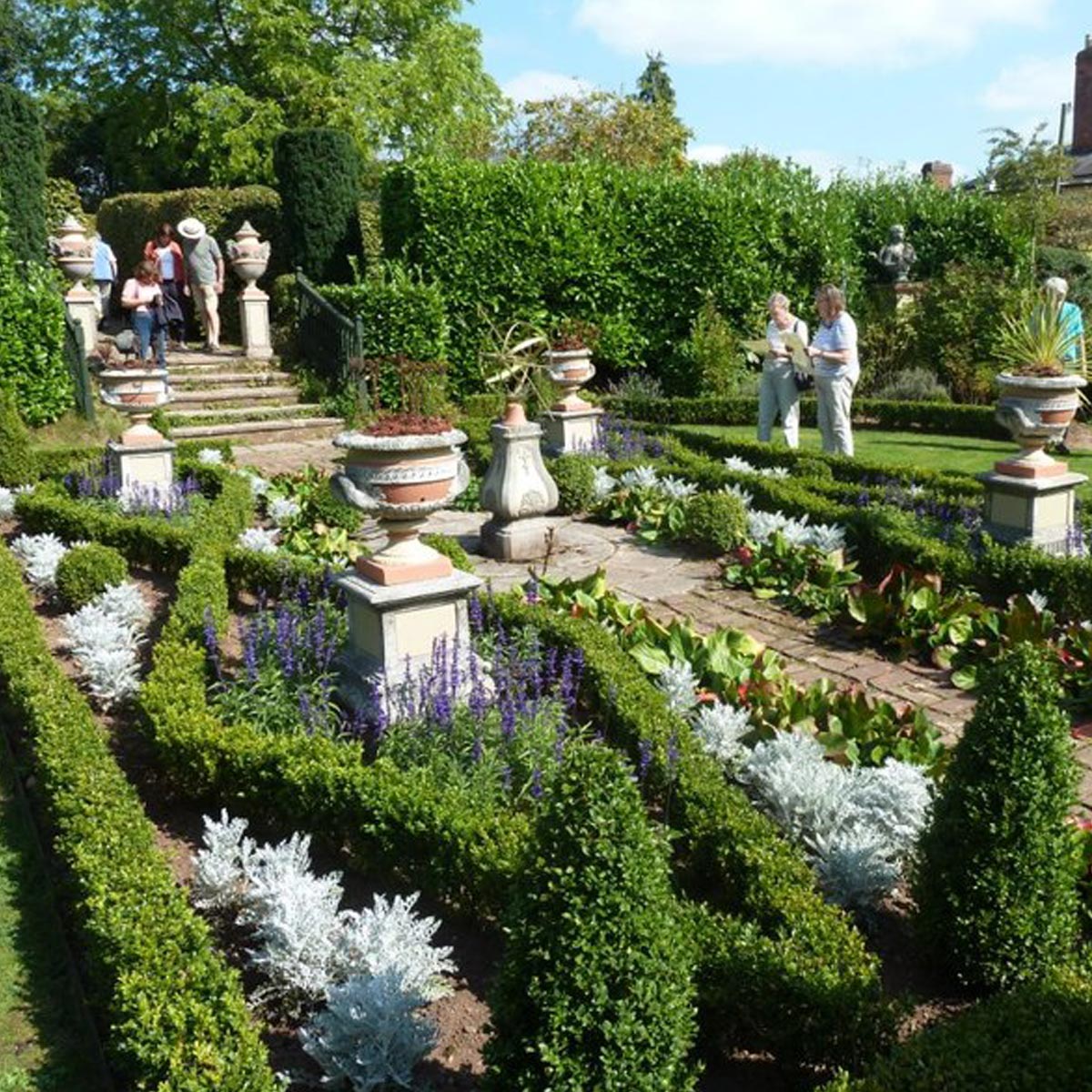
Great Dixter, East Sussex
Located in East Sussex, Great Dixer is a garden that was designed by Christopher Lloyd. It features an array of Mediterranean plants, including lavender, rosemary and olive trees.
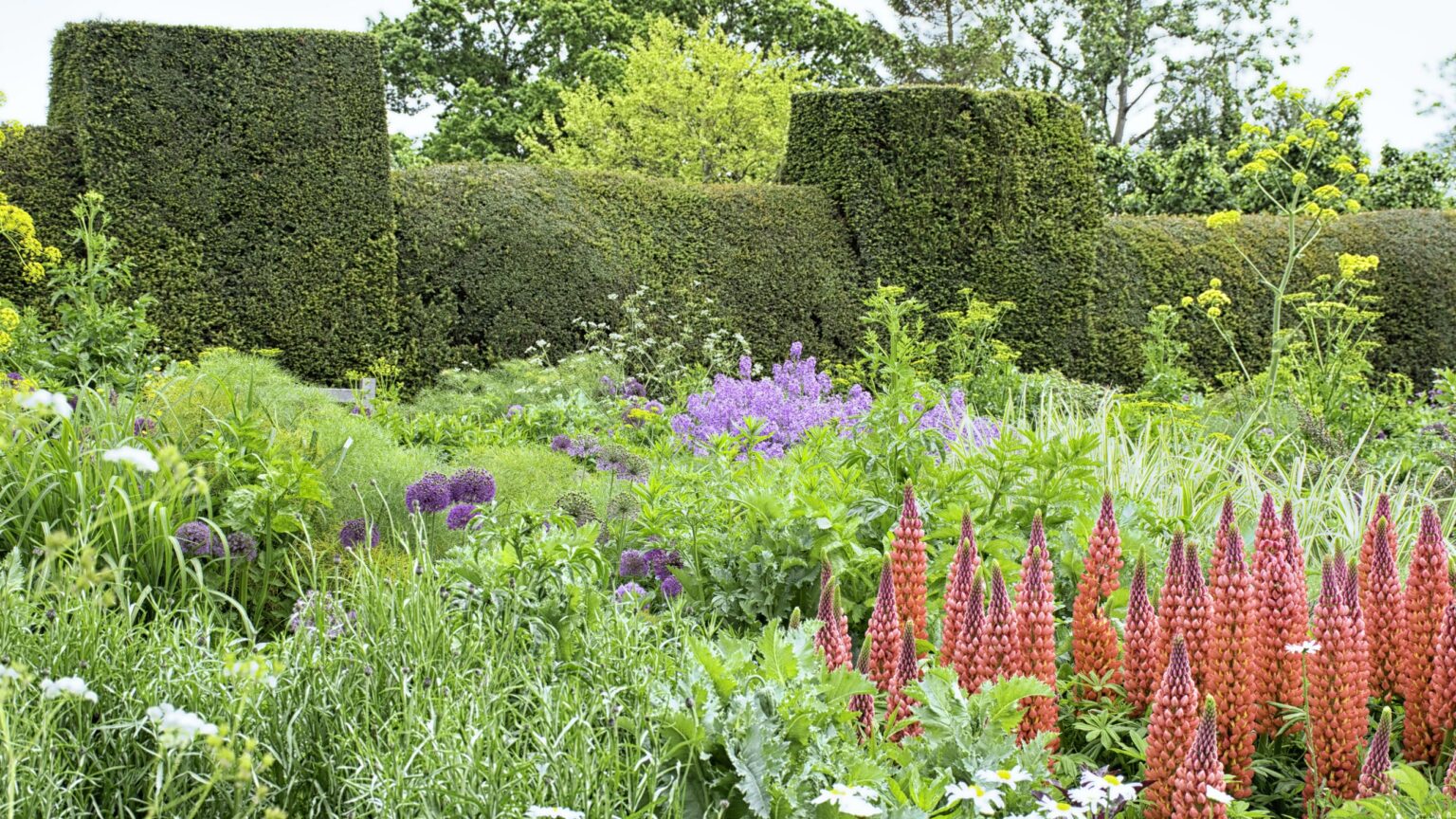
Sissinghurst Castle Garden, Kent
Sissinghurst Castle Garden is a famous English garden that was designed by Vita Sackville-West. It features a series of themed garden rooms, including a Mediterranean garden that is filled with exotic plants like palms, yuccas, and cacti.
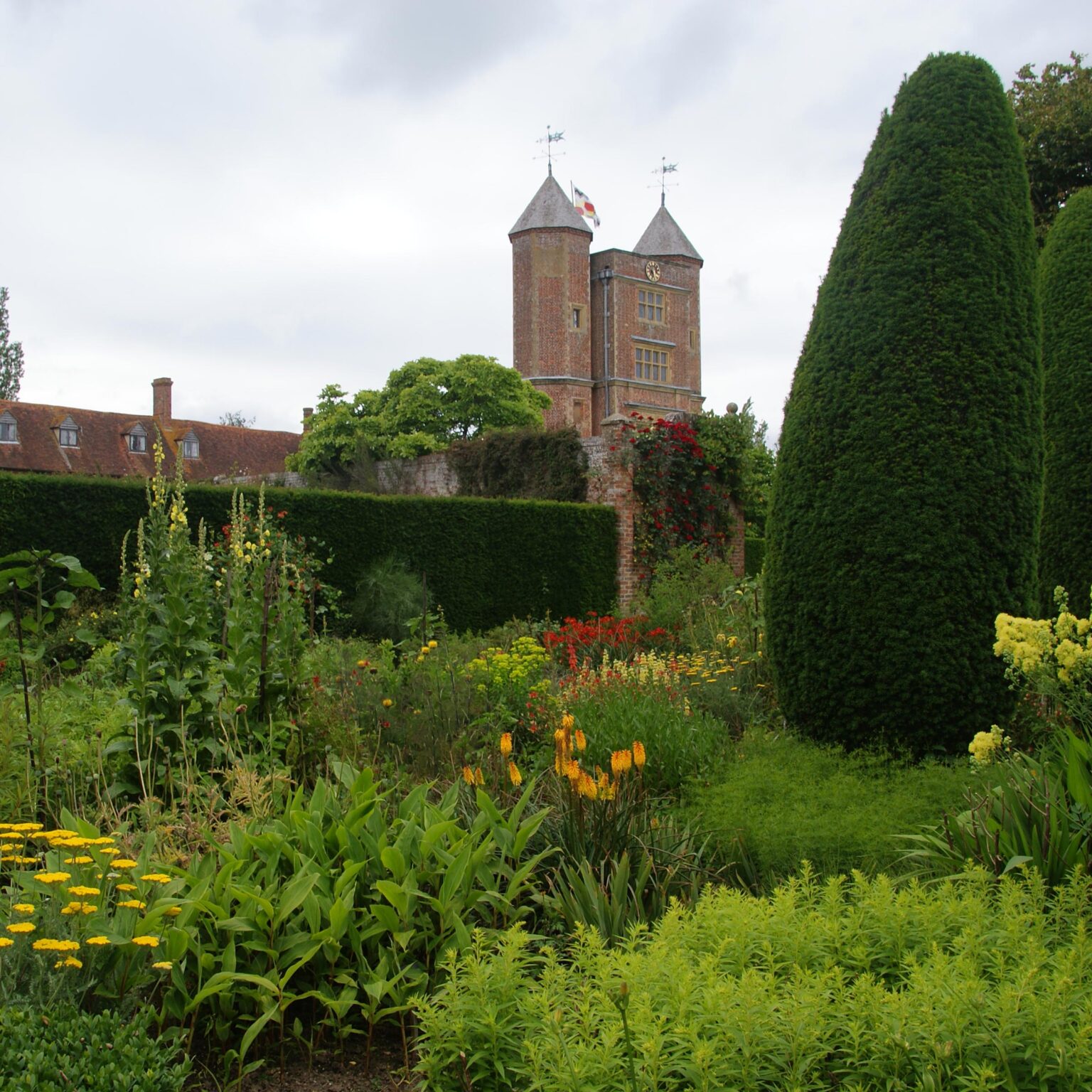
The Garden House, Devon
The Garden House is located in Devon and features a Mediterranean-inspired garden that includes a variety of herbs, such as sage and thyme, as well as olive and fig trees.
These gardens are known for their stunning beauty and the creative ways in which they incorporate Mediterranean flora into the English landscape.
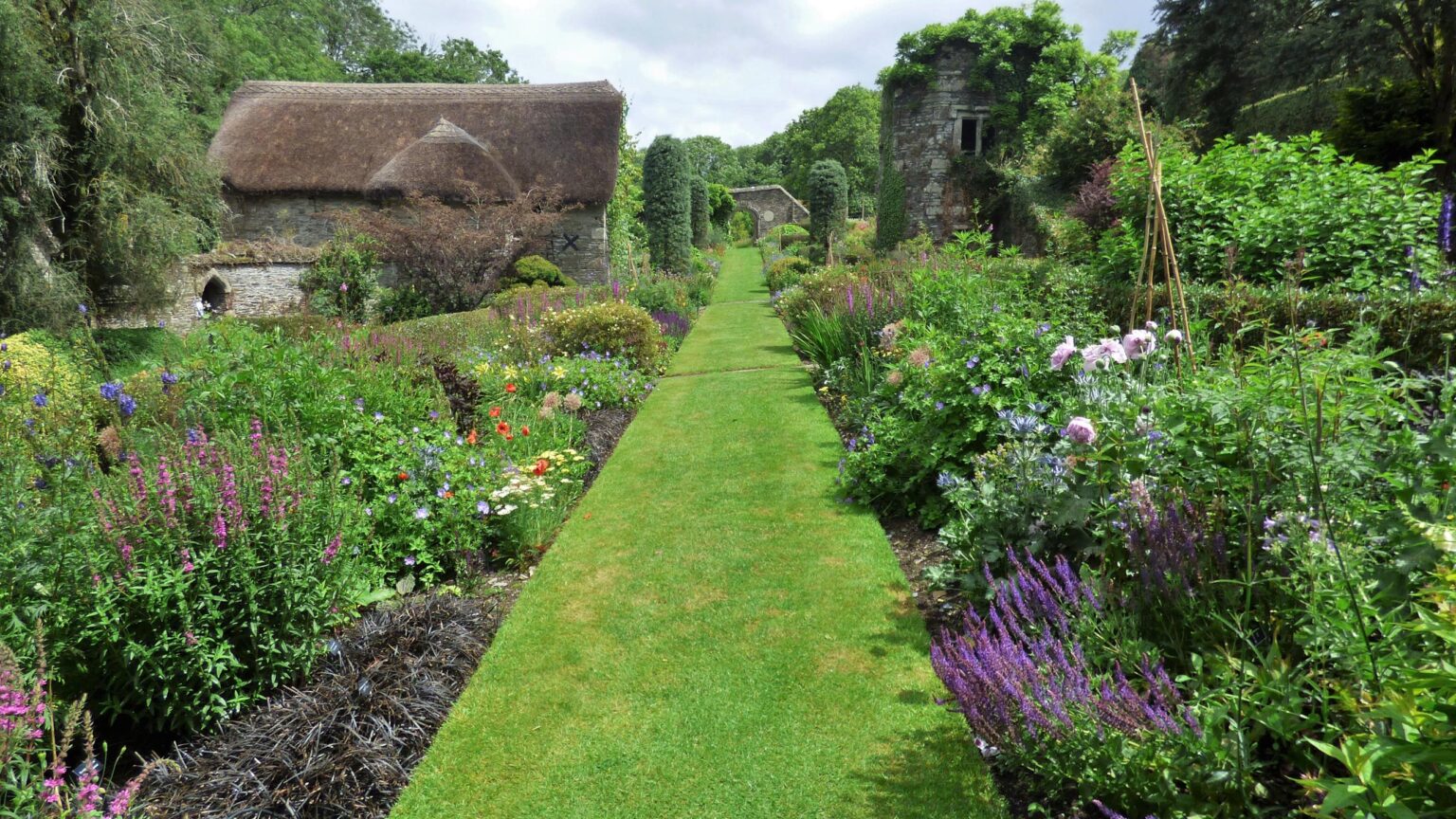
Mediterranean Garden (King William’s Temple), Kew
“Planted in 2007 to depict a typical Mediterranean natural habitat, this area of the Gardens transports you to the sun-kissed landscape of Southern Europe.
It was designed to highlight the economic uses of Mediterranean plants, the diversity of life the habitat supports and the conservation efforts needed to ensure its survival.”
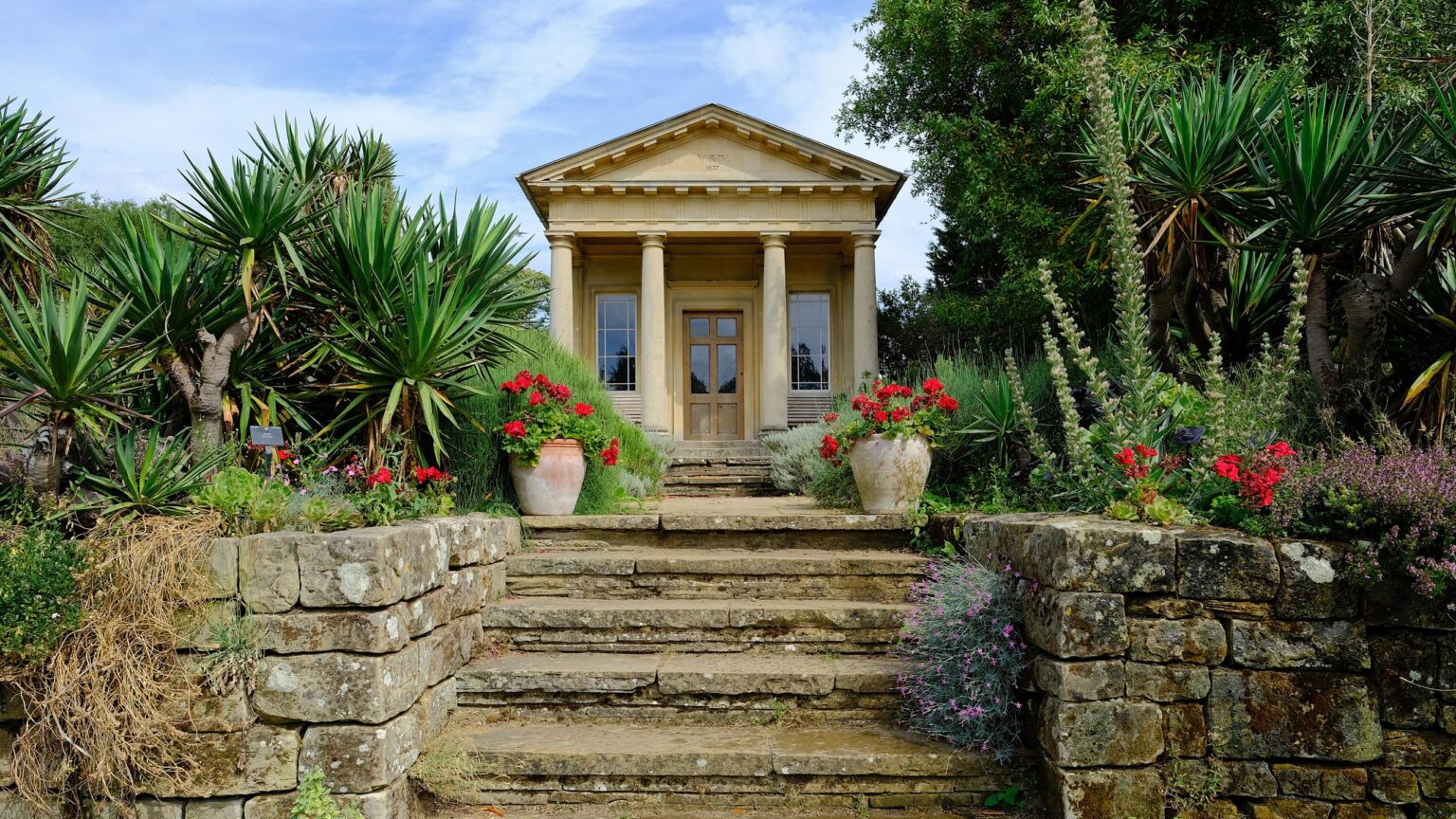
Conclusion
Mediterranean gardens are a stunning reflection of the diverse cultures and landscapes of the Mediterranean regions. Whether you live in a warm climate or simply want to create the feel of the Mediterranean in your own backyard, a Mediterranean garden can provide a beautiful and relaxing outdoor space that is both practical and aesthetically pleasing.
This garden style is about attitude; the promoting of relaxation, harmony and tranquillity, often while signifying historical echoes. Allow yourself to be led by happy accidents, and your garden will offer that atmosphere of comfort and authenticity that are characteristic of Mediterranean style.

